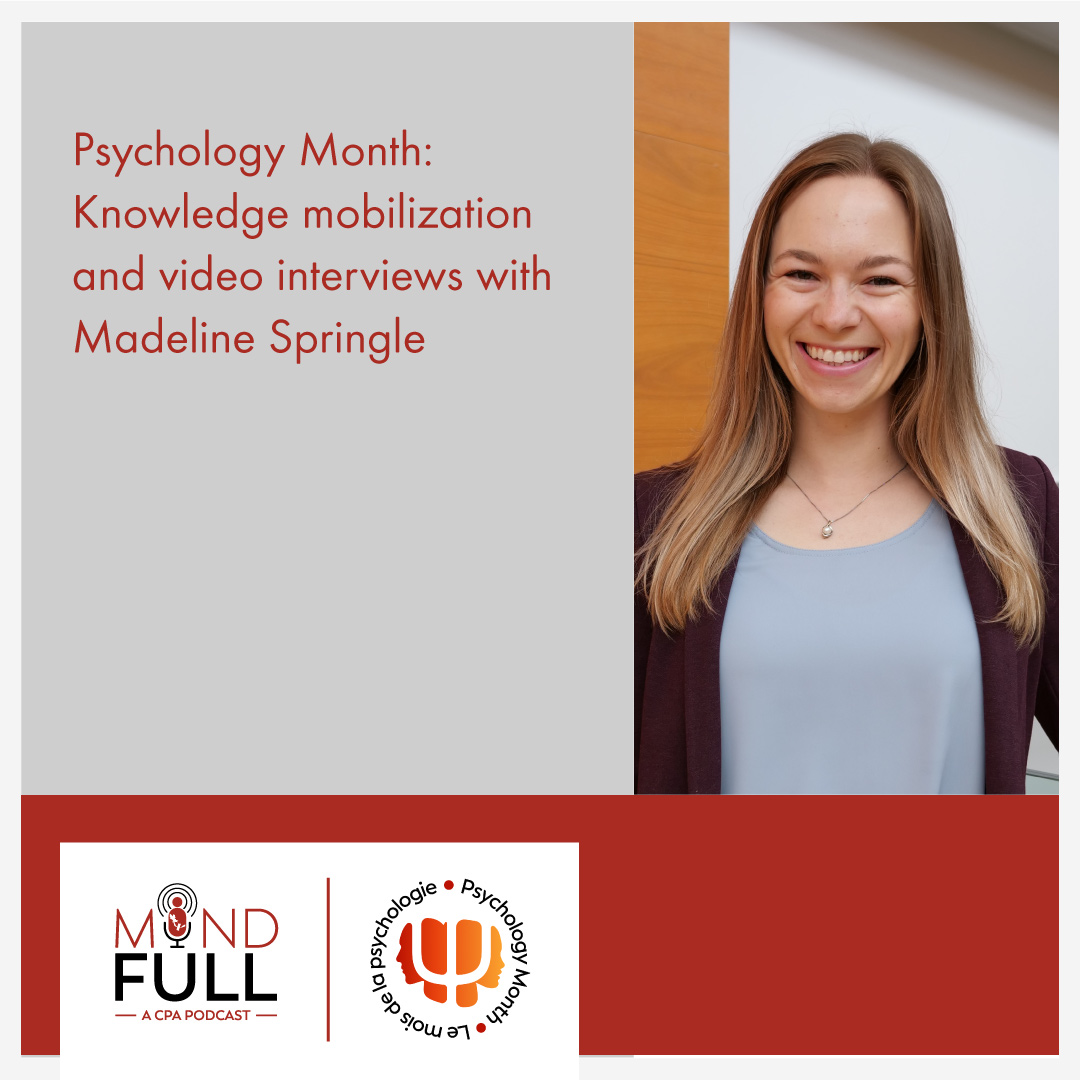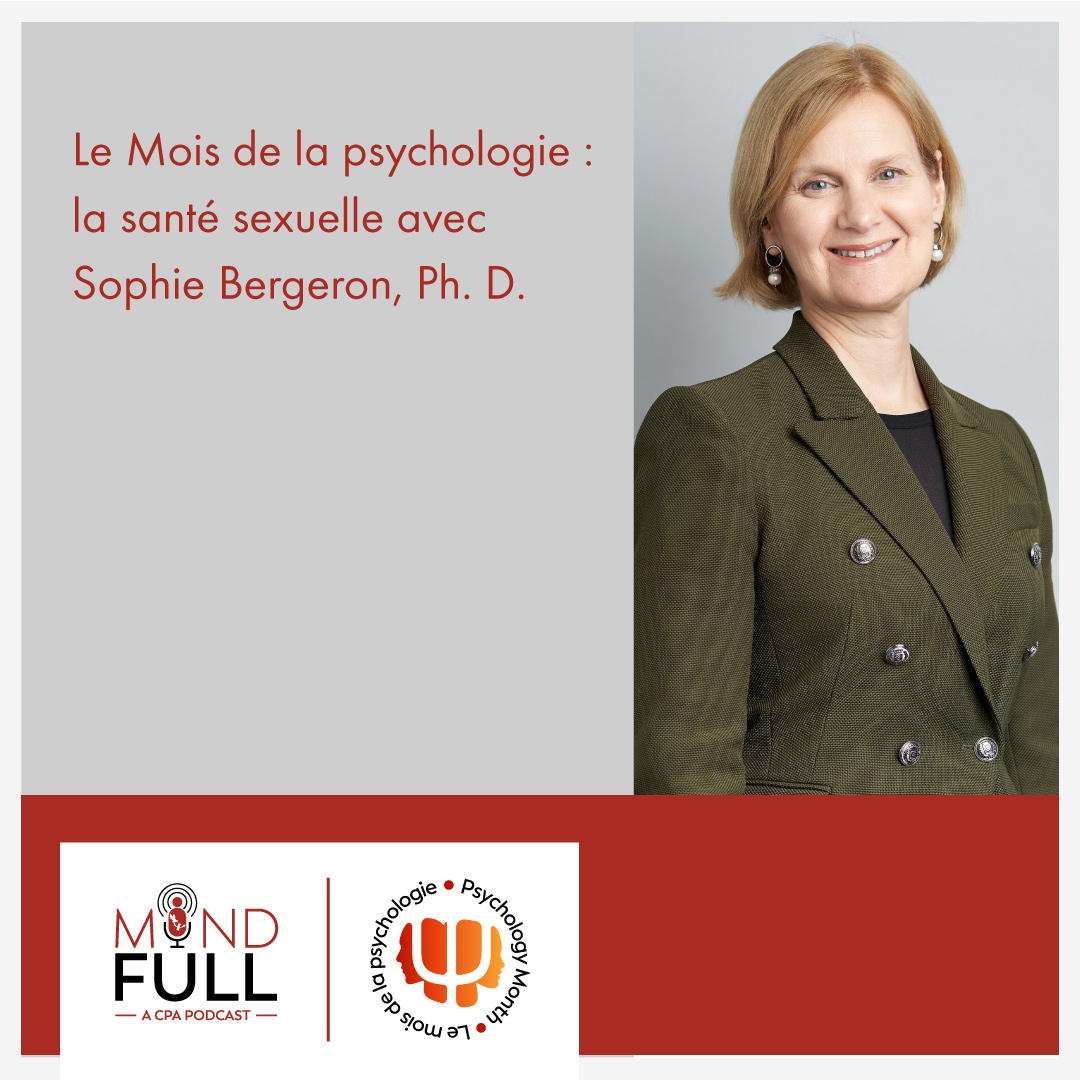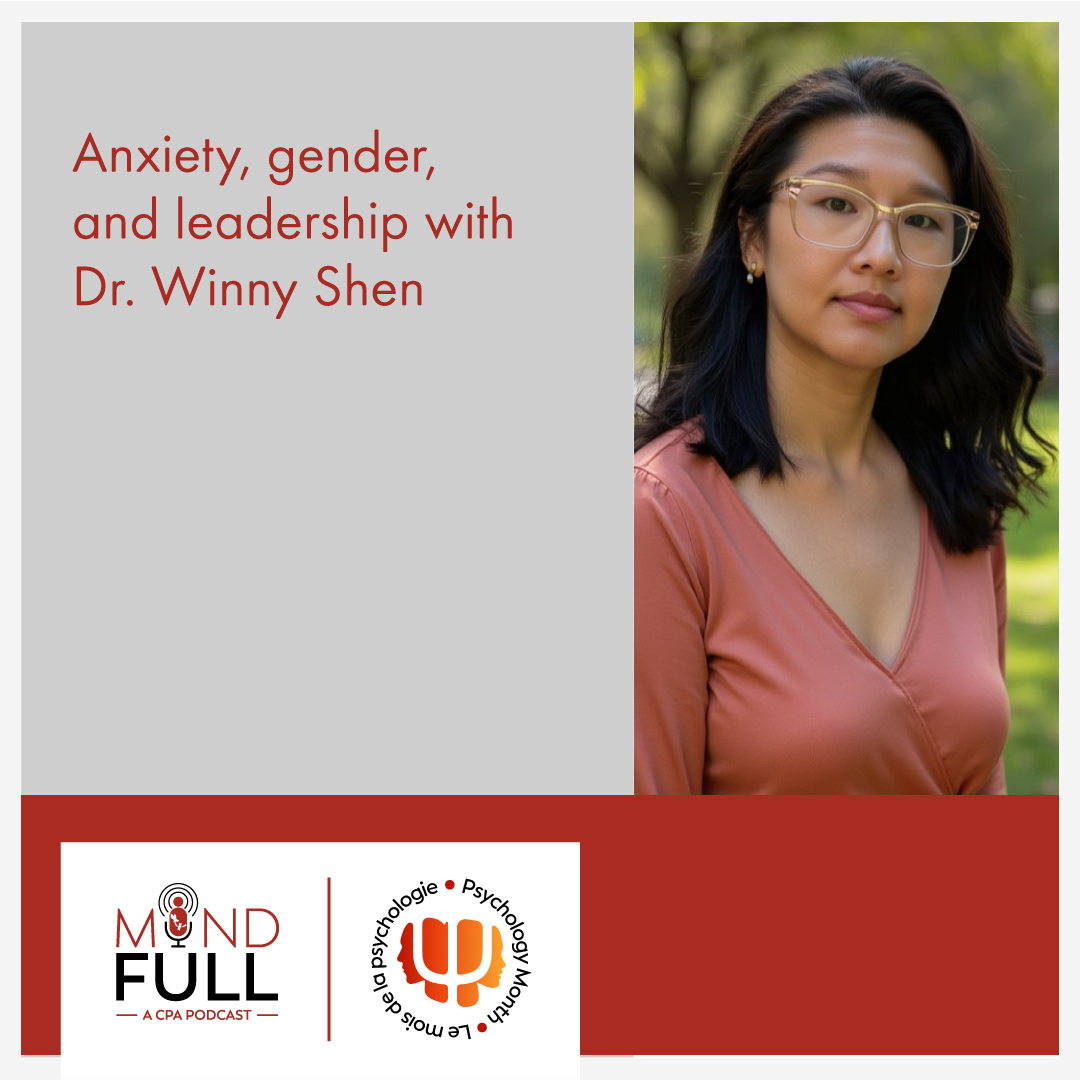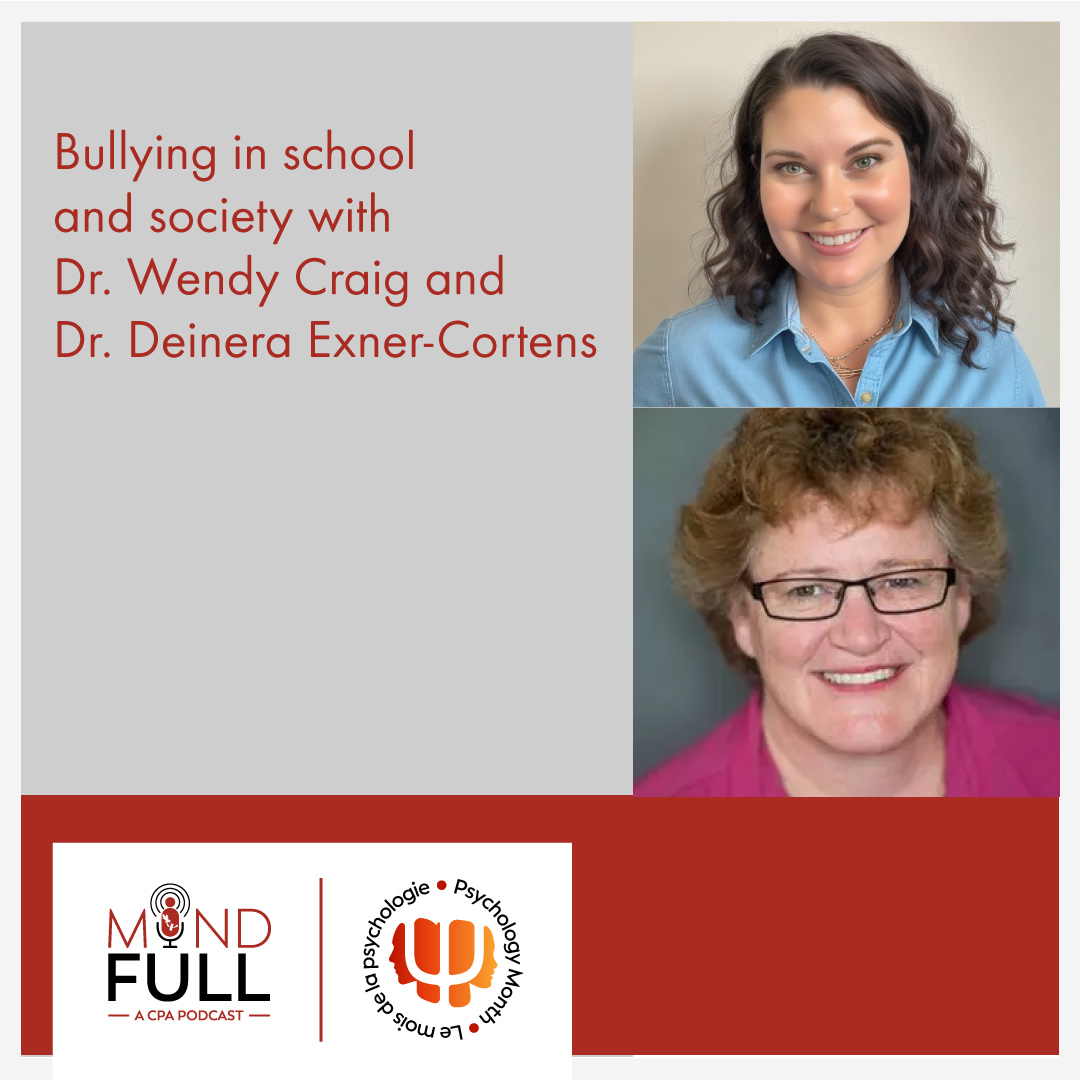February is Psychology Month

Psychology is rooted in science that seeks to understand our thoughts, feelings and actions. It is a broad field – some psychology professionals develop and test theories through research while others work to help individuals, organizations, and communities function better. Still others are both researchers and practitioners.
Psychology Month is celebrated every February to highlight the contributions of Canadian psychologists and to show Canadians how psychology works to help – people live healthy and happy lives, their communities flourish, their employers create better workplaces, and their governments develop effective policies.
Want To Get Involved?
- Follow us on Instagram @canadianpsychological where a new spotlight will be posted every week in February.
- Follow @canadianpsychology.bsky.social on Bluesky and LinkedIn or “like” us on Facebook and share the stories and spotlights.
- Download our poster for your office or for use in your Psychology Month activities.
- Follow the CPA podcast Mind Full on SoundCloud, YouTube, or wherever you get your podcasts for a new episode every Thursday during Psychology Month
Women in Science
The theme of Psychology Month for 2025 is women in science. This month we will be highlighting the work of 34 remarkable scientists, including eight brand-new podcasts and profiles. Psychology Month 2025 will follow scientists from students to retirees, and take us from BC to PEI, and from the North Pole to outer space.
If you have events planned for Psychology Month, let our Communications Specialist, Eric Bollman, know about them – email Psygnature@cpa.ca to have your event included in the CPA’s social media for the month. Please download the poster here: Psychology Month Poster (JPG) and share with your networks! Use the hashtag #PsychologyMonth.
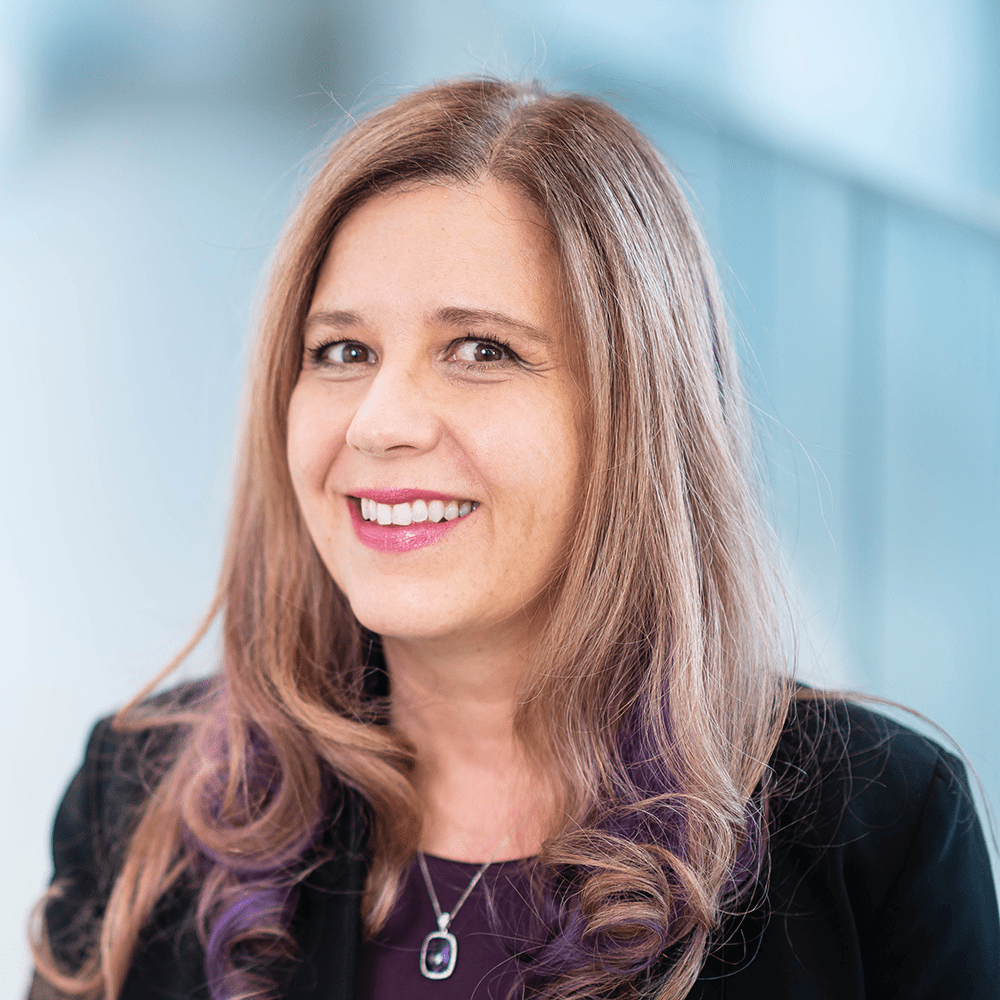
Liisa Galea
Dr. Liisa Galea is a scientific lead for the CAMH (the Centre for Addiction and Mental Health) program womenmind™. It’s a community of philanthropists, thought leaders and scientists dedicated to tackling gender disparities in science, and to put the unique needs and experiences of women at the forefront of mental health research.
Womenmind™ Liisa Galea
“You know how to *take* the reservation, you just don't know how to *hold* the reservation. And that's really the most important part of the reservation: the *holding*.”
- Seinfeld, ‘The Alternate Side’, 1991
The National Institute of Health (NIH) in the US introduced a policy* in 1993 where applications for research that plans to involve human subjects for clinical trials must address the inclusion of women, minorities, and children in the proposed research. As a result, the scientists applying for research grants did exactly that. They included women, minorities, and children in their studies. But to what end?
It’s easy to include women, minorities, gender diverse people, but if you don’t look to see if it’s affecting outcomes for those individuals differently, then you’re doing only half of the work – and missing the part that makes inclusion important. But precious little research, since the introduction of that policy, has made that distinction.
*It should be noted that it is quite difficult, at the moment, to ascertain exactly when the NIH instituted that policy, or what the outcomes have been, since the new American presidential administration has scrubbed their websites and resources of any language involving “minorities”, “disparity”, “bias”, and even “women”.
Dr. Liisa Galea leads the Women’s Health Research Cluster at the Centre for Addiction and Mental Health (CAMH) in Toronto. She is the principal editor of Frontiers in Neuroendocrinology, the Past President of the Organization for the Study of Sex Differences and co-Vice-President of the Canadian Organization for Gender and Sex Research. She is also the scientific lead for the CAMH initiative womenmind™ and a Seinfeld fan.
“I grew up in a time when I had to wear a skirt in school because I was a girl. I’m so grateful to my parents for saying I was smart and could do anything I wanted to do…except perhaps become Pope! I was told I was different because I was a girl, but it didn’t upset me – it just made me curious as to why people thought that. When I started university, I got really interested in the area of female brains vs male brains and I wanted to know all about the differences and what that might mean for our health.”
womenmind™ is a community of philanthropists, thought leaders and scientists dedicated to tackling gender disparities in science, and to put the unique needs and experiences of women at the forefront of mental health research. Dr. Galea and Dr. Daisy Singla, a clinical psychologist who specializes in perinatal mental health, are womenmind™ scientists who do a lot of this important work.
The gender disparities in healthcare are real, and they are significant – particularly in the area of mental health. Diagnoses of mental health issues can take up to two years longer for women compared to men. There is a sense in the public sphere that men don’t talk about their feelings as much as women do, and are less likely to seek help with psychological issues. Despite this, just looking at mental health disorders, there is still a delay in diagnosis of more than two years for women. That delay can interfere with treatment plans – if you’re being misdiagnosed or dismissed with your symptoms you’re not getting the treatment you need, and we all know that earlier interventions lead to better outcomes.
A study done by the World Economic Forum showed that globally, women spend 25% more of their lives in poor health than men do. Dr. Galea thinks this is partly due to health science being historically dominated by men studying males.
“In terms of mental health specifically, there are many reasons for the delays in diagnosis, but one of the major reasons I think is because most of our medical knowledge – including the symptoms on checklists for diagnoses – are based on the experiences of men. So much so, that we often call symptoms for mental health disorders in females ‘atypical’. We use ‘atypical’ a lot in the context of neurodiversity – autism, ADHD, and so on. And there are more males diagnosed with those conditions. We see more females than males diagnosed with depression, but we also see that ‘atypical’ label applied to depression in women. If there are twice as many women diagnosed with depression as men, how are their symptoms ‘atypical’? I think it’s because our scales were developed a long time ago, thinking about findings in males and the experiences of men.”
As a result, healthcare providers don’t acquire enough knowledge about sex and gender disparities in disease presentation and symptoms. This has real consequences for women in the healthcare system, but also for funding bodies. As a researcher that’s been in this field for 28 years, Dr. Galea gets a lot of comments from editors and funding agencies that *this [female-centric subject]* isn’t a really important thing to study because it’s “only in a subset of the population”.
Dr. Galea and her team did a review, looking only at male/female studies in neuroscience and psychiatry. 68% of studies were using both male and female participants, but only 5% of those studies looked to see whether sex made a difference. As Dr. Galea says, “you can have 2 females and 8 males in your control group, but the reverse in the treatment group, and you can’t do the analysis properly because you don’t really have the sample size to see if it made a difference.”
27% of the studies were focused solely on males, and 3% solely on females. Dr. Galea’s team then looked at Canadian grants, which resulted in similar percentages. In 2023, mental health specifically for women made up less than 1% of the funding of the Canadian Institutes for Health Research (CIHR), the major federal agency responsible for funding health and medical research in Canada.
Funding for research is, sadly, a hot-button issue at the moment as the new American government tries to shut down funding at the NIH for everything they deem to be “woke”. This has impacted many of Dr. Galea’s colleagues and the work they do, especially since the cuts seem to have been attempted in the most damaging and misguided way possible. The new administration looked for the key words they didn’t like, and cut funding for everything that contained words like “bias” or “diversity” or “environmental”. They also targeted words like “trans”, “non-binary”, “female”, and “woman”.
This could result in the ending of studies into things like the gut microbiome, where one of the measures is alpha-diversity and beta-diversity – referring to the variety of bacteria that live in one’s gut. Electricity studies using vacuum tubes which require a current called “bias”. And studies involving women’s health. Dr. Galea says this is even more dangerous than it seems, because stopping the study of women’s health affects men as well. She gives an example,
“Lazaroids were a drug that was discovered for stroke recovery. It worked miracles for people who had suffered strokes. It was discovered pre-clinically first, where it worked on mice and rats, and then it went to double-blind randomized control clinical trials, our gold standard. It turns out most of the pre-clinical work was done in males. The early clinical trial was done all in men as well, since men are more likely to suffer a stroke earlier in life (but this switches to more women later on in life). It failed phase 3 clinical trials, which included women, and the drug is not on the market. It put the drug company out of business. But when people did secondary analyses, it turns out lazaroids work wonders in men – but not in women. In fact, in women it might have made things worse. But that’s a drug that’s now not on the market that might do wonders for men’s health! Isn’t it in our collective interest to find out what drugs work better in different populations?”
This upheaval could have devastating consequences for the future of women’s health, an area that has critical problems already. Consider menopause. This is something that will happen to 50% of the population. And yet, 0.5 % of all studies in neuroscience, and in the field of brain health in general, are on menopause. Physicians get about 1-3 hours of training on menopause and its effects on health.
When women go through menopause and have significant problems, they get sent to specialists – gynecologists. But – only 30% of American gynecological programs had anything about menopause in them. So well above half the time women get sent to see specialists for this, they’re going to see someone who hasn’t been trained in it, and may have learned very little about it. Says Dr. Galea,
“We have to become our own specialists, but we need informed research to know what we can do to offset our symptoms. Laura Gravelsin (one of my postdocs) and I just had a paper accepted called ‘One Size Does Not Fit All: Type of Menopause and Hormone Therapy Differentially Influence Brain Health’, because there are many hormone therapies and many menopauses, and we have to determine which one works for us individually.”
Not all scientists who study women’s issues are women, and not all women specialize in those issues. But having more girls going into scientific disciplines, and being supported along the way, can’t hurt. This is another of womenmind™’s goals. Dr. Galea points to the fact that there are more female psychologists, and physicians, than there are male. And yet, at the dean level, or director or supervisor level, the proportion of women steadily decreases the higher in rank you go, compared to men. She says,
“Girls are very interested in all scientific fields at a very early age, but as time goes on and we get further and further in our career, the disparity starts to grow. At the university level, you see more women and girls in the sciences, but the gap gets a little wider the further up you go, at the graduate level and then at the assistant professor level.”
With this in mind, womenmind™ has a robust mentorship program for all female and gender-diverse scientists that has seen remarkable results. About 60% of the female and gender-diverse scientists at CAMH have gone through the mentorship program, and there is a staggering 100% approval rate – every single person coming out of the mentorship program has said they would recommend it and they want it to continue.
And continue they will, with the passion and determination of the new scientists and the veterans like Dr. Galea. In addition to womenmind™, she runs her own lab investigating how hormones (mostly estrogens) influence the brain. They focus on stress-related psychiatric disorders like depression, and also Alzheimer's. Dr. Galea also runs the Women’s Health Research Cluster which in the realm of knowledge translation, and seems like a lot of fun! They just had an event in Toronto called ‘Galentine’s Day: Love your Brain’ which was about girls and women and anyone who identified as such loving their brains through hormonal changes like puberty and menopause.
The experiences of women and girls going through hormonal changes are varied and diverse. The path through adolescence, or menopause, is rarely a straight line. Nothing in life is a straight line! Even Dr. Galea’s journey to doing the work she does today (and Parks and Rec fandom) took numerous twists and turns. She says,
“I started in engineering first, and took Psychology 101 with Susan Lederman. She works in perception. She said ‘I’m the first Canadian, the first woman, and the first psychologist to be asked on a NASA panel’. She was there because astronauts were complaining they couldn’t feel anything through their gloves when they were out on a spacewalk. I was hooked. I thought, ‘that’s so interesting, I want to learn that’. It’s not at all what I ended up doing, but I took a lot more psychology as a result. I ended up studying women’s brains, and I’m always going to do it!”
Someone’s got to do it. And someone else entirely has to support them by making it a priority to ensure they continue to get to do it. With initiatives like womenmind™, the Women’s Health Research Cluster, and the research being done by Dr. Galea and her colleagues, the future of gender-inclusive health science looks promising. But if we want to make the most of that promise, the scientific community and policymakers must make it a priority to ensure this research continues.
Madeline Springle is a second-year Ph.D. student at the University of Calgary, who is winning awards for her ability to mobilize knowledge. Specifically, she is taking the research she has done into one-way video interviews, and using it to help people who might use this knowledge to better prepare for their own job search.
As we close out Psychology Month, we wanted to highlight knowledge translation (explaining the science for a more general audience) and knowledge mobilization (putting new findings into practice such that they help those they were designed to help) because without those, science exists in a vacuum!
Cette semaine, dans le cadre du Mois de la psychologie dont le thème, cette année, est « Les femmes et la science », nous présentons Sophie Bergeron, Ph. D., qui détient une Chaire de recherche du Canada sur les relations intimes et le bien-être sexuel au Département de psychologie de l’Université de Montréal, où elle dirige également le Centre de recherche interdisciplinaire sur les problèmes conjugaux et les agressions sexuelles (CRIPCAS), l’Équipe SCOUP Sexualité et Couple, et le Laboratoire d’étude de la santé sexuelle. Ses travaux portent sur les déterminants psychosociaux de la santé sexuelle des individus et des couples ainsi que sur le traitement des dysfonctions sexuelles.
There has always been a stereotype that women are “more emotional” than men, and even that they are “too emotional” for leadership roles. Dr. Winny Shen joins Mind Full to discuss the results of her study which suggest that not only is that stereotype untrue, the exact opposite might actually be the case.
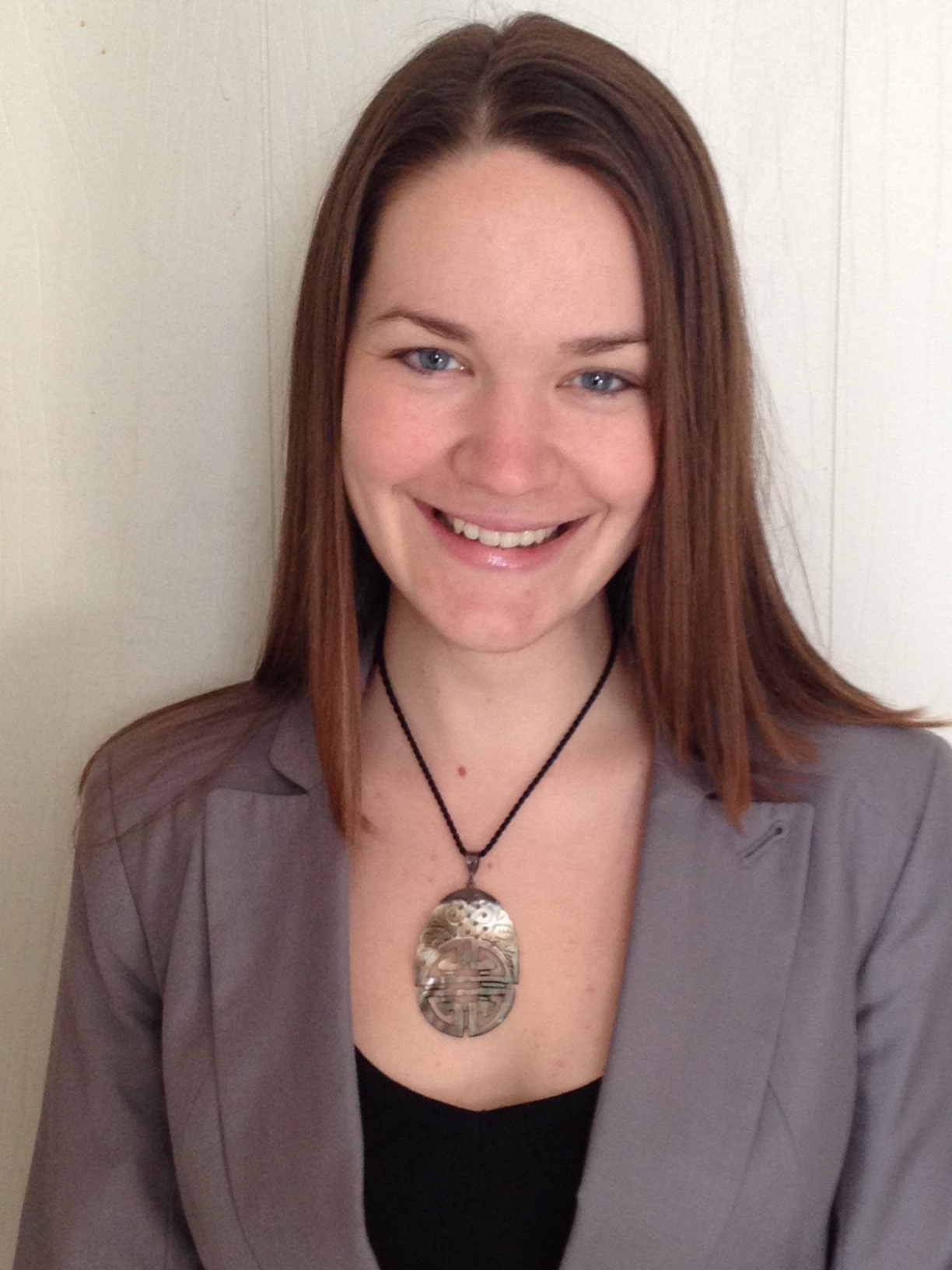
Jessica Strong
We all plan to get older. So why do so few of us gravitate toward working with older adults? Dr. Jessica Strong is a Geropsychologist in the department of psychology at the University of PEI. She tells us about cognitive reserve, fights against ageism, and discusses how a passion for music led her toward her current career path.
“You see the hood's been good to me, ever since I was a lowercase g. But now I’m a Big G.”
- Montell Jordan
In his monster 1995 hit ‘This Is How We Do It’, Montell Jordan makes the distinction between a “lowercase g” and a “Big G”. In his case, he’s making reference to being a young child, understanding and evincing the gangsta part before he grew to adulthood and achieved proper, professional gangsta status by releasing a staggeringly popular debut single.
Like Montell Jordan, it was music that led Dr. Jessica Strong to her eventual career path, one where she too makes a distinction between lowercase gs and Big Gs. ‘Big Gs’ are the expert specialties, Geriatrics, Gerontology, Geropsychologists like Dr. Strong. ‘Lowercase g’ refers to the little competencies everyone needs to have. Social workers, family doctors, personal support workers at retirement residences, caregivers, or retail workers. Anyone who deals with an older population in their day-to-day lives. Says Dr. Strong,
“I have a lot of students who aren’t necessarily interested in Geropsychology (big G), but we work on developing this ‘lowercase g’ workforce, which is not working with older adults exclusively. They may be a generalist psychologist, but one who has the competency to work with older adults. They understand the cohort issues and generational differences, and know how to modify an intervention or screen for mild cognitive impairment.
I tell all our clinical students ‘you want to work in paediatrics, great! How many grandparents are raising children these days? For your paediatric client, if you’re noticing something off with their grandparent, you’re going to want to figure out whether this is anxiety and stress because they’re raising a nine-year-old, or could this be a mild cognitive impairment? And how am I going to figure that out in a way that serves the interests of my paediatric patient?’”
Dr. Strong is an assistant professor in the department of psychology at UPEI, and a registered clinical psychologist who specializes in Geropsychology. Geropsychology is a subsection of gerontology – the broad study of aging, lifespan, development and identity in late life. It’s a discipline that focuses on relationships, mental health, cognition and more generally the psychology of aging.
It was music that led her toward this career path, as she started playing piano at the age of 9 and soon picked up more instruments, playing alto sax in the high school marching band. It was in high school that she started thinking about music therapy as a career. But music therapy is a pretty specialized occupation, and Jessica is someone who likes to keep as many options open as possible.
In her final year of high school, right around the time we were all learning that “southcentral does it like nobody does”, she shadowed the music therapy program at her local university. She quickly realized that there was a way to get into this while keeping more doors open, and she ended up doing two simultaneous undergraduate degrees – one in music performance, and one in psychology. The idea was that from there she could get a Master’s in music therapy if she chose that path.
But psychology research really spoke to Jessica, who started to become far more interested in the mechanisms of why music makes a difference for people, rather than just using it as a tool. She had done a little bit of work with older adults at an occupational therapy lab at Washington University in St. Louis. Then she moved to Germany, where she worked at a mental health institute for older adults, the Central Institute for Mental Health in Mannheim. She had become a lowercase g.
Soon, she realized that what she really wanted to do was work with older adults. She had never heard the term “Geropsychology” before, but she lucked into a program at the University of Louisville in Kentucky, and was accepted into their Clinical Psychology program, working under the mentorship and supervision of two Geropsychologists. She earned her Ph.D., became a Big G, and says she has never looked back.
“One of the most rewarding things about working with older adults is that they are some of the more complex human beings in the world. They’re such a heterogeneous population because they have all of the demographic differences that any of the rest of us have – gender and race and so on – but they also have all their lived experiences and the changes that have come with those. Physiological aging, emotional aging, cognitive aging. It’s really intellectually stimulating and exciting for me because they’re so much more complex than any of the other groups I’ve worked with who haven’t done as many things.”
Soon, Dr. Strong was working in Boston at a rehab facility in the Veteran’s Health Administration. She studied how integrating music into a mental health group could destigmatize talking about mental health for older male veterans. They got some great feedback, the veterans felt like this group was different from others they’d been in before, and that the use of music made it easier for them to talk about things that both as men and as veterans they’d been conditioned to avoid. Music gave them a way to feel it without necessarily having to find the words.
One of the sessions Dr. Strong did with this group used “a bit of a music therapy technique”. They would start the group session by reading the lyrics to a song aloud, like a poem. They’d talk about the imagery, and what they thought the artist was trying to convey. Then they would listen to the song to see if it felt different than just reading through it. Did the addition of music take away from the message, or did it add something? The veterans in the group, men whose gender and military service compounded a reticence to speak vulnerably, went to deep places dissecting the music.
Dr. Strong says ‘What A Wonderful World’ was a group favourite. Given the age of the participants (some Vietnam veterans, others Korean War veterans, and some survivors of World War II) it makes sense that a song from the 60s resonated as much as it did. Music is often associated with memory and nostalgia, most particularly the music we heard around major life events in our adolescence and in early adulthood. Like a wedding song, a graduation song, or one you heard while you were heading off to war.
When similar sessions are held forty years from now, there’s a good chance a psychologist like Dr. Strong will be integrating much different music into this kind of group therapy. They will discuss what Mr. Jordan is trying to convey when he suggests we “flip the track, bring the old school back”. Dementia support groups that connect people through sing-a-long music will sound like one of those Pitch Perfect mashups. “I reach for my 40 and I turn it up / designated driver take the keys to my truck”.
Music not only triggers memories, it shapes our brains as we age. Dr. Strong is specifically interested in the brains of musicians, and the effect a lifetime of playing music has on the aging process. She talks about something called Cognitive Reserve. This is the idea that everything we do in our lives builds up a reserve in our brains. Dr. Strong describes it like a battery you can charge. Having a formal education, speaking a second or third language, having strong social connections, these are factors that charge our battery and make us more resilient against cognitive impairment later in life.
“If someone has a really high cognitive reserve, a scan of their brain might look awful, with disease, or vascular damage. But they might still function okay because they’ve built up this reserve over time that allows their brain to circumnavigate those damaged pathways. Someone with a lower cognitive reserve might have a brain that looks relatively okay on a brain scan, but they might be showing signs of mild or moderate dementia in their functioning.”
According to Dr. Strong’s studies, and similar studies by her peers, musicians tend to do better in some things as they get older, like in executive functioning and language, but not in all areas. One of the areas where they don’t tend to do better than non-musicians is in memory. Some have suggested that the tests for memory are flawed, and this may be the reason we don’t see a correlation between that and musicianship. When Dr. Strong takes a sabbatical next year, this is one of the things she’s hoping to learn from a longitudinal data set she has collected. But she has learned a lot already from her research up to this point.
“I’ve compared people who retired from playing versus those who continued to play. That was an interesting study, where I found that people who stopped playing lost the benefit they had in some of the more fluid abilities like executive functioning, but maintained the benefits they got in crystallized abilities, things like language. People who continued to play continue to have both benefits.”
There are many challenges to working with older populations, in particular defining what those populations are. The general (Dr. Strong says arbitrary) line at which Geropsychologists and Gerontologists start looking at people as “older” is the age of 65. But they’re also working with people who are much older than that.
“What gets complicated about using 65 as the arbitrary cutoff is that you’re still including people who are 80, 90, even over 100. There are people over 100 participating in research, and you get into this really interesting scientific conundrum of having people who span 30 or 40 years in a scientific sample. Which is absurd – never would we put 10-year-olds and 50-year-olds in the same sample, and this is somewhat of the same construct.
So this is a problem when we work with older adults, and a lot of Gerontology and Geropsychology splits those groups up into the ‘young old’ (65-74), ‘old old’ (75-84) and ‘oldest old’ (85 and up), trying to get a little more nuanced perspective. These people grew up in completely different ways and in completely different cohorts. And a 65-year-old shouldn’t and wouldn’t be expected to be in the same life place as a 95-year-old.
It's a lot easier to get access to research participants who are in that young-old group, so they tend to be overrepresented in research. It’s a lot harder to get a representative sample for the older groups.“
Another challenge is ageism. This is something that matters a great deal to Dr. Strong, and she gets impassioned when she talks about the ways we neglect our older population. Age is a diversity factor that is often overlooked, and Geropsychologists are constantly reminding their organizations, and anyone who will listen, that age must be thought of and included as a diversity factor. Not valuing older adults, the negative attitudes we have about getting old, looking old, and acting old, create real-world harms. Dr. Strong says these are some of the reasons we have a lack of action in overhauling Canada’s long-term care system.
“We know what works in long-term care, it’s just a matter of putting it in place. It wasn’t necessarily intended to be this medical-type institutional facility. People don’t want move there because it signals the beginning of the end, and they think that because of how those facilities work. They’re understaffed, underprioritized. Some of the most amazing models of long-term and dementia care are in Scandinavia. There are enclosed ‘dementia villages’ where people live in their apartments, but they can go shopping and go wander in the park. The person cutting the grass is a trained dementia nurse, as is the barista at the coffee shop. But many of us don’t see older adults, and particularly older adults with dementia, as important enough to care.”
We’re all going to get older. As Dr. Strong tells her students, “if you’re not aging you’re dead – we are privileged to grow older”. So why are there difficulties in recruiting young people, and students in particular, to work with older populations? Ageism, like negative attitudes or death anxiety, are big factors. So is exposure. Young people who have grown up around older adults, or who have teachers or parents who work with older populations, tend to be a lot more receptive.
“I attribute a lot of my interest in aging to my great-aunt Lila. My mom was her primary caregiver when I was growing up, so she spent a lot of time at our house and I spent a lot of time with her. I found her to be fascinating. She wore a wig and I saw her without a wig which was fascinating when I was nine. She told me stories about having a pet rat when she was my age and it was amazing to think about her having ever been my age. I had good relationships with my grandmothers and I had older adults in my life a lot when I was growing up.”
Geropsychology, as a relatively new field, is an exciting one. There is an enormous breadth of research that has yet to be done, and there are countless opportunities to work with people whose life experiences, wisdom, and stories are both fascinating and instructional. They represent a living history of a time the rest of us did not experience, and have lived lives we can’t imagine. Dr. Strong says it’s impossible to overestimate how rewarding this work can be.
“This is a group that has been marginalized, that doesn’t have much of a voice, and when you take the time to interact with them they are so grateful. They have so much wisdom and so many experiences that I can’t help but learn from them. They’ve lived in times and done things that will never be available to me.
The community of Geropsychology and gerontology is such a welcoming one, because we want people to work with older adults. And because the people who end up in that field are warm and welcoming by nature. It’s just a wonderful professional home.”
We need the Big G experts to learn more about aging and about creating a welcoming, flourishing, and healthy society for people as they get older. We also need everyone else to develop lowercase g competencies, so we too can be part of the solution. As each of us gets older, we will want the world around us to change so that we can continue to build community and live meaningful, impactful lives for as long as we are around. This is how we do it.
Research papers:
Mental health and music group development and evaluation (with manual published in the appendices)
Two articles on cognition in older adult musicians
- https://www.sciencedirect.com/science/article/abs/pii/S0278262622000410
- https://journals.sagepub.com/doi/abs/10.1177/0305735618785020
And one recent on attitudes towards older adults

Laura Thomas-photo by Erik McRitchie

B.I.G. at the North Pole photo by Edel Kieran
Training astronauts for space flight requires a huge team, including psychologists who can help to prepare them for the close quarters and isolation for long periods of time. Laura Thomas is not only one of those psychologists, she has also experienced similar close quarters and isolation with all-female expeditions to places like the North Pole.
We kick off 2025’s Psychology Month: Women in Science with a look at Laura’s work, her travels, and the requirements for setting a Guinness World Record!
I am often in awe of the people I interview, many of whom are remarkably accomplished and doing work that matters to the world. At times, I’m even a little bit envious, in that I would love to have been a part of some of those projects. I confided as much in Laura Thomas toward the end of our Zoom meeting, but told her she is an exception. Not that I’m not in awe of everything she does – I certainly am. But I am not the least bit envious. I would love to have been a part of the World’s Most Northerly Cocktail Party (scroll down for canapé recipe). But very few forces on Earth could have convinced me to be part of the intrepid group that skied, camped, and braved the shifting ice of the North Pole for days in order to get there.
Laura Thomas, on the other hand, couldn’t wait. In 2016, she was a counseling psychologist in the UK and an afficionado of adventure tourism. She began to take an interest in extreme environments, and attended a lecture by British explorer Felicity Aston, MBE. They chatted, and before long Laura was joining her on a trekking trip to Ethiopia. A few years later, she was headed to the North Pole, living in Calgary, and going in a whole new direction with her career.
Trekking to the North Pole seems like a long way to go…because it is. Consider this – the distance to the current magnetic North Pole from Alert, Nunavut, the northernmost inhabited place on Earth, is a little over 800 km. The distance from the Earth to the International Space Station is only 400 km.
Do you ever look up at the ISS as it passes over us, and wonder what the astronauts are doing? Some kind of science, one assumes, and lots of freeze-dried cuisine? Some kind of exercise that looks like that scene in 2001: A Space Odyssey? As Canadians, we know that some of them practice David Bowie tunes on guitars, since there’s no way Chris Hadfield was able to do that performance without practice.
Laura knows what the astronauts are doing. Or, at least, what they could do. And how they can do it, what with the long months of isolation, the forced intimacy of close quarters, and the physical changes one undergoes while in those conditions. Laura studies people, and their behaviour, in extreme isolation.
Laura is the co-founder of PARSEC Space, a new company that exists to train commercial space operators. She works alongside scientists, pilots, and engineers from the likes of NASA, ESA, and the military to select, train, and develop the next generation of astronauts. These will not necessarily be space travelers who will be going to the ISS. There are many other plans for space exploration. Says Laura,
“Rather than space tourism, per se, we’re focused more on research and payload specialists. People who are going to go up and offer their expertise for various projects and research that’s being done in space. The thing about government agency astronauts is that it takes a huge amount of time and money to train them. And they’re generalists. They’re not necessarily the experts in the kinds of technology they’re trialing or the experiments they’re running up there. In the future there will be a lot more space research.”
Pharmaceutical companies, for example, want to test new medications in space. Things act differently in space because of the conditions. In microgravity, bacteria grows differently. There could be a lot of benefits from observing how things grow in the absence of gravity. Manufacturing companies are also leaning toward testing their products and systems in space. NASA is looking to build a permanent base on the moon, which would undoubtedly include a significant research facility.
When that happens, PARSEC will be there to train the astronauts who will go there, and Laura will be assessing the mental fitness of participants and training them to handle the rigours of space travel.
“The qualities that are desirable in an astronaut have changed a little over the years. We call it the ‘new right stuff’. Previously, missions were relatively short, so you needed people with the technical skills to get the job done. But if you’re looking at people surviving and thriving in space over the longer term, with that level of extreme isolation and confinement, you need to look at how people cope. Their innate resilience, their capacity to cope with different types of stressors, how well they get on with other people, how well they function within a team. The so-called softer side, the personality-related traits, become much more important.”
Laura can’t just go up to space to watch people and guide them in that exact environment, at least not yet, so analogue environments on Earth (those with the most similarities to conditions in space) will have to do. Subterranean cave systems, remote jungles and mountains, and of course polar regions. Laura, for example, was the crew psychological officer on one such “analogue” in the Mojave Desert where they were isolated for ten days.
“It was really interesting, we were in this habitat, which was a series of pods, basically. Eight women by ourselves, isolated in the Mojave and living like astronauts. We had a medical officer, an engineering officer, a crew commander. Our daily routine involved exercises and activities that we would need to do as astronauts.”
While there, Laura observed and assisted her crewmates to ensure everyone was coping well, identifying the best interventions and adaptations in that setting. It was the first ever analogue that was all-female, attracting scientists from all over the world. There were crew members from Jordan, New Zealand, the U.S. and elsewhere. It enabled Laura to further her research into salutogenesis in analogue environments. Salutogenesis refers to a focus on the factors that promote health, well-being, and positive outcomes for people.
A lot of people have very positive experiences in these kind of environments. Often, astronauts who go into space can look back on the Earth through the Cupola windows, which can create a profound feeling of transcendence. They come back to Earth with a different sense of the planet’s beauty and it’s fragility and develop more compassion for humanity. This is called the ‘overview effect’, and it lasts much longer than just the moment an astronaut looks out the window of a spacecraft. States of extreme awe and transcendence have also been seen in terrestrial-based analogues.
“You can see from a distance that the Earth is all landmass and water. We can’t tell where the border to one country begins and another ends. It gives you a real conviction that we’re all part of the same thing.”
There have also been reports of increases in feelings of personal strength, better stress resilience, and long-term physical health outcomes. Sometimes, the more stressful the situation is for the participants, the more profound the changes to their psyche. Laura says it’s almost like there’s a threshold of stress that must be met for the more positive benefits to take effect.
It’s hard to imagine an expedition more stressful than one to the North Pole. In 2024, Laura and her fellow explorers, all women, set out to take ice, snow and water samples at the 1996 position of the magnetic North Pole. The B.I.G. (Before It’s Gone) expedition had been planned since 2020, but delays caused by COVID and the Russian invasion of Ukraine meant that some team members had to drop out and Laura could step in.
Their team, led by British explorer Felicity Aston, MBE, trained in cross-country skiing in Norway and Iceland for weeks. Then they flew into Iqaluit, then to Resolute Bay, then to Isachsen – an abandoned weather station from the 70s which was the closest landing strip to the magnetic pole. Each of those plane flights was delayed by severe weather, which truncated the time they had to set off. On skis, pulling their equipment in their sleds, they headed toward the pole.
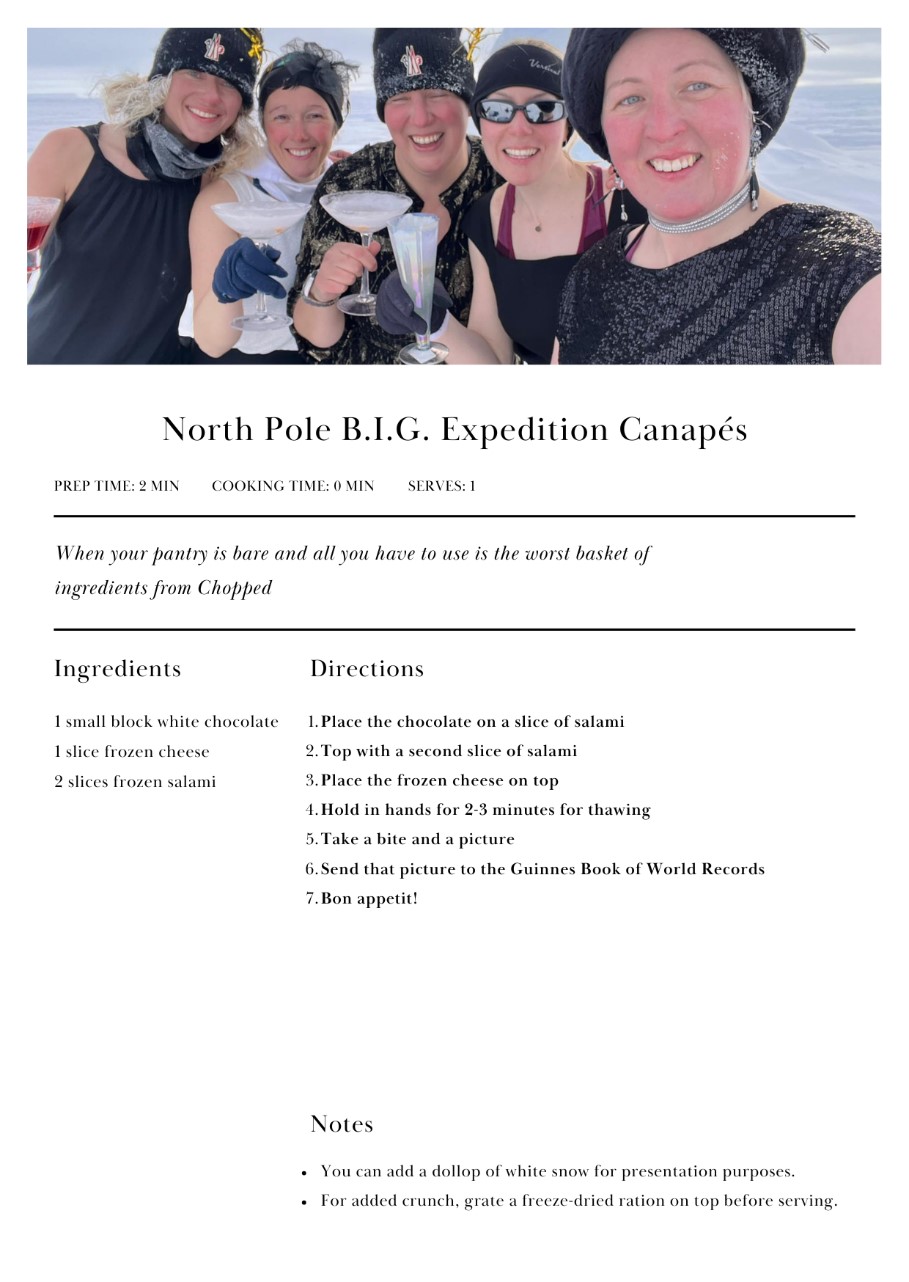
There were more delays along the way. Terrible weather had them stuck in their tents for almost three days. Despite being physically exhausted and seriously dehydrated, they had to push forward anyway to get ahead of an incoming storm. The team was always on lookout, for both shifting ice and polar bears. Says Laura,
“It’s an experience, but it’s hard. Being in those environments, anyone will tell you it’s hard. You need to have the right gear, but even then it’s brutal. You’re basically out there where everything’s trying to kill you. The cold, the sea ice, and even polar bears. When we got to Resolute Bay, the locals told us it was polar bear mating season and we’d definitely have an encounter with them.”
Along the way, the team collected data. They showed that all kinds of different microplastics have made their way into the North Pole ice, as have heavy metals like lead, and, importantly, black carbon. Black carbon is what is produced when we drive cars, run industrial plants, and experience wildfires. Its presence in the arctic ice is quite serious – the small black particulates make the ice melt faster than it already is, and this speeds up the effects of climate change.
Laura gathered data as well, for her salutogenesis project as she learned even more about how people respond when pushed to such extremes. Sadly, they didn’t quite make it to the magnetic north pole, thanks to the weather delays and shortened time frame for the trip. But they did stop to set a Guinness world record!
World records, at least as adjudicated by Guinness, are kind of a funny process. You have to contact them directly ahead of time, laying out your intention to break some previous world record, or create a new one (hi Guinness, it’s me! I plan to make the world’s largest Build-A-Bear, would that qualify for inclusion?) Then they have specific criteria that must be met in order for you to lay claim to that record.
And so it was that the B.I.G. team, in addition to their scientific equipment and survival gear, carried cocktail glasses, cocktail dresses, and a device to play music all the way to the North Pole with them. One of the trip’s sponsors was an alcoholic beverage company (Axia Spirit), and this was a tip-of-the-hat to them. But according to Guinness, it is not a cocktail party without tunes, a table, cocktail attire, and canapés.
An adventurous spirit, a quest for knowledge and experience, and a determined toughness made Laura Thomas an ideal candidate for a skiing trip to the North Pole. A dedication to comfort, a lack of physical fitness, and a penchant for variety in my cuisine made me the ideal person to sit at home and write about it. And it’s fun to write about a “space psychologist”. Several years ago, there might have been a handful of those on Earth. Now, as space is opening up, so are the opportunities for a vast array of experts to ensure the safety and effectiveness of this new enterprise.
Laura’s training as a psychologist and passion for research have served her well here on Earth. She is working on projects that shed light on some of the world’s most serious problems. And it is those qualities and qualifications that will serve the next generation of explorers. The ones who will head into the most unexplored regions of our world – those beyond our world. They will be in a position to succeed, thanks to a dedicated team of experts to help them with their work, and Laura to help them with their minds. Who better than someone with her kind of experience to accomplish B.I.G. things?
Climate Crisis and Coping: The drivers, effects and the role of psychology
The theme of Psychology Month for 2024 was the climate crisis. How does human behaviour shape climate change, and how can we approach the issue from that perspective? What are some of the mental health effects created by climate change, and how can we address them? Psychologists have a part to play in all phases of our collective response to the crisis that is upon us, and we highlighted what many of them are doing and what we can all do to help mitigate the damage from this global catastrophe.
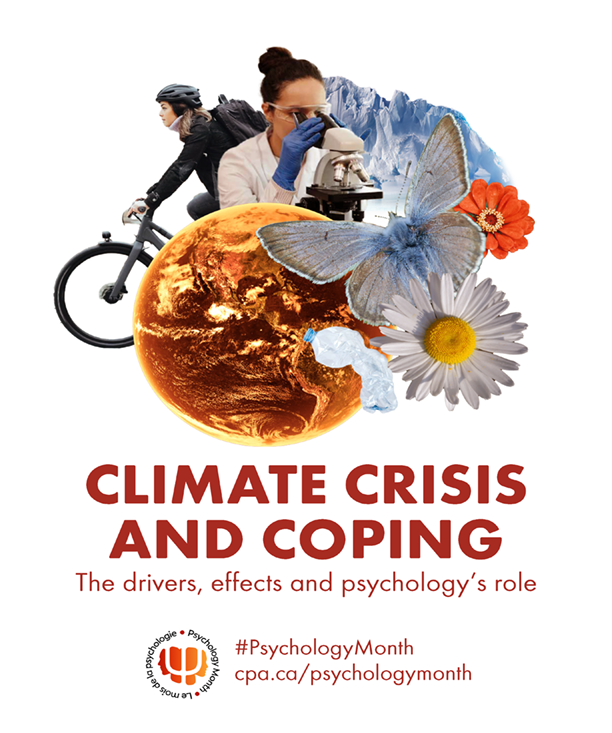
Psychology Month 2024 was on the subject of climate change and psychology’s role. Our communications specialist reflects on the campaign, the key messages, and the next steps we can all take in tackling the biggest threat of our lifetimes.
Reflections on Psychology Month, climate change, and the path forward
My name is Eric Bollman, I’m the communications specialist at the Canadian Psychological Association. I am introducing myself here because I don’t normally write from my own perspective – I am usually writing about others, or their work. I thought I would write this final Psychology Month article from a personal perspective, as I have learned a lot over the course of this month and I want to share that – but I also want to make clear that these are personal opinions and perspectives from what I have gleaned. In our weekly Psychology In The News email that I send to membership, this would go under the ‘Blogs and Opinion’ section.
I started writing this piece with the explicit intent to walk the fine line that action on climate change demands – the acknowledgement that it is a crisis that can terrify many, if not most of us, but that framing it positively is the only way to encourage people to get on board in taking action. Upon re-reading what I initially wrote, I realized that despite my stated intent of looking to strike that balance, I had absolutely not done so. In fact, I had spent so much time immersed in the topic of climate change and online disinformation that I didn’t notice the negativity that had seeped into my thought process and permeated most every sentence I wrote, until I stepped away for a few days.
I feel like this is something that happens to many of us, so I hope the personal anecdotes I relate through this final Psychology Month article are helpful and, perhaps even a cautionary tale! What follows are the things I took away from the multitude of conversations I had this month. I present three areas where I think psychology can help the most, and where we can all (psychologists and non-psychologists alike) focus our efforts and attention.
Frame the conversation – and the solutions – in the most positive terms possible
It was clear to me, from the beginning, that the framing of Psychology Month in a positive way around climate change would be difficult. So much so that when I tried, I initially failed to do so. This is the most existential threat we all face right now, and in coming years it will become more chaotic and more catastrophic. It’s objectively terrifying. The more we talk about the climate crisis, and the circumstances that face us now and in the coming years, the more (rightfully) frightened we become.
That said, framing the conversation around climate change as a terrifying one is, generally speaking, not helpful. Doing so produces anxiety, fatalism, and actually discourages people from working toward solutions. Imagine being a child and learning about melting polar ice, disappearing species, sea level rise – and trying to imagine a happy future. As Paul De Luca, a student at the Prime Family Lab at York University says,
“By drawing upon the principles of positive psychology, and focusing on subjective well-being, we can potentially integrate our relationship to the environment to bolster or foster positive mental health outcomes in children and adolescents who I think are probably the most affected by anxiety because it’s their future at stake.”
Paul is right – a focus on subjective well-being can both alleviate distress and anxiety and also bolster pro-environmental behaviours. In her TED Talk, and her conversation with me on the CPA podcast Mind Full, Dr. Jiaying Zhao makes this point over and over. I believe she will make it once more at her upcoming plenary address at the CPA convention in June. There is no reason why pro-environmental behaviours can’t make us happy. Being outside on a bicycle makes people healthier, and as a result happier. Why not integrate that into our daily lives? For many people (me included) getting outside in the summer and tending to a vegetable garden can produce a great sense of peace (and a great crop of peas).
Every person in the world contributes to climate change in some way. There is no way to avoid it all. Every time I get into my car I think about it. When I make the decision between running the dishwasher and washing pots and pans by hand, I’m subconsciously calculating the impact of one versus the other. Thinking about things in this way can overwhelm us – and has overwhelmed me at times. Taking concrete steps that I know are good (maintaining my indoor garden, planning meals so I use up all the vegetables in my fridge) can take me out of a negative headspace while also boosting the health of my family.
These choices we have to make are, I think, best encapsulated by the magnificent TV show The Good Place, where Ted Danson presides over – for lack of a better word – Hell. People are making efforts to be good, and when they die they hope they’ll have been good enough to make it into Heaven – but the complexities of modern life have made it literally impossible for anyone to achieve the proper level of “goodness” and nobody new has been admitted to Heaven for centuries. Danson’s character sums it up –
“Just buying a tomato at a grocery store means that you are unwittingly supporting toxic pesticides, exploiting labour, contributing to global warming. Humans think they’re making one choice, but they’re actually making dozens of choices they don’t even know they’re making.”
There is good news in the struggle against climate change. A decade ago, part of the debate was framed as either you embrace renewable energy but sacrifice the economy and GDP, or you ignore renewables in order to ensure economic growth. Today, those concepts have been decoupled – and renewable energy is an economic driver of its own. Heat pumps, solar panels, and electric vehicles are becoming cheaper and more accessible. Major countries, and companies, have pledged to crack down hard on methane emissions, one of the most effective ways to limit global warming in the coming years. There is reason for optimism!
Holding ourselves to an arbitrary standard makes little sense. We can’t deny ourselves every pleasure for fear of our carbon footprint or impact, or we will become like Michael McKean’s Doug Forcett on The Good Place – living life in a perpetual state of anxiety where our entire world crumbles whenever we accidentally step on a snail. Instead, we can focus on making ourselves happier – and the world better – through actions that we know can do both.
Win the war on trust
As McMaster environmental science Ph.D. student Kyra Simone points out, there has long been a narrative pushed by those who would deny climate change exists – namely, attacking the messenger rather than the message. Calling out hypocrisy from those who are the most vocal about solutions as though that somehow means that what they’re saying on climate must be false. Al Gore flew to a conference! David Suzuki has houses! Greta Thunberg owns clothes! Sure – some of those things can be framed as hypocritical, but none of them makes the message a false one.
This particular kind of disinformation seems relatively recent when it comes to things like vaccination. But it has a long history in the realm of climate change, starting with oil and gas companies funding fraudulent studies decades ago to muddy the waters around the conversation such that no one could tell what was true and what was invented. Presenting those counter-narratives in a ‘scientific’ sort of way is a big reason many people continue to be skeptical of science today – particularly climate science.
We hear a lot about a War On Truth. That the current political climate and online discourse is designed to make Truth subjective – well, that may be true to you, but I have an alternative set of facts. I think really this is a War On Trust. Concerted efforts to delegitimize academic institutions, the media, and experts of all kinds have allowed charlatans and disingenuous public figures to replace the trust people once had in those institutions with trust in them, and in their podcasts and Substacks and supplement brands. These efforts have worked to some degree. Americans now trust what they read on social media more than traditional media. In Canada we’re not there yet. But we’re trending in that direction.
As someone who spends a lot of time on social media – I’m the person who puts out the CPA’s social media content and monitors the trends and responses and direct messages, I probably spend more time on social media than the average person, and (I assume) more than a psychologist would suggest is healthy. Spending time in that space, Twitter especially, is a constant barrage of people and bots who want nothing more than to contradict an expert in the area of their expertise, attack their character, and seek online clout through the most negative means possible. It becomes hard to remember that those people are a very small minority, since those platforms have made that minority the loudest one in our collective history.
I feel like Dr. Katherine Arbuthnott would tell me I’m not seeing this stuff as often as I feel like I do. Which is probably true – I can think of only twenty or so direct examples, but those do occupy an outsized place in my memory bank. She’s evangelical about the fact that we, North American human beings, have been conditioned to trust others too little. That we consistently underestimate the willingness of strangers and even friends to be helpful, to do the right thing, and to put the needs of our collective neighbourhoods and communities above some of our own.
I failed to keep this in mind throughout all of February. It was only when I was about to write an angry response to a bizarrely un-factual and conspiratorial tweet from a well-known Canadian public figure about climate change that I had to stop and take stock of my headspace. I realized I was outside the bounds I had set for myself. So what to do?
We can work on our own media literacy – does this story come from a reputable source? Are we sure the scientist who created the study being referenced is in fact a scientist? And an expert in the field in which the study was conducted? Is the story being hosted on a platform that actually fact-checks?
Another option is to counter the un-factual with the factual. I don’t mean commenting on the meme your Facebook friend shared about Al Gore being rich ergo climate change is not real. As Rachel Salt of Science Up First says, commenting or quote-tweeting or sharing a post so as to debunk it really does little more than amplify the wrong information. She suggests screenshots of the content that can then be addressed without adding to the destructive algorithms that got us here in the first place. Or, just post your own thoughts and your own science and your own content – the more truth there is online, the less able it is to be drowned out by the outsized volume of the clamorous minority.
We can trust that most of the people we know, and most of the people we meet, have a similar level of concern about major issues like climate change. We can believe that any action we take will also be taken by a multitude of others, and that doing this enough times will create the large-scale changes those actions are intended to create. And we can ignore the loudest voices in the room and on the internet, secure in the knowledge that the majority of people feel the way we do, act the way we do, and are moving toward the same goals we are.
They’re just not as loud about it – you might get internet clout for a few days by sharing a theory that Kate Middleton is in fact a Manchurian Candidate-style brainwashed operative installed in the British Royal Family in order to make cheese illegal. You’re less likely to get clout for telling people about your radish garden. And so I, a regular user of the internet, am far more likely to hear about the illegal cheese than I am about your radishes. More’s the pity.
Lean on others
The solutions to climate change are interdisciplinary. That’s a word that usually refers to experts from different spheres working together to advance a science they would not be able to do as effectively on their own. Like that time Amy and Sheldon shared a Nobel Prize on The Big Bang Theory. This is true in terms of the climate crisis as well – one scientific breakthrough builds on another, and one discipline enhances the others merely by virtue of their collaboration.
Witness the young scientists in Dr. Heather Prime’s Prime Family Lab at York University, Paul De Luca and Alex Markwell, integrating climate change into their studies with families and children. They don’t have to do the work of determining whether climate change is a threat, or is real – they can treat that as a fact and take a further scientific step from there. Environmental scientists have done that work over the course of decades, through cuts in funding, official muzzling, and the vocal skepticism referenced earlier that seeks to undo their work.
As Paul and Alex build on climate science, McMaster PhD student and Science Up First contributor Kyra Simone is creating new climate science based on decades of environmental work, and setting the stage for breakthroughs in dozens of fields for decades to come. Psychologists are combining their specialties at University of British Columbia, where Canada Research Chair in Behavioural Sustainability Dr. Jiaying Zhao has partnered with happiness researcher Dr. Elizabeth Dunn to find ways to encourage behaviours that will both help the environment and increase happiness.
In community action, emergency room doctor Dr. Kyle Merritt has partnered with many other healthcare professionals to form Doctors and Nurses for Planetary Health in Nelson, B.C. Psychologist Dr. Todd Kettner is also a member, and they learn together about ways they can make their own jobs and practices more climate-friendly (anaesthetic gases are a major contributor to global warming!) As a group, they consult with city officials on ways to improve sustainability through infrastructure projects and municipal policies.
The Environmental Psychology Section of the CPA is a section that does not specifically look at environmental issues, per se – as in pollution and emissions and disappearing sea ice – they look at peoples’ behaviour in relation to their environments. That includes physical built environments like their homes, offices, or the streets and blocks they go through on their commute. It also includes natural spaces like parks, forests, or waterways. This year they decided to create a working group to bring together psychologists of all types to work together on climate solutions. Dr. Phoenix Gillis took the first step , Section Chair Dr. Lindsay McCunn quickly got on board, and the meetings have been lively, informative, and well-attended.
Their initiative could produce some great results, with the variety of expertise psychologists bring to the table. Industrial/Organizational psychologists, who study human behaviour in the workplace, collaborate with Environmental psychologists to design climate-friendly offices where people are happier to come to work. Clinical psychologists whose patients are expressing anxiety about this existential threat can work with Social and Personality psychologists to come up with concrete actions that can increase sustainability while lessening the dread people feel.
I am the person responsible for the Psychology Month initiative at the CPA. Which meant that this year I sat with the impacts of climate disasters, the missed targets of the past several decades, and the existential dread – mostly alone. I needed someone else to point out my increasing negativity, to which I had been largely oblivious. In this case it was my wife Jen who made an offhand comment about it which elicited in me a moment of clarity. I have spoken with so many wonderful people, dozens of them, over the past four months in preparation for this campaign, but by the end I missed or forgot several of the lessons that I myself was trying to impart this month.
We can all reach out to someone we know to get on board with their work, to get them on board with ours, or to get the ball rolling on something new. We can trust that the people to whom we reach out will more often than not be of a like mind on climate change, and will embrace the chance to act. Collaboration makes us happier, and the steps we take in tandem lessen our trepidation and anxiety when it comes to existential threats.
Postscript: the Earth is a collaborator too
After finishing this article, I had one more conversation this month that I think might add a fourth area for consideration. I spoke with Kohkom Beverly Keeshig-Soonias, an Anishinaabekwe psychologist and member of the Chippewas of Nawash First Nation. We were speaking about land acknowledgements – the reason we do them and the meaning behind them.
Indigenous people have been doing land acknowledgements for thousands of years. It is only recently, in the spirit of Truth and Reconciliation, that they have invited the rest of us to join them in doing so. A land acknowledgement is much more than simply pointing out that Ottawa is the ancestral home of the Haudenosaunee, and that settlers and colonialism displaced them forcefully decades or centuries ago.
A land acknowledgement is a verbal, or written, expression of the understanding that not only did the Indigenous people live on this land before Europeans arrived, they had a relationship with that land. It’s an acknowledgement that, even though that land might now have a golf course or a Jean Coutu or the CN Tower on it, the relationship between the people and the land remains ongoing.
Kohkom Beverly speaks about land as a partner, the other half of a relationship that feeds both of you. The land provides you with food, water, and shelter. The air you breathe and the sustenance you require to stay alive. In return, you provide the Earth with what she needs. You maintain the soil, you help get water to the plants and plants to the animals and you treat her, the land, as an equal partner in a relationship that benefits you both.
It is only when we start to see the land as a thing, as inanimate, that we are able to use it, to extract resources for our own gain at the Earth’s detriment. The Indigenous people who were caretakers of the land for thousands of years, and are still caretakers of the land, would never act this way. To do so would be to abuse a partner, to ignore a relationship, to exploit a family member.
And so perhaps the final way we can approach the issue of climate change is to look at the Earth, and the environment, and the very land on which we stand, in a different way. Not as a thing we’re trying to help, or as a victim to whom we’re trying to atone for the harm we’ve done. But instead as a collaborator and an entity with whom we have a relationship. A partner with whom we are working to improve the circumstances for us both.
We have a long way to go, but we always go further together.
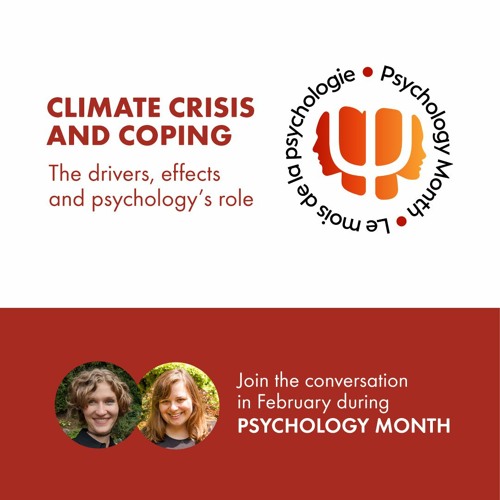
Throughout Psychology Month in February, the topic of disinformation when it comes to climate change has arisen time and again. To close out the month, we spoke with Kyra Simone and Rachel Salt at Science Up First about our responses to disinformation, ways to combat it, and difficult conversations with friends and family.
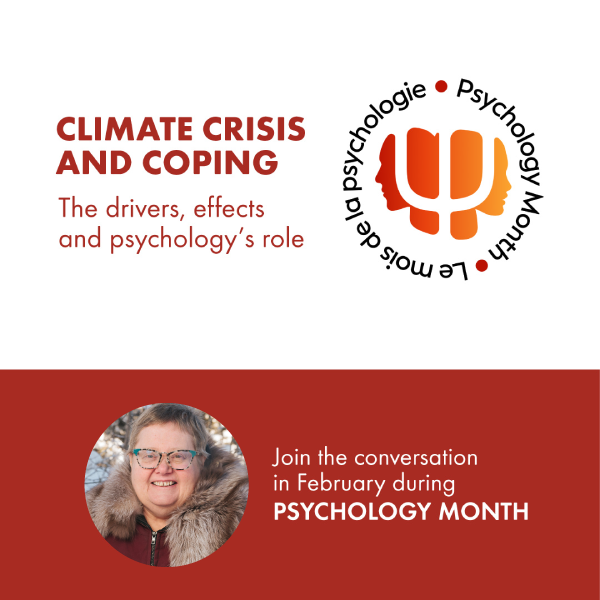
This summer wildfires ravaged the Northwest Territories, forcing the evacuation of about 70% of the population. Yellowknife psychologist Merril Dean was one of the evacuees, and saw the devastation from many perspectives. In this Psychology Month episode of the CPA podcast Mind Full, Merril shares her own experiences, as well as some thoughts on the government response and where the northern communities might go from here.
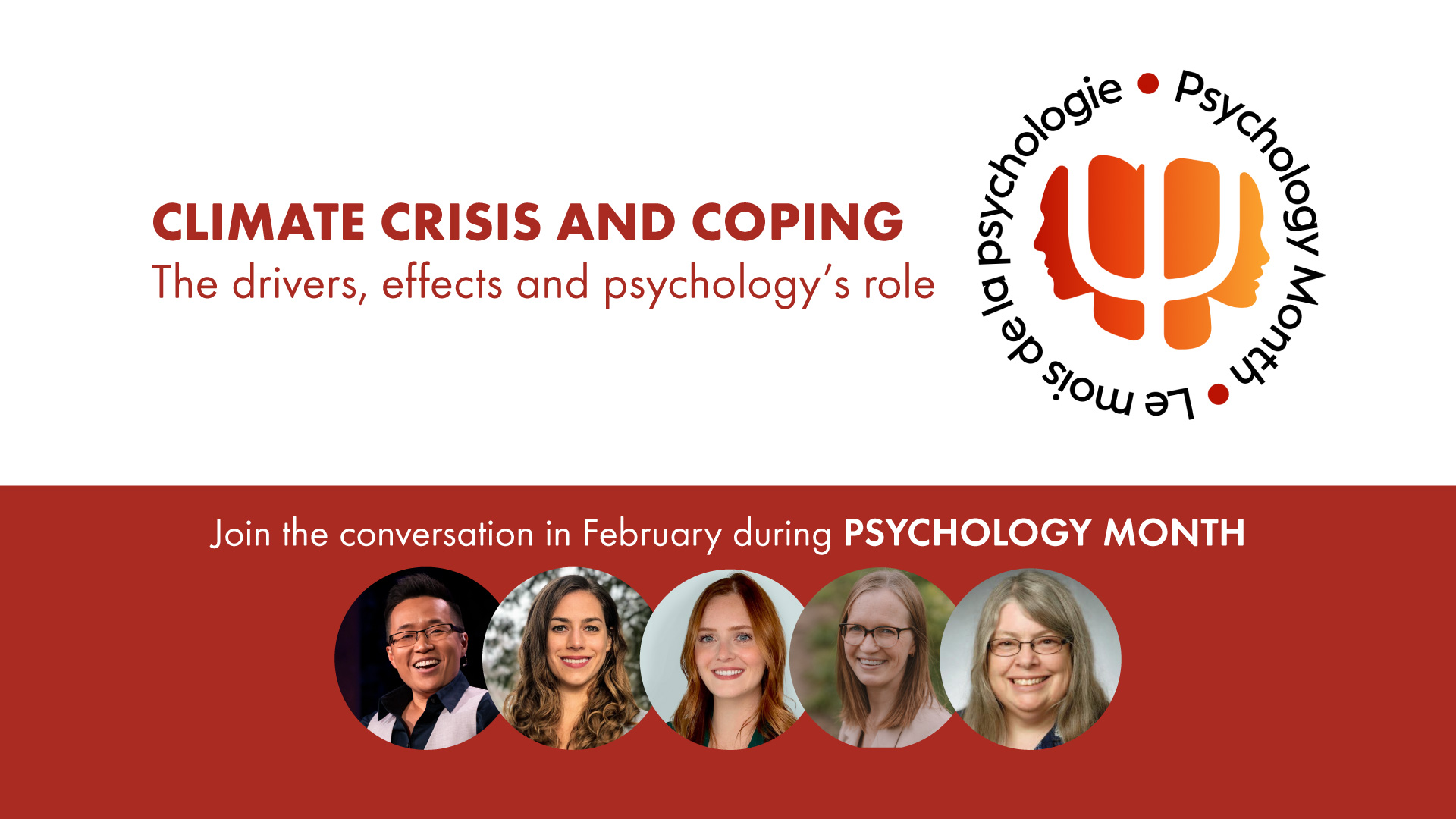
Starting a little more than a decade ago, climate science in Canada suffered a significant setback when the federal government cut funding for environmental research and restricted scientists from speaking with the media and sharing their findings. Climate scientists are still feeling the effects of those policies, and have still not completely regained their footing. In the interim, other scientific disciplines started taking a greater interest in climate change and making some strides. One of those disciplines was psychology.
Psychological scientists incorporate climate into their studies
When a researcher or student applies for money to conduct research, they have to convince the funders not only that their idea is a good one, but that they are the person who should be doing that research. Funders look at a lot of things including the impact of the research, the way the knowledge will be shared, the time it will take to complete, and the return on their investment (value for money).
In the Prime Family Lab at York University, lab director Dr. Heather Prime is discussing the future with her student Alex Markwell. Because of how they apply for and receive their funding, their research projects must be closely tied to the lab itself – in their case, that is the study of family dynamics. How parents and siblings influence children from birth to adolescence, or how major or minor external events affect families. The lab launched in 2020, just as the COVID-19 pandemic became a major external event that upended family dynamics across Canada and around the world.
Students come to a lab because of the expertise that the research program and supervisor bring to that lab. This is what drew Alex to the Prime Family Lab. Her area of interest is child development within a family systems framework and this is the lens through which she looks at potential projects. She has a keen interest in acting on climate change, but this was not something that was part of the discussion before her arrival. Only through conversations with her new lab director did they discover that this was a shared passion. Heather says,
“Alex brought up a year or two ago that the way we study the pandemic is really transferrable to the way we might study climate change.”
So they started thinking about ways they could integrate climate change into their established research program. As Alex thinks ahead to her Ph.D., which she will be starting in September, she has written a proposal for a scholarship focused on the pathways linking climate change to child and family well-being. One aspect of this proposal is the creation of a theoretical model from a family system perspective.
“Because climate change is going to be more and more relevant to more and more people, you need a map – which sounds annoying because it’s theoretical, but it can create a framework of ‘here’s what we think is going to happen based on everything we already know’. That takes a lot of work – you’re scouring the literature, bringing together a number of theories, and then creating this ‘map’.”
Specifically, Alex is talking about looking at how climate changes and climate change-related events may affect children’s mental health through disruptions to family functioning. She’s thinking that would be similar to the COVID family-disruption model that Heather published, about how the pandemic’s social and economic disruptions trickle down into families and affect their dynamics.
They can start looking at feasible interventions – something psychoeducational that could teach parents and caregivers how to talk to their children about climate change. Or maybe the social and economic ripple effects of climate change impacting family relationships where children may suffer, given that kids are so dependent on their relationship with their parents. First though, they must define the parameters of their study.
Are we talking about families who have experienced a major climate event – like losing a home to a wildfire – or families who are under threat of such an event (live in proximity to a flood zone) – or are we talking to families who are just generally anxious about the whole thing? Can they survey those people in Toronto?
There are many questions to answer before applying for research funding. Many more questions arise after that funding is secured.
Canadian climate scientists are still feeling stifled
Many of us remember the protests staged by scientists in 2013 over what they described as the ‘war on science’ being waged by the federal government at that time. Science funding was drastically cut, and the scientists who were still able to do research were prevented from communicating the results of that research to the public – which is kind of the point of doing research in the first place. An enormous amount of that muzzling was done around climate science, as the federal government sought to downplay the most dangerous effects – and even the very existence – of climate change.
Dr. Alana Westwood at the School for Resource and Environmental Studies at Dalhousie University researches natural resource management and science. Her lab recently completed two studies into interference with environmental research in Canada. Of the 741 environmental scientists surveyed, 92% reported experiencing interference with either the conducting or the communicating of their research. Dr. Westwood, along with her research associate Manjulika E. Robertson and Master’s student Samantha M. Chu, wrote an article in The Conversation discussing their findings and the ramifications of these pervasive invisible barriers.
Since that time, the policies at the federal level have changed. In theory, this means that scientists can get back to their work and can share their results with impunity. Alana’s studies suggest that this is, sadly, not the case.
An atmosphere of uncertainty is partly to blame – for a long time, certain kinds of science went unfunded and specifically shunned. Can scientists go back to those subjects, studying pollution and endangered species and emissions? Will they get funding if they do? What about funders – there is now a fair amount of external pressure on them to fund only certain kinds of research, pressure which has not necessarily abated just because of a change in federal policy. Alana says,
“We identified interference in two categories. One is externally imposed – when a researchers’ employer is putting restrictions on their ability to conduct or communicate their research. That could come from workplace policies, it could come from their manager, senior leadership, or their communications departments. The category we found that was new and more insidious was internalized interference. This happens when researchers themselves don’t want to communicate with the media, either out of fear of being misrepresented or of public backlash.”
Climate scientists exist within a system where the trickle-down effects of the war on science are still being felt. What has resulted is that a Canadian climate science environment that became fractured a decade ago remains fractured to this day, and important work in this space has been delayed or shelved entirely.
Back in the Prime Family Lab at York, Dr. Prime says she has not felt any external pressure that could be considered muzzling, and has not experienced any interference when it comes to the subjects she chooses to tackle. This may partly be a result of her lab being so new. It might also be because until now, her lab has chosen to focus mainly on COVID. But it’s likely that a lot of the reason is that the Prime Family Lab is a psychology lab – a discipline that has not been targeted by the same kind of scrutiny and interference over the past two decades.
Psychology has a role in the climate science conversation
“I think at this point, psychology probably has a primary role in the response to the climate crisis. Climate scientists and ecologists and environmental engineers have pretty much figured out the solutions to our problems. There’s a lot of work to do still, obviously, but now it’s more about people taking up those solutions.”
Dr. Katherine Arbuthnott is Professor Emeritus from Campion College at the University of Regina. She has spent the past couple of decades studying the health benefits of connection with - and spending time in - nature. Spending time outdoors, interacting with trees and wildlife and sun, has benefits for both our physical and mental health – and it has the added bonus of nudging us in the direction of environmental sustainability.
Katherine is quick to point out that psychology has long been a science focused on individual behaviours. What makes A person do A thing. In her time as a cognitive neuroscientist she would study individual brains to look at the processes of cognition. Clinical psychologists generally work with one person at a time, to help that individual in a personalized way that works best for them. A lot of the psychology around climate change interventions has been focused in this area.
Dr. Jiaying Zhao is the Canada Research Chair in Behavioural Sustainability and an associate professor in the Department of Psychology and the Institute for Resources, Environment and Sustainability at UBC. She has led studies like the one demonstrating that putting images of turtles and dolphins trapped in plastic debris on recycling bins and garbage cans reduced the amount of plastic waste people threw away.
“We found that when we placed those images on garbage stations, the amount of plastic waste was reduced – that is, the amount of plastic waste going into all streams, garbage and recycling alike. People are responsive to those images, and the principle is trying to connect our actions (throwing stuff away) to the downstream consequences of those actions (dolphins in distress).”
Jiaying has also launched an effort to connect sustainable behaviours with happiness. Jiaying, a behavioural scientist, collaborated with her colleague Dr. Elizabeth Dunn, a UBC psychology researcher specializing in the study of human happiness. What resulted was an idea for reframing the discussion around climate change from one of sacrifice (give up meat, shop less) to one of happiness. So many things that are better for the environment (eating more vegetables, riding a bicycle) are also things that improve our mental health and make us happier people!
Jiaying gave a TED Talk on that very subject which includes what the kids would call “hacks” to make you happier while benefiting the environment at the same time – like feng shui-ing your fridge. Or making the effort to carpool with people who can make the dreary drive in to work in rush hour traffic a more enjoyable and brain-stimulating experience.
To truly make a difference in the battle against climate change, it will take many people doing many little things, and many countries doing many big things. Individuals who do the little things are more likely to demand the big things of their communities and countries. And we’re getting there. More people than we realize are willing to take the actions that are required to stave off the worst of what climate change might bring.
Katherine speaks a lot about trust. The trust we have in other people to do the right thing, and the gap between our perceptions and the reality when it comes to the intentions of others. We, as people, tend to greatly underestimate the level of commitment in strangers to do the right thing, when in fact each of us is more likely than not to want to take actions that benefit all of us collectively. She also recognizes that truly addressing the climate crisis goes beyond simply engaging individuals to act differently.
Psychology can help. Yes, psychological science is a little late to the game. But it is now a player in the climate discussion – and can be an essential one, bridging the gap between the conclusions and solutions proposed by climate scientists and the implementation of those solutions by people and communities. Environmental scientists in Canada have been set back, and are only now starting to regain their footing. But they’ve done a tremendous amount of work over decades telling us all what’s happening and what we need to do. They are not ringing the alarm bell alone. Jiaying, Katherine, Heather, and soon Alex and many others like her will be adding their expertise in a truly interdisciplinary collaborative effort to put us all on the right path – toward sustainability, planetary health, and our own collective happiness.
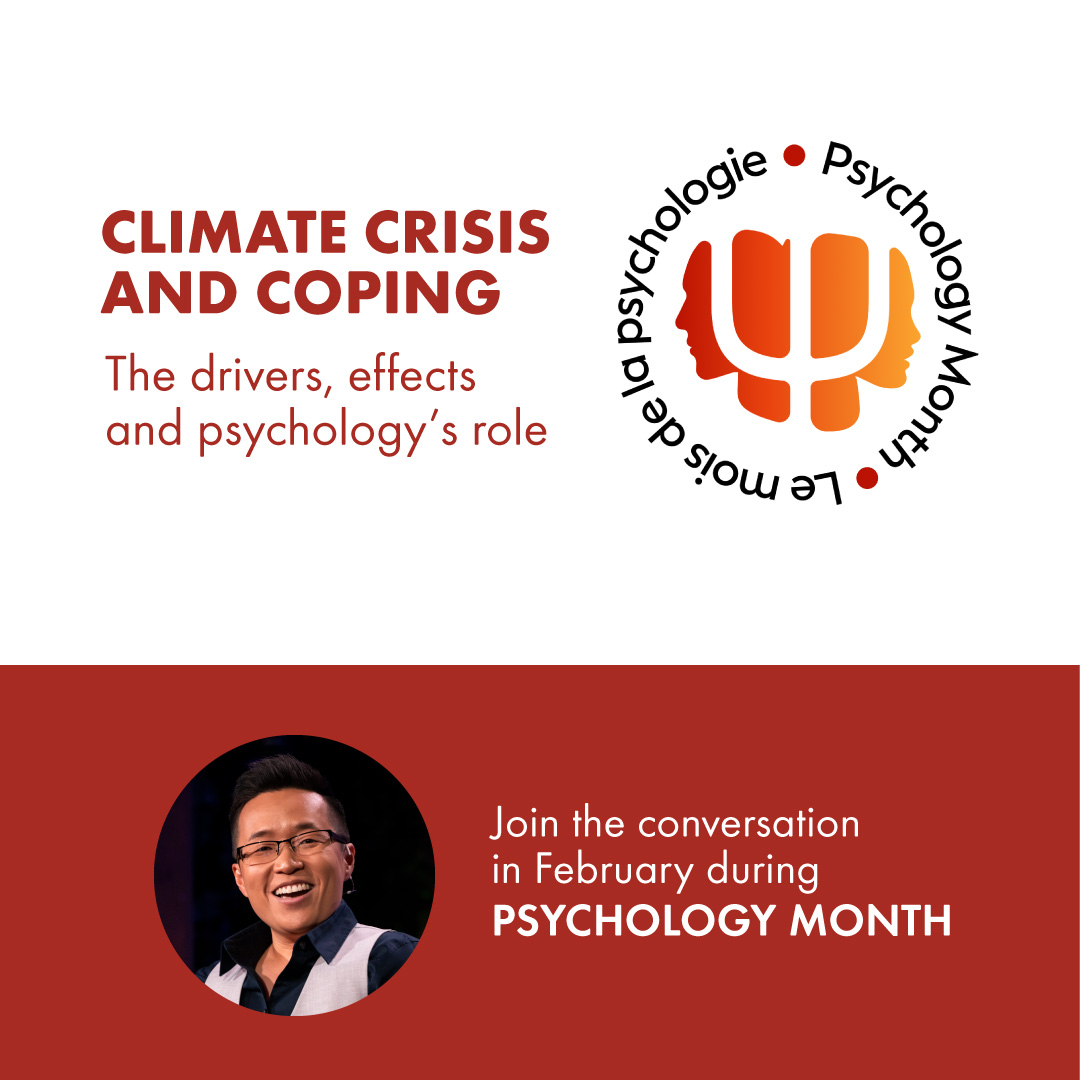
So much of the talk when it comes to the climate crisis is doom and gloom. It’s hard for many not to become a little defeatist or to throw their hands up and ignore the problem. The solution to that kind of despair is action – little actions that move us all toward a more sustainable future. And those actions – and the conversation about them – can be a happy one! Our podcast guest is Dr. Jiaying Zhao, who connects climate action to our own personal happiness in a way that we hope spurs some of that action – and makes you happy along the way!
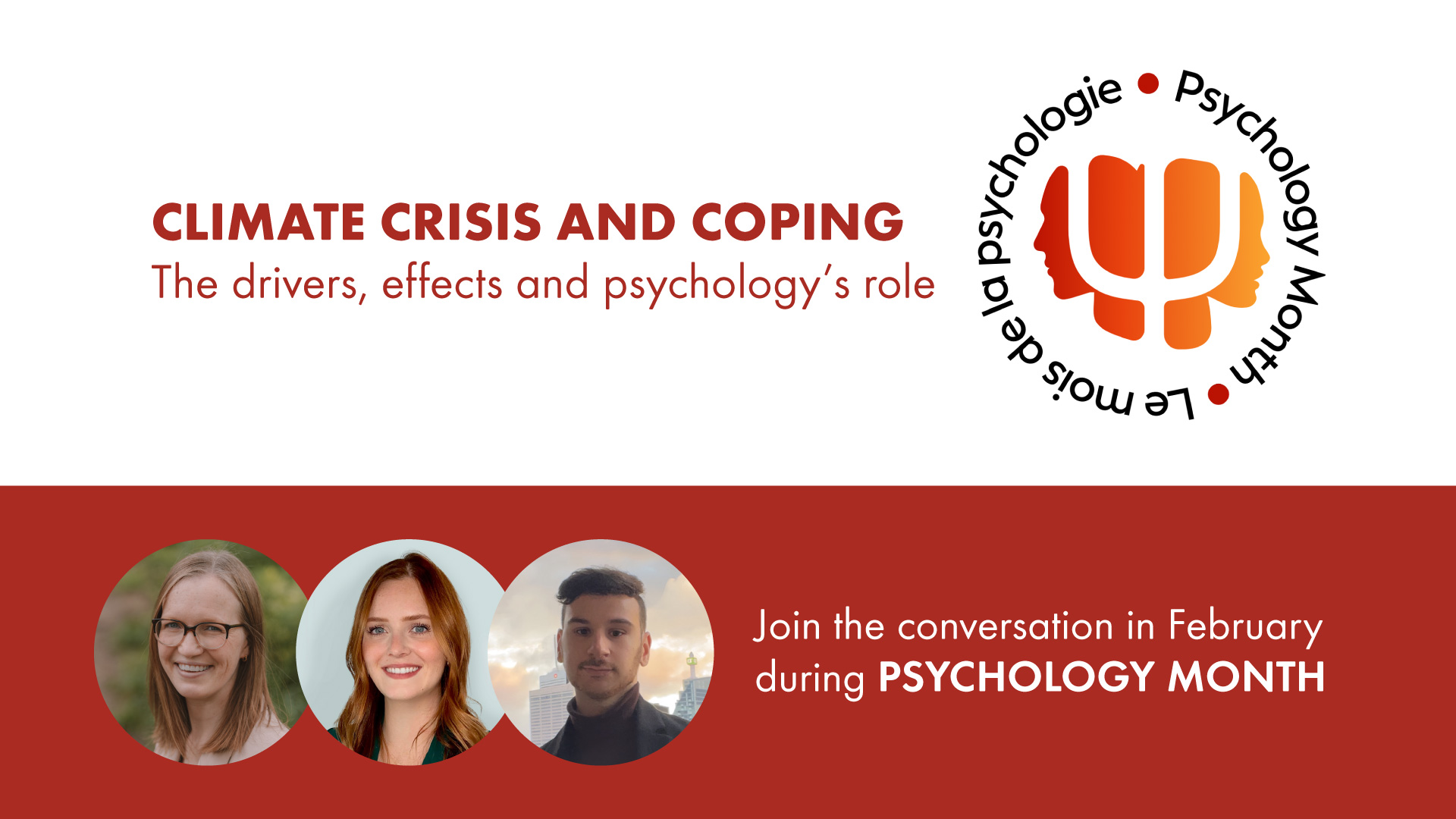
Dr. Heather Prime, Paul De Luca, Alex Markwell
A lot of action on climate change is aspirational. Pledges, pacts, and agreements are often non-binding and have no enforcement mechanisms. But aspirational action is action, and it often works – especially when the action is undertaken by many. York University’s Psychology Department is the first in Canada to sign on to the 1 in 5 Project, an initiative that asks academics and students to make climate change the subject of one in five projects or assignments.
The United Nations first recognised climate change as a major, urgent, global issue in 1992. In that year, the Rio Earth Summit resulted in the first international agreements on climate change. Then in 1997, the Kyoto protocol required developed countries to reduce emissions by 5% below 1990 levels – but developing countries (including China and India at the time) were exempt. Since that time, the developed countries have managed to reduce emissions by 17% (collectively). Germany had reduced their emissions 30% by 2020. The US backed out of the Kyoto accord in 2001.
More conferences, meetings, and summits have followed. 2009 in Copenhagen, 2010 in Cancun, 2011 in Durban, 2012 in Doha, 2013 in Warsaw. Agreements are reached, targets are set, countries back out, targets are missed, agreements fizzle.
In 2015, a landmark in climate change action was achieved in Paris. 196 countries signed on to the Paris Agreement, the most significant global climate agreement ever. The results? To be determined…countries can choose their own targets and there are no enforcement mechanisms to ensure they meet them. Since that time, there have been a lot more meetings…with mixed results.
All this said, many countries – including some of the most important ones – have made a concerted effort to meet the targets set by these series of agreements and accords and pacts. Although there is no enforcement mechanism by which they can be held accountable, the mere action of signing on to a global accord has, in fact, encouraged many of the world’s powers to move toward renewable energy and a greener infrastructure, though not nearly as quickly as many of us would like.
Climate progress is slow. But it is progress nonetheless. It may be frustrating. It may feel like it happens at a snail’s pace and not nearly fast enough considering the urgency of the issue. But it is happening, and hopefully the worst of what climate change could portend might be averted as a result.
In the past year, York University’s Psychology Department has joined the global 1 in 5 project. The project is a framework to allow the academic community to focus some of its collective brainpower on climate and biodiversity, and York is the first psychology department in Canada to sign on. The idea is that academic institutions commit to ensuring that one out of every five assignments, projects, or courses has an element related to climate change attached to it. Like other climate accords, agreements, and pacts, there is no enforcement mechanism, and no accountability – just the desire to improve the future for everyone on Earth.
Dr. Heather Prime, director of the Prime Family Lab at York University, has become a strong supporter of this project, which has meant incorporating climate change issues into her own curriculum as well as thinking about the climate crisis more regularly. The universities and institutions that sign on to the 1 in 5 project are not specifically held accountable for following the mandate. But there is still an effect. It may be slow – slower than we would like – but that is not on today’s researchers. The slow pace of social science around climate change is the result of years (and years) of avoiding the issue by the community at large. Says Dr. Prime,
“[The 1 in 5 project] serves as a kind of challenge to everyone to think about how you can consider climate change in your discipline. Moreover, it involves students in the process. In many ways later generations are more committed to the cause, because they’re the ones that will be most impacted.”
It has not been a straightforward process for Dr. Prime to implement the 1 in 5 mandate to her courses, and it may not yet be fully integrated. Her lab is specifically interested in family dynamics – how children develop emotionally within their families, how stressors on parents and caregivers trickle down to the kids under their care - that sort of thing. At first glance, this might not seem like the kind of place where researching climate change can have a major role. But it does.
As Heather, and her students, say – climate change is a factor in virtually every facet of our lives, which means it can have an impact in virtually every research project one can imagine. Not just in environmental science, but in the social sciences as well. Researching income inequality? That will be exacerbated by climate change. Depression and anxiety? For many those are made worse thanks to thinking about the impending catastrophe that faces us all.
And so, while the York University Psychology Department signs on to the 1 in 5 project, they are in the early stages of implementing it and have not yet reached the goal where 1 in 5 of their assignments is about climate change. As with so many climate change initiatives, it’s more of an aspiration than a firm commitment. But it has an undeniable effect.
Paul De Luca is a Master’s student in Dr. Prime’s Family Lab at York.
“I think the mandate of the 1 in 5 project is very motivating, because dealing with climate change can feel like a major uphill battle. But when you go on the 1 in 5 website and you see all these amazing projects that are currently ongoing, you feel like you’re part of a collective movement. And that in some ways informs the work I do, because I’m able to scroll through and see what other schools are working on and what other labs are doing. I can take that and let it inform the work I’m doing, and maybe identify some of the gaps. I think of it as a collective movement toward this shared goal of talking about climate change.”
It is sort of a soft target. One in five projects will be about climate change…eventually. But the mere act of signing on to the project, and to the pledge, has brought York’s psychology department into the conversation, and its students into the realm of climate-related science, and has encouraged them to think about their own particular specialties through that lens. Paul continues, talking about a study he saw on the 1 in 5 website.
“There was one proposed project about how childrens’ understanding of climate change and attitudes toward the environment change as a function of age. There was a fair amount of research from the adolescent perspective, but not so much from the vantage point of younger school-age children. When I see something like that, I start thinking about the measures we currently have that have been shown to work with pediatric populations. Do we have the tools to deal with things like knowledge of the climate crisis, attitudes toward the environment, and anxiety arising from that knowledge. And I don’t know that we currently do.”
Alex Markwell, another student in the lab, is working toward her Ph.D. and considering dissertation topics. She hasn’t paid much attention to the 1 in 5 project, and hasn’t looked deeply into it – her commitment to addressing climate change was a pre-existing condition. She does find the website and the fact that York has signed on to be encouraging.
“It’s nice to know there are a lot of other students who are interested and passionate in the same kind of things. I’ve mostly been focused on looking at the research that has been published over the past decade, but this is a good resource to look closer at what’s currently going on.”
For now, that is what the 1 in 5 project is for students and faculty at York – a resource. It’s also an aspiration. Changes to the curriculum so far have been minor. For example, Dr. Prime teaches an undergraduate class called Atypical Development, which is about the assessment and treatment of child mental health issues. For the past three years, she has assigned them a class activity centred around designing studies on COVID and families. This year, the assignment was focused on climate change.
The students came up with really interesting study designs. One proposed looking at how food scarcity relates to brain development. Another thought to track calls to crisis lines as a function of catastrophic weather-related events. A third proposed a study would look at recurring droughts in rural Canada and how that related to mental health issues. The students embraced the project, and for those who were feeling anxious about the climate crisis it was a useful way to channel efforts toward it. It’s a way of connecting people to their role in the outcome of the world.
The changes are small – but they are changes. The idea of the 1 in 5 project is fairly simple, that academics from all disciplines can come together to collectively tackle the biggest issue in the world, all by doing something small. This, it seems, is the path forward and the way out of the worst of the climate crisis – we don’t all have to change our lives to devote ourselves to this cause. We can all do little things, and observe those around us doing little things as well, and collectively that is a big deal for today and for the future.
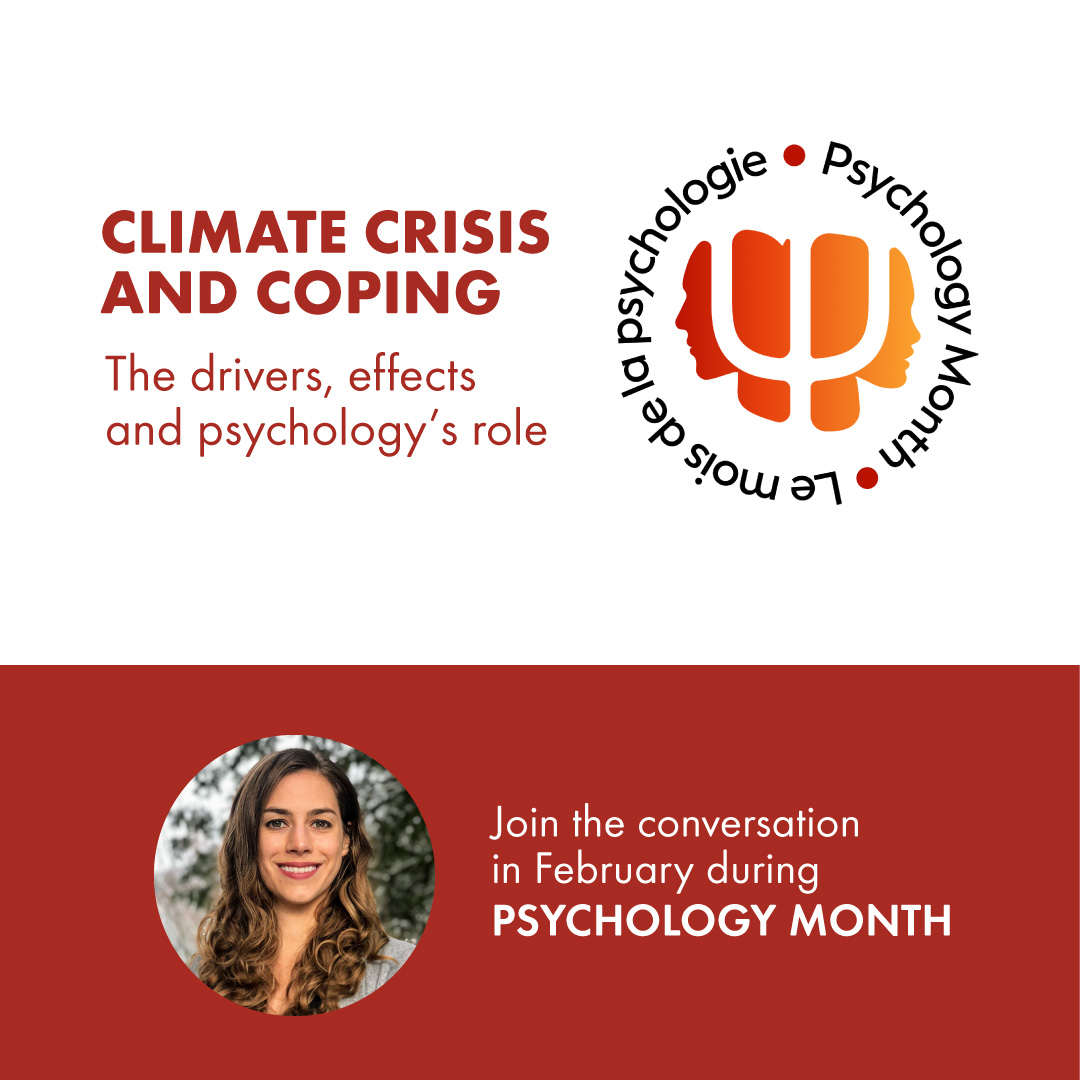
Dr. Alana Westwood and her lab at Dalhousie University recently completed a study of environmental researchers in Canada. Their results showed that researchers in this space still feel muzzled despite changes in federal policy designed to allow them more freedom to speak and share their results. On the CPA podcast Mind Full we discuss the reasons for this, the ramifications, and specifically what this means for environmental science – and the communication of that science – in Canada.

Merril Dean
In the summer of 2023, wildfires forced the evacuation of 70% of the residents of the Northwest Territories. There was a lot of trauma that resulted from leaving their homes behind. But there was also the stress of figuring out how to get supports through cultural and language barriers, and the shock that came when they returned to devastated communities. Yellowknife psychologist Merril Dean provides an inside look at the experiences of the people in the Northwest Territories, and makes some suggestions as to how schools can best help their staff and students upon their return from devastating climate events like these.
The unprecedented numbers of wildfires in the Northwest Territories (NWT) in the spring and summer of 2023 saw more than two-thirds (roughly 70%) of the territory’s residents displaced from their homes. Much of the population was evacuated from their homes for periods exceeding a month. Some communities faced multiple evacuations. On May 14 at 4:30 pm, Katlodeche Reserve, was evacuated across the river to Hay River. At 11 pm that very evening, the town of Hay River had an evacuation notice issued with citizens from (now both) communities urged to go to Yellowknife or head south into Alberta. On June 6th the population were allowed to return. Then on August 12th, the population of Fort Smith was evacuated to Hay River. Less than 30 hours later the communities of Hay River and Katlodeche faced yet another evacuation, this time to Alberta, finally able to return after September 13th. Communities north of Hay River faced evacuations through August, with Yellowknife being evacuated on August 13th. In total approximately 25,900 people were evacuated from their homes in the NWT during the summer of 2023.
Gerald Antoine, Grand National Chief of the Dene Nation, has called for an independent public inquiry to encourage everyone to talk about their experiences as the NWT government’s planned wildfire review does not include public engagement.
The massive evacuations of both large and small communities in the NWT this summer highlighted problems that may not be totally unique to the north, but became much more acute because of the relative isolation and the language and cultural component of many of the Indigenous communities in the north. In the past, communities that faced evacuation were typically encouraged to seek shelter in the closest larger community within the territory, thus ensuring at least some cultural and language supports were available; however, the breadth of evacuations in 2023 sent families south. For families with their own transportation and experience with travel, the evacuations, though stressful and frightening, were manageable. For families from smaller communities, or even Yellowknife, who had limited means and no transportation, the evacuation presented bigger hurdles. Families were loaded onto planes to be flown south. They were allowed to bring only 1 small backpack per person. In a number of situations the people did not even know where they were going when their planes took off. At least one flight was rerouted in mid-air and the passengers were taken to Calgary instead of Edmonton. In some cases Elders, who are unilingual speakers of their Indigenous languages, were evacuated to cities where there were no language supports. One educator reported that her grandmother was sent to Vancouver on the medical evacuation and it took the family 4 days to locate her and have a family member travel to join her to act as a translator.
The National Association of School Psychologists wrote a 2017 article about helping children and families after wildfires. Their article talks about how massive evacuations upset security and normalcy. The need to relocate, even temporarily, causes trauma, emotional reactions and coping issues.
For children and families who evacuated the NWT by road in the summer of 2023, additional stress was created by having to drive through fire on either side of the road, while also experiencing extremely poor air quality and visibility because of smoke. During this summer, families driving out of the north drove through the community of Enterprise, where 90% of the community had been burned down a few days before the northern evacuation. The sight of the burned-out community was devasting to children and adults alike.
For some students in the NWT, evacuations caused them to experience interrupted schooling through May-June and again in September before they were allowed to go home. Those students who drove back to their communities were witness to vast expanses of burned land, and active fires still burning or smoldering. Air quality was still poor. These sights made it apparent to the children that, despite being allowed to return home, the fires were still very real and close by.
The evacuations in the north were costly for families. While accommodations were provided through the Red Cross, or local disaster organizations in communities that accepted evacuees (these accommodations were paid for by the Government of the Northwest Territories - GNWT), those who were most economically vulnerable still experienced considerable economic stress. Hourly wage earners were suddenly without income, families on income support had already spent much of their monthly stipend on food that they could not bring with them during the evacuation. Promises of funding were implied by the government, but it wasn’t until near the end of the evacuation when details were shared – and evacuation financial supports were quite minimal. As a result, children and families faced food insecurity both during and after the evacuation.
Returning to the north following the evacuation exposed families to the sight of considerable changes around their homes and communities. Houses outside of their neighbourhoods had been destroyed by fire, and the burn areas approached the communities - in some cases encroaching right into them. Driving in their hometowns, children and families were constantly exposed to reminders of the evacuation and ongoing threat. Wildfires moved underground in the north, into the peat and as a result, at the time of writing (January 2024), fires are still smoldering – issuing smoke, and sometimes bursting into flames in the burn areas. While driving the highway between communities, where there was significant burn, people are still smelling and seeing active fires. While the burns are not currently threatening homes, their very presence causes unease and worry.
The massive number of people evacuated means that everyone in every community was affected. Teachers and counsellors were touched by the evacuation and threat of wildfires, and experienced the after-effects, just as their students and their families did. The added stress of financial strain caused by the evacuations has added to food insecurity and increased financial worries for families in the north.
Steps to support staff in schools, to ensure that they can also support their students, is important. The National Association of School Psychologists (NASP) recommends that school staff be given the opportunity to share their experiences and feelings and process them so they can support their students. Staff need to be aware of possible trauma responses from their students and be prepared to share that information with parents, who might be expressing the view that their child’s behaviour has changed since the evacuations.
(Anecdotally, psychologists working in fire-affected communities are reporting an uptick in parental referrals for children experiencing anxiety and behavioural symptoms that emerged during the evacuation and have not resolved.)
Schools with counselling support should be encouraged to create group crisis intervention discussions with their students to encourage them to share their experiences, process concerns, and help them understand wildfires. In schools and districts that have school psychologists, they could be the ones leading these discussions. In the NWT there are no school- or school district-employed psychologists, but similar support could be found through mental health youth counsellors.
As the community begins to return, it is important that schools continue to provide supports that allow students the opportunity to explore and process their experiences. It’s also important to discuss concrete steps that students can take and how to involve themselves in actions that can help them develop problem-solving skills for the future.
As climate-related events cause more upheaval and disruption to large numbers of population groups, it is important that schools and systems develop plans to support both their students and their staff. As the lived experience in the NWT shows, there are stages of response – from the immediate needs that come with an evacuation to the longer-term worries, concerns and impacts that an extended evacuation will cause. School districts are encouraged to ensure they have “return to school” plans that include longer-term mental health supports for students and families. They are also encouraged to promote long-term actions regarding the climate-related crises that are becoming more and more common throughout the country.
This article by Merril Dean originally appeared in the Fall-Winter newsletter of the CPA’s Education and School Psychology Section.
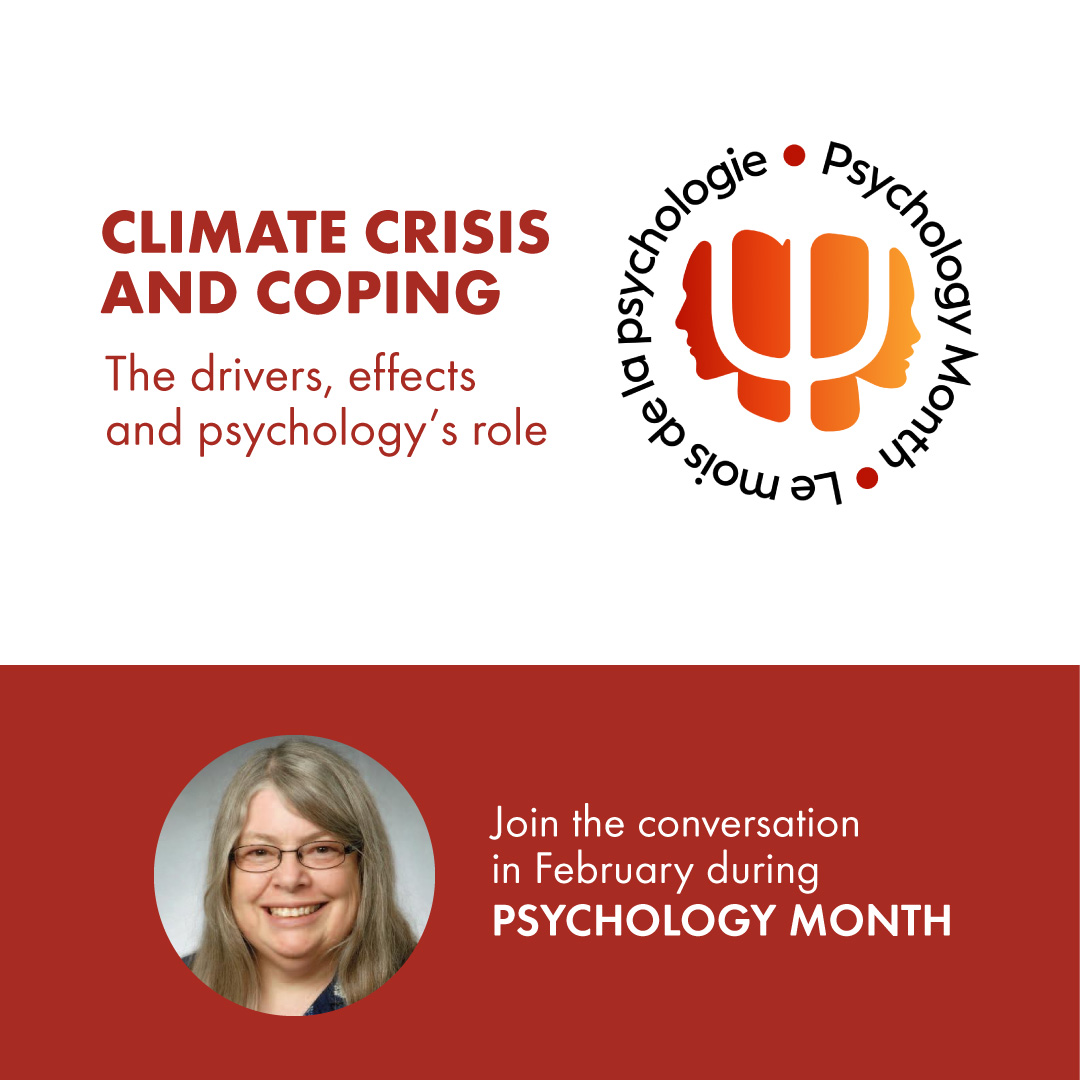
We kick off Psychology Month in February speaking with Dr. Katherine Arbuthnott about trust on the CPA podcast Mind Full. We tend to think of other people as self-interested, and we are therefore pessimistic about things like our ability to tackle major subjects like climate change. Dr. Arbuthnott is here to tell us this isn’t really the case – that most people are, in fact, willing to make sacrifices for the good of the communities and the people around them.
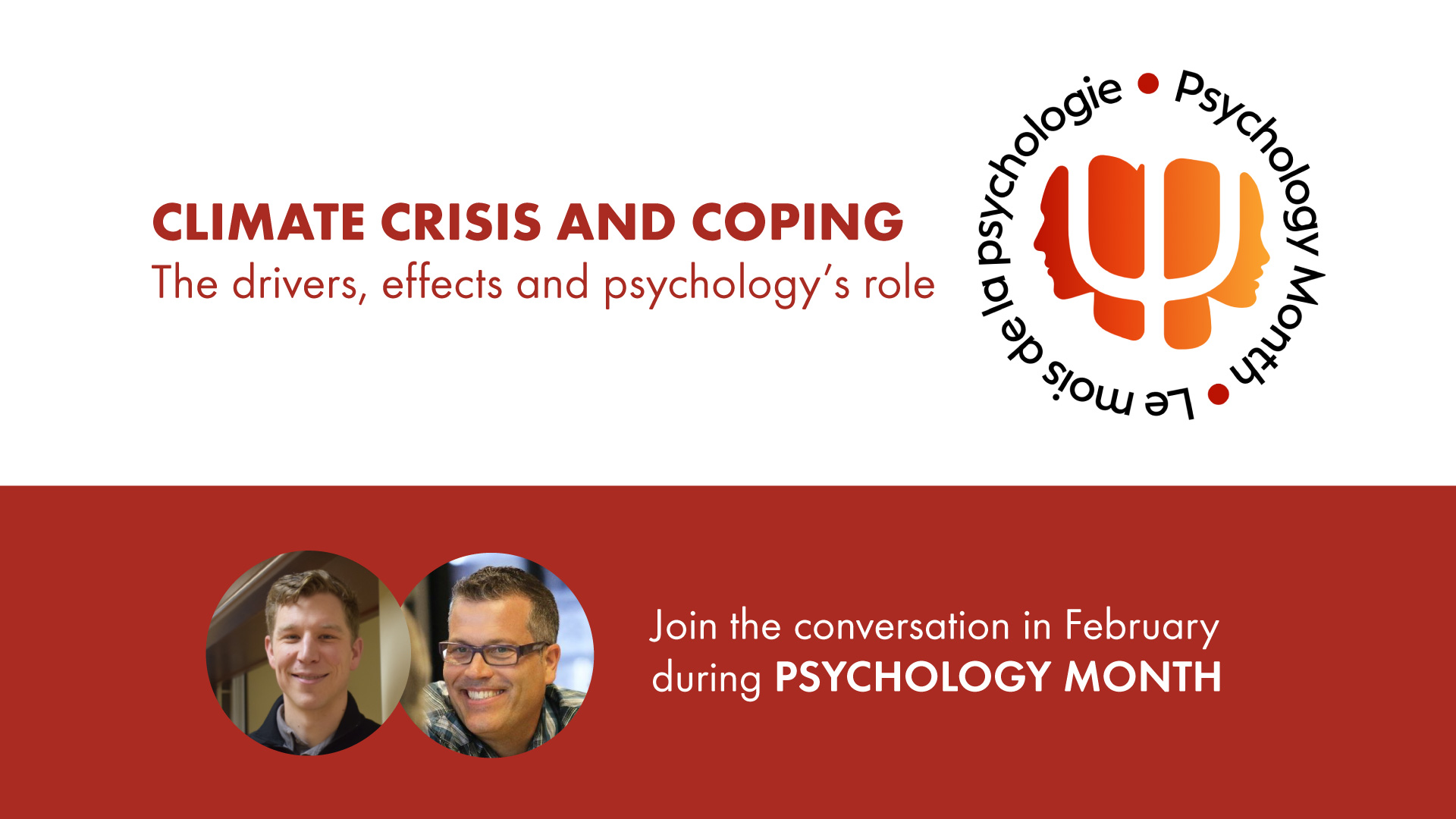
Dr. Todd Kettner and Dr. Kyle Merritt
Nelson, BC was right near some of the most extreme and devastating climate events of 2021. The heat dome and wildfires had a profound effect on the city and the surrounding area. Dr. Todd Kettner and Dr. Kyle Merritt stepped up to do something about it in their own practices and workplaces. Dr. Kettner is a practising psychologist and Dr. Merritt is an emergency room doctor. They are both part of an organization called Doctors and Nurses for Planetary Health, formed in the wake of the 2021 devastation.
In 2021, British Columbia spent late June suffering under a “heat dome”. Temperatures regularly reached 50 degrees Celsius, and by July 1st almost 500 wildfires were burning across the province, including the one that destroyed the town of Lytton. In Nelson, in the Kootenay region, psychologist Dr. Todd Kettner was living with his wife and children in a new housing community with a small ecological footprint. The day after the final home in that community was occupied, a fire sprang up a kilometre away. These eco-friendly buildings were now occupied by anxious homeowners as embers from the nearby fire landed on their brand new roofs.
At the Kootenay Medical Centre in Nelson, Emergency Room department head Dr. Kyle Merritt was seeing patients come in presenting symptoms associated with the wildfire smoke and the heat dome. Acute cardiac events are more common when there is wildfire smoke in the area, and other health issues can become more severe with intense heat. The hospital was not overwhelmed, but there was enough of a concern for Dr. Merritt to take an additional step – and to make headlines doing so.
“I met a patient who had to be admitted because of the heat during the dome. So I made a note, the way all doctors do, indicating what’s going on when you see someone, and in my note I indicated climate change as the underlying cause. The same way you’d say a person was a smoker all their life and now they have lung cancer. You don’t diagnose someone with smoking cigarettes, you diagnose them with lung cancer – but you might write down use of tobacco as the underlying cause.”
This move caused something of a sensation, as newspapers both locally and globally picked up the story of a doctor who had diagnosed a patient with Climate Change. Of course, this was not really what Dr. Merritt had done. One cannot be “diagnosed” with Climate Change, and listing the underlying cause is not the same as the diagnosis. But a clickbait headline remains a powerful force in our society, and the story spread like mint in my garden.
Author’s note - it might be time for us to update our idioms when it comes to the speed with which something spreads. Right now, almost all of those sayings involve either pandemic-type diseases or wildfire. It seems like the wrong phrase to use given the fact that we are still dealing with a global pandemic that has killed millions, and in this case are talking about wildfires that displaced thousands and caused several deaths of their own. And so I humbly suggest “spreads like mint in my garden”. Let’s make it happen!
The heat, the fires, and the devastating problems they caused prompted Dr. Merritt to join some colleagues in creating an organization called Doctors and Nurses for Planetary Health (DNPH). Health care professionals were seeing the direct effects of climate change on the health of the people they served, and thought they could do more. Since then the organization has expanded to include healthcare professionals of all kinds, including Dr. Kettner. They are a lobbying group, an advisory body, and a collective dedicated to making the fight against climate change a central part of their own practices in and around Nelson, B.C.
Nelson is a small city / large town in the Kootenays, with a population of about 10,000 and deep roots in the resource sector. Founded as a mining town 130 years ago, and maintaining strong ties to the forestry industry today, Nelson residents tend to feel a connection to the land around them in the way many small towns with picturesque surroundings do. Combine that with the influx of young, mostly liberal, Americans evading the Vietnam draft in the late sixties and you have the kind of town where establishing a collective like Doctors and Nurses for Planetary Health is a little easier than it might be elsewhere. As Dr. Kettner puts it, Nelson is going on “50 years of hippie-hood”.
Author’s second note – I really wanted to name this piece ’50 years of hippie-hood’ because I love the turn of phrase. I even promised, when I heard it, that I would do so. But I reconsidered at the last moment, because I am reticent to reinforce the harmful stereotype that climate action, and caring about environmental issues, is something ethereal that is solely the domain of aging hippies and young punk musicians. It is, of course, something that affects us all and something that people care about in all walks of life and across all cultural boundaries.
While the members of DNPH are environmental activists of one kind or another, it’s their position as healthcare providers that imbues their message with an authoritative tone. Dr. Kettner says “when we look at who people trust when it comes to the environment, it’s not politicians, or environmental activists or loggers or miners, it’s often healthcare professionals - nurses, or their family doctors.”
We’ve seen, over the past few years, an erosion in trust among the public when it comes to healthcare professionals. People protesting at hospitals, people disrupting life for everyone else over a false belief that the COVID vaccine is somehow responsible for people dying in greater numbers than COVID itself. While those people are the noisiest, they do not represent the majority of Canadians and doctors remain a profession that enjoys overall public trust.
This is especially true in Nelson. Another reason Dr. Merritt and Dr. Kettner and their group are able to produce results is that Nelson really is small. The people you play hockey with on Tuesday nights are the same people you see at the grocery store and the ones who reach out to you for professional help. In Dr. Merritt’s case, that means he has patients who have been under his care their entire lives. For Dr. Kettner, this means his practice and work is integrated into the community he has called home since he started his career as a psychologist nearly 25 years ago. Community connections create strong bonds, the kind that are tough to break. The kind that can weather the storm of online disinformation.
The DNPH group has been very effective in a number of ways (local infrastructure and transportation projects, reducing the footprint of their health system) but perhaps their biggest impact has been in making the connection between planetary health and human health. Recently they worked with the city to increase the delivery of electricity to homes while reducing the amount of fossil fuels in those homes. This not only benefits the environment, it improves the health of the people who are no longer living with emissions within their own walls.
Says Dr. Merritt, “you can’t have human health without a stable climate, healthy air, and healthy water. A lot of people aren’t making that connection all the time, and we try to think about it in everything we do”.
There are a lot of areas in every job where environmentally conscious and sustainable choices can be made. In healthcare-related settings, those choices almost always come with a health benefit as well. In Dr. Merritt’s case, it’s small things like ensuring the batteries used in the hospital are recycled, and bigger things like tackling the problem of anaesthetic gases and inhalers which include hydrofluorocarbons and chlorofluorocarbons that contribute a good deal to climate change.
“One of the advantages I have in working in primary care in a public system is that I get to interact with people from all walks of life, from cradle to grave within my community. It gives me a good opportunity to get to know what they’re going through. And in the emergency department, when events like wildfires or heat happen, it’s the most vulnerable people who are affected. And with mental health too – it’s people who have underlying mental health problems that get acutely exacerbated during these events, and they show up in the ER to compensate. Part of our role is doing advocacy for health, and climate change is now part of that.”
Author’s note number three. Dr. Kettner says that one of the things that keeps climate change top of mind for folks, and gets them to pay attention, is novel news and information. We’ve all heard a lot about polar bears and permafrost and the Great Barrier Reef for some time, and some have tuned out. Something new that might pique the interest of a person when you’re conversing could bring them back into the climate-aware headspace. Something like “hey did you know that anaesthetic gases are a significant contributor to ozone depletion and greenhouse warming?”
For Dr. Kettner, his involvement with organizations like DNPH allows him to share his expertise when it comes to the mental health effects of climate change. His work with the MIR Centre For Peace at Selkirk College has brought an additional lens of intersectionality with the climate crisis. Not only is there a crossover when it comes to health and mental health, there is a significant correlation between climate change and global peace, social justice, and inequality.
“I now feel like I’m focusing on the most important issues – the social determinants of health, greater access to mental health services for greater numbers of people, respect and reconciliation with Indigenous people. It’s where I want to focus a lot of my energy in the last 20 years of my professional career.”
Author’s note number four. While we were discussing Indigenous reconciliation, we spoke about the Haudenosaunee’s Seventh Generation Principle. It’s the philosophy they’ve abided by for hundreds of years, that states you are not only the steward of your environment for yourself and your offspring, but for their offspring and the generation after that and so on. Dr. Merritt shared what I think is an interesting thing to know – either for consideration in Canada or to one day help you win on Jeopardy! There is a new position that was created by the government of Wales in 2015. Sophie Howe completed the first term as Wales’ Future Generations Commissioner in 2023, the role is now held by Derek Walker.
There are several towns in the Kootenay region, and both Dr. Kettner and Dr. Merritt reference a sort of Springfield-Shelbyville type of rivalry between them. But this rivalry quickly disappears when it comes to achieving sustainable practices, and especially in the wake of the recent disastrous climate-related events. Dr. Kettner describes the situation as the wildfires of 2021 were abating.
“Teachers reached out to me from other towns around B.C. looking for resources to help their students with their anxiety when they returned to school after the raging forest fires that had sent them home for a month. That’s the kind of call I didn’t get as a one-on-one private practitioner seeing someone in my office for depression. Expanding our realm of influence to the public as well as to our patients is something I feel very strongly about.”
Stepping outside your immediate job always feels a little bit like a risk. It means doing something that may be outside your comfort zone, and risking a certain amount of venom from those inclined to oppose your initiative who demand you ‘stay in your lane’. It may feel a little less risky in a place like Nelson, B.C., but it still requires a little bit of daring. It’s a testament to the passion both Todd and Kyle feel, and to the immediate necessity of such action, that they have taken that step. And having done so has already made a significant impact.
Their DNPH group has been heavily involved with the city’s new Active Transportation plan, ensuring it is as sustainable and eco-friendly as possible. A number of their doctors and nurses present some of their advancements to neighbouring towns. The group is working with forestry experts on land adjacent to the city to decrease fire risk while increasing access for people to reap the mental health benefits of being able to go for a walk out in the woods. They are now being included in a lot of major decision-making, and their advice is sought on projects that have little to do with healthcare – except for the central thesis of Doctors and Nurses for Planetary Health. That is, that planetary health and human health are inextricably linked.
Author’s final note – while we were speaking, Dr. Kettner reminisced fondly about a series of TV commercials from his youth, which featured the Kokanee glacier in ads for Kokanee beer. He bemoaned the speed at which that glacier is now disappearing, an additional reminder of the devastating effects of climate change right there in their own backyard. In the course of this discussion, we discovered that Kokanee beer remains one of Canada’s best-selling brands to this day. Which surprised me, I didn’t think it was even being brewed any more, at least not since I was in high school and also saw those commercials. I thought that was interesting enough to add to this piece – Kokanee, it seems, has a great deal more staying power than I imagined it did!
Glaciers, sadly, may not have quite so much.
The theme of the 2023 Psychology Month was 'The Future of Psychology’, where we profiled psychology students doing amazing things outside the classroom.

Marjolaine Rivest-Beauregard and Justine Fortin
Montréal psychology students Marjolaine Rivest-Beauregard and Justine Fortin created the podcast Sors de ma tête to combat disinformation and to make science accessible for non-scientists toward the beginning of the COVID-19 pandemic. They joined the CPA podcast Mind Full to discuss their work, which has branched out a little bit as they get ready to launch their third season.
Knowledge translation is a rare skill, not necessarily inherent in most people pursuing a scientific discipline. Being good at knowledge translation means you have to have the knowledge base in your subject matter, but also a communication style that can engage people outside that scientific bubble to want to learn more about that subject. Knowledge translation also requires an ability to take a 10,000-foot view of scientific information. What would regular people like to know? How do I explain this to them while still being as accurate as possible to the source material? What words might I use that would lose my audience, and what seemingly complex terminology and concepts might be grasped intuitively?
One of the best ways for people working in scientific disciplines to become good knowledge translators is – as it is with all skills that can be honed – practice. It was with that in mind that Marjolaine Rivest-Beauregard and Justine Fortin embarked on their passion project – explaining difficult psychological concepts and studies to the general public in an effort to combat online disinformation.
Justine and Marjolaine are about to launch the third season of their French-language podcast Sors De Ma Tête. Montréal psychology students and colleagues, they began this project in 2021 with an eye toward COVID and the disinformation surrounding it. They wanted to collect the data they had on COVID, then sit down with two other people. An expert to talk about the science, and someone with a large public platform to speak directly to people.
Justine is at UQAM, Marjolaine is at McGill, and they met thanks to the supervisor they had in common, Dr. Alain Brunet. Dr. Brunet of course became the first guest on the program (see the CPA’s podcast Mind Full, where the first guest was CEO Dr. Karen Cohen) to discuss the emotional reactions people were having to COVID and to lockdowns. The other guest on their first episode was Instagram content creator Cassandra Bouchard. Cassandra posts funny videos online and speaks about mental health issues – toxic relationships, quitting smoking, eating disorders – that sort of thing.
The process for choosing an online influencer to join Sors de ma tête is probably a more arduous one than the process for choosing the expert. After all, it’s clear who has the expertise in most subject matter – but for people who have a following and discuss mental health issues on their platforms, it’s a little tougher to narrow down who has both the competency and the communication ability to be part of the bridge to the public. Marjolaine says there are a few essential traits each person must have.
- They talk openly and often about mental health
- They are willing to speak openly about their own stories and experiences
- They are available on the day and time the podcast is going to be recorded!
Justine says they also look at the following of the people they invite. She says “we’re not known by people 18-35 years old, so people with large followings are great – our goal is to reach the most people we can”. She also says a lot of this comes down to personality and energy. She tries to find people with similar energy levels who match well in a public discussion like a podcast. Finding the right expert to pair with the right content creator can be a difficult exercise in itself, but can produce some very rewarding content. Says Justine,
“One of my absolute favourite episodes was the last one we did in 2022 [‘Trahison amoureuse avec Michelle Lonergan et Marie Gagné’]. We had so much fun, we were laughing the whole time, talking about betrayals we had lived through, the crushes we had as kids. It’s a bit of a sad subject but the conversation was light and super enjoyable.”
From here, Marjolaine’s main focus is on research. She hopes to get her doctorate degree and pursues research into the mental health effects of disasters and crises, with a focus on prevention. She is imagining a side gig as a crisis management consultant, someone who helps to mobilize the response to a disasters (the earthquake in Turkey, the recent tragedy in Laval) in a scientifically sound and evidence-based way.
Justine’s career path, at least as she sees it from here, is a little different. She is focusing on both research and clinical work, and hopes to one day open a clinic as a neuropsychologist. She really wants to continue working with people who have been diagnosed with cancer, and talks with passion about ‘chemo brain’ and the other issues affecting people in cancer treatment. She want to continue doing research as well, saying “I don’t want to be a professor, as such, but I’d love to keep doing research. Maybe in Marjo’s lab!”
It would be great to think that for years to come, these two partners and collaborators will continue to work together on projects big and small. The third season of Sors de ma tête will launch very soon, and while Justine and Marjolaine are cagey about the content this year, they let slip that climate change will be a big front-and-centre subject in 2023.
It’s unclear right now how long the podcast will last. Will it be a project they keep up until the end of school? The end of COVID? Maybe much longer? Only time will tell. The one thing we can say for certain is that people like Justine and Marjo, the people who have put in the time and the practice, will be the knowledge translators of the future. The people who can bridge the gap between scientists and the public, who can push governments to make decisions based on hard data and otherwise unknown studies. With the Sors de ma tête podcast, they’ve already spent two years doing just that.
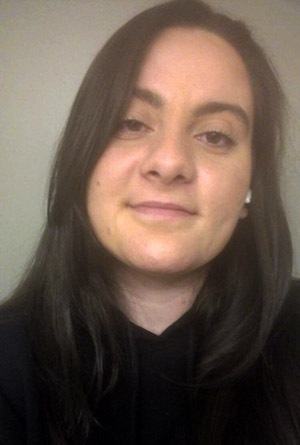
Nardeen Yalda
Our podcast Mind Full spoke with Nardeen Yalda and her professor at the University of Western Ontario, Dr. Leora Swartzman. Dr. Swartzman has created a program to pair students with community organizations to implement change on the ground. That program led Nardeen to working with organizations helping the homeless.

Nancy Tangon
Nancy Tangon is a CPA student representative at the University of Alberta. Her South Sudanese family has played an enormous influence in her life, including her decision to pursue a career in psychology.
With her friend Priscilla Ojomu, Nancy created the online forum Canada Confesses, where they collect anonymous testimonials from people that shine a light on the racism that exists under the surface in Canadian society. They spoke with the CPA podcast Mind Full about their project. https://soundcloud.com/user-389503679/mindful-9-canada-confesses-01162023-mixdown-1/s-Y9IhuOvB5gY
“We did a three-hour boot camp over Zoom about how to create a presentation and become a better public speaker.”
The first lesson, when it comes to creating a presentation, is not to make that presentation three hours long. A boot camp though? That can be as long as you like. In this case, Nancy Tangon and her CPA Student Representative colleagues at the University of Alberta chose the boot-camp format – and the Zoom format – out of necessity. Because of the pandemic, many things have become more difficult. Finding ways to connect with people virtually has resulted in a fair amount of chaos – and a ton of creativity as well!
Such was the case when Nancy and her fellow student Priscilla Ojomu were looking to create a project. Pre-pandemic, they met in On-Site Placement’s Diversity Awareness & Skill Building Youth Program on campus – in-person, if you can remember when we used to do such things! Through that program they learned a lot about issues affecting diversity in a number of settings, and were tasked with creating a project at the end of the course. Unfortunately, by that time COVID-19 had arrived and the project would have to take a virtual form.
Over the course of the pandemic awareness of many issues has increased – particularly those dealing with discrimination and inequality. In Canada, many of us felt isolated from those issues – like they were a uniquely American thing, or that we were somehow better off. As Priscilla says, “a lot of Canadians aren’t aware that these issues exist in huge numbers within Canada”. So how could she and Nancy help to increase that awareness?
Their answer was Canada Confesses. A project that started out small but has since taken on a much larger audience and significance. The concept was simple. There’s a disconnect between what Nancy and Priscilla learned in their program, as well as their own lived experiences, and what fellow Canadians understood to be the situation. So they created a place where marginalized people could tell their stories anonymously, access resources to help them, and help other Canadians understand the reality of what’s happening in our country. It’s not the anonymous poster who is confessing, although they call the posts ‘confessions’ – it’s Canada itself that is confessing to the ongoing harms and structural marginalization of many communities. You can hear all about Canada Confesses on the CPA podcast Mind Full.
As the co-creator of Canada Confesses, Nancy has not yet submitted a ‘confession’ of her own – she’s very busy! In addition to running a suddenly successful online platform which continues to grow by leaps and bounds, she is also a fourth-year psychology major and biological sciences minor at the University of Alberta. She maintains a strong presence in the CPA, with two years as a Student Representative on the campus and a significant role on the CPA’s human rights and social justice committee as one of the leaders of the subgroup for ableism and disabilities.
“I was a little bit intimidated to [join the Human Rights and Social Justice committee]. Everybody who’s a part of it is either a grad student or a professor, and at first I felt a bit like the undergrad student tagging along. But it’s been really great! I got to learn a lot from Dr. Ada Sinacore and Dr. Laurie Ford, who’s also a part of our subcommittee.”
Nancy, undergrad or not, brings a lot of experience to the CPA board committee – and to her life, her studies, and her activities. Much of this stems from her family and her community, with whom she is very close. Her family on her father’s side is from the Bari tribe in South Sudan, a place Nancy has been able to visit only once. She keeps up contact and correspondence with her family who remain there, and also maintains strong ties to the South Sudanese community in Edmonton.
“The South Sudanese community in Edmonton is fairly large, I know a lot of people here – especially compared to when my family used to live in Halifax. I even see some of the community members in my classes, which is really cool. When I decided to go to university, I wanted to do something amazing in my community. In the South Sudanese community, psychology is very interesting to a lot of people.”
Her family, and her community, were some of the factors that shaped Nancy’s desire to go into psychology in the first place – and even had a guiding hand in deciding on some of the courses she took once she got there. Nancy’s family loves to talk about their dreams. She says, “when I wake up I have to talk about my dreams. I talk about it to at least five people before I start my day! I have to analyze it just a little bit, I have to get someone else’s interpretation, and I absolutely love dream analysis.” Of course, she felt she just had to take that particular psychology course before she graduated, and now speaks excitedly about the ‘subjective’ and ‘objective’ levels of dream analysis.
It didn’t take long for Nancy to determine that psychology was the right program for her – or in which direction she wanted to go with it.
“I was inspired by my very first professor on my very first day. Her name is Dr. Peggy St-Jacques. She was pretty new to the university at the time, and she was doing research in memory. I said, I don’t know exactly what I want to research, but that is certainly what I want to do as a lifelong career.”
Nancy is now well on her way, working as a research assistant and planning for a future where research is part of her every day. She’s particularly drawn to developmental psychology, and hopes to work with pre-school children between the ages of three and five. It will be a long road, but Nancy has the determination, the ingenuity and the curiosity to make it a successful one. And when she does, it will be another in a long line of successes that started right there in Edmonton.
“When I started working on Canada Confesses, it was almost impossible to see where we would end up. I’ve had the chance to meet so many people working in the same field, and to interact with other projects online. Now, I have a best friend for life, an amazing team, and so many things to anticipate for the future.”
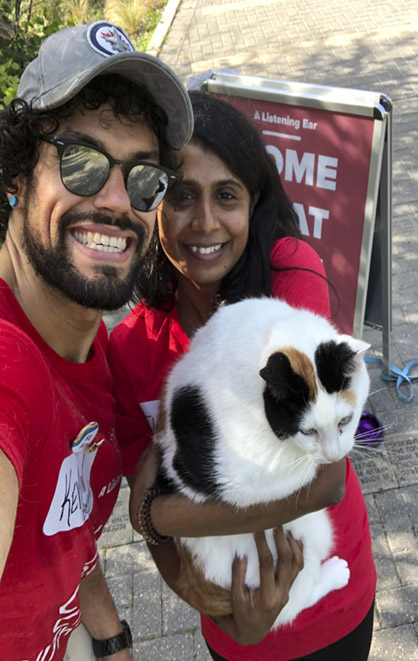
Kevin Prada
Kevin Prada is a student at the University of Manitoba, where his research focuses on the difficulties faced by the French-speaking 2SLGBTQ+ community in Manitoba.
Kevin and his colleagues, including Thilini Dissanayake, started an initiative in their area called A Listening Ear. They joined the CPA podcast Mind Full to explain the project. https://soundcloud.com/user-389503679/psychology-month-kevin-prada-and-thilini-dissanayake-lend-a-listening-ear/s-Ze0rXFQvsaN
“French is a pretty binary language. It’s something you maybe don’t think about, but how do you become gender-neutral in a language that depends so heavily on a gender-binary?”
We hear a lot about ‘intersectionality’ these days, referring to the way social categorizations interplay with one another. An individual, or a group, can be connected to others based on their race, their sexuality, their gender, or their socio-economic status, among myriad further distinct, yet inextricable identities. As such, each person’s identity is unique, but each connects, intersects, and overlaps with others, leading to unique forms of oppression or stigmatization for some, privilege for others, or a mix of both for others still.
Such is the case for all of us, but few of us are as keenly self-aware of such intersectionality as is Kevin Prada – both personally and in his research. Kevin is a student in the psychology honours program at the University of Manitoba. A queer Franco-Manitoban, Kevin has long seen the gaps in the Manitoba mental health system for both the 2SLGBTQ+ community and the French-speaking community. This led him to collaborate on his first major research project[i], one that earned him the Ken Bowers Student Research Award from the CPA’s Clinical Psychology Section.
His research focused on both of those identities – 2SLGBTQ+ communities and official language minority communities in Manitoba. In the first study of its kind in Western Canada, Kevin and his colleagues launched an exploratory analysis into the needs of doubly-minoritized French-speaking 2SLGBTQ+ Manitobans. Initiated by the Collectif LGBTQ du Manitoba, whose first mandate was to collect data about the needs of this very specific community, this community-based project was conducted by researchers at Université de Saint-Boniface.
“Before we start doing anything for a community we’d better understand where they’re at, what their needs are, and what their experiences are in terms of discrimination and stigmatization. We know that minority Francophone populations in Manitoba have lower indicators of health than the general population. We know similar trends have been observed across the board with queer populations in Canada and abroad. When the two identities are put together, it stands to reason that those problems probably compound.”
This has always been planned as a multi-tiered research project. Kevin and his colleagues have completed Phase One, surveying 80 respondents over the age of 18. Phases Two and Three have already begun, focusing on school and family contexts, to determine both the needs of queer and questioning Francophone minors in school settings, and also to examine the transition to parenthood for queer families in an official language minority context. This has led to many opportunities for Kevin to speak at professional development days for Francophone and French-immersion schools and school districts, where he says,
“Many staff are ready and willing, and want to build proactively queer-friendly classrooms, but don’t always know where to start. Invaluable questions and discussions have ensued, which show me how important it is to discus these sometimes-complex issues with folks in an open and non-threatening way, especially with an eye toward the potential implications within school environments.”
When intersectionality is approached in the right way, there is often a ripple effect – sometimes one that is by design, sometimes an unintended one that comes as a surprise. For Kevin, these ripple effects have been overwhelmingly positive, affirming, and a reinforcement of the direction he wants his career to take.
“We now have folks in Alberta and elsewhere who are starting with our research project to create their own in their own province. So the impact has been even greater than we’d expected. And for myself, as a queer Franco-Manitoban student and researcher, to be able to have done this for my community was really life-giving. We also really put an emphasis on ensuring that this would be by the community, for the community, and from the community. Not only were community members involved at every step (myself included), but they were also the first to hear what we found. We conducted two community engagement meetings where only people from our community were invited. Following one of these, one participant emotionally shared that ‘this is what we’ve known and been saying for decades – now our experience is reflected in that data’. It was kind of a cathartic experience for a lot of people.”
Kevin’s big goal, overall, is to work with minority communities. To ‘hear the unheard and see the unseen’, as he puts it. This feels like a personal mantra to him, the kind of thing he says to himself before starting a project or taking the next step. The kind of thing that he will one day have embroidered and framed and placed on the wall across from his desk as a constant reminder of why he’s doing what he does.
“Using intersectionality as one of the major frameworks for this study was really important. Understanding that a French-speaking queer person cannot be understood by just looking at their Francophone identity, or just by looking at their sexual or gender diversity. It’s ‘both-and’. Those two identities AND their age, AND their socioeconomic status, AND their health, whether they are a visible minority, the list goes on. In fact, we found there was a fairly large group of respondents who felt welcome neither by the French-speaking community because of their sexual orientation or gender identity, OR by the 2SLGBTQ+ community in Manitoba because they’re French-speaking.”
Of course, there are many language minorities in Manitoba besides French. In a project completely unrelated to this research, Kevin and his colleagues Saeid Maghsoudi, Thilini Dissanayake, and Aman Mir started an initiative called ‘A Listening Ear’, where they set up booths around Winnipeg to converse with complete strangers in NINE different languages – enticing them to stop for a chat by displaying, for example, a Sri Lankan flag. The effort was a tremendous success, and you can hear more about it on the CPA’s podcast Mind Full.
This is the kind of outreach Kevin is making his brand. He felt first-hand, from a young age, how important reaching out could be and how lonely life could be when no one extends that hand. This is one of the reasons he chose psychology as a career path.
“I grew up in a home that had fairly significant psychological obstacles, especially with my mother. I saw a failure in the system when I was just this little boy who nobody bothered to ask ‘hey, how are you doing?’ In my household, there were multiple suicide attempts, manic episodes, and through it all nobody took a step back and said, ‘oh my God there’s an 8-year-old boy here – is HE okay?’ In retrospect, I saw all this and figured if I went through it I’m sure I’m not the only one. So my first desire to get into psychology was to kind of make sure that the collateral impact of mental health issues is top of mind, especially in families who might be struggling with issues of this nature.”
As he grew up, he saw more and more failures in that system – for 2SLGBTQ+ youth, for Francophone communities, and especially for those like him who lived at the intersection of the two.
“I never had a chance to speak to a queer person growing up, never mind a queer psychologist. The first time I ever met a queer counselor was a huge experience for me, and I only got to access this support when I was 27. So to be able to do something for a marginalized community, especially within the psych discipline which has historically not been super-friendly with queer folk, is exciting.”
Kevin’s ultimate goal is clinical work, where he can meet people, get to know them, and offer culturally competent clinical support. He does not know of any practicing French-speaking clinical psychologists in Manitoba, has not encountered any openly practicing queer clinical psychologists in his province, and highlights the extreme difficulties in the province just obtaining information on queer physical and sexual health in French. There is definitely a lack of representation and, as his research demonstrates, a need for more culturally competent services in Kevin’s immediate area. He wants to be one of the first to provide those services.
“With the right tools, mindset, and adequate understanding of trauma and minority stress, anyone can be a good clinical psychologist with a queer person. But it brings it to another level when you’re actually speaking from a place of personal experience.”
The French language, just by the nature of the language itself, makes some communication difficult for the 2SLGBTQ+ community. When even a table, or a propellor plane, or a block of cheese are assigned either a masculine or a feminine gender, it can create a bigger hill to climb for those people who identify as neither. In English, we use ‘they’ as a pronoun that can be understood by everyone. In French, they’ve proposed brand new pronouns, with ‘iel / iels’ being the most commonly used. However, to this day those new words have still not been officially accepted by the Académie Française.
Understanding our unique identity through an intersectional lens can be an empowering or disenfranchising, oppressive or uplifting, confusing or clarifying journey. In many cases, it is all of these things. Navigating those waters is no easy task, especially for those whose intersecting identities are both marginalized and in conflict with one another. Kevin’s personal experience, his direct involvement in affected communities, and his mantra - ‘hear the unheard and see the unseen’ – make him well-suited, and well-equipped, to be on the vanguard of the change Manitoba so desperately needs.
[i] Living in a liminal space: Experiences of 2SLGBTQ + official language minority Canadians during the COVID-19 pandemic
Psychology Month Profile: Dr. Charlene Senn and Dr. Lorraine Radtke, Section on Women And Psychology
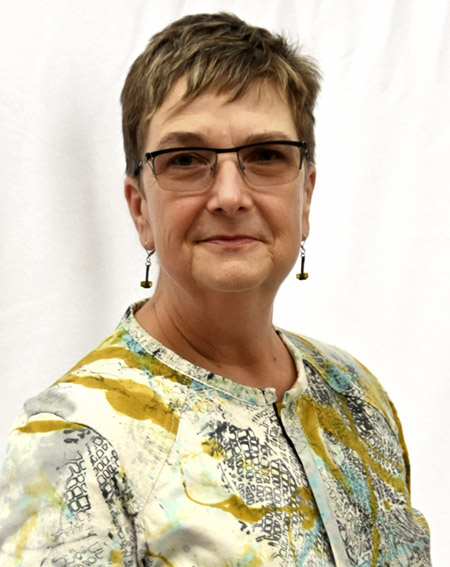
Dr. Charlene Senn
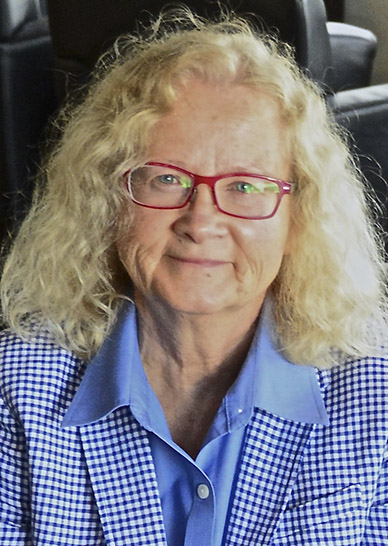
Dr. Lorraine Radtke
Dr. Charlene Senn, and Dr. Lorraine Radtke, Section on Women And Psychology
The CPA’s Section for Women And Psychology (SWAP) creates a community of researchers, teachers, and practitioners interested in the psychology of women and feminist psychology. Today’s Psychology Month feature talks to Dr. Lorraine Radtke and Dr. Charlene Senn about the work they’re doing in this space.
SWAP (Section for Women and Psychology)
The year is 1976. Martha Lear has just coined the term ‘second wave feminism’ in New York Magazine, and that movement is in full swing. In the United States, Title IX has just passed, prohibiting sex-based discrimination at any school that receives federal funding. In Sweden, Group 8 has just been founded, advocating for equal pay, kindergarten expansion, and a 6-hour work day. And in Canada, the CPA is hosting their annual convention at a hotel in Montreal.
There is a different hotel across the street from the CPA convention. While that hotel is unaffiliated with the one where the convention is taking place, the two are connected by an underground tunnel beneath the street. While the convention is in full swing, many women are stealing away, passing quietly through that tunnel to have a clandestine meeting of their own just across the street. These graduate students and untenured feminist researchers are there to present papers - to one another. These papers are on topics relevant to the psychology of women and girls, and they have one more thing in common. When they were submitted to the CPA for inclusion in the convention, they had all been summarily rejected.
This off-site, convention-adjacent meeting became known as the Underground Symposium. Not so much because it was clandestine – there was in fact a fair amount of media attention – but more likely because it was accessed through that underground tunnel between the two hotels. The event was a huge success, where ideas were flowing and the room was overflowing. It was that success that led, four years later, to the designation of an “interest group” known as “on Women And Psychology”. This later became the Section for Women and Psychology, or SWAP – and that is where we are today.
Members of SWAP need not identify themselves as feminist scholars, but many still do. Section chair Dr. Lorraine Radtke certainly maintains the tradition of that origin story. Dr. Radtke is a professor emerita in the department of psychology at the University of Calgary, where she worked for close to 40 years. She says,
“I identify as a feminist psychologist. It’s because I put women and girls first, and I take a critical perspective when it comes to the status quo. I’m focused on social change and improving the lives of women and girls.”
Feminist psychology has changed over the years. One of the biggest ways it has changed is that research and clinical practice is now conducted in an intersectional framework. This means being open to both the commonalities and the differences among women and girls. It also means being attuned to how their social circumstances such as gender, ethnicity, sexuality, and socioeconomic situation affect their experiences. Dr. Charlene Senn is a professor at the University of Windsor affiliated with the Applied Social Psychology program, and she says her research, and that of her colleagues is always conscious of that intersectional framework. She also says that the study of women and psychology is a broader topic than many may think.
“I am a feminist social psychologist – the distinction I feel is important because psychology is seen as being individual, when in fact it’s also concerned with environmental, cultural, and social forces. I teach a graduate course on feminist psychology and the psychology of women and gender. We look at the tremendous work being done by feminist psychologists in so many different fields, where psychology is being transformed by the work that’s happening in those areas.”
SWAP was not limited from the beginning to feminist psychologists, and today has a membership that involves researchers across all fields, students from various departments across Canada, and clinical psychologists, some of whom work primarily with women and girls. Says Dr. Senn,
“Parallel to feminist work, or work related to women and girls, there is feminist research on a variety of topics - masculinities, for example, and a thread of research also looking at the status of women in psychology, looking at things like inequalities in the field. So there is a real variety.”
Dr. Radtke agrees, and says that this kind of wide variety of work from the lens of women and girls’ psychology forms a big part of SWAP’s history.
“In the early years, members of SWAP were very active in the CPA and other professional associations in Canada, pressing for gender equality and for women to be involved. They advocated for changes to ethical standards that would incorporate a sensitivity toward the concerns of women and girls. It has always had an activist side, and to this day SWAP has a Status Of Women Committee to ensure that all genders and all sexes have equality within the discipline and that those standards continue to be upheld.”
It’s because of the broad approach and diverse membership of both the SWAP section and the Status of Women Committee that they were able to collaborate with the Indigenous Peoples’ Psychology section, the Student section, and the Rural and Northern Psychology section to organize a virtual panel at the 2021 CPA Convention to address the findings of the final report of the National Inquiry on Missing and Murdered Indigenous Women and Girls, and the implications for psychology in Canada. Says Dr. Radtke,
“It was a big collaboration, and very successful. It was decided that they would follow up that panel with a report not only on the panel itself but also with some recommendations. It’s quite an undertaking for a relatively small committee, and they’ll be focused on that in the coming year.” Editor note – as this will be published in February, check back to see if the report has been sent out by then, include an update if it has.
The panel discussion on Missing and Murdered Indigenous Women was a central event at CPA 2021, no one had to sneak across the street to have their voices heard. Dr. Radtke points out that progress has been made both in the discipline and in the organization itself.
“Obviously CPA has become more egalitarian. We’ve seen more women presidents of CPA, we see more women serving on the Board of Directors than was historically the case. Although these problems are less significant in current times, there are still a few issues that require attention, for example, the nomination of more distinguished women for CPA awards.”
These issues will never disappear altogether, and there is a lot more work to do for the members of SWAP and psychologists who work in this space. During the pandemic, the jobs of husbands have taken precedence over the jobs of wives – even when the wife is an academic, even when she out-earns her husband – as childcare is still seen too often from a traditionally patriarchal lens. Instances of violence against women continue to rise as too many are trapped at home with their abuser. Dr. Senn’s specialty is campus sexual violence prevention, and she says that when campuses reopen the rates of sexual assault will likely go right back to pre-pandemic levels. In fact, they have not declined since the 1980s.
The field has come a long way since the Underground Symposium, but getting their work acknowledged remains a work in progress. Dr. Senn says, “we still have to push to have the knowledge we have from the incredible research being done by feminist psychologists incorporated more into the mainstream.” She pauses and exchanges a knowing glance with Dr. Radtke. “Including intro To Psych textbooks.”
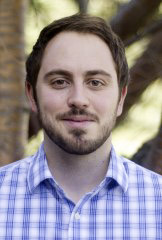
Dr. Joshua Bourdage
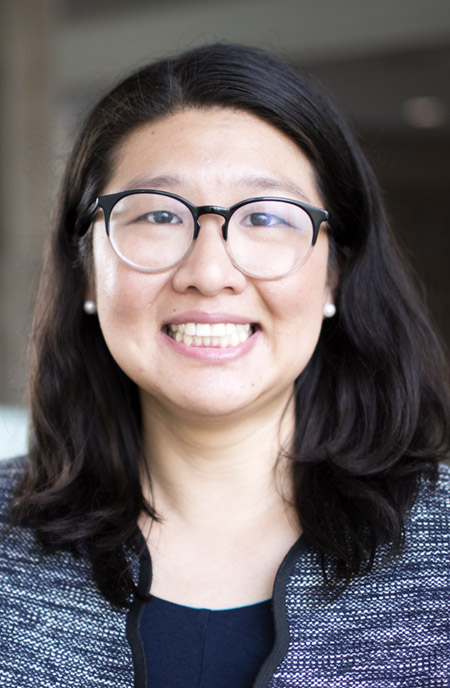
Dr. Winny Shen
Dr. Joshua Bourdage and Dr. Winny Shen, Industrial Organizational Psychology
Industrial/Organizational psychology is the study of psychology in the workplace. We spoke to Dr. Joshua Bourdage and Dr. Winny Shen about workplace culture, organizational structure, and the vast variety of work I/O psychologists do.
Industrial Organizational Psychology
When I was in high school, I went for a job interview after responding to an ad I had seen in the newspaper. I was hired on the spot and immediately onboarded, working my first shift an hour later without fully understanding what the job entailed. The very first thing they had me do was stand in a circle with my new co-workers, arms around each others’ shoulders, while they turned off all the lights and played ‘Eye of the Tiger’ in its entirety. Then, presumably adequately motivated, we were sent off – to sell Meat Of The Month subscriptions door-to-door. I learned that this was the process every single day. ‘Eye of the Tiger’. Every single day. I walked home midway through that first shift and never returned.
It was the 90s – you can tell, perhaps, because job ads still came in the newspaper, and people still thought ‘Eye of the Tiger’ was the ultimate pump-up song because Jurassic 5 had yet to release ‘Jayou’. It was also before Industrial/Organizational (I/O) psychology became more formalized in Canada. Dr. Joshua Bourdage is an associate professor at the University of Calgary, and the current chair of the Canadian Society for Industrial and Organizational Psychology (CSIOP), the CPA Section for Industrial/Organizational psychology. The discipline dates back many decades, the section was founded in the mid-70s, and Dr. Bourdage says the discipline really took hold in Canada in the early-90s.
“A lot of it traces back to the idea of scientific management and Frederick Taylor [an American mechanical engineer who was known for improving industrial efficiency around the turn of the 20th century] and how we can optimize people and tasks to be done in the most efficient way possible. So a lot of our early work was around selection, assessment, sorting, and increasing productivity. Then we adapted, alongside the rest of psychology, with things like the human relations movement – the idea that people have feelings and emotions and internal states. We then started to think about things like whether happy workers are productive workers, or what are the things that actually motivate people beyond just carrot-and-stick – intrinsic and extrinsic motivations, and that sort of thing. That’s where we branch more into the studies of leadership, and change, and politics and so on.”
Dr. Winny Shen is an I/O psychologist working at York University in the Schulich School of Business. She is the Past Chair of CSIOP, and her studies deal with diversity and inclusion, leadership, and worker well-being. She points to the first two World Wars (to date, the only two World Wars…) as the moment when I/O psychology was really created as a formal discipline.
“The desire to apply psychology to solve practical problems has been around from the very beginning. One of the catalysts for the growth of I/O psychology as a discipline was the two World Wars. The military and also the government realized they had a massive number of people with a ton of jobs that needed filling, and they didn’t actually know what was the best way to allocate people to the right job, to make sure we’re making the most of the people that are in these important military positions. That became the basis of a lot of I/O psychology – assessments, intelligence testing, personality assessment, and job analysis. After the wars, there was a recognition that a lot of these processes and skills could be applied to private organizations and industries, and there were all these people who had been trained in doing it as part of the war effort, so it grew from there.”
Put very simply, I/O psychology is the study of psychology in the workplace. Put a little less simply, it’s the application of psychological principles to study the world of work – workers in the context of teams, in the context of the organization as a whole. It’s a field interested in work at multiple levels and in multiple perspectives. This means that I/O has a vey broad range of perspectives and specialities. Dr. Shen explains,
“You can find us in a wide array of places. Some folks are academics like me and Josh. We do a lot of the research in terms of understanding workers’ experiences and organizational phenomena. You can also find I/O psychologists in a lot of applied settings. We’re typically trained as scientist-practitioners so we do both. We might work for an organization – for example, making sure their hiring processes are scientifically supported, or maybe helping with their training in terms of making sure their employees have the knowledge and skills required to succeed in their jobs. It could also involve issues of motivation, or climate – some of those softer-side things that make sure workers have positive experiences on the job and that they have a good relationship with their co-workers and the organization as a whole. We can also be coaches. We can work in analytics. Some work in very specific fields – for example, there are a large number of I/O psychologists working in health care right now. A lot of us work in collaboration with educational psychologists around issues like credentialling and licensure. Once you know where to look, you can find us in a ton of places!”
A previous Chair of CSIOP is one of the I/O psychologists contributing to understanding workplace issues in health care, where collaboration with many other psychological disciplines is very much a part of the job description. Dr. Bourdage explains a little more.
“One of our previous chairs, Dr. Tom O’Neill, does work with teams in a healthcare settings. Specifically, he works with resuscitation teams to maximize their performance. A human factors person, like an environmental psychologist, might look at the layout of the room and the equipment in it to see how it influences the work, whether some of it impedes people. Whereas Tom is looking more at communication, conflict, those sorts of things.”
When I first started working in radio, my job was as a producer for a show called Sentimental Journey on the local Oldies station. The host of the show would record his show on a reel-to-reel machine, then provide a list of the songs he had mentioned in the show. Some were on CD, some on the computer, and some on vinyl. I would have to make sure that there were 60 minutes of music and talk in any given hour – but the host was less concerned. Sometimes an ‘hour’ contained 35 minutes worth of music and talk, other times 85 minutes. I am likely the last person in radio – at least in Ottawa – who actually played music from a turntable on the air, and who had to splice reel-to-reel with a razor blade and scotch tape. I tried to teach the host how to use the computerized ‘voice tracking’ software, which involved booting up the program, then pressing the space bar to record and pressing it again to stop recording. I could really have used an I/O psychologist to help me convince him that pressing a space bar did not make one a ‘computer geek’, and that technology sometimes helps and makes things easier!
Technology, and its rapid advancement in the workplace, has been a big topic of discussion for I/O psychologists over the past ten plus years, but Dr. Bourdage says that it is just one small part of the work and research being done into workplace culture and enhancement.
“It’s extremely broad – the types of work that were presented even just last year at the CPA convention were very diverse. We had presentations about personnel selection – how do we enhance hiring and recruit the right people to apply for a job? How do personality and different situational elements like leadership impact employee attitudes and behaviours? We also covered more current and urgent topics like gender and diversity in the workplace, and the use of technology in the workplace. And there are a lot of people rising to the challenge of understanding how work and the practices we engage in are changing because of COVID. How do we still foster good team dynamics through the move to remote work? How do people cope with remote work productively? And of course we have a lot of people interested in mental health. We have members who work with healthcare workers to get a better understanding of burnout and stress, and their impact in the workplace. How can we intervene to help workers and organizations in that realm?”
When I was in college, I had my first taste of virtual work. I got hired by a promotional company, and after the first interview I never again saw a single one of my co-workers. I would get a phone call telling me where the ‘product’ was. (I always joked with the voice on the phone about the dangers of talking about ‘product’ on a cell phone, but I don’t think he ever understood what I was getting at.) I would then show up to the address provided, where there was a big truck. I’d get in, see what the ‘product’ was, and then spend the day offering free samples of the new Dempster’s bread at a local grocery store, or Dasani water at a gym, or Miller Genuine Draft at a bar. Okay, this is not ‘virtual work’ as such – just work without any co-workers!
There has got to be a study in motivation around a setup like this. There was absolutely no way to know for sure how well I had done my job – or, in many cases, whether I had done it at all! I also had no contact with co-workers, so I had no frame of reference to know whether they were doing their jobs to the absolute best of their abilities, or whether they were taking that extra case of Corn Nuts they hadn’t distributed home at the end of the day to share with a bunch of equally poor and starving college roommates. As with all virtual work, there is probably some good and some bad, as Dr. Shen maintains.
“This large-scale move to virtual work is complicated! There might be some good things, like a more objective evaluation of employees’ work as you see the work sort of divorced from the person doing it. But there are also negatives, like managers feeling like they don’t have control anymore because they can’t physically see people working. Additionally, the lines between what is work and what is private are issues that companies are trying to manage because it hasn’t really been as big of an issue in the past.”
Dr. Bourdage says that while this move to virtual work and the embrace of new technologies has been a major shift – both in the workforce and for psychologists – the expertise of I/O psychologists provided the groundwork for an easier transition to this new reality.
“We had already seen a move toward new technology, whether that’s machine learning or AI, in a decision-making capacity or hiring or moving toward more virtual work. In some ways COVID has just accelerated certain things, the same way it has accelerated or highlighted certain inequities – like who is more likely to be bearing the brunt of childcare responsibilities, for example. A lot of the work and research we’ve been doing for decades does inform some of these things – we’re lucky to have expertise on things like mental health and stigma in the workplace, workplace safety, selection, hiring, and recruitment. So we already have this expertise and it’s just sort of shifted to this new application, I’d say.”
When it comes to equity, diversity, and inclusion, one of Dr. Shen’s specialties, she says that the pandemic has been something of a double-edged sword when it comes to making workplaces more welcoming and comfortable.
“I think that on one hand this virtual working capacity has been something that disability advocates, for example, have pushed for a long time as it would make the workplace much more inclusive and serve as a kind of accommodation that would be helpful for a wide range of disabilities. But it’s one that many companies have felt like was not a “reasonable” accommodation for many of the jobs in their repertoire. But now the pandemic has highlighted how some of our assumptions about how work gets done or what kind of work can be done virtually – often quite effectively – have been too conservative. Companies and organizations might have previously been too reticent to try some of these things.
The other side of the coin is that we have to be a little careful in terms of the balance between what is an employee responsibility and an employer responsibility. That becomes a little more of a grey area. Things like if I need very expensive internet in order to do my job, who pays for that? Or you get injured at home doing something related to your work – is that a workplace injury? There’s a little bit of research that suggests we’re not as careful in our email communication as we would be saying things face-to-face, and that can contribute to feelings of being bullied.
There are a lot of issues we have to work through. There is definitely the opportunity to reshape work more equitably, but there are also a lot of potential issues that are more invisible in some ways. Sometimes people might not feel comfortable sharing some of those aspects of their virtual or personal space. Companies have to be really diligent in not assuming that all employees have the same kind of resources or the same kind of setup.”
Dr. Shen did a study with colleagues at the beginning of the pandemic into the experiences of Asian-Americans and Asian-Canadians in the workplace, as xenophobic sentiment started to show itself. She is currently doing research that looks at the division of labour in households during the pandemic, and how that impacts workplace attitudes. In particular, women’s tendencies to feel like they have to downshift their careers in order to accommodate changes in household responsibilities. More generally, because of social movements like Black Lives Matter and Every Child Matters, I/O psychologists have a renewed interest in studying the experiences of Black and Indigenous workers. Dr. Shen says it is very important that evidence-based practices remain at the fore when considering issues of diversity and inclusion in the workplace.
“I’m involved in a big consortium where we’re trying to help employers develop toolkits for both employers and employees to try to help with disability disclosure conversations during the hiring process. There are a lot of employers who want to be involved, but don’t necessarily know how to proceed if an employee or an applicant discloses a disability. There is a wide range of issues that stem from the notion of ‘we want to create an inclusive atmosphere, what does that mean, and what does that look like?’
As we become more aware, there are a lot of people who want to make changes. But a lot of these things can be misinterpreted and lead to cascading effects. As an example, there’s a growing body of research that shows some of the policies around hiring and employment equity can be interpreted by people as ‘the standards are different’ or ‘they’re only here because of X’, and that can have pretty insidious and negative consequences for people who are perceived to have benefited from these policies in the workplace. It’s very important, but very complex.
There’s often a tendency to focus on representation rather than inclusion. That can create issues because the focus is on bringing people in, without realizing that the environment into which you’re bringing people is not very supportive. This can ultimately lead to retention issues where there’s this revolving door of under-represented groups.”
The importance of basing your policies and procedures on quality science is echoed by Dr. Bourdage.
“One of the things we espouse is evidence-based practice. I think there’s this notion that a lot of these things are common sense, but I think there’s a lot of knowledge and training and expertise that is required to understand not only equity, diversity, and inclusion but also organizational change, organizational culture, how reward systems impact people, or organizational politics. These are all areas that I/O psychologists dig into with different lenses to understand these things and inform evidence-based practice.
Basically everything from the time you decide to apply for a job, to what questions you’re getting asked in an interview, to how you get socialized and onboarded at the new office, your day-to-day interactions are all guided by and investigated by I/O psychologists. It will tangibly affect almost everyone, every single day, for a huge chunk of their lives.”
When I was in university, I answered a job ad looking for lifeguards to work at Ottawa apartment pools throughout the summer. By the time my job interview was over, I had been hired not only as a lifeguard but as middle management at a security company, working alarm dispatch and supervising security guards across the city. It was a company that took on every contract that it possibly could – I was also answering employee complaint lines for a variety of Canadian clothing stores and keeping records for building maintenance companies…among dozens of other things. Lifeguarding paid minimum wage, middle management in the control centre paid $0.15/hour more. The job ad at the time, 1999 or so, said only ‘lifeguard’ and included a phone number. Things are a little different now, says Dr. Shen.
“Every time you go online and look at a job ad, it has probably been created through some sort of job analysis that I/O psychologists do to understand what is at the heart of a job. The basis we use for how to match a person to a job is to first understand exactly what that job is and what it entails.
The annual performance appraisal that maybe you hate or maybe you love – there’s a lot of science there. Maybe your workplace has a 360-degree feedback where you rate your boss and your co-workers. A lot of I/O psychologists were involved in that, and in popularizing it.”
When I worked in radio, I had an annual performance review where a series of bosses would sit down with me to set goals for the following year and review my progress toward the previous year’s goals. It would invariably go something like this – ‘you have exceeded expectations on four of your five goals, and met the fifth. Great work! I’m going to give you 4/5 across the board’. Why was I getting 4/5 when I had exceeded the goal? And also when I had met the goal? It turns out there was a company policy that said if an employee got a 5/5 on the report turned in to head office, they had to be given a raise. Dr. Bourdage says, “I/O can provide the tools, but whether people use them well or not is kind of on them! The job of I/O psychologists is to work with organizations to help guide them in adopting these tools and best practices”
The Oldies radio station I worked at no longer exists, the security company no longer does security or lifeguarding, and the promotion company is defunct. I am not certain about the door-to-door meat subscription company, as I no longer remember their name. I am guessing they too no longer exist. I wonder though, were they still around, how they’d be doing. On the one hand, the pandemic might have created a demand that hadn’t existed previously for a meat-subscription service, but it also would have made the door-to-door sales model something of a non-starter. By now though, some of the work of I/O psychologists would likely have trickled down to them, and they would probably have a better work environment – if only replacing ‘Eye of the Tiger’ with ‘Turn Down For What’. Dr. Bourdage thinks most companies are moving in a better direction.
“As the current Chair of CSIOP, I look around at the work being done and I feel like our field is uniquely situated to help with the problems of the day.”
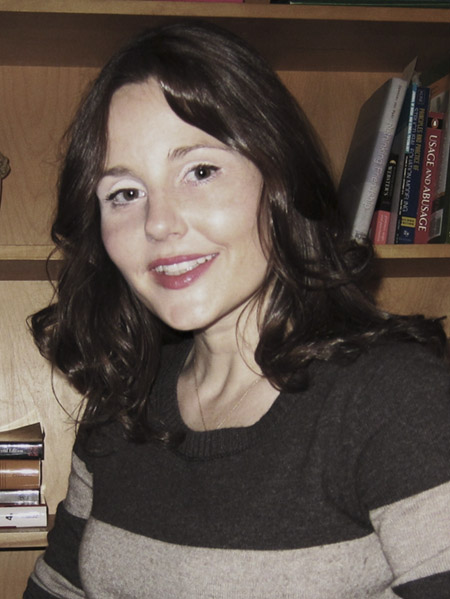
Dr. Cheryl Harasymchuk

Dr. John Zelenski
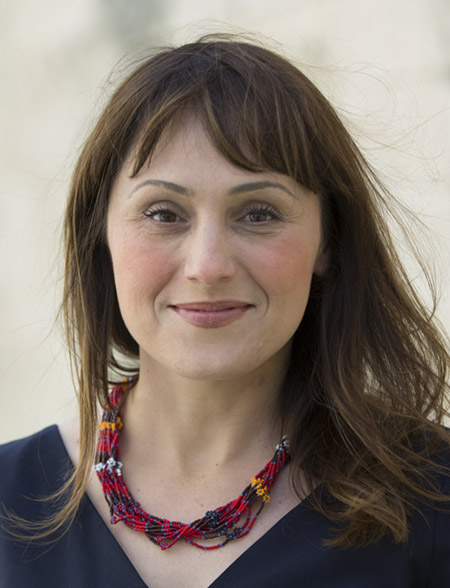
Dr. Katherine Starzyk
Dr. Cheryl Harasymchuk, Dr. Katherine Starzyk, and Dr. John Zelenski, Social and Personality Psychology
Social and Personality Psychology is really a description of two different disciplines that are inextricably linked. We spoke to Dr. Cheryl Harasymchuk, Dr. Katherine Starzyk, and Dr. John Zelenski about the contentious history and harmonious present, and the work they do to influence us all to be better.
Social and Personality Psychology
Dr. Cheryl Harasymchuk is an associate professor in the department of psychology at Carleton University, where her research focus on relationships from a social-psychological perspective. She is the Chair of the CPA’s Social and Personality Section. Dr. Katherine Starzyk is an associate professor of social and personality psychology at the University of Manitoba, where she studies how people respond to social injustice. Dr. John Zelenski is a professor of psychology at Carleton University, where personality psychology is the longest-running of his many research areas.
If you are following along with our Psychology Month series, you might remember Dr. Zelenski as having also participated in our spotlight on Environmental Psychology. As with so many psychological disciplines today, there is a huge amount of crossover between social/personality psychology and other fields of study.
“My first work in environmental psychology was to try to measure this individual difference that we call ‘nature-relatedness’. It refers to the degree to which people feel connected to, and part of, nature and the environment. The way we think about it is almost like a social relationship, and so we borrow some techniques and measurements from social psychology. Since ‘nature-relatedness’ is related to good things, like happiness and sustainable behaviours, it would be nice to increase it.”
This mirrors something that’s going on in personality psychology more broadly. 20 years ago the field was trying to sort out which were the most important personality dimensions. There of course thousands of potential individual differences, so they were trying to make some sense of it. That work remains ongoing, but personality psychologists have come to at least a bit of a consensus in the past couple of decades. Now they can start to ask questions about how behaviours and traits change over time, or how to increase desirable traits and appeal to some kinds of people. Says Dr. Zelenski, “I feel like personality psychology is getting on to these more interesting questions of substance and change and stability, rather than just figuring out what we’re talking about.”
There is a difference between ‘personality psychology’ and ‘social psychology, and at one point the two were not very sympatico. Some say (like Dr. Zelenski) that it was akin to a sibling rivalry. Others say it was a battle of extremes. Either way, there has been a rapprochement over the years to the point where the two now form part of the same team and are in many ways inextricably linked. Like when Nas and Jay-Z finally stopped writing diss tracks to each other in their songs, and joined together to make beautiful music on the (in-aptly named) ‘I Declare War’ tour. Dr. Harasymchuk makes the distinction.
“Psychology is the study of why and how we behave as we do. Social psychologists study how people are shaped by the people around them and the larger environment. And personality psychologists study how to define and measure the important differences between people – ranging from genes to cultures.
In the beginning there were some extreme positions, where two camps were at odds. One said it was only the context, the other said it’s only how you were born that would shape your behaviour. Since that time there has been a lot of evidence that it isn’t one extreme or the other. As an example, I study relationships from a social-psychological perspective, which means I’m mainly interested in how a person’s partner, or best friend, shapes their behaviour. But in all my research, I also examine individual difference variables. Situations depend on that person’s personality, and how they might respond to their partner or best friend. If they have a history of responding very negatively to stressors, then in the context of a relationship where they’re having a fight, their behaviour might be more negative and exaggerated than it would be for someone better able to cope with their emotions.”
The integration of social and personality research has many tangible benefits. Dr. Starzyk has worked with collaborators and partners to increase government motivation to act in response to the First Nations clean water crisis. The group includes social/personality psychologists, sociologists, economists, legal scholars, soil scientists, and more, all thinking about ways they can apply pressure to alleviate the crisis, and all supporting the work of the advocate organizations who are the public face of the effort. It’s a multi-pronged approach, where the social and personality psychologists are the ones working on influencing public opinion.
“Some of our research is on understanding things like when, and why, people will start supporting better access to clean water for First Nations in Canada. Or at what point will people become concerned about racism, or the things that are necessary to move (re)conciliation forward. Even in this context, where we’re studying things that seem very group-based, this year we’re looking at how most of the individual personality variables predict each of these things together. So once again we’re dealing with a real integration of the social and the personality science. While we can set up frames that are more likely to make people act and be concerned about these things, we’re also interested in understanding who those frames will influence more, who can we move more easily, and maybe who requires a different approach. It’s taken a long time, but the intersection is finally here!” Integrating her work in psychometrics and intergroup relations, in February 2022, the Canadian Reconciliation Barometer has released their first report (https://reconciliationbarometer.ca).
Another big shift in the last couple of decades has been toward a different outlook on the way the science itself is conducted. Dr. Harasymchuk explains,
“One of the major changes that has impacted psychology in general, as well as social and personality psychology, is a greater emphasis on promoting practices in our research through transparency and replication. It’s more common in our field now to see researchers pre-register their study hypotheses. Meaning that before they start conducting the study and collecting data, they state publicly what they expect the study to find.
Related to that is the shift we’ve seen toward a more collaborative science. If you need to get enough participants to be more confident in your results, you need to pool across many labs and resources. We were always committed to doing good science, but in the last 20 years we’ve learned so much about the importance of replication and strong sample sizes.”
The work of social/personality psychology has not only undergone many changes in the last 20 years, but it has also contributed enormously to the changes we see around us in our everyday lives. Any ad you see online or on TV, any social media platform or interactive app, is built around the way people think. Dr. Starzyk says she sees this directly quite often, “Facebook and Google and ad companies explicitly recruit graduates from social and personality psychology – we see their booths at our conferences!”
While a lot of what surrounds us is informed by social and personality psychology, our own behaviours can be explained (or perhaps studied) by researchers in the field – every decision we make, every action we take, is probably of interest to a psychologist somewhere! Dr. Harasymchuk offers an example.
“There is a subdiscipline that concerns judgement and decision-making. It’s not about the objective things we experience in a situation, it’s about our perception of them. Our perception can shape whether we decide to drive an extra ten minutes to a gas station where we know we can save a few cents per litre rather than going to the station closest to us.”
The role of social and personality psychologists has come under a bit more scrutiny this past year, as they are at the forefront when it comes to finding ways to get people to adhere to public health measures. It is certainly not as simple as ‘craft your message this way and everyone will wear a mask and get vaccinated’. It’s more about what kind of messaging, imagery, and rhetoric will encourage the most people to take the necessary precautions. Dr. Zelenski says that this process is certainly a complicated one.
“In one of my graduate seminars just last week, we were considering these competing articles in a very high-profile journal, and one of them said ‘here are all the things social psychologists have learned, apply it to the pandemic!’ and the other one was from a group that contained mostly social and personality psychologists who said ‘wait a second there – we’ve done a ton of studies, but mostly on students. This science might not be game-day ready just yet.’ Then between those, you have politicians and policy-makers who have to make a decision right now who are demanding to know if this science is helpful or not. So even within the field, I think you have some debate. We’re certainly asking and addressing those questions, and while our advice is not as good as it might be five years from now, a lot of people would say that at least it’s good enough to be helpful in the moment.”
Dr. Starzyk says a big part of the difficulty is maintaining peoples’ trust in government in order to get them to trust the public health measures being advocated by that government.
“Governments don’t always translate research into policy, and they behave really inconsistently. We know a lot about what causes trust in government. When they say you can go mask free wherever you like, and then three days later have a different guideline, people start to question whether that policy is grounded in some good reasoning.
Even though we know the contact issue is not so important, and you don’t need to sanitize everything in your home anymore, one of the reasons governments were reluctant to repeal that kind of advice is because then people might trust them less. I feel that’s probably not so wise, you want to go with what’s the best science at the time and avoid having people spend money on things they don’t need.”
The science of personality and social psychology has come a long way, but remains a little misunderstood among the general public. Hopefully this will change going forward. Social and personality psychologists help us address racism, behave in more environmental ways, and try to convince us to wear masks and get vaccinated. To live better lives.
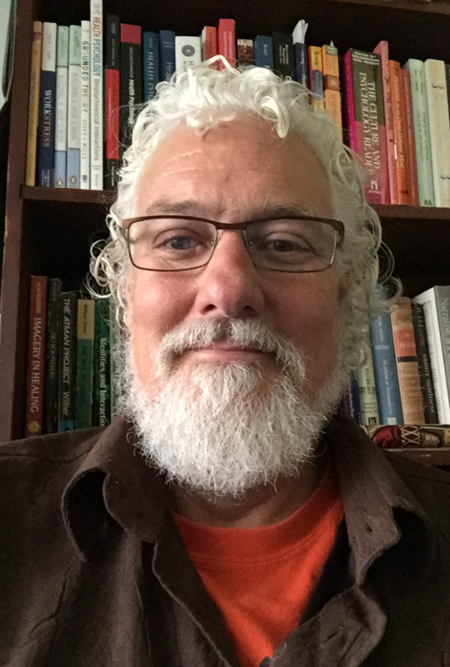
Dr. Randal Tonks
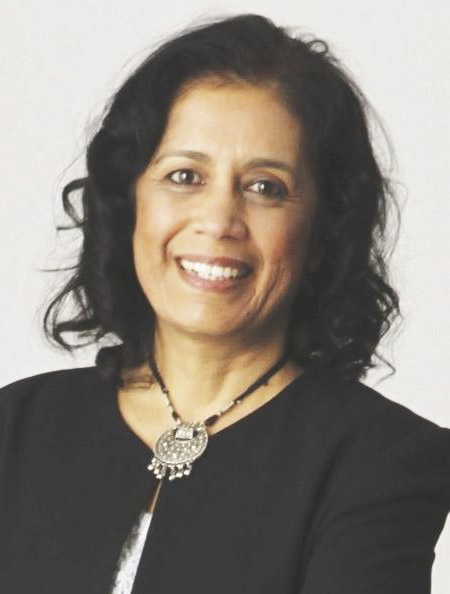
Dr. Gira Bhatt
Dr. Randal Tonks and Dr. Gira Bhatt, International and Cross-Cultural Psychology
International and Cross-Cultural Psychology are two separate but related fields. The study of cultural differences and similarities has long brought needed perspective to psychology, and that work has been accelerated as the world becomes more and more globally connected. We spoke to Dr. Randal Tonks and Dr. Gira Bhatt about the work they do in this space.
International and Cross-Cultural Psychology
When I was eight years old, I moved with my family to Winnipeg. It was a bit of a shock the first time schools were closed because of the cold – I was pretty used to snow days in Ottawa and the thought of having one without any snow was a little odd. But my friends seemed to think this was quite normal and I did agree that being outside at that time was unpleasant enough that I too would prefer not to be in school. But the day in the spring when school was closed – because of mosquitoes – was a lot more stunning. I couldn’t wrap my head around the fact that my friends were treating this like it was normal. “Oh yeah, let’s hang out in the basement and pretend to play Corey Hart songs in our air band. It's a mosquito day!”
Even a move from a city like Ottawa to a very similar city like Winnipeg can, for some of us, produce a small amount of culture shock. Imagine how different Winnipeg must feel to Rohit Gupta, an elite cricket player from India who moved there to study psychology at the University of Manitoba. Cultural differences, and the psychology that comes along with them, can be vast or minute – and they are all around us.
Dr. Randal Tonks is a psychologist and an instructor at Camosun College in Victoria, BC where he does a lot of research into identity and adjustment. He is the Chair of the International and Cross-Cultural Section of the CPA and says that while there is a lot of overlap, International and Cross-Cultural are really two different areas.
“International psychology is really an umbrella term that describes the fact that a lot of psychologists work internationally on global issues. Cross-cultural psychology examines the similarities and differences of peoples’ psychological abilities and traits and so on as can be seen across different cultures.”
It was an inter-Canadian cultural difference that started Dr. Tonks down the path of cross-cultural psychology, as he too moved across the country to experience a different part of our large nation.
“I grew up in Vancouver and went to UBC as an undergrad, but I always had a passion to go to Montreal, so I moved there after I graduated from UBC. Living in that Quebec culture in the mid-1980s, things were arguably a bit more polarized even than they are today. I suddenly became aware of the role of culture and the issues I was going through. I could pass as a local as long as I didn’t open my mouth. But as soon as I spoke, I was immediately identified as someone from ‘somewhere else’. I came to see all these prejudices and biases and expectations about who I was. From those experiences, when I then decided to apply for graduate school, I came to be very interested in the processes around acculturation when people move from one place to another, and our sense of identity in the way we think of ourselves in cultural terms.”
I once spent a few days in Dalhousie, New Brunswick, where I ended up being part of a softball game against the local city council. There were no bases, but rather beer kegs that appeared to be permanent fixtures of the softball diamond. It seemed to be well-known to everyone there that if you hit a home run, the opposing team had the chance to jump over the fence, chase down the ball, and return it to the infield. If they did so before you were able to drink a beer at every base and then cross home plate, you were out. There was a self-contained limiting factor to the drinking, which was that once you had rounded the beers once there was a marked increase in the chance you would strike out the following time up. I asked what they called this sport, and they looked at me as though that was a very strange question and said ‘baseball’ with a shrug.
Dr. Gira Bhatt teaches psychology at Kwantlen Polytechnic University in Surrey, BC. She has spent almost 2 decades involved with the International and Cross-Cultural Section of the CPA. Her research involves culture, identity, acculturation, and prejudice – she is currently doing applied community research with ethic minorities in Canada, exploring the dynamics that pan out around them. She says one of the things cultural and cross-cultural psychologists must keep top of mind is translation. It's one of the reasons that researchers who come from the community where the research is taking place is so important.
“I was involved in one research study where we were comparing individuals from China, India, and Canadians with European backgrounds. One test item was ‘what’s your profession’? A ton of the participants in India wrote ‘service’. My colleague in China said ‘wow, isn’t that humble, that they all say they’re doing service!’ and I said ‘no no no – it doesn’t mean that. It’s just that when you have a paid profession in some companies, they call it service. It’s a distinction between running a business and doing a paid job, and it’s just the expression they use.’ If the local researchers are not involved, it can lead to those kinds of miscommunications, poor translations, and misinterpretations.”
In the past two years, there has been a renewed media focus on cultural differences, especially in terms of the pandemic. What countries are handling it best? What communities are most likely to adhere to public health guidelines? Of course, it isn’t that simple as every country and every community is made up of individuals with their own ideas and their own value systems. Dr. Bhatt says these ideas have led to a huge amount of new cross-cultural research.
“Michele Gelfand has received a lot of media attention for her work on tight culture and loose culture, especially in the context of COVID. People in China seemed very compliant, they shut themselves inside their homes and didn’t leave for three weeks, whereas here we have an anti-vaxx movement, and all these protests happening. This difference has been studied very deeply now, as to how culture shapes us in terms of compliance where social norms are more important in terms of how people adhere to public health measures. Whereas here, we have the mindset of Western individuals that ‘I do exactly what I want to do’. That’s been very relevant for us to understand.”
In something that would be unthinkable in, say, South Korea, the last few weeks have seen protests all over Canada demanding ‘freedom’ from public health measures. Along with those protests has come an undercurrent of xenophobia and racism. These are things that have been on the rise since COVID first became a global pandemic, with anti-Asian hate crimes and other racist incidents happening across the country. Dr. Bhatt and Dr. Tonks were involved with several others in preparing the fact sheet on racism for the CPA, describing the underlying psychological dynamics of prejudice, hate, and discrimination. Dr. Tonks says this is a big topic in cross-cultural psychology.
“I don’t actively research prejudice, although of course in my teaching that’s one of the really big topics I bring up. When teaching cultural or cross-cultural psychology, I bring up issues around prejudice and things like colonialist perspectives in psychology. In some of my courses now I’m working on decolonizing the curriculum to bring in more Indigenous perspectives that show respect to other ways of thinking and forms of knowing. This kind of thing can contribute to change in the greater academy and the large body of psychologists carry out research across different cultures.”
A lot has been made in recent years of the breadth of psychological science, and how the vast bulk of scholarship over the history of the profession has been from a Western lens. Some of the people trying to redress this deficit, and correct for it, are cross-cultural psychologists like Dr. Bhatt.
“For a very long time, psychology was very Euro-centric. Now we understand that different cultural practices pertaining to mental health contain so many variations. So if you want culturally competent counselling, which is now kind of a buzzword, how do you prepare those therapists to be culturally competent? We can’t have a list that says ‘if someone is from X background, this is what they will be like’, because they’re living here! Their adaptation to Canada changes from one individual to the next, and we can’t have one-size-fits-all. The work on this is ongoing in the counselling and clinical fields, and a ton of work has been done – but the potential for growth is enormous.
Sometimes there are accusations that Western psychologists are ‘creating’ a syndrome. You heard this for a long time with attention disorders, and now we know there is some biological basis for these. But you come up with these terms and people from other cultures never heard of it. It doesn’t mean it doesn’t exist, just that it may be labeled differently. And there are syndromes that exist in other parts of the world that Western psychologists don’t know about.”
This might be the crux of cultural psychology. When culture is a variable, it affects the diagnosis, the treatment, and even the onset of psychological syndromes. There are few diseases that affect only one group of people but not others, but this does happen in psychology. Depression has been shown to manifest differently across different cultures. People from more Western, North American, or European cultures complain more about the psychological components of depression – feeling down, low energy, that kind of thing. But depression has often been identified among many of the Asian and some of the Middle Eastern cultures as more of a somatisation [a maladaptive functioning of an organ system, without underlying tissue or organ damage]. It manifests more in terms of bodily complaints, and people don’t so much report their feelings but rather these conditions affecting their bodies. Dr. Tonks provides a few more examples.
“There’s something called TKS, or Taijin Kyofusho Scale, which is a Japanese condition that has to do with a type of anxiety, with maybe a little bit of depression mixed in. It’s a fear that one is offending others with one’s presence. They may develop delusions that, for example, they have a foul body odour and that this is offensive to other people around them. This is a condition that has been well recognized within the Japanese psychological circle, and maybe starting to be recognized a bit in a few other places. This is one of those conditions that doesn’t really show up in other cultures but very clearly exists in Japan.
On the flip side, something like anorexia nervosa might be a Western kind of disease that isn’t really seen across other cultures, and it might be in part due to the socialization and cultural factors that people in North America and Europe tend to live with. In recent years, we’re beginning to see a bit of a rise in this syndrome in some other places where they have become more Westernized, and exposed to more Western media and Western culture.”
I was visiting a farmer’s market in Bangkok many years ago when an elephant sidled up next to me and took a melon. The stall keeper looked up, unperturbed, and the elephant walked away with her melon, equally unperturbed. I figured this was probably quite normal in Thailand, and farmers are likely quite willing to give up some of their produce to the local fauna – it almost certainly beats the alternative of trying to fight them for it. What seemed a little less Thai was the graffiti. The elephant was spray-painted with tags. This seemed like a very American thing to me, something that started in New York subways in the 70s, but it had obviously made its way to Thailand. I’m not sure of the effectiveness, as I understand graffiti tags being a way to mark one’s territory – and an elephant is rather mobile. But there were few elephants wandering the downtown squares unvandalized. Dr. Bhatt says that as Western culture spreads around the world, so too do the good things – and the problems – that come with it.
“The world is coming closer and closer through technology, and because of the pandemic we’re doing Zoom all the time. We’re finding that the various parts of the world which were so far away are now really close. Teenagers in other parts of the world know exactly what American teenagers are doing, and they’re very aware of where trends are going. So a lot of issues are not limited to just one culture, they’re spreading all across the globe and everyone is impacted. We know that body image is changing across time and across cultures. What’s considered attractive keeps changing, and it’s really fascinating.
I’ve learned that women in Middle Eastern countries are now wearing all kinds of expensive Western makeup under their niqabs. There have also been some sad cases where someone in Europe lures a teenager in Canada to take their own life. These are alarming times for us now. Technology has given us lots of good things, but it’s also something to worry about, as the insularity of culture does not exist the way it once did.”
Although its roots and origins can be traced back much further, cross-cultural psychology really got going in Canada in the 60s, when pioneers like Dr. John Berry (one of the founders of the International and Cross-Cultural Section of the CPA) started publishing their research. The push toward multiculturalism in the 60s and 70s led the field to grow and develop. We started to see a lot of studies on identity, and language – in particular French and English as a lot of the issues came from the politics of Canada. Dr. Bhatt and Dr. Tonks, along with Dr. John Berry, wrote a paper tracing this history, but stopped when they got to about 2000. Dr. Tonks says,
“All of a sudden, around that time, it seemed like everyone was talking about culture in one way or another. People who were not traditionally doing cross-cultural research now wanted to look at culture as a variable in their studies. Maybe the biggest change in this discipline is not the growth in the number of cross-cultural psychologists themselves, but that psychologists and other researchers outside the field are looking at facets of the way in which culture comes to play a role in, say, education or childcare or criminal justice.”
Some of those researchers outside the field of cross-cultural psychology are evolutionary psychologists, who are now looking at the role culture plays in human evolution. Others are neuroscientists, who are looking at differences in cognition between one culture and another. There have been countless examples making the news recently – when people were shown an optical illusion with two lines of identical length, African people knew right away that they were the same length, where North American people thought one was longer than the other. Another study showing people an aquarium screen saver showed that Americans saw three big colourful fish first, while Japanese people saw the water and the rocks first. Dr. Tonks says there are even a few brain studies that are starting to yield some results.
“Steve Heine from UBC in his book Cultural Psychology identified that if you do fMRI scans of Americans versus Chinese individuals and you get them to think about themselves, and then to think about their mothers, the Americans have two separate areas of their brain that are lit up – one for themselves and one for their mothers. Whereas for the Chinese participants they have the same areas of the brain lit up. It suggests that neurologically, they’re coding information about their sense of self as being connected to family in a single site, as opposed to North Americans encoding themselves separately within our brains. So some of these properties that we talk about – individualism and collectivism, for example, can arguably be seen in some neuropsychological evidence.”
We may have different brains as a result of our cultures, different syndromes and different experiences and a wide variety of mental health outcomes. But we do have a common goal – that of a collective humanity striving continuously to be better. Dr. Tonks says that cross-cultural psychology promotes “awareness of ourselves, and what our cultural biases are. Learning how other people operate culturally leads to greater sensitivity when interacting and communicating across different cultural lines. The goal a lot of cross-cultural psychologists strive toward is working in a cooperative way to build a better society.”
Preferably, a society with very few mosquitos.
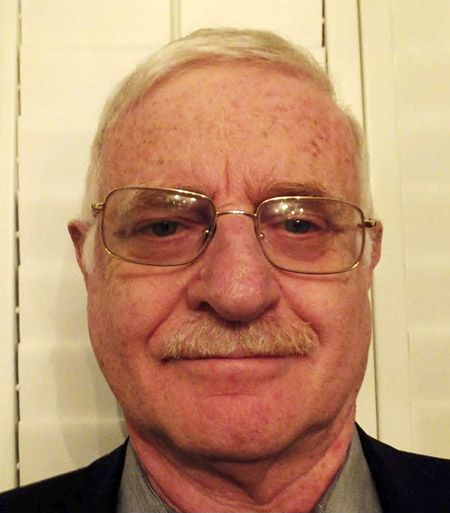
Dr. David Nussbaum

Dr. Yusef Karimi
Dr. David Nussbaum and Dr. Yusef Karimi, Extremism and Terrorism
Extremism and Terrorism are not limited to a geographic location or to a time period. We see the results all over the world, here in North America, in the Middle East, and most recently in Europe. Dr. David Nussbaum and Dr. Yusef Karimi discuss psychology’s role in understanding, and possibly preventing, violent extremism.
“I had a classmate in high school who was extremely intelligent. He wasn’t religious at that time – most Kurdish people are secular; they don’t believe much in the way of fundamental or extremist religion. When I was a Master’s student at university, I heard that he had joined Al Qaeda in Afghanistan. At the time, I was wondering why some people wanted to join Al Qaeda and other extremist groups. Especially when most of my friends and I were always against those groups in my province. About a year later, I heard the news that he had been killed in Afghanistan along with Abdullah Masood. I was shocked – why? Why did he join? What was the psychological root of this process?”
Dr. Yusef Karimi is Kurdish, and came here to Canada from Iran two years ago. He finished his Ph.D. in counselling psychology in Iran, where he was particularly interested in understanding what make people join groups like Al Qaeda and ISIS. He went to villages at the border of Iran and Iraq for Friday prayers and then through the rest of the weekend, interviewing members of extremist groups over the course of about 4-5 years.
“I communicated with them, gathered lots of information about them, and interviewed 16 Salafi Jihadists. Unfortunately, after these interviews, three of them joined ISIS in Syria and were killed there. As a human being and as a psychologist, I had got to know these people for a while. I became depressed after they were killed. My main idea at that time was to find a way to convince people not to join these extremist groups in the first place. To this day, I’ve been still trying to find an answer for this question.”
The answer, says Dr. Karimi, is most definitely not what the West has been doing in terms of counter-terrorism, invading Afghanistan and Iraq with the goal of ‘nation-building’, drone strikes in Syria and Somalia, and all the other interventions that start with military aggression and occupation. He points to the recent events in Afghanistan, the resurgence of the Taliban after the US withdrawal, as a good example of this flawed strategy.
“I think what has been done in the Middle East in terms of understanding and fighting extremism is doomed to failure because of the use of ineffective methods. The attempts for understanding and dissolving such extremist groups require phenomenological approaches that get to the roots of the problem. Politicians and decision-makers usually prefer to define and evaluate current extremist groups in the Middle East in terms of their existing organizational capacity rather than the actual threats posed by that group.
As a psychologist, as someone who has been in those countries in the Middle East and has been a part of that culture, what we have observed in recent months in Afghanistan is the failure of the ‘nation building’ efforts of the past 20 years. We can consider lots of factors that have led to this failure, but in my opinion, there is one factor we should consider most seriously. That is, a lack of knowledge of the psychological characteristics of the Afghan people. Psychology, in this circumstance, can provide us with a great amount of knowledge of the characteristics of an individual in a community. That can go a long way toward peace making and conflict resolution.”
The Taliban, now back in charge in Afghanistan, made headlines in recent weeks when they joined the rest of the world in calling for a peaceful resolution to the Russian invasion of Ukraine. This, in itself, caused a lot of reaction around the world ‘when the Taliban calls for peace, you know this is a terrible thing…’ that lacks a lot of nuances and understanding of the region.
Back in 1989, the Afghan mujahideen defeated the Soviet Union, driving them out of Afghanistan after a long and costly war. They then managed to topple the communist-backed Afghan government in place at the time, but soon fractured and, following a second civil war in Afghanistan, ceded power to the Taliban. The splintered mujahideen went off in all directions, one of which was that of Osama Bin Laden, who had been the most well-known backer of the mujahideen.
The Soviet, and now Russian, aggression is nothing new. Prior to their abhorrent invasion of Ukraine recently, Putin’s Russian military and bot farms had been engaging in cyber terrorism across the world, which could have been a signal to the rest of the world that they were building up to something more traditionally violent.
Dr. David Nussbaum is the Chair of the Extremism and Terrorism Section of the CPA. Dr. Nussbaum has a PhD in biological psychology, but says he really learned clinical psychology by driving a cab a couple of nights a week for four years while finishing his PhD. Following his PhD, he did a postdoc in neuropsychology, where he got interested in forensic psychology. He joined the Criminal Justice section of the CPA, and headed it for 7 years. There he met Dr. Wagdy Loza, who was the chief psychologist at the Kingston Penitentiary at the time. Dr. Loza started the Extermism & Terrorism Section, and when he did Dr. Nussbaum was one of the signatories who got it initial status. This gave him an orientation in middle eastern terrorism, but he has been talking about the link between communism, extremism, and terrorism for many years.
“People are lured by this promise of a Communist utopia, the paradise of the working man. Except once they’re five years into a Marxist economy, they’re lucky to be eating. They might then say they’re experiencing buyer remorse and they want to get rid of this government. That’s when the totalitarian, draconian nature of the statist comes out. You have Russian gulags, and so on.”
The totalitarian, draconian nature of Putin the statist is currently on full display, as the world responds to the invasion of Ukraine with almost universal condemnation. It is, however, interesting to see the difference between the world’s reaction to this invasion when contrasted to the US invasion of Afghanistan, or the Saudi Arabian offensive against Yemen. War is war, whether it takes place in the Middle East or in Europe, and Dr. Nussbaum is clear that there is no one location where terrorism, or the ideologies that produce it, thrives.
“Terrorism is not limited to one geographic location, one specific ideology, there are terrorists around the world and there have been for millennia. Now, in the last 25-30 years it has become a major issue because of various ideologies that seek to take over the Globe (or huge parts of it). One of the things they do to influence governments and citizens is the use of terrorism to instill fear, so that people will comply with their dictates. It’s always done for a political end.”
Dr. Karimi points out that over the course of history, we have often had to recalibrate what we thought we knew, thanks to extremist violence that we had not previously considered.
“We had some experience with fascism and racism in Germany before World War II. In the 20th century Hannah Arendt said with rising totalitarianism we were faced with a new phenomenon, and a new reality. The political thought had never faced this before, so she said we had to establish a new science of politics to explain and interpret totalitarianism. Like what Alexis de Tocqueville said in the 18th century after the French Revolution. Today, psychology – and political psychology in particular – is faced with yet another new phenomenon, and a new reality. It raises many questions, like how can we understand the individual in a society like Afghanistan, Syria, or Iraq, where social order is established mostly on a tribe structure? Trying to ‘build a new nation’ in Afghanistan was not at all in line with that culture.”
After 9/11, extremism started to become a serious problem in North America, with far-right groups springing up with an anti-Islamist foundation. Western efforts to suppress those groups and avoid giving them a platform worked only so long, and in the last few years that extremism has reached new heights as it has grown in power. We have seen tendrils of those extremists reaching into events like Charlottesville, the January 6th attack on the US Capitol, and more recently the ‘freedom convoy’ that occupied downtown Ottawa for three weeks this year.
For Dr. Karimi, the solution to this problem is similar to the solution to Middle Eastern terrorism – get to people before they become extremists. It will be a long process, and can’t happen overnight, but understanding the culture and embracing it will sow the seeds for a de-escalation of extremism in the future. He says of Canada, his home for the last year,
“Lots of immigrants come to Canada, which is good because they bring a lot of external knowledge with them. But we should have a plan to integrate these people and their culture. It’s all well and good to take in a lot of immigrants, and refugees, and so on – but there has to be a plan to integrate them into the Canadian society. To have them live together with other Canadians in an integrated way so they are not seen as ‘the other’ the way so many currently do. It’s good that we have a multicultural country, but we could be doing so much more to use this multiculturalism to improve Canada.”
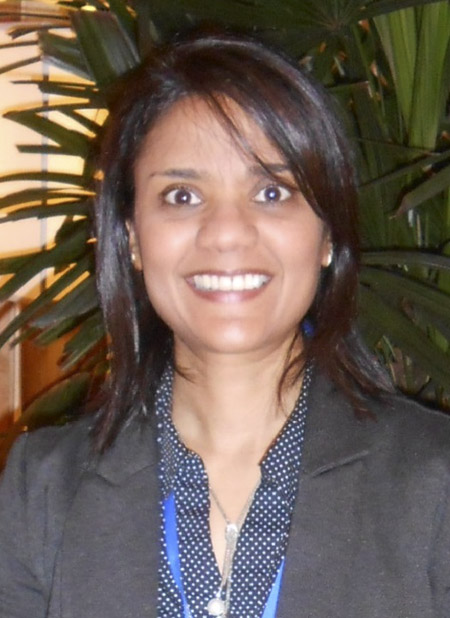
Dr. Wendy Darr
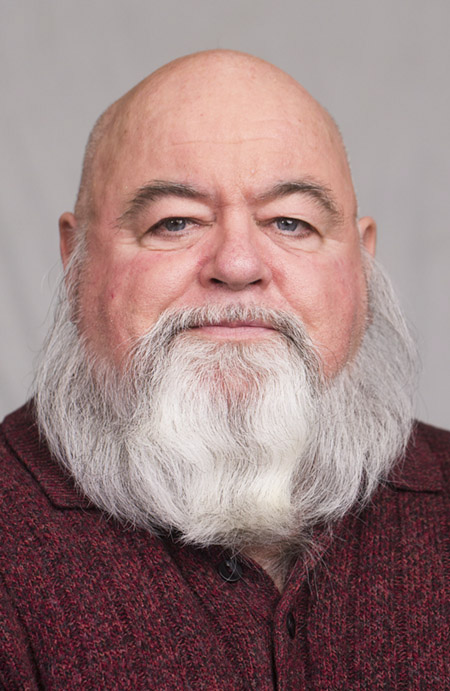
Dr. Allister MacIntyre
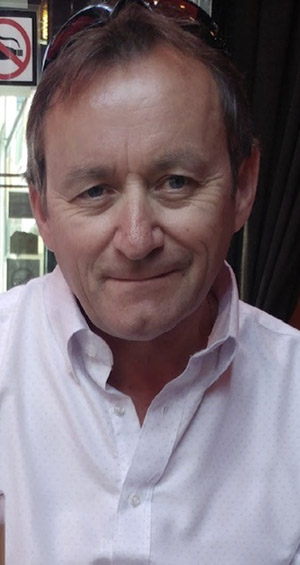
Dr. Damian O’Keefe
Dr. Wendy Darr, Dr. Allister MacIntyre, Dr. Susan Dowler and Dr. Damian O’Keefe, Psychology in the Military
Psychologists in the military play many roles, from personnel selection to designing training to a number of therapy roles. We spoke with Dr. Wendy Darr, Dr. Allister MacIntyre, Dr. Susan Dowler and Dr. Damian O’Keefe to learn more.
In the mid-1980s, “a real military exercise was taking place in Europe, involving countries from all over the world. The West Germans were put in charge of ‘psychological warfare’. Although it was a training exercise and everyone involved knew that it wasn’t a real war, they put a single pamphlet together that ground the entire exercise to a halt. They waited until about late in week two of this exercise. The soldiers who were ‘front line’ had been sleeping in mud, they were filthy, and they were tired. If they were sleeping at all, they were sleep deprived – basically feeling absolutely miserable. The pamphlet the West Germans dropped looked exactly like an advertisement from a nearby pizza parlour – offering to deliver free pizzas to the rear echelon folks - the medics, the supply people and those who weren’t on the fighting end. When the soldiers in the field saw that while they were living in filth and eating ration packs, their fellow soldiers were back there eating free pizzas, they said screw it and they quit. You wouldn’t do that in an actual wartime scenario, but in this peacetime scenario this huge discrepancy between how they were living and how they perceived others were living was enough for them to say they weren’t playing anymore.”
Dr. Allister MacIntyre spent 31 years in the Canadian Armed Forces as a Personnel Selection Officer. He has a PhD in social psychology, but his dissertation was more concerned with work behaviour – culture, climate, and leadership in the Canadian Air Force. When he was still in uniform, he spent time in West Germany completing their army’s psychological warfare course for NATO Officers, and now brings some of the principles he learned there into the influence and persuasion course he teaches at the military college.
When many of us think of ‘psychological warfare’ we think of the US military playing Van Halen at full blast for days on end to torture Manuel Noriega out of his fortress in Panama. (Playing Panama by Van Halen in this scenario was, in this writer’s humble opinion, cheesy and way too on-the-nose.) Recently the so-called “freedom convoy” that gridlocked Ottawa for three weeks was accused of ‘psychological warfare’ by politicians, judges, and law enforcement for constantly honking horns and blaring sirens that disrupted the sleep patterns and daily lives of residents in the area. Dr. MacIntyre says the general concept is a lot broader than that.
“’’Psychological warfare’ is not viewed as a discipline in psychology, it’s much more of a military discipline that uses psychological principles. It involves things like propaganda – to influence your enemies and also to gain support on the home front. People think psychological warfare is all about doing something to the enemy, but a lot of it is garnering support from your own nation to say ‘we’re really doing some legitimate work here’. Some of the things I learned on that course were really quite fascinating, in terms of getting to know the culture of the group you’re trying to influence so you know what triggers to use to get them to sway one way or the other.”
Dr. Damian O’Keefe has his PhD in Industrial/Organizational Psychology, studying human behaviour in the workplace. Like Dr. MacIntyre, he has 30 years military service, and he currently works as a civilian Defence Scientist in the personnel research and analysis division of the Department of National Defence where he conducts applied research to support personnel policy for the Canadian Armed Forces. He’s quick to point out that Canadian psychologists do not engage in psychological warfare.
“Almost all of us would have done our psychology degree in Canada, and so we all follow the CPA code of ethics. Do No Harm is the fundamental principle by which we guide ourselves.”
The most common job for a uniformed psychologist in the Canadian military is as a Personnel Selection Officer. Psychology has been part of the Canadian military since the Second World War, when psychologists helped the army come up with an efficient way to choose volunteers who would be taking up a number of different positions within the military. Ever since then, psychologists have been involved in selecting military personnel. You can learn more about the origins of psychology in the military, and the associated jobs psychologists currently do, in a chapter of the Canadian Handbook for Careers in Psychological Science, co-authored by Dr. O’Keefe, Samantha Urban, and Dr. Wendy Darr.
Dr. Wendy Darr is also involved in selection and assessment, and she recently took over (from Dr. O’Keefe) as the Chair of the CPA’s Psychology in the Military Section. She is also a civilian Defence Scientist who conducts personnel research and analysis for the military. Dr. Darr’s research involves developing new selection tools to screen and recruit people who want to become soldiers, sailors, and aviators. She describes the criteria for being accepted into the military in Canada.
“We are largely looking for what 100 years of research shows is the best predictor of job performance, which is general cognitive ability. The Canadian Armed Forces trains everyone, and a lot of that training is expensive. So we want to make sure we’re investing in someone who has the aptitude and the capacity to succeed, especially in some of the more technical jobs. So at the very basic level we’re looking to see if you’re of sound mind and have the ability to learn. The second thing is personality. Do you fit in with the demands of the military environment? We are looking for those who espouse military values. Does someone have the innate ability to succeed in a rules-based environment, to be organized and structured, and to lead when necessary? We’re also looking for people who have what it takes to perform in this adverse environment. Are you emotionally stable? Military training can be tough, so we want to make sure they have what it takes to handle the pressures of training.”
The military relies on disciplines across psychology. They have industrial, organizational, and social psychologists as well as clinical psychologists to help military members who struggle with mental health issues These psychologists work in military health care clinics and certain specialized units. The vast majority of psychologists work in the 31 military health care clinics located across Canada, which include seven Operational Trauma and Stress Support Centres (OTSSCs) and provide mental health services very similar to what is delivered in hospitals. (Also taken from the Canadian Handbook for Careers in Psychological Science.)
Dr. Susan Dowler is the Chief Clinical Psychologist at the Directorate of Mental Health within Canadian Forces Health Services. She is the senior practice leader for psychology, which means she is involved in establishing the practice guidelines and compliance, doing investigations if there are problems, and setting up educational training. Unlike personnel selection officers, clinical psychologists are always civilians.
“As far as clinical psychologists are concerned, they’re not military members, they’re not in uniform. They’re either public service employees or they’re contracted resources. Some other countries have clinical psychologists embedded in units – the US for example does this – but this is generally not done in Canada.”
In January of 1994, Romeo Dallaire sent a now-famous ‘genocide fax’ to the headquarters of the UN, warning that a genocide was being planned in Rwanda. A few months later, the genocide began as between 500,000 and 1,000,000 Tutsis were killed over a period of about 100 days. Dallaire, feeling abandoned and ignored by the UN and having witnessed months of unimaginable horrors, suffered greatly from Post-Traumatic Stress Disorder (PTSD) after Rwanda. He pushed to create specialized mental health services for individuals suffering from operational stress injuries. Dr. Dowler says the first OTSSC was created in 1999.
Clinical psychologists have become more and more involved with the military over the years, and play an essential role when problems present themselves. The stigma associated with seeking mental health help has always been prevalent in society, but especially in the military where, as Dr. MacIntyre says, “people are expected to be strong”. He and Dr. O’Keefe both did tours in Australia, working with the Australian army. They noted many years ago that every single soldier who had been deployed for any reason had to visit a psychologist upon their return to Australia. It was just for a screening, but it eliminated some of the stigma of going to talk to someone because everyone had to do it. Dr. Dowler says there is a similar practice in the Canadian military as well.
“We have had mandatory post-deployment screens for a very long time. Within 3-6 months after deployment, soldiers fill out some questionnaires and have an interview with a clinical social worker. If any information is flagged as potentially problematic, they are referred to mental health services. To see a psychologist you have to be referred from the medical personnel.”
The post-deployment screenings are just part of a process for soldiers after experiencing combat. Psychologists have added another step to make returning to Canada and home life a little easier and more successful. Dr. O’Keefe explains,
“When soldiers come back from overseas deployment, they go through ‘third location decompression’. That’s a two or three day period in which they come out of theatre which has been potentially very bad. They go to a very calm, mostly warm location where they get briefings from people like Susan (clinical psychologists) and other professionals who tell them ‘if you’re experiencing this symptom, here’s what you need to do’. You can’t put soldiers on an airplane and send them straight home from Afghanistan. They need to have time to decompress and to process what happened. And, of course, to get professional help if they need it.”
Psychologists are involved in the military process from the moment someone enlists right up to all the years after they complete their last tour. Helping them train, perform, and heal so that they will be as healthy, adjusted, and emotionally stable as possible when they head out to that pizza party.

Alejandra Botia
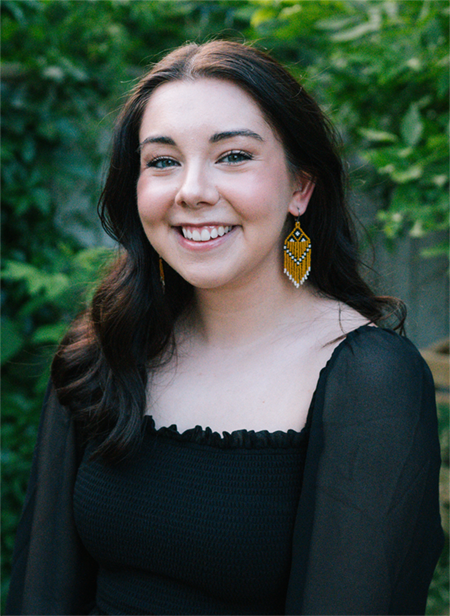
Emily Winters
Alejandra Botia and Emily Winters, Students in Psychology
Students in psychology, like students everywhere, have had a tough adjustment to make these last two years. Alejandra Botia and Emily Winters spoke to us about what they’re doing to help their fellow students navigate the new challenges presented by COVID.
Emily Winters is much less green, about three and a half feet taller, and speaks much less cryptically than Yoda. She is a doctoral student in clinical psychology and the University of Regina, and the first member of the JEDI executive of the CPA Section for Students. This is the first year the Student Section has had an Justice, Equity, Diversity, and Inclusion executive – and yes, the name was an intentional choice thanks to input from other student members.
“I’m the first person in this role, and I was excited to see it created. We’ve already started recruiting a bunch of volunteers to form a JEDI committee, and that should be on the way soon. Their primary role will be in compiling lists of resources to be made available to section members. We’re also hoping to develop an event for the upcoming convention in 2022 targeted toward students in the area of justice, equity, diversity, and inclusion.”
When the Jedi High Council was convened, the members were chosen very intentionally. Plo Koon was Kel Dor, from Dorin – he’s the one who had to wear goggles and a face mask so he could breathe in certain atmospheres. Adi Gallia represented the Tholothian people, Ki-Adi-Mundi with his binary brain represented Cerea. And Mace Windu was chosen to please all the fans who really enjoy watching Samuel L. Jackson do stuff. The Student Section JEDI committee will be similar – a committee dedicated to diversity and inclusion must also be interested in representation.
“Because it’s a role through the section for students, that’s a very large focus for us – making the student population as diverse and equitable as possible. It’s also important to think long-term so that clinicians, researchers, psychologists in general are incorporating those values into their work and their practice. I try to be really mindful of the idea that just increasing the population of students from marginalized groups isn’t going to result in meaningful change. That can’t be our only strategy. We have to make sure that existing psychologists are thinking this way – who they’re recruiting into their labs, what the makeup of their practice looks like.”
This idea – that simply recruiting students from diverse backgrounds is not going to result in long-term diversification – is something that is being taken up at the board level of the CPA as well. Alejandra Botia is a third-year psychology student at UBC in counselling psychology, and the Chair of the Student Section. Part of her role as Chair means being the Section representative on the board of directors.
“I joined the board in the summer of 2020, when we were having a lot of discussion around social justice and racial injustice. My favourite part of having joined the CPA in this role is meeting people like Emily, and being on the board around people who work so hard and care so much to come together and have conversations that can be challenging and difficult. It takes a lot of courage and humility to be able to show up in those spaces. What I’m seeing is the board coming together to do that. And I’m so inspired by the students that I’ve been meeting and encountering as well. Oftentimes it takes even more courage to show up in that space because as students we’re often in positions of less power. In my role, I’ve been trying to advocate for student voices to be heard more and more. One of the wonderful things we did last year was come up with a survey of student members to find out what they would want in Emily’s role now. What was important to them? What they wanted us to consider, even up to and including the name. It’s there that I can really connect what the student section is doing with what the board is doing.”
The members of the Student Section executive have had to do their jobs in a time of unprecedented turmoil, as the pandemic has made virtual meetings the norm. The executive are now all Ki-Adi-Mundi, who never seemed to attend a single Jedi High Council meeting in person and always showed up as a hologram. This has presented difficulties not only for the executive, but for students in general. Emily says,
“The transition to university has been quite difficult through the pandemic, likely more difficult than it would have been otherwise – especially for undergrad students. The transition to online learning has been tough, and a lot of people don’t like it. For some it works great, but it has been a real challenge for many. Also being isolated has been very tough for students. A lot of students in my program move away from their home provinces to attend graduate school, so they’re leaving living with their parents to living completely alone in a very cold Saskatchewan winter. Being a student is tough, and feeling like you’re doing it alone makes it that much more difficult.”
Alejandra says that there have also been many practical difficulties, in addition to the isolation.
“Another thing we hear from students a lot is that this has disrupted their research and their practice. Not being able to go to the campus, to conduct research in the ways they were used to, means they have to either get really creative, or put it on pause. Some practicums weren’t taking students any more because they couldn’t. So having to wait, and maybe delay some of their program requirements because of the pandemic had a lot of students really worried. Financial issues also cropped up – students don’t get paid a lot, if anything, and not being able to hold a job you previously had, or take advantage of opportunities you might previously have been able to access.”
Connection of any kind in this time has become more important than ever. Mentorship is one of the ways these connections have been established in the student section. Where would Luke Skywalker be without the mentorship of Yoda? Or Anakin without Obi-Wan…never mind that last one. Alejandra was in charge of the CPA student mentorship program last year, and while it was always virtual – undergrad students and their graduate student mentors were rarely in the same city, let alone at the same school – she says it has become more important and helpful than ever during COVID.
“The mentorship program has been great, partly for the connection with another person but also to brainstorm ideas. There were a lot of questions that popped up ‘I can’t get a practicum, what else can I do?’ that kind of thing. It was such an unfamiliar situation, especially for undergrads, that to have someone there to help them through it was a really nice outlet.”
The pandemic has exposed many divisions in Canadian society, most particularly in illuminating the inequalities borne by Black, Indigenous, and People of Colour much more heavily than by others. The psychology students of today, and the members of the student section, are no exception. Says Alejandra,
“I think the events we’ve experienced and witnessed over the past few years have also taken their toll. I’m thinking about Black and Indigenous people and racial injustices and systemic oppression that a lot of people have been experiencing and continue to experience. Also the hate crimes against Asian people, where many students themselves have experienced racially-motivated hate throughout this time. For students of colour it has been a particularly difficult time. That’s one of the reasons it’s so important to continue to create spaces and opportunities for people to connect with one another.”
Emily is now in charge of creating one of those opportunities for connection, through the JEDI initiative. It’s just getting off the ground, but she and the rest of the section executive have a particular vision for this new group.
“It’s still pretty early days and I want to make sure it’s a very collaborative process. In creating the committee, I want to make sure it’s as diverse as possible in terms of advocacy groups. I want to make sure we have someone who can focus on disability, someone who can advocate for problems that are relevant to Black folks, that sort of thing. Trying to make sure we have that representation as best we can, without expecting them to speak for an entire community and be the sole perspective! From my perspective, one of the things I really want to advocate for is for Indigenous people. I am Inuk-Settler. My dad’s family comes from Nunatsiavut, a stretch of land along the coast of Labrador, so that’s something that’s personally important to me. I think it is for a lot of folks, especially with the confirmation of graves at residential schools, it’s on a lot of peoples’ minds. One thing I’d like to do through my role is dive into the Truth and Reconciliation Report and the calls to action. To see what we can do from our perspective and in our role as the Student Section. And to look at where we’re at as the field of psychology in general and where we can go from here and what we can implement. I also think it’s important to look at COVID and how it’s impacted racialized communities in very specific ways because we know the pandemic has disproportionally impacted BIPOC.”
What Emily didn’t say – but maybe could have said – is “you must unlearn what you have learned…Try not. Do. Or do not. There is no try.”
Psychology Month Profile: Dr. Jim Cresswell and Dr. Thomas Teo, History and Philosophy of psychology
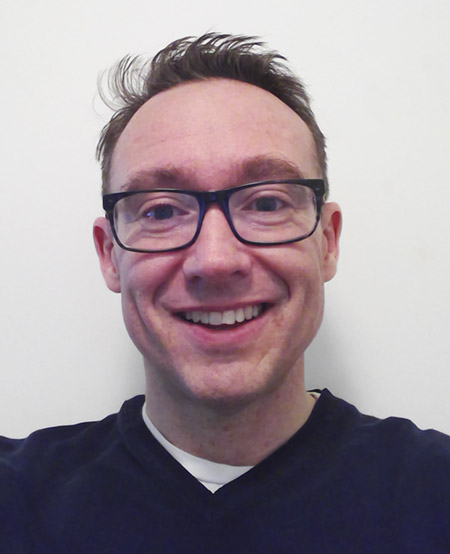
Dr. Jim Cresswell
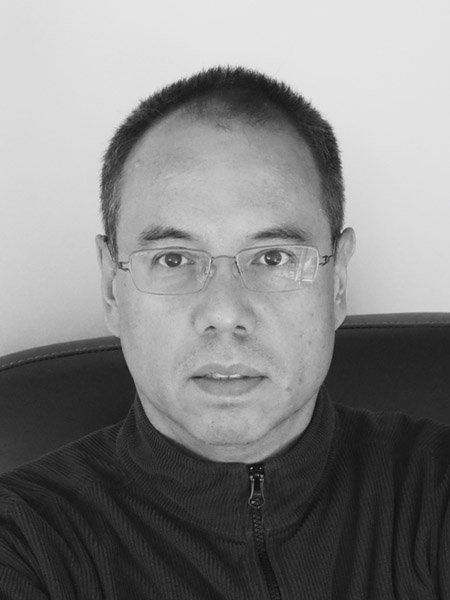
Dr. Thomas Teo
Dr. Jim Cresswell and Dr. Thomas Teo, History and Philosophy of Psychology
The History and Philosophy of psychology is long, broad, and a truly enormous field of study. A lot of it involves ‘big-picture’ thinking. We spoke to Dr. Jim Cresswell and Dr. Thomas Teo about how they see the ‘big picture’.
History and Philosophy of Psychology
“Think about zombie movies and zombie shows – zombies are literally subhuman. You can kill a zombie, you can mistreat it completely, they don’t have any rights. In fact, you have a duty to kill a zombie because they’ll take our way of life away.”
Dr. Thomas Teo is a faculty member in the Historical Theoretical and Critical Studies of Psychology program at York University. He has been active in the advancement of theoretical, critical, and historical psychology throughout his professional career. He started out with an interest in the history of racism, worked on the relationship between psychology and racism, and on the question of the degree to which scientific psychology can be a form of violence – which Dr. Teo refers to as ‘epistemological violence’ (epistemology is the branch of philosophy concerned with knowledge). Recently, he has been studying the re-emergence of ‘fascist subjectivity’, based on subhumanism and racism, and the idea of cultural supremacy that we can find in the West.
“Whereas racism can be based to a certain degree on science, for instance using numbers and graphs, the notion of people being subhuman can’t be. Subhumanism - think about zombies - is strictly a visual ontology [the branch of philosophy dealing with the nature of being]. You just “see” and know what a zombie is and you don’t need a scientific explanation for that. And it is like this for some people when they see, say, migrants coming to the border. They run, the “caravan”, they walk on foot with suitcases through snow to the border, to a place where they can’t gain “regular” access. It appears to be “abnormal” behaviour, deviant from how ‘regular’ Americans or Canadians behave,. It shows visually that ‘they’ are not like ‘us’, that that are a class of subhumans. You can mistreat them, separate them from their families, throw them into cages.”
Dr. Teo suggests that, in fact, throwing them into those cages is a way to make them appear even more ‘subhuman’ to the general public. This stems from a long tradition of dehumanizing other people by portraying them as filthy, parasitic, dishevelled and desperate. Which is exactly how migrants will look after being kept in cages at the border without showers or soap or decent food, for weeks or months on end. He goes on,
“I’m basing this argument on two sources, one of whom is an American writer [Lothrop Stoddard] who wrote about the ‘underman’ which included ‘inferior races’, poor people, communists and Bolsheviks. The second source is an education manual by the SS in Nazi Germany that published a booklet with the actual title ‘Subhuman’. There was very little text; they just used pictures that contrasted human with subhumans: German versus Soviet soldiers; proper German versus Jewish mother; German versus degenerate art. It’s all visual, we can see that the ‘subhuman’ doesn’t have the characteristics of a full human being. They look to be in shambles, dirty, disorganized. It also means that anyone can become a subhuman. Not just Blacks and Jews but anyone who is an enemy of Germany – Churchill and Roosevelt were included. The concept of the ‘subhuman’ is a very malleable concept. This concept of the ‘subhuman’ does not just mean that you’re less than others, it also means there is an imperative to do something about you. If you are a parasite, a cockroach, a rat, “I” have to exterminate you or remove you.”
Dr. Teo speaks a lot about ‘subjectivity’, suggesting the field of psychology needs to focus in this area a little more in order to make sense of the enormous amount of information we have gleaned from empirical studies over the decades. For example,
“We divided subjectivity into thinking, feeling, and willing. Then we divided thinking into attention, perception, cognition and memory. Memory can be divided into short-term, long-term, episodic memory. Then you look at how one small aspect in a subdivision of a subdivision relates to another small aspect. And it’s very difficult to relate this back to the whole, to a first-person perspective (subjectivity)”
Looking at the big picture is a mantra of those who work in the area of history, theory, and philosophy of psychology. Dr. Jim Cresswell is a professor at Ambrose University, and the Chair of the CPA’s History and Philosophy Section. In addition to his work in history and theory, his areas of expertise are social and cultural psychology, and immigration and adjustment in the context of community-based research. He too talks about the necessity of looking at the bigger picture.
“Psychology as a discipline is having to grapple with post-colonialism, which means talking about subtle but ubiquitous systemic biases against marginalized people of all sorts. We don’t exactly have the cleanest track record in psychology, and a lot of that has to do with the fact that we don’t have a lot of training in thinking about what our theories mean in terms of big picture issues like systematic discrimination. We’re often focused on supporting the individual and doing empirical work in the present moment, but psychologists find themselves in a kind of cultural milieu where a focus ‘just on what the science or data say’ about the individual is not cutting it like it used to. We need to grapple with how and why our empirical efforts worked really well for certain populations, but quite badly for others.”
Although these interviews were conducted several months ago, a lot of what Dr. Cresswell and Dr. Teo said at the time resonates particularly loudly today, especially for those ‘other’ populations who are having a pretty bad time with the recent abhorrent invasion of the Ukraine by Vladimir Putin, and the fascist-style propaganda and disinformation campaigns that have accompanied it. Dr. Teo describes ‘fascist subjectivity’ this way:
“You can have fascist politics with authoritarianism and disinformation and propaganda, and so on. Fascist subjectivity is an individual dimension. If I believe that wealth should not be shared with ‘the other’, and I provide racist or sub-human arguments or feelings for that, then I am entering fascist subjectivity. It is based on the idea that wealth should exclude ‘the other’ or that wealth can be extracted from ‘the other’. In classic fascist subjectivity I can go into other countries and extract wealth from ‘these people’ because they are inferior, they are sub-human, they are parasites. They even can be exterminated if they become a burden”
The global pandemic of the past two years is another example of society’s attitude toward human life. Dr. Teo makes a distinction between those who are dehumanized to the point where extermination is no big deal, and those who are dehumanized to the point where their deaths are no big deal – though the two are clearly two sides of the same coin.
“We have ideas about ‘kill-ability’ and ‘die-ability’. In classical Nazism, Jews are killable, so are Gypsys and homosexuals and enemies, and so forth. Because they are inferior races, or sub-human, they don’t have the same status that we have and there’s no problem with killing them. Die-ability is a more interesting concept, because it moves us from a more classical fascist subjectivity to its re-emergence in our time, where it applies also to liberal democracies. We have debates in this culture, especially during the pandemic, where people say the elderly might be die-able, people with pre-existing medical conditions might be die-able, people in prison and precarious workers are die-able. People have provided economic arguments for the die-ability of many of their fellow citizens: ‘If you want to maintain your way of life, and our economy, then we have to accept that certain people will die.’
In Canada, we have seen that for a long time. Indigenous people were considered killable, and an argument could be made that in many parts of the States Black people are still understood as killable, without consequences. Currently, in liberal democracies we really need to discuss the problem and reality of die-ability, the softer version of kill-ability in a fascist subjectivity.”
That subjectivity – based on a philosophy of big-picture thinking and overarching theories that attempt to connect a variety of schools of thought to one another – is not new. Dr. Cresswell says that psychology in its early years started out with a keen focus on subjectivity, but has drifted over the past century away from this kind of big-picture thinking. Only recently has a concerted effort been made to meaningfully bring this philosophy back into psychology.
“Early psychologists, James, Hall, and Piaget – to name a few – were about 100 years ahead of their time in terms of thinking about topics such as subjectivity, research, and pluralism. Behaviourism and cognitivism that came later moved away from some of that early thinking, which was broader and more systematic. When you go back and look at some of these early writers, you find a lot that’s pertinent to the discipline of psychology’s current context.
Psychologists in the 20th century largely focused on empirical work and shifted away from the theory that underlies that empirical work. The cultural turn started in the 90s brought about a conversation concerning the possibility that our work could be ethnocentric. The result is a recent shift where we’re now starting to pay attention to the theory that informs our research and what we think our observations mean.”
Although not ‘philosophers’ by the strictest definition, both Dr. Teo and Dr. Cresswell certainly speak more philosophically than do most psychologists. As students of history, they are also students of the evolving philosophy that informs the discipline today. As with big-picture thinking, Dr. Cresswell says that philosophical thinking in the realm of psychology started more than a century ago.
“It’s probably more accurate to look at figures such as Sigmund Freud, or William James, as theorists who outlined presuppositions about how to examine the world. In contrast, consider how first- and second-year textbooks will talk about them as researchers who have been disproven in the progress of science. We tell students that they can move on past them without raising questions about what counts as science according to whom it counts. This message is a bit of a problematic stance to take. If you take cognitive theory and examine behaviourism or psychoanalysis from your cognitive paradigm, behaviourism or psychoanalysis will always be ‘disproven’. If you look at cognitive theory through a lens of behaviourism or psychoanalysis, cognitive theory will always fail. My point is that we have to teach students to deal with background paradigms that set the conditions for our empirical work. So when a textbook says we’ve moved on past this or that, they’re actually missing the fact that psychology doesn’t have a clear progressive development as a unified discipline. We actually have multiple disciplines within it and we have to recognize there are different paradigms, which means training students on how to think about history and theory.”
There has been an uptick in interest of late to go back to some of the periods where these ideas rose to prominence – particularly, the turn of the 20th century, the 1960s, and the 1990s. I know, thinking of the 1990s in terms of ‘history’ might be a little disconcerting for some. Like, Alanis Morisette released Jagged Little Pill just a few months ago, right? (It was in fact 26 years ago today that she won a Grammy for that album. She is now 47.) Dr. Cresswell says that yes, indeed the 1990s are part of history.
“Consider Wilhelm Wundt, who’s credited with structuralism and the creation of the first psychological laboratory. Half of his work was about völkerpsychologie, which is basically the ‘psychology of the community and people’. There is value in going back to such cultural theory. Another body of literature that we see in history and philosophy today is the continental critiques and philosophy. People like Foucault and the phenomenologists who partly enabled a birth of post-colonial thinking that largely happened worked outside the discipline of psychology, but there is value in understanding such theory in a milieu where we have to grapple with systematic injustice.”
The field of psychology is remembering, and learning from, its own history. Something we as a society should probably be doing a lot more as well. I’m reminded of another historic moment in pop culture, also from the 1990s – 1994, to be precise. A protest song released in memory of Johnathan Ball and Tim Parry, two men who were killed in the Warrington bombings carried out by the IRA the previous year.
“But you see, it's not me
It's not my family
In your head, in your head, they are fighting
With their tanks, and their bombs
And their bombs, and their guns
In your head, in your head they are crying”
- The Cranberries, Zombie
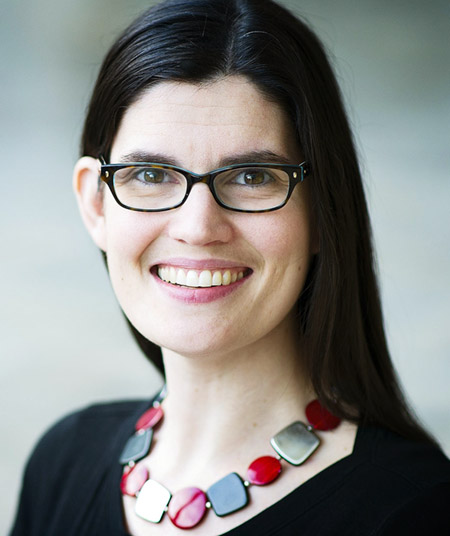
Dr. Veronica Hutchings
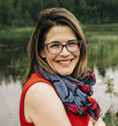
Dr. Reagan Gale
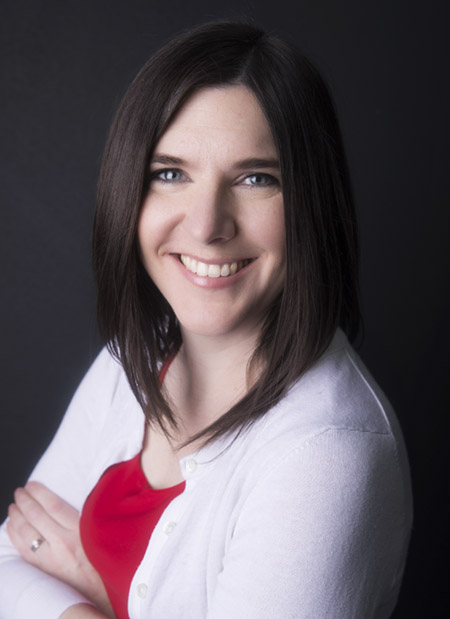
Charlene Bradford
Dr. Veronica Hutchings, Charlene Bradford, and Dr. Reagan Gale, Rural and Northern Psychology
There are unique challenges that come with living in small communities – especially those far in the north. Being a psychologist in these areas brings unique challenges as well. We spoke to Dr. Veronica Hutchings, Charlene Bradford, and Dr. Reagan Gale about their work in Yukon and Newfoundland.
“Cops probably have it really easy in a small town.
Cop: ‘can you describe who mugged you?’
Victim: ‘yeah, he was about 5’10”…’
Cop: ‘uh-huh’
Victim: ‘he was wearing a brown coat…’
Cop: ‘uh-huh’
Victim: ‘and he was…Jim.’”
I’m paraphrasing a comedy sketch I once heard by a Canadian comedian on Just For Laughs. Who it was and when the routine took place have proven to be un-Googleable! I remember thinking at the time, yeah – but it must be pretty tough on the cop too. The victim knows Jim, because he knows everyone in the town, but it must be the same for the police officer, who also knows Jim. So it is with psychologists who work in rural and northern settings
Dr. Veronica Hutchings is a Psychologist at Counselling and Psychological Services at the Grenfell Campus of Memorial University on the West Coast of Newfoundland and Labrador. She is also an Associate Professor cross-appointed to the faculties of medicine and psychology. Dr. Hutchings is currently the Chair of the Rural and Northern Psychology Section of the CPA.
“Burnout is a big thing in rural areas, when you look at the dual relationships and the boundary challenges you’re faced with in small communities. Imagine your waitlist is getting long, and you’re in a small place where people know you’re the only psychologist or maybe one of a handful. You end up with a lot of pressure – ‘can you take this person on, they’re really struggling, can you squeeze in one more?’ Dealing with that can take a toll on you. I do all my work here on the Grenfell campus, and half the stores I go to the workers are my students. I was in Halifax ten years, and in that time I think I ran into a client only twice!”
There are other challenges to providing service in rural and remote communities, one of which – especially now during the pandemic – is internet access. Ms. Charlene Bradford is a registered psychologist – registered in Alberta, operating at a private practice in Yukon. Ms. Bradford is the President of the Psychological Society of the Yukon.
“In the Yukon we definitely have internet issues, it’s a common complaint. We have really expensive internet, and in the communities more north of us it’s very spotty. You really wouldn’t want to do a lot of forms of therapy virtually because there’s going to be a lot of lag time, or the screen is going to freeze and you’ll lose someone at the wrong time. When the pandemic hit and we started to do things virtually, I was doing some training on how to provide therapy virtually and I thought – sure, that’s going to work here in Whitehorse where the internet connections can handle that, but there’s no way in the rural communities that I would trust the internet to be reliable.
We’re lucky in Yukon that we have a really amazing airline that hits quite a few of our northern communities regularly, so there’s a lot of fly-ins happening. This helps, but you also have to have clinicians who are able to travel.”
Dr. Hutchings says that some communities in Labrador have the same internet issues. Both in Newfoundland and the Yukon, some small communities closed their doors entirely so there could be no fly-in psychological services. Ms. Bradford saw small communities get hit really hard with the virus which she describes as ‘devastating’. The pandemic had already created a massive demand and very long wait times, and communities getting hit really hard by COVID only increased the need for psychological help.
The pandemic, and the small size of the communities where psychologists work in rural and northern settings, are just two of the ways psychologists operate differently than they do in urban areas. Dr. Reagan Gale is the Director of Psychology for the Government of Yukon. She is registered to practice in Alberta, the Northwest Territories, Nunavut, and Ontario, and is currently the vice-president of the Psychological Society of the Yukon.
“I grew up in Ontario, and one thing I’ll say since coming to the north is that I’ve noticed the necessary emphasis on cultural safety and ways of knowing and ways of understanding for Indigenous people becomes even more crucial as you move north, and as you work in some of the smaller communities in other provinces where we see a greater proportion of First Nations, Inuit, and Metis people.
I do think there’s a different skill set, a different way of being flexible in helping the people we see. I’m just traveling back through Ontario from a week doing assessments in a community where food security is a profound issue, where children are consistently hungry. While I’m sure that’s the case for many in urban settings, in a small community we’re talking about a cultural norm of hunger. It’s not aberrant or an outlier, it’s the community norm that children are hungry. It calls on us as clinicians to approach practice differently.”
You may have noticed that both Ms. Bradford and Dr. Gale are ‘registered to practice in Alberta’, even though they both operate in Yukon. This is because Yukon is the only province or territory in Canada where psychologists have yet to have any kind of regulation. Says Dr. Gale,
“The Yukon is the last Canadian jurisdiction where anything goes with respect to professional psychological practice, in the absence of regulation.”
If a psychologist in the Yukon wants to be regulated (and many do) they must do so with a provincial body outside their jurisdiction. Ms. Bradford says that while this is a partial solution, it doesn’t address some fundamental issues associated with Yukon’s lack of regulation.
“We do not have a regulation college of any form in the Yukon, so many of us who are practicing as psychologists have taken it upon ourselves to regulate in another jurisdiction. It’s great, because we’re going through the regulation process, but it’s also problematic because there isn’t any regulation in the Yukon which means a few things. One, the colleges we’re regulated with have a limited ability to enforce anything outside their jurisdiction – which the Yukon is. And the other problem is that we do have people who are practicing as psychologists who are not actually regulated anywhere in Canada, and they can do that because it’s not a restricted title here.”
There are a lot of things that might happen when folks who aren’t needing to adhere to particular standards of practice can call themselves psychologists. Maybe they haven’t met the criteria to enter the profession in another territory. There are sensitive and important functions a psychologist performs, like diagnostic assessments. It’s hard to think about what process might look like for clients, many of whom are quite vulnerable, when those are performed by someone without the proper qualifications. Dr. Gale sees this often in her job.
“In my role as the Director of Psychology for the Yukon government, I’ve had people call me and ask about practice opportunities in Yukon. This is often because they’ve failed the entrance requirements to enter the profession in another jurisdiction. Maybe they’ve written the EPPP (Examination for Professional Practice in Psychology) the maximum number of allotted times and have not been able to pass, so they can’t access regulation in the jurisdiction in which they reside. I have also been approached by clinicians who have been disciplined by their regulator, and who might lose their right to practice as a ‘psychologist’ altogether. Yukon is the only spot where there is no prohibition whatsoever on that type of practice.”
So how can this be fixed? And why is the Yukon the last jurisdiction in Canada to adopt regulation? Ms. Bradford says the other two territories have a system they would like to replicate in Yukon.
“The Northwest Territories and Nunavut have an agreement with the College of Alberta Psychologists who do the regulation piece for them. We would like something like that in Yukon, and there are a lot of great reasons for it. One of the big ones being that we’re a small jurisdiction. Regulation really protects people. If things aren’t going well with your psychologist, or something seems dodgy, there’s a complaints process. With a small community you want to know that when you’re making those complaints you want to know they’re not going to your friend, your neighbour, someone you see at the grocery store [like Jim]. With a larger college it offers that protection for people in smaller jurisdictions like ours. This is the model we’re trying to go with.”
The Psychological Society of Yukon is very small, in that it consists of only twelve members – psychologists who have formed a group to collaborate and advocate for the things that are important to them. Says Dr. Gale,
“The society is committed to advocating for evidence-informed high-quality psychological services to be available to Yukoners, many of whom live in remote northern communities. I mean, Whitehorse is northern and rural for much of Canada, but we’re talking about much smaller communities than Whitehorse. The other goal is to advocate for regulation. I don’t want to speak for all twelve members of the society, but we are open to whatever path is going to be most sustainable for our Department of Community Services, which is the government branch that holds the responsibility. Speaking personally, I think we’re too small a group to self-regulate. My personal preference would be to enter into an agreement with a southern jurisdiction. But however the government can make it happen, we want to partner with them to do it.”
Ms. Bradford recalls a memorable moment in the Yukon House – yes, there are debates in the Yukon legislature that, though not well-known to the rest of Canada, can be memorable!
“The leader of the opposition was interviewing the person who’s kind of supposed to be regulating psychologists. He said ‘my understanding is that in the absence of regulation I can put up my own shingle that says Currie’s psychological services, is that correct?’ The minister in charge said ‘yes, that’s my understanding’.”
The issue of regulation is twofold. Psychologists are regulated because it creates a standard of practice, which ensures that psychologists who are providing services to people in rural and northern communities are doing so in an evidence-based way. That they will be guided by professional standards that, at the very least, try not to harm the people with whom they are working. The second benefit of regulation is that it creates a complaints mechanism, so that people who are harmed by the services provided have a recourse, and a process to follow. Regulation can’t prevent all harm, but it does provide a set of rules that minimize the potential harm. Ms. Bradford says it should be a pretty easy problem to solve.
“From our perspective, there isn’t a lot of reason why this shouldn’t go forward. Reagan did some consultation with legal representatives about what is the easiest way to move this along, and it really can be as simple as a memorandum of understanding with the College of Alberta Psychologists. Our understanding is this is simply an order in council from the government.”
And yet, it has not yet happened. Dr. Gale explains a little more.
“The barriers are the normal barriers to the government making law. It’s a small government in a small jurisdiction. The members of our society are grateful for the licensing work the government already does. This is not to criticize the important regulatory efforts that are already under way – it’s just that in such a small area, the human resource capacity to add in another profession is an ask. We think it isn’t a big ask, but any time you expand what a government is offering, it’s a political decision. We had some success lobbying during the territorial election in the spring of 2021, and all three parties made commitments toward psychological regulation, but it was the party that had the vaguest level of commitment that ended up forming the government. But we are fortunate in that both other parties are interested, and the topic of regulation is coming up in the house.”
One of the additional downstream benefits of regulation is stability. Ms. Bradford has been in the Yukon for 19 years (not all as a registered psychologist), and in that time she has seen a real change in the mental health landscape of the territory.
“People who are operating as psychologists in Yukon, who are regulated, have been here for a while. We’re invested in the community, there’s that continuity of services, and a relationship of trust that has a chance to build up over the years as people see the same person. In the past there was quite a bit of turnover, when you had people operating in some of these mental health positions who perhaps didn’t have the same level of education or knowledge in terms of being able to cope with what’s happening. They maybe didn’t have the same kind of emphasis that psychology has on self-care and avoiding burnout. So I’ve really noticed that shift as there are now more psychologists, and people are staying, turnover is reduced and services are getting stronger.”
This kind of shift to better practices, evidence-based treatment, and stability has occurred in other jurisdictions as well. Dr. Hutchings is the first psychologist ever to work in Counselling and Psychological Services at Grenfell Campus.
“Seven years ago when I came here, there was a push for my predecessor to be replaced by a psychologist because they recognized the importance of psychology. Ten years ago at this campus, there was no intake form, there was no consent process. The clinicians working there were not regulated by an official body. Now what you’re seeing is a process, an informed consent procedure, and a more structured service operating in a regulated framework.”
People in remote communities have different needs than those in small communities, although there are a lot of overlaps. For example, communities that have to have supplies flown in might struggle more with access to food, and that has a significant mental health impact. This means that for psychologists working in these areas, there is definitely no ‘one size fits all’ approach. Statisticians have argued for years of what constitutes ‘rural’ communities, and Dr. Hutchings tries to define what ‘rural’ actually means for psychologists.
“Anything that’s northern is rural, but not everything that’s rural is northern. And there are different levels of rurality of course. For example, Cornerbrook (population roughly 20,000), where I am, is kind of a central hub on the West Coast of Newfoundland. But for any major medical procedure you still have to drive eight hours to St. John’s. It’s kind of subjective, but I define rurality primarily by the size of the community, then also by how far away you are from a more ‘urbanish’ centre.”
Or, maybe put more simply – the more rural you are, the more likely you are to know Jim.
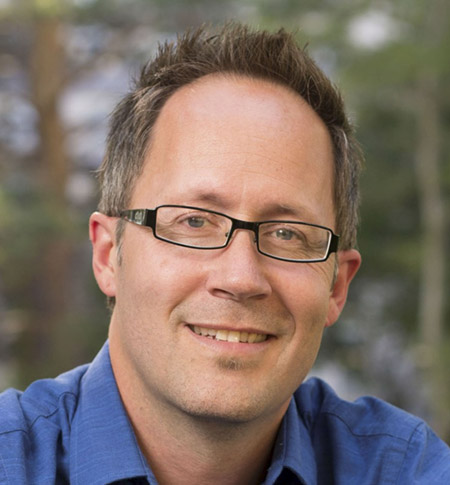
Dr. Stryker Calvez
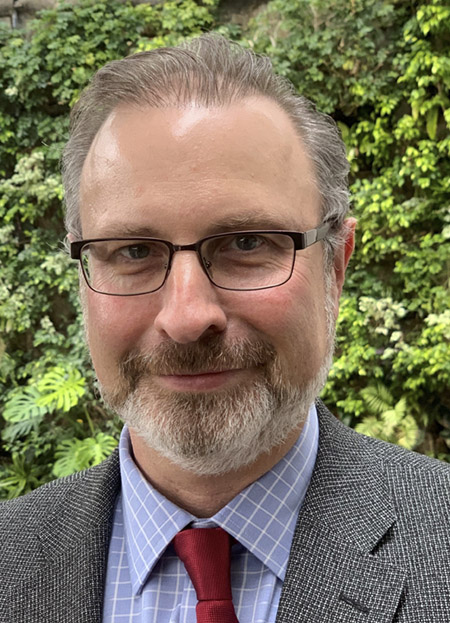
Dr. David Danto
Dr. Stryker Calvez and Dr. David Danto, Indigenous Peoples’ Psychology
As psychology comes to grips with the need to change practices to welcome Indigenous people and attract Indigenous practitioners, the Indigenous Peoples’ Psychology Section says this will involve many important and difficult conversations. We had one with Dr. Stryker Calvez and Dr. David Danto.
Indigenous Peoples’ Psychology
“A fish is the last to discover water.”
Dr. Stryker Calvez is Michif Métis from the Red River Territory, currently living in Treaty 6 Territory in Saskatoon. He was the Manager of Indigenous Education Initiatives at the University of Saskatchewan and is now the Sr. Manager EDI Strategy and Enablement at Nutrien. Dr. Calvez is also Chair of the CPA’s Indigenous Peoples’ Psychology Section and a longstanding member of CPA/PFC Knowledge Sharing Group/Standing Committee on Reconciliation with Dr. David Danto.
Dr. David Danto is a clinical psychologist by training, and the Head of Psychology at the University of Guelph-Humber. He has been involved in a number of efforts toward Indigenizing and decolonizing psychology, institutions and universities. He is the Past Chair of the Indigenous Peoples’ Psychology section.
Eric Bollman is the Communications Specialist with the Canadian Psychological Association.
This conversation took place November 24th, 2021. Since then, 93 unmarked graves were discovered at a former residential school in Williams Lake, BC. 12 were found in Kamsack, Saskatchewan, and 42 were found in Fort Perry, Saskatchewan.
Eric: I understand there’s some talk around changing the name of the Indigenous Peoples’ Psychology section to better reflect the collaborative nature of the work – to focus more on working with Indigenous people rather than making it exclusively about Indigenous people. What sparked this discussion?
Dr. Calvez: As a group, when the new executive came together about a year ago, we realized we had a community of people who were mostly non-Indigenous. As a community of people who are interested in supporting Indigenous Peoples in Canada, we might have to change how we operate. This meant we really had to think about the mechanisms within the section. The section was originally developed to support the Indigenous psychologists in Canada, to give them a safe space and a platform to have a voice. While that is still our mandate, we also wanted to recognize that there was this growing group of people who wanted to be of service and to provide support. So in that sense we thought the name should really be reflective of this. Rather than being a section of Indigenous people, what we needed to do was work with Indigenous people, and to bring as many people as were willing to do that work together and to create a safe environment where they have everything they need, and can have courageous conversations about what has happened to them and how do you move past those places. So the name change is supposed to be a reflection of the development of a community who want to work with and for Indigenous people. And I think we’re doing that in a good way. We’ve got lots of allies – like David.
Dr. Danto: A few years ago I worked with Stryker on a response to the Truth and Reconciliation Commission Report on behalf of the Canadian Psychological Association and Strong Minds Strong Kids (at the time known as the Psychology Foundation of Canada). What was clear from the attendees and participants in that process was that psychology has not been a great friend overall to Indigenous people historically, and even to this day in many cases. A lot of that is as a result of bringing an external Western perspective and approach to psychopathology, health, concept of the family or personality, that kind of thing, to Indigenous communities. And that’s harmful. It’s a way psychology has harmed people. It has happened in the context of education, research, and applied practice. To try to apply our ethical principles in a way that is equal to all people in this land, we have a responsibility to change those harmful practices and to use approaches that are suitable. We have to ask the question – ‘how can psychology be a good friend to Indigenous people in Canada? How can we be supportive?’ In many cases, I think the answer to that is that we can respect and acknowledge that there are already ways of healing, there’s already wisdom and knowledge that is helpful, that promote resilience and strength and well-being within the communities already. As a person who tries to be supportive in this way, I ask myself what I can do within my profession to encourage that profession to have greater respect for, and greater humility when it comes to Indigenous ways of knowing and healing. It’s not that psychology can’t or shouldn’t be involved, but we need to decentralize the approaches we use, and let the local community guide and lead what needs to be done.
Dr. Calvez: There are 1.7 million Indigenous people in Canada, and 38 million Canadians. (Re)conciliation isn’t necessarily all about Indigenous people. Although the impact of colonization has been borne primarily by Indigenous people, Murray Sinclair say that it has also harmed non-Indigenous people too. So if you think about this movement we have in psychology now, where we’re trying to get to a place where we can support the needs of Indigenous communities across Canada, there are not enough Indigenous psychologists, and not enough people with the right training to support them. So we really do need to work with allies – people who are willing to invest time getting to know and understand the needs of Indigenous communities to operate in a way that’s reflective of their expectations.
Eric: David, you mentioned ‘humility’. Is that the number one thing an ally must have when entering into this space?
Dr. Danto: Everything we learn in psychology is about ways of thinking. We talk about ‘empirical’ evidence – and the word ‘empirical’ has its root in the word ‘empeirikós’ which means known by experience. But so much of the methodology within psychology has evolved in a way to focus on what is objective and what is quantifiable objectively. That’s not a bad thing, but when we’re talking about human experience, it is an abstraction from experience. ‘Empirical’ has come to mean ‘quantitative’, and it’s not the same thing. Empirical really means within experience, and when we quantify things we’re really taking it a step away from that description of experience. That’s a very Western way of doing things. We have a respect for certain kinds of research in psychology that may not be a good fit with cultural understandings and experiences of history. So sometimes those Western approaches to knowledge get us stuck in a rut, I think, that makes us think these are the only ways of knowing that are worthwhile, testable, verifiable, and conclusive. And that means that we have lost our humility when it comes to other ways of knowing that seem to be a lower standard of knowledge. That sets us up for wanting to do only certain kinds of research within contexts where that doesn’t fit so well. When we go into communities and make use of these methods that don’t fit so well, we lose the connection with the participants in that research. Then we take our information and make use of it in our esteemed academic way, and it never comes back to the community, the community never has a chance to provide feedback because it’s not in their language. It’s not participatory or collaborative, it’s top down. And you end up with exactly the situation we have. Communities that don’t trust academics and researchers in their community, because they’re taking one more thing from the community. You know, we’ve taken land, we’ve taken rights, and now we’re taking knowledge and for who? For the sake of the university, and the researcher, not for the well-being of the community. I think humility is so important to have the approach that there’s lots of ways knowing things, and if you can take a back seat and acknowledge that your training really limits the possibilities that can be seen, rather than illuminate those possibilities – which is what those methods are supposed to be doing!
Dr. Calvez: The other element of cultural humility is that Western education and knowledge comes from a dominant position. The whole hierarchical structure of the Western world is structured in a way that one dominates another based on their education levels, or their cultural group. And that’s embedded within our paradigm of seeing the world. Cultural humility is a process through which we start to recognize that and counteract it. We need to unpack this as part of decolonization, and cultural humility gives us the tools to do that.
What might be more important than humility is commitment. This process of (re)conciliation is going to take an enormous amount of effort and it’s going to create tensions. Unless you have commitment to see things through to the conclusion of what we’re trying to do, to create a healing for Indigenous and non-Indigenous people and to the field of psychology, we can’t do that unless people are committed to go through with those intentions.
Eric: Do you ever try to recruit more people to participate in this (re)conciliation, to become allies, or are you more focused on creating a space where those allies can learn and grow alongside Indigenous people?
Dr. Calvez: An important thing about (re)conciliation is that people need to find it within themselves. The starting point isn’t knowing the issues and how to deal with them, the starting point is knowing yourself. And knowing yourself in relation to Indigenous people and the history that’s been here for thousands and thousands of years. That’s something people need to find on their own terms. Rather than promotion [reaching out to people to recruit them to become allies] it should be about attraction [creating a space where people want to become allies and reach out to you]. What we want to show people is that what we’re doing isn’t necessarily an imperative right, something that has to happen – although I do believe that’s true. What we want to show them is that this is something that’s going to benefit everybody, including our profession. There’s a good way to do this so we all learn from it, we all benefit from it. I think that’s done not by telling people you have to do it but by showing them why they might want to do it. When we get people coming on board because of their own choices, we get people who are much more capable of having the commitment I spoke to earlier, and the cultural humility.
Dr. Danto: Within the post-secondary context, I think the focus needs to be on creating the kind of post-secondary institution that’s welcoming and culturally safe and facilitates an appropriate, reflective and critical education for both non-Indigenous and Indigenous students. Rather than recruitment of Indigenous students. If you focus on asking the right questions and on being self-critical in terms of the processes that are in place, and creating that culturally welcoming safe environment, more people will be inclined to participate in what you’re doing. Indigenous people have had really negative experiences in class in the context of taking psychology courses. There are myths about genetic predispositions, assumptions and prejudices and biases because of the long history of colonization. I always use the expression ‘a fish is the last to discover water’. We are so embedded in this context of colonization, whether it’s psychology or health care or education that even with good intentions it’s very difficult for us to see. We need to do a careful examination of those spaces into which we’re inviting Indigenous people, because they may well be places where they’re exposed to re-traumatizing kinds of experiences as they’re confronted with incorrect, outdated, or unfair kinds of comments. We have a responsibility to be protective.
Dr. Calvez: When your focus is just on recruiting people in because you want more Indigenous people in your program, that’s self-serving. It’s not about Indigenous people, their needs, or what they want. If that’s your approach to supporting Indigenous people it will fail every time. We need to change the environment so Indigenous people see it as an attractive and desirable place to land. Let’s be clear – Indigenous communities have just as much need for people who are professionals in mental health as the rest of society does. We have to put the work in now, without knowing for certain that we’re going to attract those people in – just because it’s the right thing to do as a community and as a profession. I think we are moving in that direction. We’ve seen a lot of change in the last few years. That’s going to have to continue and accelerate in order to increase peoples’ interest in this work. Once they are interested, they’re going to realize that we’re not hampering anything that already exists within the profession – if anything, we’re expanding the possibilities and creating a bigger and more open space for more people to find what they’re looking for in the profession.
Eric: There have been some horrific discoveries in the past two years of mass graves at the sites of former residential schools. I think this has come as much more of a shock to white Canadians than it has to Indigenous communities who have been telling us for years that these existed. Is that true, and has it changed how you go about striving for (re)conciliation?
Dr. Calvez: I think it’s really important to recognize that when these events happen they’re really re-traumatizing to Indigenous Peoples. We’re highly affected because this is a confirmation of what we’ve been advocating for a long time. That Canadian society has not treated us right, and that they’ve actually gone to the point of harming and killing children to prove it true. That is the most horrific experience you can have as a person who comes from these communities, to know that even your children aren’t safe. I have friends who are survivors, and when this happens it sucks the wind out of you, and it takes a long time to come back to feeling like you could be okay. That’s happened multiple times this last summer alone. We knew it was bad, but I don’t thinks we knew the magnitude of it all. I very much appreciate that non-Indigenous people are having a reaction to something they didn’t know about. Having that reaction is the right thing – you probably should. But when you impose that reaction on Indigenous people to help them cope with it, that’s not necessarily the right thing to happen. We need other people to be standing up and speaking out so that we don’t necessarily have to be front and centre while we try to heal. This is where we’re moving as a profession. We should be able to advocate while recognizing you don’t go to the people who have been harmed to get support for your reaction. It’s an emerging process, and we’re new to all of this. That’s what (re)conciliation is, it’s a new idea that we’ve never seen before or had before. We’re going to have to discover it and build it from our experiences and our understanding. I think the outrage you’ve seen from both Indigenous and non-Indigenous communities shows us that we’re moving in the right direction because now there’s an awareness and an appropriate response where people are extremely upset. We’re moving in the right direction in that we’re now trying to support each other in those processes. I think this is a strong time for us as a community and as a society. There are a lot of tensions we’re going to have to navigate as more revelations come forward and we experience this more and more. Most important are the conversations we’re going to have around these and other issues – and they’re going to get difficult. We need to be prepared to have those conversations both as a profession and as an individual.
Dr. Danto: My personal view is that a genocide has happened against Indigenous people in this country. Not a ‘cultural genocide’. A genocide. We are finding bodies at the sites of these residential schools, and there’s little doubt that many more remains will be found, and that no matter how many are found many more will not. As a person who is not Indigenous, recognizing that this occurred in this country – that the killing of Indigenous people in large numbers because of who they are occurred in this country. If we don’t want to admit that, we have to ask ourselves why we don’t want to. To me it is clear that is what has happened. In order to move forward, that’s part of truth. There’s a responsibility when you name something, to act on it.
Eric: Why is it that people use the term ‘cultural genocide’ when it seems quite obvious that what has happened is an actual genocide? Is it a way of minimizing the damage done, or of using a term that doesn’t require as much soul-searching of themselves, or is it something else?
Dr. Danto: The story of the residential school system in Canada was always about ‘saving’ the child while destroying the Indigenous aspect of them. Severing the cultural ties to their community and family. While that may have been the stated objective of the residential school system, and of forced adoption initiatives, much more than that was done. Many people lost their lives within that system, and within those federal government funded (and in many cases church-run) institutions, many children lost their lives. There’s no doubt about who bears responsibility for that. Calling it merely a ’cultural genocide’ is choosing to define the harms that were done in terms of their intention, rather than the outcome. We wouldn’t do that in a court of law. If your intention was to harass but not kill, and you ended up killing, you wouldn’t just get the harassment charge.
Dr. Calvez: We have to recognize that Canada as a society is just now coming to terms with what it’s done. As a stepping stone, ‘cultural genocide’ was the thing they did. They were still in this belief that residential schools could have possibly been a benefit to Indigenous children. I think that now that we’re seeing how untrue that was, people are going to come to terms with the fact that it was more than just a ‘cultural’ genocide, that it was purely genocidal. That said, I don’t dismiss the malevolence of cultural genocide itself. I am who I am because of my ancestry, my beliefs, my identity, because everything I’ve ever been is tied to the land. So to take away my world views, beliefs, and everything else, is to leave me with nothing. Although I’d physically be there I would be a stranger in my own body. It was a significant step forward to use the term cultural genocide, but we’ve now become more articulate. We’ve understood the truths that surround it, and we can call it what it really was, which is a genocide.
Eric: You’ve said that there is progress being made and that we’re moving in the right direction. Can you give me a concrete example of something that is happening now that demonstrates this?
Dr. Calvez: A large group with David and I came up with Psychology’s response to the Truth and Reconciliation Report. Since then, it has not collected dust. What has happened is that we’re seeing this invigorating conversation starting to emerge in different spots in the field of psychology. You’re seeing a change to the ethics standards. The standards are going to change, we’re increasing it and adding a value as well as a practice that will support the Indigenization of psychology and support for (re)conciliation. We’re also seeing CPAP (the Council of Professional Associations of Psychologists) and ACPRO (Association of Canadian Psychology Regulatory Organizations) step up and change the way they want regulatory boards to start addressing these issues. And David will be giving a workshop for the CCPPP (Canadian Council of Professional Psychology Programs) with Ed Sackaney on ‘Allyship, Reconciliation and the Profession of Psychology’. So even within our profession, we are now starting to see an enormous amount of change. It has just begun and the ripples are beginning to be felt across the profession.
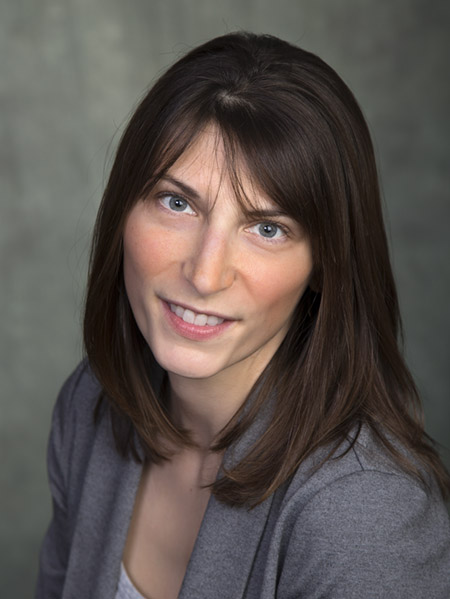
Dr. Lindsay McCunn

Dr. John Zelenski
Dr. Lindsay McCunn and Dr. John Zelenski, Environmental Psychology
Environmental psychology has two main branches. We spoke to Dr. Lindsay McCunn about the architectural branch (designing buildings and rooms for the well-being of occupants), and to Dr. John Zelenski about the conservation branch (examining sustainable behaviours through peoples’ connectedness to nature).
“When I say I’m not judging you, I think I really mean ‘not more than other people’.”
I’m a little nervous that, during this Zoom meeting, Dr. Lindsay McCunn and Dr. John Zelenski might be judging my decidedly cluttered Zoom background. All my kitchen appliances are on a shelf behind me, giving the (accurate, it turns out) impression that my home office space is a cramped corner by the kitchen. Dr. McCunn and Dr. Zelenski are environmental psychologists, experts on the spaces we occupy and how we interact with them. Dr. Zelenski is being quite nice, and honest - we as human beings do pick up on these subtle clues based on each others’ spaces, but that is probably not unique to environmental psychologists. We all judge Zoom backgrounds, if only a little bit.
Dr. Lindsay McCunn is a Professor of psychology at Vancouver Island University. She is the Chair of the Environmental Psychology Section of the CPA and the Co-Editor in Chief of the Journal of Environmental Psychology. She says examining peoples’ Zoom backgrounds, or the way they lay out their gardens or living spaces, is a curiosity for all of us.
“The way people express themselves and set up their homes and place meaningful things around is really interesting. Sam Gosling wrote a book called Snoopology, it’s a study of how you can sort of deduce peoples’ personality and thought processes based on how they arrange their trinkets and belongings in their homes and offices.”
Dr. McCunn specializes in Environmental Psychology, and describes it this way.
“Environmental psychology is the study of the transactions between people and place. I mean a lot of different types of places – a coffee shop, an office, a school, a park, an ocean, a mountain. We study the different ways in which people interact with their settings. Much like the way a social psychologist might study and understand relationships and interactions between people and other people, environmental psychologists study and understand the relationships between people and places. In my research, I look at how people interact in communities and work environments, especially hospitals, schools, and offices. In that capacity, I look at staff, mostly, and people who use the environments in different ways than you might expect like students and patients, teachers, and so on.”
Dr. John Zelenski is a Professor at Carleton University in the department of Psychology. He is also an environmental psychologist, but he specializes in a much different area than does Dr. McCunn. One might say they represent the two major branches of environmental psychology – the architectural (Dr. McCunn) and the conservationist (Dr. Zelenski).
“In addition to being an environmental psychologist, I also think of myself as a bit of a personality psychologist and a positive psychologist. I’ve been very interested in what we call nature-relatedness, or what others call ‘connectedness to nature’. It deals with peoples’ subjective impressions – are they a part of nature, or is nature separate from them and something that has little to do with their sense of self? I’ve also been interested broadly in what I call a ‘happy path to sustainability’. That’s the idea that we know that nature is good at putting people in a good mood. Nature is associated with happiness both over long periods of time and also right there in that moment. We know that people who spend a lot of time in nature and feel very connected to it behave in more pro-environmental and sustainable ways. In the last couple of years, we’ve started thinking that maybe the reverse is true as well. That if you could get people to do a couple of nice things for nature, by engaging in some sustainable behaviours, there could be ways to use that to make them feel more connected to nature and also feel happier about these activities. The idea is that doing nice things for the environment doesn’t have to be onerous, that we might be able to link it to positive emotions.”
What ‘spending time in nature’ means to each person is subjective. Maybe it’s taking a weekend to go hiking in the hills, or spending a day ice fishing, or just going into your backyard and tending to your radish garden. For Dr. McCunn, it has meant a big shift since the beginning of the COVID-19 pandemic. She is speaking to us via Zoom from what appears to be a cabin in the woods. She and her family lived in the downtown core of Nanaimo BC for a few years, living across the street from the ambulance service, the police service, and the fire station. Sirens increased significantly when the pandemic began, their sleep patterns began to be affected, and they decided to rent a place in the country.
“It was kind of a good case study in environmental psychology, in that we could realize what was stimulating us in our home environment, and then decide how best to alter that for our mental health. So we thought about moving to a larger natural setting where we can have a little bit more control over the things that stimulate us. We were very lucky to be able to rent something in the country. It was interesting, because I was quite attached to the house that we owned. One of the things we study as environmental psychologists is the ‘sense of place’, or a sense of place attachment/identity/dependence. At the start of the pandemic, I was hearing a lot of questions about how people could address the feelings of loss they had now that they were working from home. Not just feelings of loss in terms of social elements, but also a loss of the habitual ways in which they got to those places. Maybe they took the same bus every day, or stopped at the same coffee shop on their way to class or work. Even physicality of the office environment or the classroom itself – they were missing the setting. So I really wondered how I would react when I moved away from this familiar home environment to which I had become so attached. I didn’t want to put myself in a position of place-loss, but I quickly formed a strong attachment to this place, and the natural features around it. It has been a nice journey to explore environmental psychology from the inside out in this circumstance.”
Feeling close to nature can be as simple as being able to go outside and touch a tree, or look out your window at a mountain or a variety of bird species. So how does this translate into more pro-environmental beahaviours, when climate change has become the most pressing issue of our time? Dr. Zelenski gives an example.
“What we have is a lot of good circumstantial evidence and lab studies and we’re trying to assemble it. There have been a few programs that have been promising! My former student/friend/collaborator Lisa Nisbet has collaborated with the David Suzuki Foundation to do something called the 30 By 30 Challenge. They get people to spend 30 minutes in nature every day for 30 days. The people they get signing up for this tend to be pretty pro-environmental, and pretty connected to nature already. But over the course of this month that connectedness does seem to grow. It’s not a randomized control trial, but it seems like spending that time in nature for these folks does make them feel more connected, and along with that comes more commitment to sustainable behaviours.”
Conservation is a (relatively) new branch of environmental psychology, and has certainly become much bigger in the past twenty years, when climate change has quickly become a top-of-mind subject for so many of us. Dr. Zelenski is not alone in having moved in this direction.
“Just the attention and the amount of notice and importance the conservation side of environmental psychology is receiving seems to have really amped up in the past ten or fifteen years. I came to environmental psychology after my PhD just out of personal interest, and I feel like I’m one of a million people who are jumping on this bandwagon! It’s for a few reasons. People seem to be increasingly exhibiting symptoms of depression, anxiety, and so on – and nature seems to be a nice respite from that. Also the awareness of climate change just keeps growing and growing as we’re seeing the effects more and more. And policy-makers are interested in knowing what social science can contribute to try to solve those problems.”
The conservation branch of the discipline has naturally evolved out of the traditional architectural branch, which has been around since the 60s. Dr. McCunn says that there are a few formalized graduate programs in ‘environmental psychology’ in Canada, but there are more in England and the States, the Netherlands and South America. So when she tells people she’s an ‘environmental psychologist’, they often know what she means.
“Some people – and rightly so – split the field into the architectural psychology side and the conservation psychology side. I do that too if I’m going to clarify with people what it is I study, because I’m more on the architectural side. I work with engineers and facility managers and city planners, whereas other colleagues of mine, like John, work particularly on nature-relatedness and with people who study pro-environmental attitudes and behaviours. This idea of conservation has become very popular for the field of environmental psychology – not that it’s taken over the architectural side that deals with building infrastructure and so on. Really, environmental psychology started in this architectural realm but has very much branched out into this line of inquiry that includes asking people questions about eco-consciousness and how they relate to nature.”
The two branches do go hand-in-hand. Think of the push toward ‘green’ buildings, with energy-efficient heating, solar panels, maybe a garden on the roof. Says Dr. McCunn,
“When engineers ask me ‘should we be designing this building with sustainability in mind,’ they want to know – are people going to notice it? Care about it? And make changes in their behaviours inside (and outside) of the building because of it? I can help them study the ways in which people behave and work and function in buildings that are more (or less) sustainable. I did a study in grad school that showed that just because an office building is ‘green’ or sustainable, doesn’t necessarily mean that it will predict strong productivity or satisfaction. It’s important to be quite critical about what you expect from sustainable design and what you don’t.”
Think of some spaces you’ve been in where you felt instantly comfortable with the people around you – and others where you didn’t. It’s possible that one of the reasons wasn’t the people who were there, but the design of the space that made interaction more awkward, or made that room or building or train car feel more comfortable. Dr. McCunn explains further.
“If you want a certain space to feel homey and comfortable, you might design it for a particular number of people to be there to sit at certain distances. I’m thinking of a coffee shop design or a restaurant or even a classroom where you want people to sit in a certain way and get along in a certain way.
I think it’s important to make use of different methods, much like other psychologists do. We’re good at integrating a variety of mixed methods into our work. We use naturalistic observation to watch, and see how people are moving and behaving in a space in order to make design decisions from there. We do a lot of surveys and interviews and from these we can help architects and designers make the most humane buildings possible. If the point of clinical work, and other types of psychology, is to help people feel well, then environmental psychology is very much aligned with that. We want buildings to be designed in ways that can help people feel as healthy, motivated, enthusiastic and well as possible.”
Dr. Zelenski bridges the two sides of environmental psychology as well, in a number of different ways. Collaborations with groups who are already doing some environmental work makes it easier for him to collect data, and the analysis of that data allows those groups to be more efficient and effective in the way they operate.
“I’ve collaborated with an architect, bridging these two parts of environmental psychology. He was very interested in making buildings that make people want to behave in environmental ways. Also, maybe it’s not just the inside of the building, but what kinds of natural spaces close to the building might encourage that. This is asking a more nuanced question about what kinds of nearby nature might make people feel better, be happier, be more productive.
There’s a small non-profit that provides water testing kits. They distribute them to people and those people go out and test the nearby water quality, then they upload their data to this kind of crowd-sourced database where you can see if the lake or river near you is in good shape or bad shape, and how is it changing over time. It would be hard for me to put together an experiment where I handed out a bunch of water testing kits, but I can try to follow up with the people who are already doing this to see if it’s changing their sense of connection to nature, is it making them happy, and is it making them want to do other nice things for the environment other than just test the water?”
Since the advent of lockdowns as a result of the pandemic, we’re hearing a lot of people saying they’re appreciating nature more. It’s a safe way to get out of the house – if you can’t go to a crowded mall or a concert, you can still go to a park and walk around. People are seeing nature as a source of well-being and coping, and there have been some studies that indicate nature is one of the more positive things people have experienced during these past two years of physical distancing. But this connectedness to nature, along with the awareness of the grave threat posed by climate change, are creating new problems in some ways. Dr. Zelenski says,
“Lots of people are talking about eco-anxiety, where to the extent that people are becoming more aware of climate change it could be a double-edged sword. So it could be motivating – which is a positive outcome, people wanting to behave in a more environmental way – but for some people it might upset or worry them so much that it creates new forms of stress and concern that for some people can be maladaptive.”
One way to combat eco-anxiety, a big new buzzword on the conservation side, is an increased awareness of environmental psychologists and the seeking of their advice. This increased awareness is being felt on the architectural side of things as well, as the contributions of these experts are now seen by many as invaluable. Dr. McCunn says she’s seen this shift first-hand.
“When I come across engineers and architects and facilities planners, they’re more aware of environmental psych and are very willing to work with us. When I was doing my Master’s, I found that very few people in those positions wanted to work with a social scientist. Many said that they did that kind of research off the side of their desk, and that they ‘already knew how to study people’. Now they’re seeking me out, wanting that professional element in their business or in their processes.
Spatial cognition, for example, is very traditional topic in environmental psychology. I think it’s worth noting because the population is aging. Environmental psychologists often consult with designers about how to help people living with dementia navigate a care home, for example. We can observe them and help them with signs and symbols and ways of integrating their psychology into design to make their lives better.”
Have you ever been in a store where there is a very simple pattern on the floor that changes a little as you approach the bathroom, and a little more near the cash? Maybe there are brightly coloured hand rails along the walls, and the toilet seat is a noticeably different colour than the rest of the toilet. It’s brightly lit but not overwhelming because there are few reflective surfaces and no mirrors. A store that looks like this has probably been designed to be accessible to people with dementia, assisted by environmental psychologists.
People with Alzheimer’s Disease and dementia of different types usually work with a team of people that can include a neuroscientist (see the profile of Clinical Neuropsychology from earlier this month). Increasingly, environmental psychologists are working on larger interdisciplinary teams, and neuroscience itself is becoming a larger part of the discipline. Dr. McCunn says she is seeing this thanks to articles submitted to the Journal of Environmental Psychology.
“I see a lot of articles coming up that merge neuroscience with environmental psych. This is something I’m also doing in my own work—I’m almost finished a second Master’s in applied neuroscience just to get my research more involved in the realm of environmental neuroscience. I like trying to understand things like ‘what is happening in the brain when we feel place attachment? Is that different from when we feel attachment to a person? What’s happening in the brain when we encounter different settings?” These are important questions that I think are becoming very popular.”
As environmental psychology is becoming a discipline that is more and more in demand, the expertise of those in the field is being applied to a larger and wider variety of subjects. Dr. McCunn hopes this continues, so that the full skillset of her colleagues can be used to help solve significant problems.
“I want environmental psychology to be a part of lots of different teams. Of course architects and urban planners, but also clinicians, doctors, neuroscience teams, and so on. I think that we’re good team players and we can add facets to research questions that can complete an answer and make it more comprehensive. It’s very difficult to draw conclusions from only a few variables. Getting some big data and modeling going in environmental psych can help us help others get more reliable answers to larger questions in society about what makes people act and think in particular ways. I’d like to see environmental psychology at more tables more often.”
But rest assured – if an environmental psychologists ends up at your table, they are not going to be judging the layout of your silverware or the positioning of the gravy boat next to the jar of Nutella. At least, not more than anyone else would.
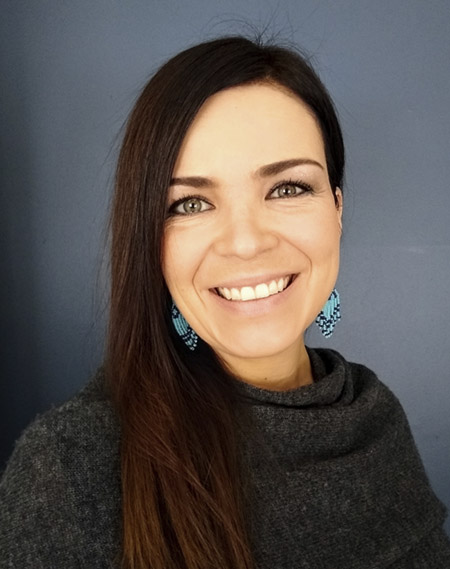
Dr. Maria Rogers

Dr. Maria Kokai
Dr. Maria Rogers and Dr. Maria Kokai, Educational and School Psychology
While the terms Educational and School Psychology are sometimes used interchangeably, they can also refer to the two parts of psychology in the education system – the researchers who come up with evidence-based best practices, and the practicing school psychologists who implement that research. Dr. Maria Rogers and Dr. Maria Kokai joined us to explain further.
Educational and School Psychology
“It’s like teaching children how to swim way before they have a chance to fall into deep water.”
Dr. Maria Kokai is a school psychologist who spent 30 years at the Toronto Catholic District School Board, the last 14 as the board’s Chief Psychologist. Now retired, she is now the chair-elect of the CPA’s Educational and School Psychology Section. Over the course of her career, she has seen a shift in the field of school psychology, as it has been moving away from a focus on assessments and dealing with children in crisis toward more of a prevention model, however this move is happening too slowly.
“COVID has really drawn attention to the importance of mental health and addressing it on a regular and consistent basis. It has also shone a light on the inequities that resulted from all the school closures and other consequences. One lesson for us and for schools I think is to make sure that mental health is addressed in a preventative way on a regular and intentional basis – as we did with anti-bullying – so that children learn coping skills, relationship skills, problem-solving. They can then apply these skills in challenging situations (which COVID has been) so they can adapt more easily with less stress.
School psychology across Canada is very different in different places. In some places we have the full range of services school psychologists are capable of providing, and in others there’s a very narrow focus on assessments and problems. What we would like to see in the profession is consistently across the board being able to provide equitable and accessible services to all students regardless of where they live, which province, a city or rural. Everybody should have access to services in an equitable way in the future. We’re not there yet.”
This focus on prevention is something school psychologists are advocating to see across all school boards across Canada. There has been significant progress in this direction over the past decade or so, but there is still a lot of work to do. Dr. Maria Rogers is a professor in the school of psychology at the University of Ottawa. She is the current Chair of the Educational and School Psychology Section at the CPA. She says,
“This really points to larger systemic issues within the field. There are not enough school psychologists, and not enough are coming out of graduate programs in Canada. There aren’t enough resources allocated toward mental health in schools. We really want to move toward a preventative mental health student success approach. There are some boards and districts that are better able (better resourced) to take a preventative approach. But many larger school districts are working under a wait-to-fail approach, which is really unfortunate. There are parallels with our health care system, where we often wait for someone to be really sick instead of taking preventative measures ahead of time.”
Some of the delays in implementing preventative programs stem from a fundamental misunderstanding in the public about what it is school psychologists do. In the minds of many, school psychology is all about testing and psychoeducational assessment. This turns out to be a rather narrow and inaccurate description of school psychology, and of what school psychologists are trained to contribute to the educational system. This idea originates from a much earlier model of school psychology work, one which arose around the mid-20th century. At that time, many schools categorized students based on their abilities and their disabilities, and they required school psychologists to participate in this classification by testing students for their eligibility for various programs. But school psychologists have a much wider range of skills and expertise. And misunderstanding or underutilizing that expertise can deprive students of a wide range of services they could otherwise be receiving. Dr. Kokai explains further.
“A lot of the public still thinks school psychologists deal primarily with students who are having problems. That’s one reason people talk a lot about assessment waitlists which are endless and a constant problem. If school psychologists had the opportunity to focus on preventative measures – mental health prevention, promotion, and early identification and intervention of potential learning and mental health problems – then those severe problems could often be prevented and there would be less need for assessments for severe problems. We advocate for a full range of school psychology services and it is for this reason – shifting the focus from strictly problems to a more preventative approach means we don’t wait for those problems to become more severe.”
Some regions have moved faster than others in focusing on student well-being, and Dr. Kokai points to one place where it is working.
“A good example is an organization called School Mental Health Ontario, which has an advisory role to the ministry of education and a resource to school boards. About a decade ago, the ministry of education in Ontario added student well-being to their goals in addition to student achievement. This meant that schools are now required to focus on student wellness and mental health and also address issues related to mental health. During that decade, a lot of progress has been made in general, and some progress in terms of using the skills of school psychologists to support the prevention and early intervention areas.”
The biggest change in school psychology in the past, say, 30 years is the narrowing of the research-to-practice gap. There has been a larger systematic effort to translate knowledge from researchers to practitioners, to make sure those psychologists and other education professionals who work with children can access research findings and apply this knowledge in evidence-based practices with kids in schools. Dr. Rogers wears both hats, as both a researcher and a practitioner.
“I do research in educational psychology as well as being a practitioner. I think that overall, the research has led us to a deeper understanding of the intersections between children’s mental health and children’s learning. At one time the two constructs would have been considered separate elements. The research has brought those disciplines together to understand how those are inseparable domains of a child’s life. What I’m seeing as well is more of a focus on researchers from around the world working together and learning from one another. We’re pooling data and resources from regions around the world to allow for larger-scale and bigger-picture investigations.”
The difference between ‘educational psychologists’ and ‘school psychologists’ is not quite as simple as the idea that ‘educational’ refers to researchers and ‘school’ refers to practitioners. Some regions in Canada and elsewhere in the world use the terms interchangeably. For the CPA’s Educational and School Psychology Section though, ‘educational – research’ and ‘school – practice’ has become a useful shorthand and is understood well by those in the field. Researchers create the science, practitioners apply it. Dr. Kokai explains,
“School psychology is applying the science of psychology in school settings. School psychologists apply knowledge and expertise in the areas of learning, mental health, behaviour and child development to help all students thrive and become the best they can be. They also connect with and support those who are most important in the children’s lives – parents, teachers, communities. It’s a very collaborative type of work in the interest of our children and youth.”
That collaboration has borne a lot of fruit over the past few decades, as practices change and focuses shift in the goal of best helping students to maintain well-being and thrive in a school setting. Dr. Rogers gives an example.
“Starting in the early 2000s, researchers started to really look at the concept of self-regulation or emotion-regulation. Some researchers started to look at it in a classroom context, and how self-regulation impacts learning. A number of researchers, and more practice-focused people like Stuart Shanker, built curriculums and supports for teachers around understanding self-regulation and how it impacts behaviour. That allowed for an improved understanding for educators.”
Psychologists and researchers have also been involved collaboratively in new methods for teaching children how to read. One of the places where a lot of this work has been done is at Sick Kids in Toronto. When Dr. Kokai was the Chief Psychologist of the Toronto Catholic District School Board, they were one of Sick Kids’ experimental sites. It was a direct link between educational practitioners and researchers. Dr. Rogers was doing her internship at Sick Kids about fifteen years ago when this new program began. She says,
“There has been a tremendous amount of attention in recent years around how we should be teaching children to read. A lot of researchers in Canada, primarily out of Sick Kids, did years of research on phonological processing and reading comprehension. They developed a program called ‘Empower’ which is an extremely rigorous and evidence-based reading remediation program. When I was doing my internship at Sick Kids about fifteen years ago, Empower was just starting to be implemented in schools in Toronto, and now it’s being used in schools across the country and teachers are being trained in the program.”
The influence of science on school psychology is just one part of this large collaborative system. Psychologists of all kinds collaborate and learn from one another. The skills imparted by a school psychologist can be useful for more than just the student. Dr. Kokai recalls assisting families in the context of helping a child.
“If you are a parent, you would use similar communication and behaviour management practices that we would maybe recommend with teachers. How to communicate, how to establish positive relationships with children, to help them become more independent and deal with peer pressure or bullies. Many of these skills very much apply to adults as well. Your relationships in your workplace, your community, and so on.”
Dr. Rogers, who works as a clinical psychologist in addition to her work at the University of Ottawa, sees the influence this kind of collaborative mindset has had on all parts of the discipline.
“One of the things clinical psychology may have learned a little bit from school psychology is this holistic viewpoint of the child within their system. When we’re working with a child in a school psychology setting, we’re working with them in the context of the school environment, or their families, or the educational system as a whole – often all three. Traditionally, clinical psychology tends to be more individual-focused, and there have been some great lessons that have come from schools.”
You have probably seen parents complaining online about the “new math”. The way math is being taught in many schools is changing and many parents, particularly millennial parents, are finding it hard to grasp – what do you mean you’re not carrying the one any more? That’s how I learned and consarn it, it worked for me! (We’re of course referring to millennials who talk like 19th-century prospectors.) There really isn’t a ‘new math’. Math remains the same. 2+2=4. n! is equal to n x (n-1)…1. What has changed is the method in which it is delivered, which puts a greater focus on understanding the concepts than it does on arriving at the correct answer. But the resulting process is different enough that parents and children now have something of a disconnect when trying to work together on math homework. Dr. Kokai says that while researchers have been studying this for a while, as far as she knows psychologists were minimally or not at all involved in the implementation of these new programs.
“This seems to be an example of ‘silos’, that we sometimes talk about in education. In this math silo, psychologists were not involved. What we are trying to do as school psychologists is trying to support students with learning disabilities to help them acquire math skills. But I know that there are researchers here in Ontario and likely elsewhere who are focusing now on math and the basic skills in math. We will have to listen to these scientists and researchers and build a math curriculum that takes those findings into account.”
There are many good reasons to get psychologists involved – in all areas of education, of course, but specifically in math. Dr. Rogers says that “unlike other most other subject areas, there’s a cognitive-psychological aspect to math where you either feel like you’re good at math or you’re not. And that self-perception seems to start very young.” Helping kids through that from a very young age goes right to the heart of the prevention argument – the earlier you can intervene, the better the outcome for the student both emotionally and academically. And the more likely they will be able to swim once the deep water arrives.
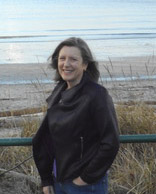
Dr. Elizabeth Hartney
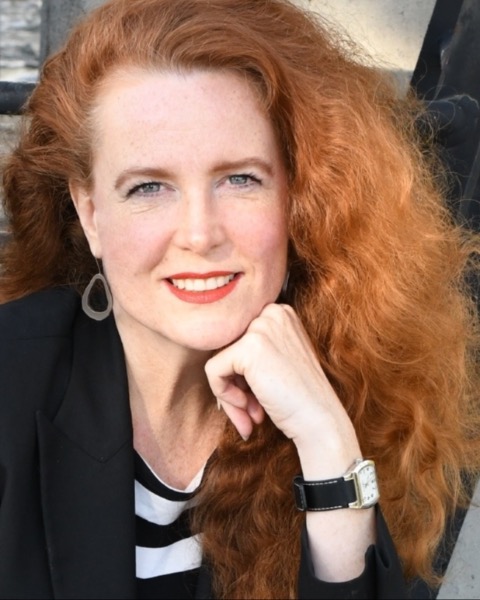
Dr. Mari Swingle
Dr. Elizabeth Hartney and Dr. Mari Swingle , Quantitative Electrophysiology
Quantitative Electrophysiology studies electrical activity in the brain. We spoke with Dr. Elizabeth Hartney and Dr. Mari Swingle about the real value of lie detector technology and the value of boredom.
Quantitative Electrophysiology
No lies detected
There’s a scene in a Seinfeld episode where Jerry is interrogated using a lie detector by a police sergeant who doesn’t believe him when he says he’s never watched an episode of Melrose Place. Thanks to some advice from George (“it’s not a lie if you believe it to be true!”) he does fairly well until anxiety gets the better of him and he cracks under the pressure, admitting to being very much into Melrose Place. For an examination of the ‘femmephobia’ present in this scene, see the spotlight on Sexual Orientation and Gender Identity earlier in Psychology Month!
We’ve all seen similar scenes on TV and in movies, where people have electrodes attached to their fingers and hands, and where the machine quantifies their response to the questions being posed. I think most of us know by now that the machine is not actually measuring truthfulness, but rather anxiety. And while it is not very useful in its purported purpose – the detection of lies – this technology is actually very useful in the detection of anxiety! This is the realm of quantitative electrophysiology.
Dr. Mari Swingle is a practicing clinician, a researcher, an author and a presenter. She has a PhD in psychology and an MA in education, and she is certified in neuroelectrophysiology. She is the treasurer of the CPA’s Quantitative Electrophysiology section. She describes the discipline this way:
“We read the electrical activity from the brain, which tells us so many things. We can read from the upper levels of the cortex and get lots of information, and we can also go very deep into structures and circuitry within the brain. You need extremely sophisticated equipment to do this, and you need extremely sophisticated clinicians to read all of it.”
Another of those extremely sophisticated clinicians is Dr. Elizabeth Hartney, the Chair of the Quantitative Electrophysiology Section. Dr. Hartney is a registered psychologist in BC, and is board certified in neurofeedback and biofeedback (two predominant forms of quantitative electrophysiology).
“We’re certified by the BCIA, which stands for the Biofeedback Certification International Alliance. They provide biofeedback certification across the world. Biofeedback includes a few subdisciplines. The one Mari and I most closely work in is EEG (electroencephalogram) neurofeedback – but we also have peripheral biofeedback, which picks up electrical activity from the nervous system through the rest of the body. So we could be applying electrodes to your fingertips, to the palms of your hand, to read your heartrate variability or skin conductance. It’s basically all the stuff you see in the lie detector test on TV – which isn’t really great at detecting lies, but is really good for detecting anxiety. Anxiety is one of the things we work with a lot.”
Biofeedback is about becoming more aware of, and gaining greater control over, the functions of one’s own body. It can be used to help people experiencing anything from irritable bowel syndrome to side effects from chemotherapy. Dr. Hartney continues,
“We work with people to get feedback on their breathing, their heart rate, their blood pressure, all kinds of conditions that can be psychosomatic and involve both the mind and the body. There are specializations that others do in this space around urinary incontinence. The whole approach is about empowering the individual to gain control over their own body and their own brain – and in some cases their own bladder!”
In case the words ‘quantitative electrophysiology’, ‘neurofeedback’ and ‘biofeedback’ weren’t daunting enough, the clinicians who work in this discipline tend to add a few more. Like physiology, which also describes their work! There’s neurophysiology, which deals with the signals from the brain. There’s also general physiology, which deals with the full body, including the brain. Depending on the circumstance, quantitative electrophysiologists might be talking about only the body, or only the brain, or both in tandem. Dr. Swingle talks about two different ways this might look.
“There are huge volumes of research on what we call ‘brain mapping’. So, how do we read the electricity and what does it tell us? We work to either clinical or normative baselines. Normative baselines are measurements taken from brains of individuals who don’t have any overt symptoms or diagnoses. They don’t have ADHD, depression, psychosis, and so on. We look at what the brain looks like in that case, and we can then treat people who are suffering from ADHD, depression, or psychosis and we help them get to normative (or typical). What Elizabeth and I primarily do is the other branch, working from clinical databases. This means we have electrical readings from the brains of individuals who do suffer from anxiety, insomnia, scholastic difficulties, you name it. We then train the brain away from that measurement.”
This mostly involves taking existing processes in certain areas of the brain and either enhancing or diminishing their strength. This can be an effective way to treat depression, anxiety, ADHD and other conditions. When it comes to situations that involve actual damage to the brain itself, the treatment looks much different. Says Dr. Swingle,
“When we’re dealing with very severe strokes, or structural brain differences, then we’re looking for different pathways [what is often referred to as neuroplasticity – the ability of the brain to overcome damaged parts by learning how to use other parts to perform the same functions]. The majority of the work we’re doing is working toward making existing pathways more efficient. Some are underpowered and some are overpowered. A good example is the foundational work of Davidson. He looked at the balance of the frontal lobes, left vs right. He found that if the cortical electricity was more than 15% higher on one lobe than on the other, that was almost always indicative of emotional deregulation.”
Showing the brain an easier way
The field of quantitative electrophysiology has changed a great deal in the last twenty years, most notably because of the advent of the personal computer and greater technological power. For a discipline that relies enormously on technology, this has been a boon – but has also made disorders, and the treatment of them, much more complex. Dr. Hartney reflects on this change.
“It has actually become easier – but also much more complicated – with the rise of personal computers. They’ve made the process of getting and giving feedback from and to the brain much more entertaining. Therein lies a problem. Before we had computers, psychologists like us used lights and sounds that would light up or ding when our brain was doing what we were training it to do. That would be the ‘feedback’ part of the ‘neurofeedback’ or ‘biofeedback’. That actually worked really well! What we have now is fancy computer games and puzzles and videos that go on and off according to what your brain is doing and we have fantastic arrays that we can observe that show the frequencies of peoples’ brainwaves in several different sites at once.”
Dr Swingle provides a specific example of the kind of work she and Dr. Hartney might do for a client.
“We might want to augment a brainwave at one location on the brain for a specific purpose. For example, we want to augment theta [a type of brainwave] at the back of the brain because when theta is higher at the back of the brain you have greater stress tolerance. We can use that to help with insomnia, anxiety, addictions, all these types of ailments that would benefit from the brain being quieter. We attach an electrode to a very specific site, and ask an individual to interact with a computer. A really simple way of doing this is when the theta moves in minutia, a cricket jumps on the screen. Let’s say we have a young person who is having trouble with extreme anxiety and they need help with calming. All we do is ask them to make the cricket jump. Little ones don’t ask how do you do that, why do you do that – they just say okay. So it’s really easy to work with munchkins! We’re behind the scenes watching the pure wave forms and the amplitudes and ratios so we can see the frequency of theta come up, and manipulating thresholds to make it easier or harder to make the cricket jump. What we’re doing is giving that child the control to augment the theta wave on their own. When we show the brain an easier way to do something, it will take it.”
Boing boing boing boring
As I’m writing this spotlight right now, there is a TV on mute in the background. Team Canada is playing for the gold medal against the United States in the Olympics on the screen. My phone sits next to me and is constantly issuing notifications – Dr. Jonathan Stea just liked my tweet, CTV Ottawa has started a live video on Instagram from the protests in downtown Ottawa. I haven’t played Words With Friends in three weeks, and they want me to know they miss me. I have to stop typing every now and then because email notifications obstruct the screen, and I’ve received 14 since I started writing. Dr. Swingle has written a book called i-Minds: How Cell Phones, Computers, Gaming, and Social Media are Changing our Brains, our Behavior, and the Evolution of our Species about just this sort of thing. She says,
“An issue in our discipline is that things have become so fancy that they’re not as efficient. A cricket jumping for five minutes is fun. A cricket jumping for forty minutes is boring! And the kids go back to these incredibly involved amazing-looking video games. So what happens is we’ll get really good data in session, but the brain doesn’t change on any permanent level. When working with children, especially those with attention difficulties, screens have to be a little bit boring to work. That’s become something of an inner conflict within our discipline.”
So how has that changed in the past decades? Do kids find the cricket boring today because they are used to a much higher level of interactive screen time with more stimulation? If they had been exposed to this in 1988, would they have found the cricket to be entertaining for a longer time? Dr. Swingle says yes – and no.
“You could sustain the attention longer with lesser stimuli 20 years ago, but it was still boring! It’s a larger problem now because a lot of interactions with technology are affecting the development of childrens’ brains. A lot of children don’t know how to ‘sustain the mundane’ because everything in their lives is going at such a high pace. If you do one hour of neurotherapy a week, but 20 hours of gaming a week, the gaming is likely to win. And it does the exact opposite of neurotherapy, it trains the brain to respond only to excitement.”
If you hop on a treadmill or a rowing machine for 30 minutes a day, that’s likely very good for you – but if you spend the rest of your day eating nothing but poutine and peanut butter cups, the effects of that rowing machine will likely be greatly diminished, and you are unlikely to see the results you desire.
At the same time, if you go to the gym every day for three months, working with a personal trainer to figure out an ideal workout regimen, you might be able to maintain the fitness level you desire afterward by going only once a week. This is the goal of electrophysiology – that the changes you make in your brain become part of you, and they stay after the process. Says Dr. Hartney,
“The ultimate goal is that you want your client to learn how to change state without the help of the feedback. One of the things we’re dealing with is that young people in particular see this as a form of entertainment, and don’t necessarily understand that it’s an educational process. We’re trying to teach them to change state, but because they’re overloaded with the bells and whistles and animations it’s much harder for them to generalize what they’ve learned in a session outside that environment.”
On the value of boredom
Every Friday night, my family does a Games Night with friends over Zoom. We play a game using our phones as we all share a screen. The rapid advancement of technology over the last several years has made such incredible things possible, and it’s great that we’re able to connect this way, especially during a pandemic where other methods of connection might not be available to us. But I notice the kids approach it a little differently than the adults. While we’re waiting for a game to load, they’re playing a different game on their phone. Or, while it’s not their turn they’re dealing out cards on the table here in the house so there’s another game to play during the 90 second gaps in action. Dr. Hartney explains why this is becoming more common.
“We’re of an age where being bored was a normal part of childhood. If you went to your parents and complained about being bored they’d give you a chore, or suggest you figure it out on your own. We grew up expecting things to be a bit boring and seeking out our own entertainment. This generation just don’t have that same kind of baseline.”
Like Dr. Hartney, Dr. Swingle is also a big fan of boredom!
“All creativity and all innovation comes from boredom. If you don’t have boredom, you don’t have curiosity. You don’t have time to assimilate things and see patterns, and so on. We’re going far beyond our work in quantitative electrophysiology to the bigger picture now, but they are intrinsically linked.”
Before we go too far beyond quantitative electrophysiology, we’ll leave it here.
Stay bored, folks!
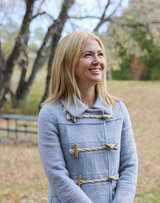
Dr. Jen Theule
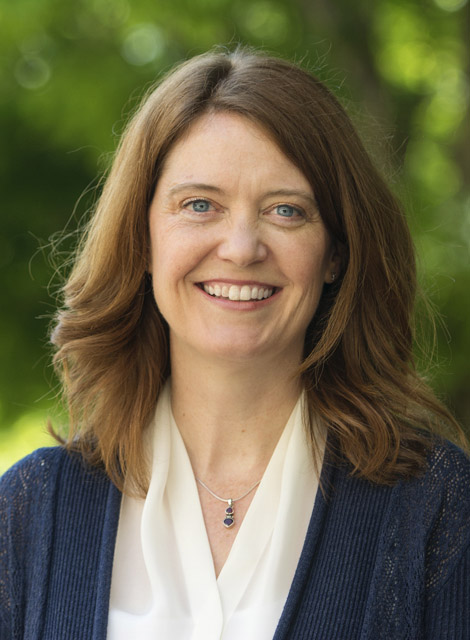
Dr. Cathy Costigan
Dr. Jen Theule and Dr. Cathy Costigan, Family Psychology
The field of family psychology is as dynamic and complex as families themselves. We spoke to Dr. Jen Theule and Dr. Cathy Costigan about families, definitions, and the vast ‘systems’ that encompass them all.
“No healthy person is totally independent.”
At the end of The Godfather Part III, Michael Corleone (Al Pacino) dies alone in a courtyard, having apparently cut all ties with his family and the family business. On closer examination however, he can never have fully cut ties with his family – they made him who he is, and they shaped the path of his entire life. In fact, even the courtyard where he is sitting as he slumps over and dies is in the villa belonging to Corleone family friend Don Tommasino.
In our culture we tend to think about people as individuals much of the time. In this way, we think of a good health individual separately from their family, and rarely think about them in that larger context. Family psychologists, on the other hand, think about that context all the time. Dr. Jen Theule is an Associate Professor at the University of Manitoba in the school and clinical psychology programs, and the Chair of the Family Psychology Section of the CPA. She says many things we experience in our daily lives come about as a result of family psychology.
“Rooming in at the hospital instead of the baby going to a nursery as they once did – that’s a family psychology thing. Inviting family members into medical appointments and discussions. Parent-teacher meetings. Anything where we involve your family context, and involve more people in the discussion, those are the kinds of things family psychologists push for.”
When Amerigo Bonasera comes to visit Don Corleone on the day of his daughter’s wedding to ask for a favour, it is not just him and the Godfather in the room. There are others, among them the family consigliere Tom Hagen (Robert Duvall). These decisions are not made by the Godfather alone – he values input from those closest to him.
There are the discoveries brought about by science and the study of families, and then there are the applications of those innovations in dealing with family dynamics, often but not always in a therapy scenario. Says Dr. Theule,
“I think of family psychology as two things. One, it’s the study of ‘the family’ – parent-child relationships, romantic relationships, multigenerational families, close friendship groups, that kind of thing. Learning about how families operate, both the larger family units and all the subsystems within them. And two, it’s the application of that research to interventions. Family therapy, couples counselling, those kinds of things.”
Dr. Cathy Costigan is a Professor in the psychology department at the University of Victoria.
“I teach about what we call ‘developmental psychopathology’, or the mental health challenges of children and youth. I teach that from a strong family lens, all about how we understand childrens’ normal and abnormal development. I also teach family therapy to graduate students, which involves ways to intervene at a ‘systems level’. We see problems not as ‘there’s something broken within a child that we need to fix’ but rather by looking at the relationships among the different family members and their communication patterns. It is these broader ‘systems’ issues that might be creating or maintaining some stresses in a family where the child might be the one expressing the stress in the family by say, acting out in school or having meltdowns at home.”
Both Dr. Theule and Dr. Costigan speak a lot about ‘systems’. It’s a way to be a little more broad and inclusive when speaking about families. It’s not just a nuclear family of two moms and two kids – it could also refer to the extended family of grandparents and cousins, or a close-knit friend group, or a large hippie commune in California that has been running continuously since the 70s. Dr. Theule explains,
“Everyone’s impacted by various systems. Whether that’s who you work with, or who you live with, or are related to, or your friend group. All of those things operate quite similarly to families. Most people would consider a foster family to be a family unit of a sort, but the larger world might struggle with things like ‘is my roommate my family?’ By and large, society still considers ‘family’ to be a nuclear family – a mom and a dad and 1-4 children. But in some communities families are more broadly defined, and are larger. So when I use the term ‘system’ people might be more okay with the idea that the family can include Auntie or Grandma – or even roommates.”
How big, exactly, is the Corleone ‘family’ in the Godfather movies? Is it limited to just the immediate family members – Vito, Michael, Fredo, Sonny, and Connie? Does it extend to spouses? Children? Is Tom Hagen, informally adopted by the Corleones at a young age, truly a family member? What about all the ‘made’ guys – is that official induction into the organization, or into the family itself? In fact, where does the ‘family’ end and the ‘criminal enterprise’ begin?
Every community, and every culture, defines ‘family’ a little bit differently. For Dr. Costigan, it is these definitions of family, and the cultural differences in what constitutes a healthy family, that interests her.
“These days my research is predominantly focused on immigrant and refugee families. Looking at ways in which families under stress and cultural adjustment harness the resources and strengths within them as they go through changes from one country to another, along with the various traumas that might have accompanied that journey to come to Canada. How do they maintain strong family ties against this backdrop of many cultural differences, where each individual family member might be adjusting to Canadian culture in different ways and at different rates that might create tensions within the family?”
One of the ways these tensions manifest themselves might be for parents who are here in Canada, but whose own parents and extended families are still living back home. With today’s global technology, they are more connected to those remote family members than they could ever have been before. Sometimes that connection puts parents in a tough situation. The expectations of their own parents as to the proper way to raise children might now contrast greatly with the expectations of their own children who are growing up in Canada. It’s this kind of tension Dr. Costigan deals with often within the families with whom she works.
Family Psychology, as a discipline, has been moving this way for some time. An increased emphasis has been placed on cultural variation in families. It’s moving away from an implicit assumption that the Canadian context (the white family with Western values) is the way a family should function. Instead, the focus is more on what good and effective parenting looks like, or good communication within a family. This, of course, varies greatly by culture. Healthy family functioning doesn’t look the same for everyone, and acknowledging this has been a big step forward for family psychology over the past few decades. Dr. Costigan gives an example:
“In White Western culture, we have the primacy of the marital relationship between partners, whether that’s same-sex or opposite-sex. The partners play a leadership role in the family and there should be good boundaries around the decision-making in the family, where kids aren’t really a part of that. We might consider it problematic if kids are too privy to adult issues or too involved in adult decision-making. In some cultures, however, the primary relationship is parent-child. It can be desirable for children to contribute to the family at a much higher level than we expect in Canadian culture. Fulfilling those family obligations is really a strength, and it’s part of a healthy adaptation for that child from that cultural lens.”
For psychologists who specialize in working with families, their work can involve every moment of the lifespan, from dealing with a newborn arrival into the family to planning for end-of-life care for a parent or grandparent. Dr. Costigan says that in all those situations, although the approach might be vastly different, the fundamental principles remain the same.
“The core family functioning systems principles around communication and problem-solving have relevance at every phase of the lifespan. How do you get families to share what they’re thinking in respectful and helpful ways, how do you get them to solve problems in ways where everyone feels heard? Adult children can live their own lives fairly independently. Then when their parents start to decline they have to interact with one another and deal with each other much more, in a really emotional context. Some of those old wounds of childhood interaction can really rear their heads and disrupt that process. That’s an example of a prime time when psychologists might want to get involved, to help a family navigate that difficult phase of the lifespan.”
Or, maybe, psychologists might want to get involved right after the death of a family patriarch. This could potentially avoid future disagreements and betrayals, and ensure that Fredo never sealed his fate by taking sides against the family. I mean, maybe. The Godfather had some pretty difficult family dynamics and precious few psychologists.
Over the past two years, a new test has been placed on families and, by extension, the family psychologists who help them. Not only has the pandemic increased mental health difficulties, it has made it harder to reach out for the supports that could once have alleviated some of those issues. Says Dr. Theule,
“I think the last two years have put a lot of pressure on families who live together. The pandemic has taken away a lot of the larger system, and the supports that come with it like grandparents. We have a lot of great technological innovations, but those innovations aren’t going to come over and take care of your kids when they’re sick, or change a diaper for you. They don’t solve instrumental needs. In my estimation, a lot of research in the last two years has opened a lot of eyes outside the field of family psychology. Psychologists all sort of anticipated this, but to see the stress that children, people with disabilities, and older individuals – people who rely on the family system a little bit more – how impacted those individuals were by stresses to caregivers. It made people realize that maybe focusing on the adults who help those who need the extra care is one of the best ways to help those people who need extra care. For anyone who’s relying on others, a caregiver is really important and I think that may have been a shift in the larger community.”
Again, Dr. Theule is talking about systems. The future of family psychology is an integration of what the experts know now into a much larger, and more complex system that we can call a ‘family’.
“Family psychology is just starting to scratch the surface of the whole system. We’re really good at examining the parts of the system – what happens between a couple, what are the dynamics between one parent and one child, and so on – but a family isn’t just all these little parts added together, it’s greater than the sum of its parts. So how do you look at, and measure, something as complex as a family system? They vary in size, in culture, in dynamics in every single family. That’s where we’re trying to go – to look at the larger systems. Some research is being done now into triad dynamics, like one parent and two children, or two parents and one child. But the amount of complexity it adds to go from two people to three is so large that this is a huge shift already.”
Picture a diagram that you draw on a piece of paper. If you have two people (two dots on the diagram), there is only one line that can be drawn between them. Add a third person (third dot), and there are now three lines that can be drawn between individuals. One more person – three times as complex. Add a fourth, and there are now five possible lines. And so on – so you can imagine how difficult it must be when you’re dealing with a whole family system, where there can be upward of nine, ten, or even thirty people involved. Making sense of those systems might be the monumental task facing family psychology over the next several years.
Dr. Theule and Dr. Costigan will be a part of that – making sense of the incredible complexity of family systems, and coming up with more effective interventions and treatments as a result. There may, however, be one question they will not be able to answer. What, exactly, convinced Francis Ford Coppola and Al Pacino that making that third Godfather movie was a good idea?
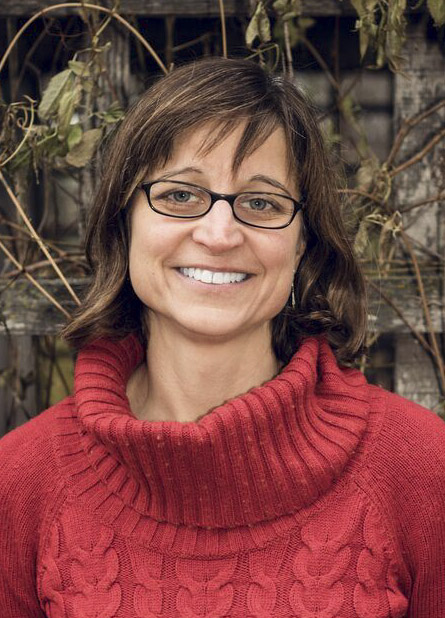
Dr. Brigitte Sabourin
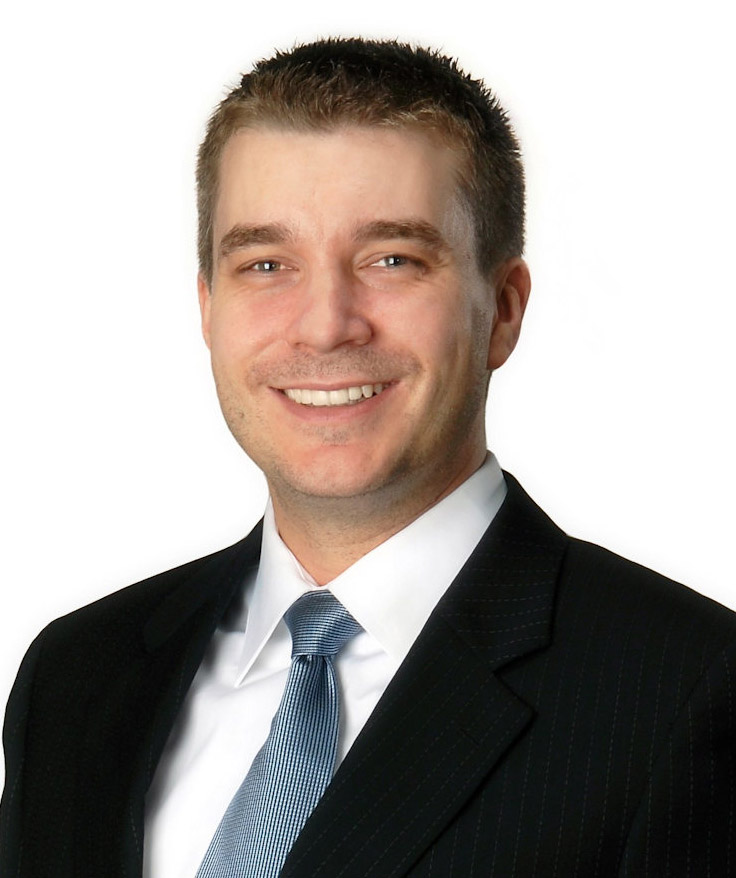
Dr. Nicholas Carleton
Dr. Brigitte Sabourin and Dr. Nicholas Carleton, Clinical Psychology
Clinical psychology is the branch of psychology most of the public thinks about when they hear the word ‘psychologist’. But we have moved far beyond the patient-lying-on-the-couch cliché, and clinical practice has entered the virtual world online. We spoke to Dr. Brigitte Sabourin and Dr. Nicholas Carleton about where clinical psychology is today.
Early in his career, Sigmund Freud specialized in hypnosis. He would hypnotize patients in order to get them to open up about their symptoms, which would then presumably reduce their severity. He was quite new to it, and not very skilled, so he needed his patients to be as relaxed as possible – so he had them lie on a couch while he smoked his cigar and told them they were getting very sleepy.
Eventually, he discovered that simply having patients talk about their symptoms in a relaxed atmosphere might be even more effective. He ditched the hypnosis, but kept the couch (and the cigar). Other psychoanalysts who followed in Freud’s footsteps adopted the couch themselves – to the point where the Imperial Leather Furniture Company in New York City became a very wealthy corporation thanks to the sales of ‘analytic couches’ in the 1940s. The psychoanalyst with the cigar and the austere couch became a ‘meme’ of sorts more than seventy years ago. One that persists to this day.
Where would the New Yorker cartoons be without the psychologist couch? Bob Mankoff, himself a former experimental psychologist, is the cartoon editor of the New Yorker. He says the analysis couch in cartoons is a useful shorthand, one that immediately conveys a power dynamic. In The Sopranos, when Tony sees his therapist, he sits in a regular comfortable armchair – but the couch is there in the background, lest we forget what kind of office this is.
Of course, the field of psychoanalysis has progressed a great deal since the heyday of the Imperial Leather Furniture Company, and sitting behind a patient’s head while they talk on your couch is a thing of the past. But powerful images, engrained in popular culture, can hold a certain amount of sway long past their expiry date. As the image of the cigar-couch-psychologist fades, so too does the stigma around seeking help for one’s mental health.
Dr. Nicholas Carleton is a Professor of psychology at the University of Regina, a registered clinical psychologist in Saskatchewan, and is currently the scientific director of the Canadian Institute for Public Safety Research and Treatment. He is encouraged by the progress of the field in debunking and breaking down stigma in seeking help for mental health concerns.
“I think we’re watching stigma fall, and I think it’s largely because psychologists are increasingly out in the community. The notion that it will look like a Mad Men episode when you walk into a psychologist’s office, with a big old leather couch and someone smoking a cigar, all of which could feel very ominous, I imagine is pretty much gone from what actually happens. I also think we’ve started to diffuse that now mythical notion of what happens a little bit.”
Dr. Brigitte Sabourin is an Assistant Professor at the University of Manitoba in the clinical health psychology department, and a practicing clinical psychologist in Winnipeg. She is the Chair of the Clinical Psychology Section at the CPA, and says the field has come a long way but the core goals remain the same.
“We can define ourselves as a field of practice where we deal with human functioning. Clinical Psychology runs the gamut from identifying human problems and solutions to promoting general physical, social, and mental wellbeing. This involves assessment, treatment, consultation, program development, program evaluation, research, mentoring, teaching…”
Dr. Sabourin specializes in clinical health psychology, at the intersection between health psychology and clinical psychology. She does her work in a tertiary care clinic dealing with people who have chronic pain. This means looking at the biopsychosocial aspects of living with a chronic health condition, and applying clinical psychology skills and behavioural health principles to try to support them. Most clinical psychologists have a specialization like this, whether it’s in a hospital setting or in dealing with specific mood disorders. This is not the only way the field has changed over the past few decades. Says Dr. Sabourin,
“I think for one thing, the field has become more diverse. Historically it was dominated by white men, and that continues to change. Our commitment to evidence-based practice is continuing to evolve in bringing together all our knowledge in terms of what we know about anything from mental disorders to human flourishing. We’re now using that knowledge a lot more in terms of improving our services and being accountable to the people we serve. I think also the settings in which we practice have evolved. You see clinical psychologists in settings anywhere from primary care to very specialized services, which means the settings and the populations we deal with are much more diverse than they used to be. I also think the acknowledgement of how helpful it can be to access services has progressed. It’s not about there being something wrong with you, or that you’re crazy – that stigma has started to go away and people are realizing that we can help anyone from an elite athlete to someone who’s really having trouble with basic day-to-day tasks.”
Bringing together that knowledge and using it in clinical practice is something both Dr. Sabourin and Dr. Carleton know well. Both are researchers in addition to clinicians. Dr. Carleton sees, and treats, a lot of first responders in Regina – particularly RCMP, as the academy is there in the city. He also does a lot of research with the RCMP and other public safety personnel (PSP). Recently he and his team created an anonymous online tool where PSP could assess their own mental health and then reach out for support should they need it. He says,
“I think we’re seeing a better integration of science and practice. We’re doing a better job of connecting with one another, and having reflexive relationships between those psychologists who are doing research and those who are doing practice. We’re seeing how science informs practice and vice versa in a more dynamic way. For example, there have been significant changes when it comes to PTSD. Thanks to clinical practice interacting very closely with research, there are now four symptom clusters instead of only three. PTSD diagnoses can now happen without having a singular event, considering the aggregate of compounding events. Certainly for our first responders and other public safety personnel, those were two huge steps forward. Public safety personnel were having difficulty specifying which event was causing them the most trouble because they would have experienced hundreds or maybe thousands of them within a single calendar year. Previously, they would go to see a psychologist and say ‘I’m in trouble’, and the psychologist might have said ‘so am I because I’m struggling to diagnose you unless you pick one event’. We’ve fixed those things, and we’re making sequential improvements and important advancements.”
Another advancement, one with which we’re all familiar by now, is technological. I am conducting this interview with Dr. Sabourin and Dr. Carleton via Zoom, and there are dozens of other virtual platforms available for meetings – and even therapy sessions. Dr. Sabourin says,
“I think something else that’s really taken off, especially since the pandemic, is the role of technology and innovation in terms of accessing psychological services. The idea that you have to go into a psychologist’s office for even a fifteen-minute session somewhere in a forbidding building is no longer how we think about clinical psychology. Now we can access video conferencing platforms, phone apps, and so on. For example, we’re doing a lot of our group-based programming where participants can be in the comfort of their own home, and not have to drive to the hospital and pay for parking, and figure out where they’re going and all that. Decreasing the barriers to care and increasing the flexibility of how we do things is an exciting development. It has been moving that way for a while, but in the last two years with the pandemic has really taken off.”
Doing virtual therapy was a pretty fringe notion two years ago before the pandemic hit, but over the course of the last two years a lot has changed. Psychologists who were wary of holding sessions on virtual platforms have learned to do so effectively, and the prevalence of this kind of technology has eliminated some barriers to care, made more psychological help available, and gone a long way toward the continued erosion of the stigma surrounding the seeking of mental health support. Dr. Carleton says it has also helped in other ways.
“At the risk of speaking heresy, I actually think that being required to work remotely – while it may have stymied conferences – has actually increased collaboration in many ways. I can meet with someone in Australia at the end of my day and beginning of theirs, and for half an hour we can swap notes. We’re not locked into a mindset that requires one of us to fly somewhere for 16 hours.”
Dr. Sabourin agrees. Not only are collaborations easier, but getting more psychological care to more people is as well.
“We’re looking at how to increase resources and our reach. Part of this is adapting the ‘stepped care’ model that’s rolling across the country. It’s a little bit of psychology for a lot of people, and then as the needs increase and get more complex you get to a more intense model. We were reading an article in a research journal about this model in Ottawa, and the director of my clinic was saying ‘I wish we could just fly to Ottawa and sit down and talk to this person!’ And I said ‘I’ll set up a Zoom meeting for Tuesday’. It can just happen so fast and we’re so used to the platforms that it almost feels like we are face to face when we talk this way.”
I do this food order thing, where I get food delivered from local farms in my area. The food gets delivered by Miles [not his real name], a big burly man with a beard down to his belt buckle who drives the enormous freezer truck. A little while ago we were talking about this new job I had just started with the Canadian Psychological Association, and Miles told me about a co-worker he was worried about who was becoming more withdrawn. He was worried about his friend’s mental health. Should I reach out to him? Should I leave it alone? As a non-psychologist, I couldn’t give great advice about exactly what to do, but I thought that gently reaching out could never hurt. The next few times I saw Miles he would give me updates about how his friend was doing. One day last summer when I was working out of my garage, Miles and this co-worker were both in the truck and came in to sit for a few minutes. Now every time they make a delivery to my house, we sit for fifteen minutes or so to talk a little bit about our own mental health. How we’re holding up with this pandemic, what the struggles have been for ourselves and our families. Dr. Carleton says this kind of thing is happening more and more often.
“We’ve seen huge improvements in the discussion of mental health. Instead of it being something that’s kept in the dark, people are having frank conversations. The fact that we’re at a stage where we’re trying to mobilize knowledge about mental health to help transition toward substantial change – that’s a monumental shift even in the last two decades. We may not be exactly sure what we’re going to do next, but at least now we’re no longer denying that we have important opportunities for the population with mental health. I think a lot of that’s come about as a result of the advocacy of clinical psychologists and other mental health professionals.”
We’re not all the way there yet – some stigma remains and hangs on, like that image of the cigar and the couch. But mental health professionals continue to work at eradicating it, and clinical psychologists are no exception. Dr. Sabourin sums up the message very well.
“It’s okay if you’re struggling – you’re human. Being a human being on this planet is not easy! We’re all trying to live our life but we didn’t choose who our parents were, we didn’t choose our genes, we didn’t choose the fact that our brains are probably still programmed to help us survive 20,000 years ago and our environment has changed substantially since then. It’s about normalizing that it’s okay when there are times in your life that are harder than other times. We see these amazing human beings who have flourished – like Clara Hughes, the Olympic athlete who recognizes she’s had trouble. We have really famous actors and politicians who are becoming open with their difficulties and that something can be done about it. We’re recognizing as a society that it’s not the case that you’re either well or you’re sick. You can find tweaks. You can find ways of having a bit of an easier go, becoming more comfortable in your skin, being more present in engaging with your kids. Many of us struggle, and the fact that you’re seeing a clinical psychologist doesn’t mean there’s something wrong with you, we’re just all human beings trying to do the best that we can in this not-easy world.”
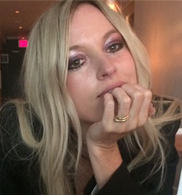
Dr. Keira Stockdale

Dr. Sandy Jung
Dr. Keira Stockdale and Dr. Sandy Jung, Criminal Justice Psychology
The field of criminal justice is vast, and psychologists are involved with nearly every facet of it, from prevention to probation. We spoke with Dr. Keira Stockdale and Dr. Sandy Jung about their work in this space, and where the profession is headed from here.
“I was one of those people who watched shows like CSI when they first came on the air…”
Dr. Sandy Jung’s eyes just rolled out of the back of her head. “Oh no! No, Keira, don’t say that! Noooooo!”
Dr. Keira Stockdale is a psychologist with the Saskatoon Police Service and an adjunct faculty member at the University of Saskatchewan in the department of psychology. She is the current Chair of the CPA’s Criminal Justice Section, and she’s explaining what got her interested in psychology and, in particular, the psychology of criminal justice.
Dr. Sandy Jung is a Professor at MacEwan University in Edmonton. Her research is in forensic psychology, and she is trying to keep it together as she hears the words she dreads the most. TV shows that represent criminal justice science, in inaccurate and badly misleading ways, have been a thorn in her side for some time, it seems!
“I’m cringing because I hear this from students all the time. They get interested because they watch these TV shows and it’s sexy, it’s very interesting. To be honest I never watch crime shows and I still hate them to this day! So when students recommend something like Dexter to me, I just can’t. I won’t.”
Any student who thinks they’re getting into the world of CSI when they head off to school is quickly disabused of the notion. No crime is solved through DNA analysis and the identification of eucalyptus on a shoe sole in an hour. Very few investigations are enhanced by the taking off, and then putting back on, of sunglasses over the majestic riff of Won’t Get Fooled Again. This is, of course, true for Dr. Stockdale as well. She continues,
“I went to U of T to do a forensic science degree. And in the process of doing gel blots to compare the DNA to see if they match at a crime scene, I realized that the classes I was taking about the people who were actually perpetrating these crimes were way more interesting. From there I was fortunate enough to do a placement with the OPP in their Behavioural Analysis Unit. After that I just continued to get more and more people-focused, and that took me down the path of clinical forensic psychology!”
Yes, the Behavioural Analysis Unit is a real thing. Many of us even know all the shorthand – BAU! Unsubs! CODIS! Thanks a bunch, Criminal Minds! It will likely not come as a surprise to learn that a real-life BAU has precious few private jets, video-game spinoffs, or cameos by Jason Alexander. Dr. Stockdale says,
“When you walk in there are no pictures of people and phones ringing and all that – it’s just a quiet office where people do really good investigative work. They also develop risk-assessment tools or other methodologies that we can use to combat crime such as domestic violence and internet-facilitated sexual exploitation.”
So what, then, do psychologists who specialize in criminal justice actually do? Is it like B.D. Wong’s character on Law & Order, or more like John Francis Daley’s character on Bones…”no”. Dr Jung says there are two main types of psychologist involved with criminal justice, but that the field is incredibly broad with hundreds of different specializations.
“A clinician is probably the prototype of what we think of as a ‘Criminal Justice Psychologist’, but that’s only one half of it. The other half is the research and experimental psychology side. Not just research within practical settings like correctional or treatment facilities, but also research in terms of how the legal system intersects with psychology. Every decision that we make has a psychological component to it – it’s making decisions about how you interview a witness, or a suspect. How you’re gathering data and how you interpret it. And in the courts there are so many different decisions that get made that psychologists examine, like sentencing or jury decision making.”
Jury decision making, you mean like that guy in Bull who…”absolutely not”. Dr. Stockdale says that most psychologists who work in this space are, in a way, jacks of all trades and masters of just one or two.
“To be a good forensic or criminal justice or police psychologist, you’ve got to be a good generalist. We’re bringing a lot of our general psychological knowledge and our clinical understanding into this area of practice. At present, working with a police service, I’m working with an interdisciplinary team that tries to assess risk and intervene with serious violent offenders. The team has prosecutors, police, community probation, correctional facilities and mental health workers – and also psychology residents. We’ve developed risk assessment tools as psychologists that our partners in, say, probation or policing use. So part of our work is educating this team about how we can work together to really help these justice-involved individuals with histories of violence. Many have mental health needs, and we want them to get the services they require while promoting community safety. At present, we’re looking to develop greater virtual services and we’re also doing some great stuff with big data, predictive analytics, and modelling to try to improve risk assessment technologies. How do we assess needs for our clients, how do we know who’s at risk for re-offending, and why. We’re also applying that same technology to missing persons cases.”
One of the most well-known missing persons cases in the past decade in Canada happened in the Village in Toronto. Between 2010 and 2017, eight men from the gay community went missing. It was eventually determined that they had been murdered by a serial killer, who was arrested in 2018. The handling of the initial investigations by the Toronto Police Service into these missing people has come under heavy criticism and led to several inquiries and reviews. The external independent review was conducted by Judge Gloria Epstein. It was a failure on the part of the police, and the gay community in Toronto was failed. But Dr. Stockdale is hopeful that meaningful change will come about as a result.
“I’m optimistic that we’re going to see more and more academic partnerships with all areas of criminal justice going forward. We did work around missing persons, that came out of people reported missing in The Village in Toronto. In Judge Epstein’s report, she recommends that police departments (in this case Toronto) work with academic institutions and researchers because then you have people to support you in evaluating your programs and initiatives. People can’t do it alone – it’s a resource issue, but it’s also an issue of cognitive thinking and attitudes. The more we can work in interdisciplinary teams in criminal justice, the more we can guard against biases and maybe test out some of our assumptions or interventions. We can then tailor those going forward.”
The field of criminal justice psychology is always moving forward, always changing, and always (if slowly) getting better. Dr. Jung says the key to this is knowledge mobilization – the process by which research comes up with data and answers and then translates that work into real-world changes and best practices.
“We need to have a lot more knowledge mobilization going forward. There’s still a ton of research that has to be done, but we need to do better at implementing things that we already do know. There are some really nitty-gritty practical questions that we can help to answer. We know that high-risk groups should receive more supervision, but where is the cutoff? How many hours should we spend administering treatment? We’re disseminating this information, but we’re not putting it to use in practical terms the way we could be. The reality is that it takes about seventeen years before any evidence gets implemented. I remember hearing that citation once and thinking ‘well, that’s depressing!’”
Seventeen years is indeed a depressing statistic, and change can certainly appear slow. But Dr. Stockdale says she can see that change in many facets of criminal justice, including the work that she herself has done.
“I look at some of the psychological assessment reports that I wrote for justice-involved individuals years ago, and I realize just how much practice has changed. Canadians are known internationally for our development of risk assessment tools and technologies. Assessment years ago was a judgement call – will this person re-offend? Maybe? Now it’s a lot more structured and evidence-based. Now we look at a bunch of factors and figure out where we can intervene or provide support to reduce a person’s risk for violence, sexual offending or general criminality. Our treatment programs are much more focused than they were decades ago, as we really hone in on these dynamics or changeable factors.
We’re moving from negative and stigmatizing labels toward more positive language. Like ‘justice-involved individuals’ instead of ‘offenders’ or ‘inmates’. We are also moving away from focusing on the negative in treatment of people – and I think this is particularly important for youth in the criminal justice system – we’re accentuating the positive things like strength and resiliency.”
Another way criminal justice is changing is in terms of social justice. Again, this is a very slow process, as the justice system has so many giant components that it is a huge ship to steer. Dr. Jung says that researchers in the area have historically stayed in their own silos, but that this is changing now with social media and digital data making collaboration and interdisciplinary work easier and more accessible. She also says there is a long, long way to go before the justice system in Canada and those around the world achieve the equity toward which they strive.
“There are a few court cases that really brought attention to something that everyone already knew existed, but that we hadn’t investigated as much as we should have. It takes those cases to remind us that this is an incredibly important issue. When it comes to equity diversity and inclusion, there are certain subgroups that have been looked at but not all – we’ve done very little when it comes to gender, for example. I’d say we’re barely scratching the surface of the issue.”
Dr. Stockdale says that in thinking about issues like Me Too, Black Lives Matter, Indigenous oppression, she thinks about how little training in these matters she received when doing her clinical psychology PhD. In addition to educating teams, there’s a need to continue to discuss these issues more broadly. We’re moving into an era of smart prisons and risk-assessment apps, so she thinks maybe we can use technology in positive ways to move us down this road. She is also an advocate for a larger overall shift in philosophy.
“I think there’s a need to involve community groups and organizations, special interest groups who work with some of these populations and people. We, as criminal justice psychologists, like to apply science, but we also recognize that’s only one way of knowing. And in the justice system we have to be open to and respectful of other ways of knowing. That will be a challenge going forward, and I think we need to put a lot of focus there.”
Even the TV crime shows that create interest in criminal justice are starting to make a shift toward social justice themes – at least they’re trying. It’s often awkward, and sometimes ham-fisted, but then most of those shows are already awkward and ham-fisted. We know by now that it was not televised crime shows that got Dr. Jung into psychology – so what did?
“I was going to go into psychiatry, initially. I took a course in the third year of my undergrad at UBC with John Yuille and Robert Hare. Dr. Hare is the developer of the psychopathy checklist, and I found that so interesting and sexy and all of a sudden I was interested in a whole different field. From that point onward I started volunteering in some labs and gaining interest in both eyewitness testimony and psychopathy. I knew at that point I was in for good. It’s been quite a journey from there – I would never have thought I would go from doing forensic mental health to today working with police detectives on how they manage offenders in the community.”
Alright, one more pop culture reference. Dr. Robert Hare appeared in the 2003 award-winning Canadian documentary film The Corporation, where he appeared to conclude that, were a corporation a person, it would check almost all the boxes on the psychopathy list. However, in later edition of his book Snakes in Suits: When Psychopaths Go to Work, Hare suggested his comments were taken out of context by the filmmakers, and that in practice a corporation really wouldn’t meet the criteria of being called a ‘psychopath’.
As the vast subject of criminal justice grows and matures, and the psychology that accompanies it does as well, both Dr. Jung and Dr. Stockdale want to make sure we know that things are, in fact, getting better. That no matter how bad something looks today, remembering what it might have looked like twenty or thirty years ago shows that we are in fact making progress. Dr. Stockdale says,
“You’re safer now than you would have been in previous times, just walking around. Back in the 80s there were all these Stranger Danger campaigns and this kind of thing, imagining that you were most in danger from that unknown person who was lurking around a corner somewhere. Now of course, we know that you’re most at risk from people you know, and we’re all more aware of that now. We may not like these true crime podcasts, or cringe at CSI type TV shows, but I think there may be a protective function in that some of the evidence we’ve learned in criminal justice that’s talked about on these platforms has actually made us safer.”
Dr. Jung cringes.
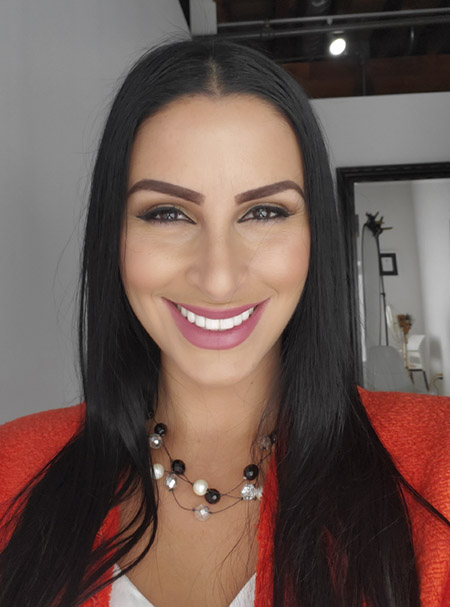
Dr. Zarina Giannone
Dr. Zarina Giannone, Sport and Exercise Psychology
As the accomplishments of Olympic athletes capture our attention, we place today’s Psychology Month focus on the psychologists who help them attain that high performance. Sport Psychology, however, extends far beyond just high-performance athletes. We spoke to Dr. Zarina Giannone all about this exciting field.
Brooke D’Hondt is just sixteen years old, and she already has a team of coaches and experts helping her excel in the snowboard halfpipe. Brooke finished in tenth place in snowboard halfpipe for Canada at the Beijing Olympics, and when the games are over she’ll be going back to high school. Imagine being in her gym class!
Sport psychology sort of emerged from gym classes – physical education originated in the education world, and over time evolved into the sport psychology we know today. Traditionally, sport psychology graduate programs are housed within schools of kinesiology at universities. They offer graduate degrees which produce scientists within the field of sport psychology.
Today, there are two main paths a person can take to become a sport psychology practitioner, and two types of credentials that exist in North America. One is the registered psychologist, who has the broadest scope of practice when they have acquired the training and experience to declare a specialty in sport and exercise or performance psychology. The other is a professional called the ‘mental performance consultant’ (MPC). Those are people with science-based degrees who have done some applied training but have a limit in the scope of their practice defined by the application of psychological knowledge within that performance or sport setting.
Dr. Zarina Giannone has taken both those paths. A registered psychologist with a specialization in sport and performance psychology, Dr. Giannone did her graduate training in counselling psychology, but pursued applied training within sport psychology (the MPC). She says,
“Sports psychology is one field within the broader sports science domain. Even my own work as a sports psychologist is just one slice of a larger pie, in that it covers the application of performance psychology. It involves taking science and theory and applying it to real-life situations.”
The mental health of athletes has never been in the spotlight to the degree it is today. Elite athletes are talking about their mental health, stepping away from their sports to take care of it, and being fairly public about their struggles. Naomi Osaka, Simone Biles, Calvin Ridley, Clara Hughes, Andy Robertson, the list of athletes who have publicly started speaking about mental health is growing longer by the day. This is a trend that excites Dr. Giannone.
“Even through my seven years of grad school, I’ve noticed some changes which have been really exciting. In the early 2000s, the field focused more on traditional mental skills that were taught to teams, athletes, and coaches. Imagery, arousal regulation, attentional control, that sort of thing. These are important skills that, if mastered by athletes, can enhance performance. They are also transferable skills that can enhance general well-being and life functioning. In the last little while, personal psychologists and MPCs have been more highly sought. This is, among other things, because of the fact that athletes feel more comfortable disclosing mental health challenges. The stigma around these things has been reduced. And that means that the role of psychologists in sports clubs and organizations is more in demand.”
The Indianapolis Colts, for example, have launched an initiative called Kicking The Stigma, and the face of the campaign is their standout linebacker Darius Leonard, who opens up about his anxiety attacks and depression. But for every team that embraces mental health issues and tries to tackle the stigma around them, there seems to be a story about another group that has yet to catch up. The Canadian Hockey League recently came out with a devastating report about a culture where a “code of silence” enabled off-ice misconduct to become the norm. Says Dr. Giannone,
“I’m aware of some organizations and teams that do take mental health very seriously, and there are sport psychologists who are involved in working with problems from a social justice perspective. For example, those working with sexual abuse or misconduct cases. Those psychologists have had an impact in terms of creating systemic change in some organizations. You’re seeing more mental health policies being implemented, or diversity and inclusion policies. Hopefully people will experience the impact of those things, and it will be a matter of time before all major sport organizations get on board.”
This year at the Olympics is the first in a long time where NHL players are not there. That means that the hockey teams competing against one another fall into two categories – either a group of players who have been playing together in one situation or another for a long time, or a roster cobbled together from the best players available who have little experience playing with each other. How do you build team dynamics and trust? Dr. Giannone says this is currently becoming more the domain of sport psychologists and MPCs.
“Sport psychologists are doing more than offering traditional mental skills training and assessments. My work today focuses on optimizing performance, but it also extends into helping with other sport-specific challenges including interpersonal team dynamics, training leadership, and supporting diverse mental health challenges experienced by athletes like burnout, depression, anxiety, or disordered eating. In many ways, the role of the sport psychologist has been reimagined and now involves addressing both the psychological health and performance needs inherent in sport.”
Dr. Giannone’s main job is in private practice at the Vancouver Psychology Centre, where she sees both general psychology clients and others in her specialty practice in sport and performance psychology. In that space, she sees a wide range of athletes and performers – anyone from youth to professionals. On occasion she’ll take a contract with a team where she’s implementing a mental skills program or providing other group-based services. She also works with the Canadian Centre for Mental Health in Sport (CCMHS), where she provides mental-health-based services to athletes and performers.
“Since 2013, federal funding for services has really expanded, and quite rapidly. There are now a few federally funded services for national-level athletes. For example, there’s Game Plan, which offers a wide range of services to carded [elite level] athletes in Canada. My work with the CCMHS is for any level of athlete, coach, or administrator where certain people can access funding for that. Other countries are a bit behind on this stuff, making Canada a leader in this space.”
As with all major events in the past two years, COVID is a central issue at these Olympics. It has disrupted training, hampered team-building, and caused many athletes to miss their shot at competing on the world stage. It has even cost some athletes a chance at competing after they got to the games, when a positive test ended their Olympic journey early. Dr. Giannone has seen all the ups and the downs the pandemic has created for athletes of all levels.
“Near the beginning, sports were on pause. Major tournaments were postponed. At that time, it was really about modifying and shifting psychological services to an online delivery. We did some team-based things where there were more than 25 people on Zoom! Over the past year, a lot of athletes have returned to sport, and there are new types of challenges we’ve never faced before. The content of the work has shifted – like think about a youth athlete, where they haven’t been in a high school competition in two years. They were in grade 8 and now they’re in grade 10. What that means for them developmentally and in terms of sport-specific skills development is interesting.
A focus of my research is around identity development in sport. What happens to it when someone experiences injury, or retires, and the identity loss that comes with that. A lot of identity threat has come about as a result of COVID, from kids all the way up to Olympians. These people who derive such self-esteem and value from sport are involuntarily forced to put it aside for some time. That can be very disruptive for people.
I’d say, conversely though, COVID has provided athletes a unique opportunity for people to engage with their sport in a new and different manner. Maybe someone never had the time before to watch video of themselves, and they’re able to learn about themselves differently now. Maybe they’re able to do a bit more weight training. It has been striking to me how people have been so resilient and creative throughout this.
Something that really stood out to me at the beginning of the pandemic was a shift from physical and mental skills training to fostering new conceptualizations of team culture. I remember stepping into teams and helping to facilitate goals, helping to cultivate team values and relationships. Not that I wouldn’t do that during a regular season, but the pandemic really placed the spotlight on that because there wasn’t much else to do when everything was so up in the air.”
Athlete mental health is a rapidly expanding field. The role of psychologists in tackling some of the social and systemic challenges like athlete misconduct, mistreatment in sport, abuse and harassment, cultural inclusion and diversity, are really coming to the forefront. Psychologists are involved in helping to create support, but also in trying to promote systemic change within systems and organizations, and all of that trickles down to athletes. But their influence and involvement no longer end at the locker room door. Says Dr. Giannone,
“Sport psychology professionals have now gone outside of the traditional sport and exercise setting. They’re working with performance issues in other domains. It’s common to have sport psychologists working in the military, with performing artists, first responders, or with high-ranking business executives. Pretty well anyone in high-pressure scenarios. I would anticipate seeing more psychologists with these specialized skills making their way into diverse settings.”
The Olympics are on right now, presenting a series of high-pressure scenarios for elite athletes for public consumption, all day every day. We can share in the joy of the Canadian women’s speed skating pursuit team pulling out an improbable gold medal performance, while also empathizing with the heartbreak of the Japanese team whose stumble in the last turn gave that gold medal to Canada. Our eyes, the eyes of the world, add a pressure that doesn’t exist at any other time for these athletes. It can be a difficult situation, and one where a psychologist can help them navigate through it. Whether you’re Jennifer Jones, competing in your second Olympics at age 47, or you’re a 16-year-old snowboarder who is about to go back to geography class.
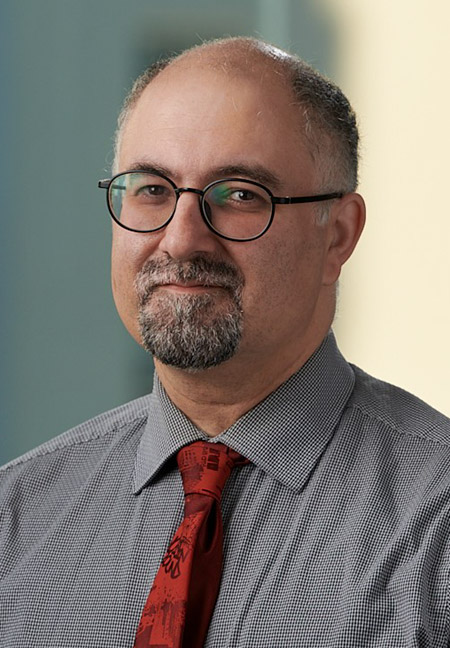
Dr. Amir Sepehry
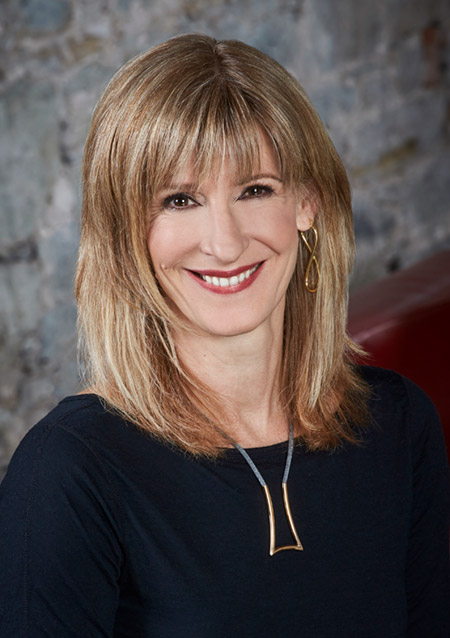
Dr. Diana Velikonja
Dr. Amir Sepehry and Dr. Diana Velikonja, Psychopharmacology Section
At the intersection of psychology and medicine is psychopharmacology. Psychologists who can prescribe medication like a psychiatrist, but with a psychologist’s training in behaviour and therapy-based interventions. Dr. Amir Sepehry and Dr. Diana Velikonja tell us more.
It generally takes about ten years of schooling in Canada to become a psychologist. It’s one of the longest, most intensive fields of study there is as it generally requires a PhD or PsyD, those programs are quite small, and it takes longer to complete a psychology doctoral program than most others. Imagine going through all that, and then deciding ‘you know, I could really use a little more school’. What kind of keener do you have to be to take on MORE education when you’re finally done?
This is the decision made by those who choose to follow the path of psychopharmacology. Dr. Diana Velikonja is a neuropsychologist by training. She is a clinical psychologist, and has a masters in clinical psychopharmacology – that allows her to do consultations with regard to psychotropic medication. She has worked with people who have had head trauma, is the Past President of the Ontario Psychological Association, and has led initiatives to advocate for the scope of practice for psychologists in Ontario to include prescribing psychotropic medication. She explains psychopharmacology this way:
“For a lot of emotionally-based or cognitively-based challenges, there are specific types of medications that are used called ‘psychotropic’ medications. They’re primarily used to treat conditions like anxiety, depression, hallucinations. For mental conditions or addiction issues, they help manage the symptoms. Psychopharmacology is really prescribing medications in conjunction with other evidence-based treatments. The reason psychologists are involved in this is that we’re trained in behaviour and therapy-based interventions, and those of us who have sought additional certification with regard to prescribing psychotropic medication are able to integrate the two – the behavioural and the medication in order to help guide patients toward the best strategies to manage the symptoms they’re experiencing.”
Prescribing medication to treat mental illness has, at least in Canada, long been the domain of psychiatry. Psychopharmacologists are some of the very few psychologists who have that level of knowledge when it comes to those medications. Dr. Amir Ali Sepehry is the Chair of Psychopharmacology Section at the CPA. He has a PhD in neuroscience, post-doctoral training in neurology, a masters in psychiatric science investigating medications, and other training in spinal cord injuries, and counselling psychology. Dr. Sepehry is currently teaching at the Adler University (Vancouver) and collaborates with UBC, and working with forensic neuropsychologists on medical legal cases. He says the field of psychopharmacology is both very old, and very new.
“It goes way back to when people with a variety of specialities used substances, herbs, and so on for the treatment of mental illness. However, there has been an incredible acceleration in the past five years, because much has happened. One part of that is the SARS-COVID-19 we have experienced. There are minor developments happening, as many of us are trying to repurpose medications.”
A person’s normal anti-viral immune response requires the activation of the inflammatory pathways of the immune system. ‘Cytokines’ are produced as part of that immune response. An unchecked and outsized immune response is known as a ‘cytokine cascade’ or ‘cytokine storm’. This can lead to tissue damage, and has been seen in many severe cases of COVID-19. It comes about as a result of an overabundance of pro-inflammatory cytokines. Dr. Sepehry says this is one of the ways psychopharmacologists are looking at the repurposing of existing medications.
“Anti-depressants have shown anti-inflammatory properties, so they could be used toward the cytokine cascade that is evolving as a result of COVID. We are still at a stage where we have to see the long-term effects of COVID on the brain and behaviour, on personality changes and mental illness, and the potential recovery. There is more need for psychologists to get involved. We know that there is an increased rate of mental illness, particularly among older adults, who contracted COVID. So the involvement of psychopharmacology is crucial.”
Dr. Velikonja suggests that there are other ways medications can be studied, especially as we learn more about the effects of COVID, both short-term and long-term.
“Medications may be able to be repurposed to deal with things like the fatigue, what people talk about as the brain fog, the stuff that comes with what they call ‘long COVID’. When people have a lack of energy or physical motivation to do things, there’s probably some targeting that can be done in that domain.”
These past two years have seen a mobilization of scientific expertise the likes of which the world has rarely, if ever, seen. Experts from virtually every scientific discipline have come together to deal with every aspect of the pandemic, and interdisciplinary and cross-disciplinary work is at an all-time high. Psychopharmacologists are used to working in an interdisciplinary way, and bring an enormous breadth of expertise to that scientific table. Dr. Velikonja sees their involvement in this enormous effort as essential.
“I think it’s crucial from many perspectives, in that everybody’s talking about the next big wave, which is the mental health wave. We know that there are a lot of challenges in the field of psychiatry, in terms of the number of practitioners who are available. I think psychologists are well-positioned to be in that role, to work with psychiatry to look at prescribing and the integration of behavioural strategies. We will need all hands on deck as the wave of mental health issues is unfolding.”
That wave is unfolding now, as we see more instances of domestic violence, an increase in rates of depression, anxiety, and trauma, and more problems with substance use. What this wave will look like a few months or a few years from now is anyone’s guess. But when that time comes, it will remain an “all hands on deck” situation. And we can feel a little better knowing that some of those hands will belong to the people who have spent years becoming experts in their various fields. The scientists for whom learning just one thing is not enough, who want to learn more and more. You know - the keeners.
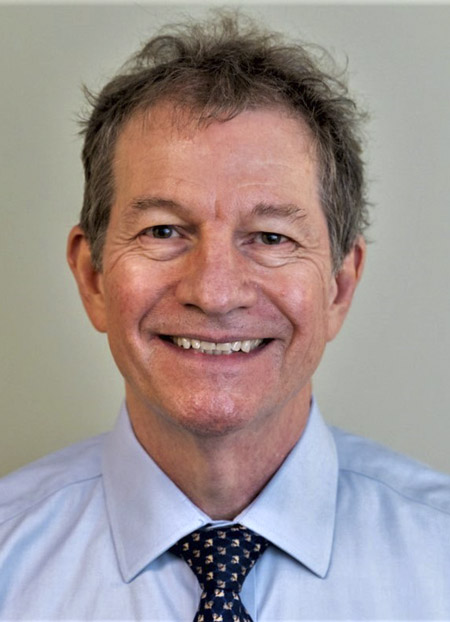
Dr. Kerry Mothersill
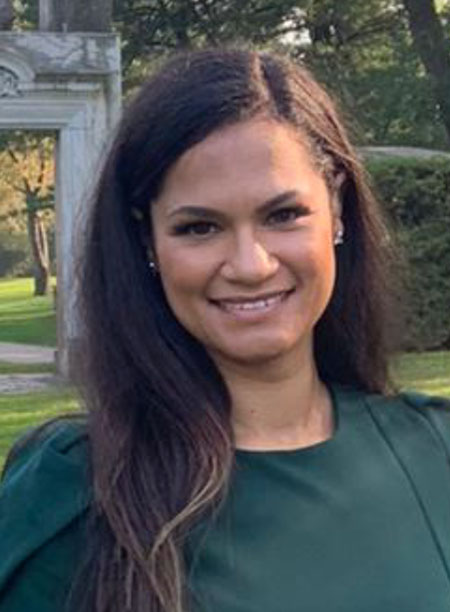
Dr. Kelsey Collimore
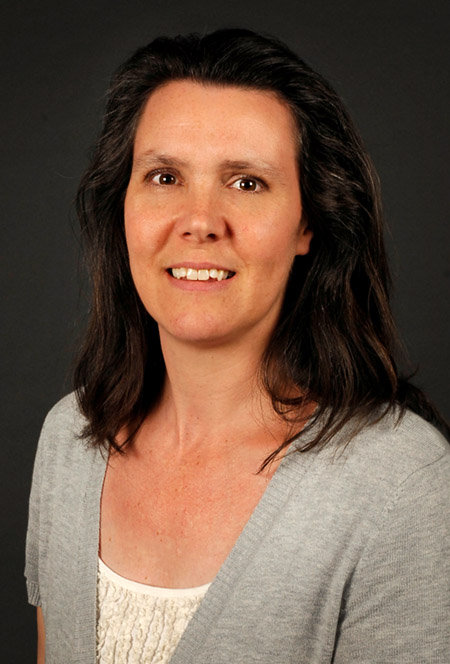
Dr. Stephanie
Greenham
Dr. Kerry Mothersill, Dr. Kelsey Collimore, and Dr. Stephanie Greenham, Psychologists in Hospitals and Health Centres
Many psychologists work in the public health system. Some in hospitals and others in different health centres as part of interdisciplinary teams seeing patients of all kinds. Drs. Kelsey Collimore, Stephanie Greenham, and Kerry Mothersill give us some insight into the work they do.
Psychologists in Hospitals and Health Centres
“My suggestion to my friends, family, and people on the street, is to drive carefully. Look both ways before you cross the street. Eat your Wheaties and take your vitamins.”
I’m speaking with Dr. Kerry Mothersill in September 2021. Alberta is still in the middle of their fourth wave of COVID, the Delta wave. Omicron has not yet been discovered by scientists in South Africa, and Alberta ICUs are already at their limit. Dr. Mothersill is issuing this warning because he doesn’t want anyone to get into a car accident, show up at the Emergency door of the nearest hospital, and be turned away because they are at capacity.
“ICUs and other hospital-based services are under a significant crunch, and though I tend to be optimistic I’m not so optimistic to think that within 18 months we’ll be out of a pandemic situation. The difficulties we’re experiencing at the moment tend to get lost down the line. It’s important to be informed and to base our decisions on the best evidence we have. It’s important that we all be mindful right now of the challenges in the healthcare system.”
It is now February 2022, and Dr. Mothersill’s comments seem particularly prescient. Alberta is now putting together field hospitals in Calgary and Edmonton in preparation for an expected surge. Although this will mean additional beds, health-care workers are unsure they will have enough staff to manage them. Dr. Mothersill is mainly in private practice now, but is still heavily involved with the public health system, training residents within Alberta Health Services.
The pandemic has been stressful on everyone, but no one has been affected more than health care workers in hospitals. Many psychologists who work in hospitals have been working overtime trying to help their colleagues cope with the overwhelming and unending toll the pandemic has taken on them. But not all hospitals are the kind that are being overwhelmed with COVID patients.
Dr. Kelsey Collimore is a psychologist working in the Mood and Anxiety Disorders Program at the Royal Ottawa Mental Health Centre and a Clinical Investigator with The Royal’s Institute of Mental Health Research. The Royal is a specialized mental health centre that provides tertiary care to individuals with complex and treatment resistant mental illness and/or substance use issues. Dr. Collimore says the pandemic has affected her program much differently than many other general hospitals – mostly in the shift to virtual services.
“Virtual care was something that was in place at The Royal prior to the pandemic. Of course it has really been propelled forward across all of health care as a result of COVID. I think the shift toward telemedicine has been somewhat helpful, in that now we have a better understanding of where we might want to continue with some of those services. I think there’s a real place for them going forward. As of now, we have returned to some in-person services, but most are still primarily virtual.”
Dr. Stephanie Greenham, the Chair of the CPA’s Psychologists in Hospitals and Health Centres, is a clinical psychologist working at CHEO – a pediatric health and research centre in Ottawa, where she is the professional practice leader and coordinator for psychology. She is also a psychologist and clinical lead with the inpatient mental health unit. With so many children experiencing the pandemic in ways that affect their mental health, CHEO has certainly been busier over the past two years. So what kind of services does CHEO provide, and how do psychologists factor in? Dr. Greenham gives an example.
“We have a specialty service that provides outpatient care for children and youth with complex chronic pain that integrates care from the physical, psychological, and pharmacological perspectives. Psychologists play a key role in program development and evaluation. The multidisciplinary team involves physicians, nurse practitioners, psychiatrists, psychologists, social workers, physiotherapists, occupational therapists, and pharmacists. They work collaboratively with children, youth, and families to provide a multidisciplinary assessment and interventions. That could be individual or group interventions run by psychologists or other members of the team, family therapy, follow-ups with physicians, and medication management. It’s very much a team offering!”
The Royal provides a much different type of care, primarily geared toward adults. They work with a particular client population or a particular group of clinical disorders, for assessment and treatment. They also place a large focus on evaluation and an increasing focus on clinical research integration. The people Dr. Collimore sees are often those for whom traditional treatments haven’t worked.
“I work with adults with a range of depressive disorders, bipolar and related disorders, traumatic stress or anxiety and related disorders. Most often I work with individuals who historically haven’t responded to various treatments and have had their symptoms for quite some time. Often I work with clients who have a more complex clinical presentation – meaning that they have more than one difficulty with a lot of stressors to consider within the context of service delivery.”
Psychologists who work in hospitals have a certain kinship with one another, which is why the CPA created the Hospitals and Health Centres Section. Dr. Mothersill, who practiced in hospitals for about 40 years in Ottawa and Calgary, is one of the founding members of the section.
“There were a number of us who felt there were particular challenges and opportunities for psychologists who were working within the publicly funded health care system. People working outside of industry, outside of private practice, outside of government. We created the section to discuss issues that were pertaining specifically to practice within hospitals and various health care clinics.”
Today’s Chair, Dr. Greenham, explains that while initially the section was made up predominantly of psychologists working out of hospitals, that makeup has changed over the years.
“Members of this section include psychologists working in rehab centres or other types of treatment centres affiliated with public health. They’re clinical psychologists, health psychologists, neuropsychologists – who happen to be working in the public health system.”
Dr. Mothersill says there are a few reasons this shift has happened.
“Things have evolved in publicly-funded healthcare over the last several decades, so as much healthcare as possible is being delivered outside hospitals – in urgent care centres, clinics and the like. There is a continuum of care that’s provided from very intensive in hospitals to less intensive outside with which psychologists are involved.
Up until maybe ten years ago, most emerging psychologists coming out of grad school, especially those who specialized in clinical psychology, neuropsychology, or health psychology, had a desire to work in a hospital setting or a publicly funded health system of some sort. I think in the last decade, and increasingly so, this is no longer the case. A growing percentage want to enter directly into the private practice field. There has been a growing number of large private practices, where many psychologists can work and consult with one another. I think this poses some challenges for publicly funded systems to attract and hold onto psychologists within that system.”
Dr. Greenham points to another place that is attracting psychology grads – primary care.
“I think there are increasing opportunities for psychologists in communities to get involved at the primary care level, where they’re becoming embedded within primary care practices with primary care physicians and interdisciplinary practices within the community.”
The more psychologists are involved with primary care, and with clinics and therapy centres and multidisciplinary teams across Canada, the more involved they are in every facet of public health. And the stronger their voice will be when they give advice like;
“Drive carefully. Look both ways before you cross the street. Eat your Wheaties and take your vitamins.”

Dr. Jude Mary Cénat
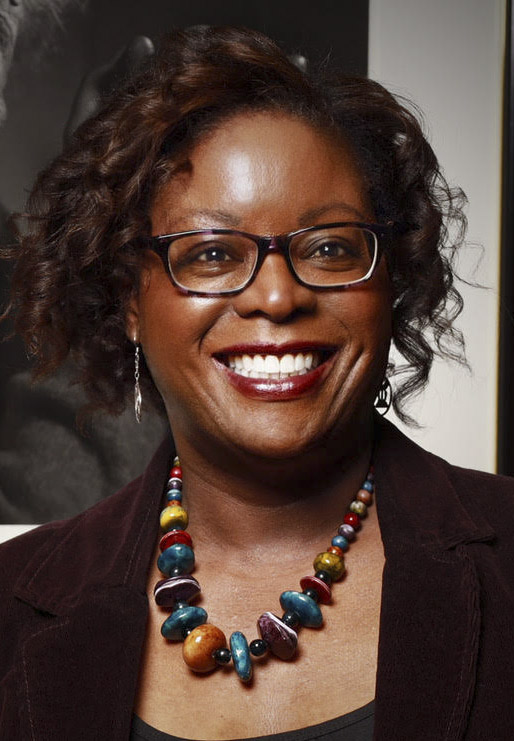
Dr. Helen Ofosu
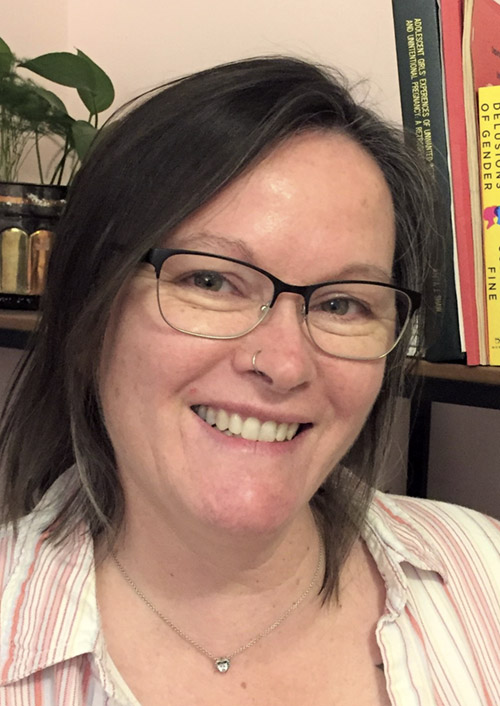
Anita Shaw
Dr. Jude Mary Cénat, Dr. Helen Ofosu, Anita Shaw, Kafui Sawyer, Dr. Erin Beettam, and Dr. Monnica Williams, Black Psychology Section
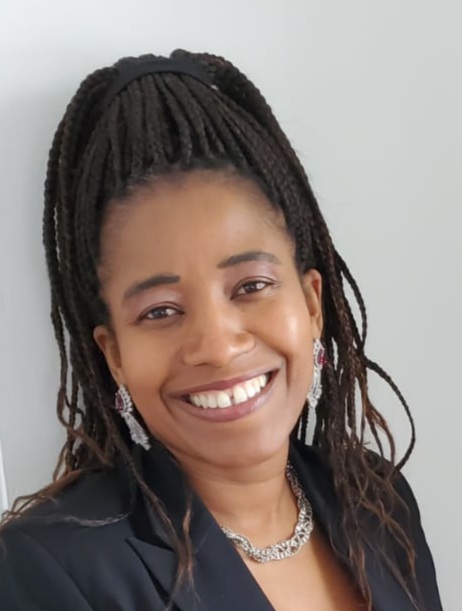
Kafui Sawyer
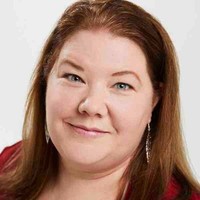
Dr. Erin Beettam
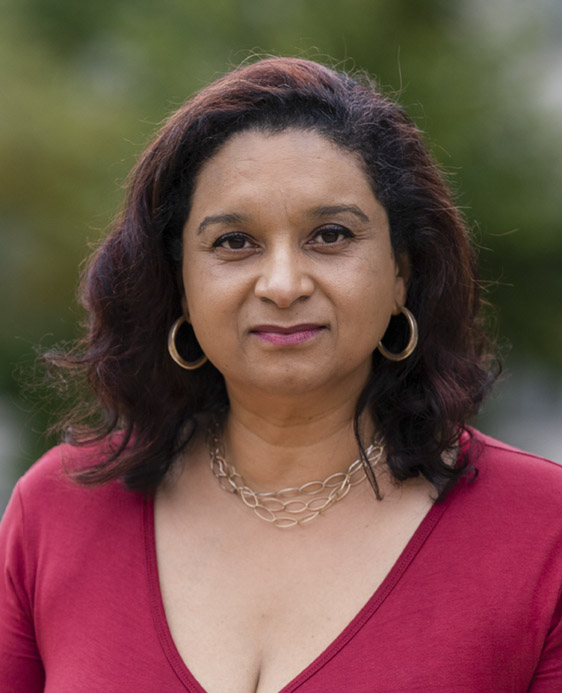
Dr. Monnica Williams
One of the two new sections at the CPA is the Black Psychology Section, which looks to increase the presence of Black professionals in psychology and to increase access to mental health services for the Black community.
“What field can be more anti-racist than psychology? We are here to promote human beings, human development, and human well-being! There is no field that can address racial issues better than psychology.”
Dr. Jude Mary Cénat is passionate about making psychology anti-racist, and inviting his colleagues in the mental health field to join the movement. Dr. Cénat is an Associate Professor in the school of Psychology at the University of Ottawa, and the director of the Vulnerability, Trauma, Resilience and Culture Research Laboratory (V-TRaC Lab).
Canada’s racialized populations experience unique traumas and mental health concerns. Black Canadians are no exception. In addition to the things that affect everyone – the pandemic, work stress, family issues – they must contend with societal racism and workplace hostility/microaggressions that remain a fact of everyday life in this country.
“We cannot continue to perpetrate and encourage racial discrimination. We cannot continue to be ‘colourblind.’ People who experience high levels of racial discrimination are thirty-six times more likely to present with severe symptoms of depression.”
The effort to make sure psychology leads the way it can, and should, in addressing racial issues is one of the principals that led five CPA members and affiliates to become the driving force behind the creation of a new Black Psychology Section at the CPA. Kafui Sawyer, Anita Shaw, Dr. Helen Ofosu, Dr. Monnica Williams, and Dr. Erin Beettam see the mission of the section as promoting and advancing practitioners, educators, students, and scientists of psychology who identify as Black and who are concerned about psychology-related issues that impact Black people. Each of them has seen that impact, some personally, in their own careers.
Dr. Helen Ofosu is an Industrial/Organizational psychologist, Executive Coach, and HR Consultant in Ottawa. She works with organizations including government departments, to improve organizational culture and inclusion. Over the past two years, during the pandemic, she has noticed a lot of racialized employees choosing to find work within more inclusive organizations, as they are realizing that working from home, they are no longer subjected to the everyday indignities they experienced in a physical workplace. “These things have been happening for years, but now people are removed from that environment, and they have the peace of mind that comes from doing their work without worrying about microaggressions, or getting the side-eye, or being excluded from lunches, coffees, and conversations. When all of that is gone, people feel so much more relaxed because they can just focus on doing their work.
I think the real trigger was in the summer of 2021, when a lot of organizations were planning their return to the physical workplace. It was only when people started to realize ‘oh my goodness – I might have to go back to the office’ that they started thinking ‘wait a second – I don’t think I can go back to the office. I don’t want to go back to the office! I don’t want to go back to the way things were.’
During all that reconsideration, a lot of people figured it was a smart time for them to find a different place to work, where there’s more representation, more inclusion, more diversity, and just a better workplace culture. From what I’ve seen, people are reflecting on a lot of things during the pandemic. So, they’re looking for a way to find employment where they can just be themselves, and focus on doing their work instead of focusing on self-protection from all these emotional assaults.”
Anita Shaw is a PhD student at the University of Northern BC in Prince George. She says,
“While I’ve been doing my PhD, I’ve also been really thinking about decolonization. Not only decolonizing my own thinking, but about how psychology has contributed to colonization, and how it could contribute to decolonization. I’ve been working with a mentor who is an Indigenous scholar, and we’ve developed a template for a course curriculum for decolonizing psychology.”
Kafui Sawyer is a psychotherapist, a trauma consultant for Health Canada, and the Clinical Director for Joy Health and Research Centre. She helps families through traumatic experiences, assists government employees who have suffered as a result of experiences (such as racism) in their workplace, and much more. Often clients will ask to work with her specifically, because she is Black and shares a lived experience with those clients. She says that the most rewarding thing for her is working with complex cases like personality disorders, as clients transition from a disordered personality to a more grounded place.
Ms. Sawyer notes that the Section founders’ hope is “to create a space where people with similar values and beliefs can make things work. We hope it brings like-minded people together so we can have a home in the CPA.” For the founders, the Section is an opportunity to create a space where people can bring common their interests and experiences together in a way “that empower us to be better.”
The Black Psychology Section is an important space for allies of Black members, students, and affiliates as well. Dr. Erin Beettam identifies herself as a Child & Adolescent Clinical Psychologist. While she trained in School Psychology, her work has primarily been in hospitals, pediatric psychiatry, and the public mental health system. Erin specializes in treating adolescents and young adults in anxiety, depression, emerging personality disorders, and eating disorders. Presently she works in a school board and has a private practice. She notes her growing awareness “of the lack of available and effective services for people of colour, for Black communities, in the workplace, and in educational settings”. This awareness has led her to examine what she “can give and do to provide support in the changing landscape.”
Dr. Monnica Williams is a researcher at the University of Ottawa who has long been an advocate for inclusivity in research. For too long, people of colour have been excluded from research of all kinds, notably in a variety of psychological fields.
“So much of the research we see is exclusionary, and it not only perpetuates the problem but it’s also a symptom of the problem. Part of the issue is that we don’t have enough researchers of colour to do the research for people of colour.
I do a lot of research bringing these issues to light – how treatments might need to be adapted for people of colour, how therapists who are getting trained now can learn more about how to treat people with a more inclusive lens. Everybody needs to understand best practices when working with race, ethnicity, and across cultures.”
It is these best practices when working with race, ethnicity, and across cultures that Dr. Williams’ colleague at the University of Ottawa, Dr. Cénat, is promoting as well. He and his colleagues have created a course called ‘How To Provide Antiracist Mental Health Care’, approved for Continuing Education credits by the CPA. Dr. Cénat hopes that all mental health professionals, and Canadians by and large, become committed to anti-racism.
“As Ibram Kendi said, there is no ‘racist’ and ‘non-racist’. There is racism, and anti-racism. If you are just ‘non-racist’, you aren’t taking actions that can push back against racism. And you have to take action against racism because that is how we can create an anti-racist society.”
The Black Psychology Section, approved by the CPA Board in November 2021, is now accepting members. Once membership is established, the Section will propose its Terms of Reference to the CPA Board for approval and then go on to elect its Executive; all steps which should be completed in 2022. The Section’s purpose will include working with others to increase the presence of Black professionals in psychology and to increase access to mental health, wellness, organizational, and consultation services for the Black community; especially those who experience unique barriers to accessing appropriate mental health care and other psychological services (e.g., training, leadership, organizational interventions, basic and applied research, etc.). The Section may ultimately become a community space for CPA members, students and affiliates interested in these issues and, especially for Black students, educators, researchers and practicing psychologists. For more information about joining the Section, go to https://cpa.ca/sections/black-psychology/
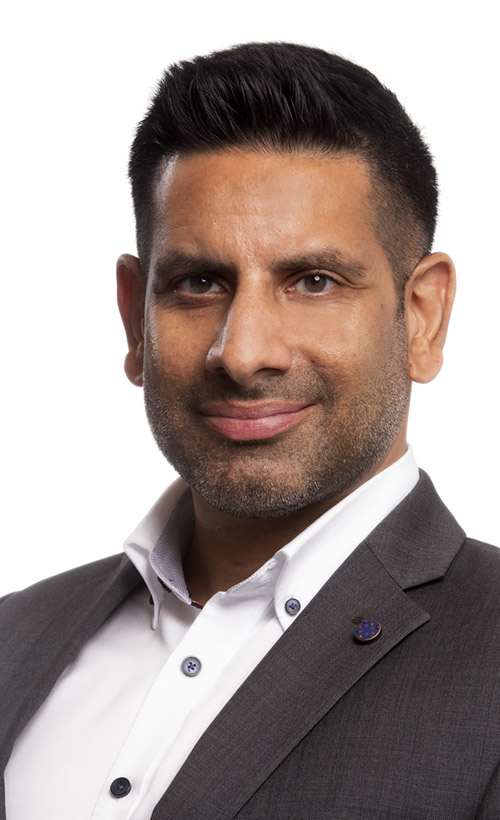
Dr. Vinay Bharadia

Dr. Kristina Gicas
Dr. Vinay Bharadia and Dr. Kristina Gicas, Clinical Neuropsychology Section
Your brain and your body have a relationship – sometimes it’s a harmonious one, other times it’s contentious. This is the domain of clinical neuropsychology. We spoke to Dr. Vinay Bharadia and Dr. Kristina Gicas to learn more.
The word “neuropsychology” is a mouthful. It feels like one of those words you might use when you want to seem smart. Like “nomenclature”, or “cumulative”. Because it takes so much time to say, neuropsychologists have come up with a clever way to shorthand the term – they say “neuropsych”. Leaving out the last two syllables has, over the decades, undoubtedly saved countless cumulative hours in university department conversations across Canada.
Add the word “clinical” and you’re in a whole new world of nomenclature. One which Dr. Kristina Gicas, Chair of the CPA’s Clinical Neuropsychology Section, is happy to unpack. Dr. Gicas is a clinical neuropsychologist and an assistant professor at York University, where she trains clinical neuropsych students. She teaches, does research, and also does some clinical work in Toronto. She says,
“Clinical neuropsychology is the study of the relationship between your brain and your behaviour. We look at the structure and function of the brain, and study how that relates to thinking abilities. This includes things like attention, memory, language, visual skills, processing speed and even emotional functioning.”
Neuropsychologists are experts in investigating these brain-behaviour relationships, and using that information to do a number of things. The number one thing they do is diagnosing things like injuries or diseases that are affecting the brain (concussion, stroke, tumors, dementia). They also seek to understand normal human development and aging. Another area of specialty of neuropsychologists is in designing and implementing interventions to improve peoples’ day-to-day functioning.
The CPA calls the section Clinical neuropsychology because all neuropsychologists are trained as clinical psychologists first. The neuropsych part is a specialization, where practitioners take additional courses – for example, doctorate courses in neuroanatomy (another mouthful of a word – only this one has no convenient contraction). They learn about assessment tools and cognitive tests – what they mean, how they’re used. Most psychologists can administer these tests, but it’s neuropsychologists who can link them to brain functioning – that brain-behaviour relationship.
Maybe you’ve noticed that one of your parents is starting to become more forgetful, and is less able to pay attention to tasks than they once were. You might take them into the doctor, who might then administer a test to them – like the MoCA (Montreal Cognitive Assessment) test. This is a preliminary screener that can help determine the degree to which intervention is needed. If your parent meets a certain threshold, they might be referred to a clinical neuropsychologist like Dr. Vinay Bharadia.
Dr. Bharadia splits his time between a private practice, as Lead of Neuropsychology at TELUS Health Care Centres in Calgary and the University of Calgary where he trains PhD and Masters level psychologists.. He works mostly with brain injuries, dementia, Parkinson’s, Multiple Sclerosis, and other neurological conditions that affect cognition. He says,
“If you get referred to us, we do more robust testing of memory and attention and other cognitive areas, after a screener from your GP like a MoCA. We also look for depression and anxiety, as those can affect cognitive ability as well. We then relate the tests we do to the hippocampus, or the thalamus – brain parts that we know are related to memory, or other areas and neural networks. We look at your medical history, your MRIs and CT scans and so on, and we put it all together and look to get a diagnosis or treatment moving forward.”
A lot of the research done by cognitive scientists – like Jonathan Wilbiks in the Brain and Cognitive Sciences Section (see earlier Psychology Month piece) informs the work done by clinical neuropsychologists. The cognitive scientists come up with research and data, and it’s then up to clinical neuropsychologists to apply that knowledge in a clinical setting to enhance the lives of their patients. And those patients vary a great deal depending on their condition, their symptoms, and their age. Says Dr. Bharadia,
“If you’re a 25-year-old presenting with symptoms of depression, you’re probably not going to see a neuropsychologist. You’re more likely to see a clinical psychologist, or a counselor, and maybe a general practitioner (GP) for medication. But if you’re a 55-year-old with depression, hopefully the GP is thinking ‘what else could this be? What else looks like depression in your 50s?’ With a few other factors in your medical history and things you might see on an MRI, it could be a symptom of Frontotemporal Dementia, which can look like depression in certain age groups. At which point they might be a good candidate for testing with a neuropsych to refine the diagnosis.”
This means neuropsychologists work a lot with GPs, psychiatrists, neurologists who are doing MRIs, and many other professionals in the world of brain science all of whom have overlapping expertise. If the 55-year-old with symptoms of depression meets with this team, they may determine that the cause is neurological – in which case they will suggest one treatment path. If, however, they determine the cause is psychological, a neuropsychologist is trained (remember – they are clinical psychologists first) to work with the person to heal.
Neuropsych as a formal field is 70 years old. The seminal work of Dr. Brenda Milner at McGill in the 50s with patient H.M. was groundbreaking in our understanding of memory. This revolutionary work was done alongside neurosurgeon Dr. Wilder Penfield. Dr. Milner is STILL PRACTISING at McGill at age 102. Some other pioneers set up a neuropsychology program at the University of Victoria, where Dr. Gicas did her undergrad. This, (along with her fascination with the brain and fervor for science in general) led her down this path. She says,
“I remember reading a book by Oliver Sacks, called The Man Who Mistook His Wife For A Hat (1985). It’s a series of neurological kinds of cases and I was just hooked after that.”
In an episode of Parks and Recreation, Ben can’t understand the relationship between Jerry (Jim O’Heir) and his noticeably better-looking wife Gayle (Christie Brinkley) and speculates that it is as a result of a neurological disorder (“one of those Oliver Sacks disorder thingies – like maybe she thinks Jerry is a friendly hat?”). It may not be the best example of neuropsychology in popular culture, in that it gets it quite wrong – but it isn’t that easy a study to get right! That is, unless you can circumvent the cumulative effect of all the difficult nomenclature.
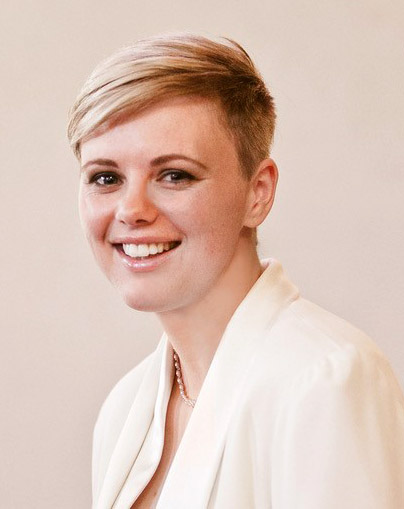
Dr. Karen Blair

Dr. Rhea Ashley
Hoskin
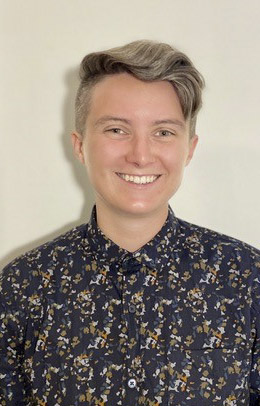
Bre O’Handley
Dr. Karen Blair, Dr. Rhea Ashley Hoskin, and Bre O’Handley Sexual Orientation and Gender Identity Section
The field of Sexual Orientation and Gender Identity in psychology has come a long way in the last few years, from securing same-sex marriage rights to banning conversion therapy. We spoke to Dr. Karen Blair, Dr. Rhea Ashley Hoskin, and Bre O’Handley about that progress, and about a term you may not have heard before – “femmephobia”.
Sexual Orientation and Gender Identity
“I don’t like beer anymore”
There’s a commercial running on TV where a guy confesses to one of his buddies, in an ashamed whisper, that he no longer enjoys the taste of beer. There is an implicit understanding between us, the viewers, and the guys in the commercial, that disliking beer is affecting that guy’s sense of masculinity. That enjoying beer with the boys is a part of his male identity that he is ashamed to lose. And that disliking beer makes him more ‘feminine’, and therefore less worthy, than the others.
Dr. Rhea Ashley Hoskin is an AMTD Global Talent Postdoctoral Fellow at the University of Waterloo, where she is cross-appointed to the departments of sociology and legal studies and also sexuality, family, and marriage studies. She is the secretary/treasurer of the CPA’s Sexual Orientation and Gender Identity Section (SOGI), and her work broadly looks at sexual and gender diversity – more specifically, societal treatment of femininity and “Femmephobia”.
“Femmephobia is about the way society devalues and regulates femininity, which can target anybody. It can target a cisgender man who orders a salad, or is seen somehow as being feminine – because femininity is often viewed as a social demotion. We also see femmephobia targeting women in science who might be seen as ‘too feminine’ and might be treated as though they are incompetent because they wear too much makeup or because they ‘don’t look like a scientist’.”
In the commercial, the guy’s buddy treats his announcement of no longer liking beer with a shrug and doesn’t seem to think this makes Guy One any less of a man. Then, of course, he offers him something in place of the beer – a hard liquor that we, the viewer, can infer to be an adequate replacement and equally manly in the eyes of society.
Femmephobia affects both gay and straight people, both men and women, and even those who identify as non-binary – the push and pull of defining your public persona through what is seen as feminine is something we all carry with us, mostly subconsciously. Every one of us is touched by it in some way, whether it’s men who order a regular beer instead of a light beer, for fear of seeming too ‘feminine’, or women who wear less makeup to appear more intelligent or ‘professional’.
Dr. Karen Blair is an assistant professor of psychology at Trent University, and has been the Chair of SOGI since 2014. She says,
“One of the neat things about Femmephobia is that once it clicks, you begin to see it everywhere. You start noticing all the different ways we devalue femininity. With men, we have a pretty narrow range of “acceptable femininity” – and in most cases, we prefer they have none. In the football locker room when a coach wants to insult a team, he might say they played ‘like a bunch of girls’. That’s meant to sting, and the players get the message that the coach is unhappy. If a man walks too ‘feminine’ or talks too ‘feminine’ or talks with his hands, we take him down a notch for it. We use femininity in our society as a weapon or an insult.”
With the occupation in Ottawa getting under way a couple of weeks ago, attacks on the Prime Minister increased notably – both within the group of insurrectionists and also on social media. Dr. Blair and Dr. Hoskin track this sort of thing. What do attacks on public figures and politicians look like, and how is Femmephobia so often a part of them?
“When people want to attack Justin Trudeau, they do a few things – one, they tend to call him by his first name. When we were upset at Stephen Harper, we still called him Harper. But when we’re upset with Trudeau, we use his first name – and some even call him Justine. Why should it be an insult to call someone by a woman’s name? Why is it insulting to feminize another person? The answer is misogyny and femmephobia. It’s not just politicians like the Prime Minister, we’ll do this across the spectrum. When people want to make fun of Putin, or Trump, one of the common memes on the internet is to add makeup to their faces to make them look like an overdone woman. No matter how you feel about Trudeau, Trump, or Putin, they’re all taken down with this same attack of ‘femininity’. It’s used to say they’re lesser, they’re stupid, they’re silly, they’re frivolous, or they’re extreme. All these things can be conveyed just by making them feminine. Which leaves you wondering – what are we actually saying about people who are feminine? It’s kind of like when people used to say ‘that’s so gay’, when what they meant was that something was stupid, or silly.”
‘We’ (society) have come a long way in the last few decades. When the SOGI section started it was the early 2000s, and one of the big pressing issues at the time was same-sex marriage. The extension of civil rights in Canada to same-sex couples was top of mind for many psychologists, and there is a policy statement from the CPA at that time stating our support for this notion of same-sex couples having the right to marry one another. It seems a little quaint today – like, of course we support that – but Dr. Blair says that at the time it was quite a novel and exciting statement.
“A lot of the research at the time, the early 2000s, was showing that same-sex relationships were the same as mixed-sex relationships in that they’re good for people, and healthy, and that love is love. These were the kinds of things researchers were focused on. They were trying to support policy-makers in understanding that when people are cut out of an institution like marriage, it changes the relationships they have with their family, their friends, and their coworkers. For instance, consider something as silly as holiday parties at a company where invitations are extended to include spouses. If you were a same-sex couple in 1999, it would be really unclear as to whether your partner was included, and in some cases it would be quite explicit that they were not.”
Many people at that time felt like they couldn’t talk about their partners at work or couldn’t have a photo of them on their desk. Psychologists working in this space were able to point out how things like that took a toll on peoples’ mental health and their well-being over time. Dr. Blair continues,
“A lot of research showed that families of LGBTQ people didn’t really ‘get it’. And that they really didn’t get it right up until the moment they were at the wedding. At a wedding there are social scripts that tell us when to get up, when to clink our glasses, when to applaud, and so on. Being able to put same-sex relationships into this social ritual that people understood created a situation where family and friends could understand the relationship – which then led to greater support from the inner circles of many LGBTQ individuals – which then led to greater mental well-being for the whole community.”
That mental well-being has taken a hit during the pandemic, for a variety of reasons. Bre O’Handley is a Master’s psychology student at Trent with Dr. Blair as her supervisor. She is working on a thesis that looks at LGBTQ well being during the pandemic and how supports might play a role in that.
“I’m looking at the trajectories of well-being for LGBTQ people during COVID. There’s a lot of research all over the world that has found that LGBTQ people are faring worse during this pandemic. Their mental health has been affected more, they’re reporting higher levels of depression, anxiety, and stress. Everybody’s experiencing COVID and social isolation, but there are additional factors that could impact LGBTQ people. They could be living in an unsupportive environment, especially if they’re younger. They’re being separated from affirming communities – like if you had a group of friends at school who supported and accepted you, but now you’re not going to school. The pandemic reduced access to LGBTQ resource centres. For a long time, trans people were unable to get hormone replacement therapy (HRT) and gender-affirming surgeries, as those were deemed non-essential at the beginning of the pandemic and supply chain issues delayed shipments of important drugs and hormones.”
There were even discriminatory COVID policies in a number of countries. In Peru, a rule was instituted that said men could leave the house only some days, and women could leave only on other days. This left trans people, and people who didn’t identify as either male or female, in a significant bind. Many experienced harassment and hate crimes while they were out of the house. Bre’s research doesn’t tackle the discrimination, so much as the supports that are needed for those who are on the receiving end of that discrimination.
“How do we foster resilience in these circumstances, and how are LGBTQ people coping in this pandemic? If I feel connected to the LGBTQ community, that should buffer some of the issues that affect mental health. But how do we separate that out from more general social supports? Is just having supportive people and family around you enough, or do you need that social connection with others in your peer group to truly maintain resilience? This circumstance now, with COVID, gives us a little bit of an opportunity to tease that apart.”
There is always more work to be done, and always new challenges that arise. Same-sex marriage has now been the law of the land in Canada for sixteen years. Adoption by same-sex couples has been legal in all Canadian provinces and territories for a decade. Conversion therapy is now banned, and many members of the SOGI section were actively involved in discussions with policy-makers to make that happen. Today, the focus on gender identity is catching up to the fight for equal rights for gay and lesbian couples. Says Dr. Blair,
“You can know a lot about sexual orientation and sexual minorities and still manage to know nothing about gender identity or gender minorities – and vice versa. The two came together as a CPA section when the topic of gender identity was less prevalent, and the focus was probably more on sexual orientation at that time. Over time, gender has become an equally important topic to sexual orientation within the section.”
All of us in Canadian society are learning a little bit more about sexual orientation and gender identity, just as the scientists are learning more and telling us about it. Dr. Hoskin frames this in terms of Femmephobia.
“Our ability to see femmephobia comes from the study of sexual and gender diversity. Femmephobia is illuminated by our ability to tease apart gender identity from sex assigned at birth, and gender expression. When we can see those things as different, we can see how gender expression comes into play and how it’s regulated by society.”
We all form part of that society, and how we regulate our attitudes toward the LGBTQ+ population is an enormous part of preserving and enhancing their mental health. It could be using the correct pronouns to address someone, embracing your lesbian daughter, or something as simple as stating with firm confidence,
“I don’t like beer anymore.”

Dr. Shahnaz Winer
Dr. Shahnaz Winer, Psychology Careers and Professionals Section
One of two brand-new sections at the CPA, the Psychology Careers and Professionals Section is a place to network and collaborate for those who have a psychology degree but work in an area other than clinical practice or academia.
Psychology Careers and Professionals
In June of 2014, ISIS invaded Kurdish-held territory in Northern Iraq, capturing Samarra, Mosul, and Tikrit in quick succession. Dr. Shahnaz Winer was a young single working female teaching psychology at a Middle Eastern university in the region, the place where she was born, and her family insisted she get out. She was quickly on a plane back to Canada as Kurdistan descended into turmoil and violent bedlam.
Dr. Winer reminisces fondly about her time teaching in Iraq, and says it was one of the best times she’s had in her career. She is obviously very sad about the fact that this chapter had to end, and especially sad about how it ended, but she didn’t stay down for long. She began a string of jobs dedicated to the one thing that has driven her throughout her career - the application of psychological science and knowledge to enhancing the everyday lives of…well…everybody! Through a series of jobs, in and out of academia, she ended up starting her own business. And it was as the owner of that business that she presented to students at last year’s CPA Career Fair.
Some of the most well-attended and highly-anticipated events at the CPA are the Career Fairs we have held the last few years. At these events, students have an opportunity to learn about various career paths and positions for psychology graduates outside of the health services delivery and academic settings. They were able to meet with individuals in those positions to explore the vast job possibilities available to someone with a psychology degree.
People like Sophie Kenny, who works with eye capture technology at VPixx Technologies. Or Anne-Marie Côté who coordinates virtual field trips for students in remote northern Indigenous communities with TakingITGlobal. Or even our own Deputy CEO Lisa Votta-Bleeker, whose work at the CPA certainly falls outside the realms of academia and clinical practice.
These events allow students, professionals, and other interested individuals to network with one another in a setting designed to expand the options available to psychology graduates and, indeed, to all those interested in a less conventional career path. But what if those like-minded people could network with one another year-round, instead of a few times a year at these one-off events? That was the thinking behind the creation of the new Psychology Careers and Professionals Section at the CPA.
Dr. Winer has partnered with Dr. Votta-Bleeker to launch this section. Dr. Winer has a PhD in Cognitive Neuroscience from the University of Waterloo and is one of the people in psychology who took that non-traditional career path. The business she created, Vibrant Minds, is an online education platform where Dr. Winer takes principles of psychology and combines them with other interests. She creates digital products that help people plan, set, and achieve their career and life goals.
“The one thing that I love is that I’m able to reach an international audience of students with this. I can connect to so many different people, and to help them apply what psychology teaches us and what academic research has discovered.”
Dr. Winer did spend some time in a traditional academic role, as a professor. She says that when she taught, she noticed the students gravitated much more toward one particular type of lesson.
“The sections students were really excited about were the ones where they could apply what they were learning to their own lives. For example, if we were learning about memory, we would do an entire section about applying the knowledge so they could study better and remember things for tests more effectively. So it was that application that got me really excited, and I felt like that was something that was largely missing between traditional psychology and all the other professions and fields. That bridge between the academic side and then reaching everyone else with that information.”
When this new Careers and Professionals Section starts filling out its membership, most of those members will be people who bridge that gap. They are the people who take psychological science and principles and apply them to every conceivable industry across Canada. They’re the ones making air travel safer, workplaces more inclusive, and creating high-performance buildings that minimize environmental impact. Having this new place to collaborate will bring all those diverse people together.
“This section was really inspired by the need to provide a home for those of us who, like me, have psychology backgrounds but didn’t follow a traditional path. I became a member of the CPA when I was a student, but when I left academia, I left the CPA because I thought there was nothing there for me any more. And it was actually very lonely! It had been wonderful to have that kind of community, the support, and the resources that the CPA offers. So when I was approached with this idea of a new section geared specifically toward those interested in fields outside the typical psychology fields, it sparked my interest right away!”
The Psychology Careers and Professionals Section is at the stage right now where the section has been approved, and their next task is to recruit the founding members. With 90 new members in only the first few weeks of registration, the section is off to a sprightly start. Dr. Winer has a vision for who she hopes those initial members might be, including a diverse mix of established professionals, those early in their careers, as well as students.
“We want to create a welcoming space for students who are exploring their options. This is such an important group to me because I feel like I was very privileged. When I was in grad school completing my PhD, for the first year or so all the information provided to me, all the workshops and seminars and career fairs, were all geared toward the steps to take to get into academia, or the steps to get into clinical practice. I wasn’t sure at that time what I wanted to do, but I wanted to know what options there were.
My supervisor, Dr. Myra Fernandes, really thought we should explore all the options available to us. So within our own lab, she created a seminar series where she would bring in different speakers. For example, someone with a psychology background who was working for the pharmaceutical company Eli Lilly came to speak with us. The exposure to these other options inspired me and gave me a lot more knowledge, but my friends who were in grad school at the time weren’t being exposed to this or given this other information.”
Some of the other people who have expressed interest in the section are professionals interested in networking with each other, those keen to mentor students, along with those who have gone the academic or clinical route but who have other interests. Others are doing something many psychology grads do, like research, but they’re doing it in a hospital, government, private sector, or start-up setting instead of a university and, as such, don’t feel as connected to the traditional academic side of things. Says Dr. Winer,
“There are many individuals who fall into the in-between, and that’s the great thing about this wide spectrum. We’re welcoming anyone from anywhere who wants to join and connect with this group of people who have a variety of interests.”
Dr. Winer felt lucky and grateful to have had those experiences in grad school, and to have taken a non-traditional career path as a result. In addition to serving as Dean of Social Sciences and a variety of teaching jobs and her current business, she spent some time as a curriculum developer and educator, the principal of a coding school for youth, as well as a facilitator and coordinator for the Memory and Aging Program at a group of senior homes across Ontario.
It's experiences like these that Dr. Winer wants to share with the other members of the new section – with the like-minded individuals who have chosen a different career path, and with the students who could benefit greatly from being exposed to these options they might not otherwise see. The idea is one big, long, ever-evolving and ever-growing career fair. One that creates a home for psychology graduates who might otherwise feel like they are on an island, and one that runs, collaborates and networks not just for 48 hours at a time, but 365 days a year.
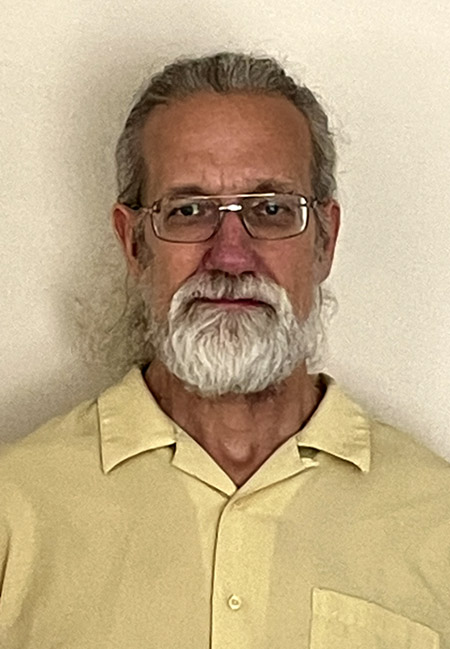
Dr. Marvin McDonald
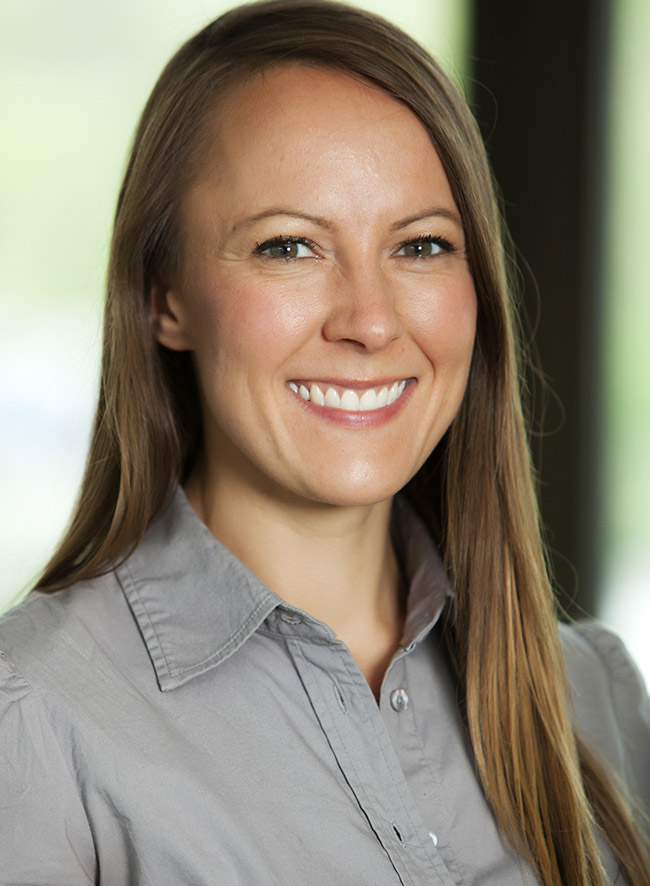
Dr. Tanya Mudry
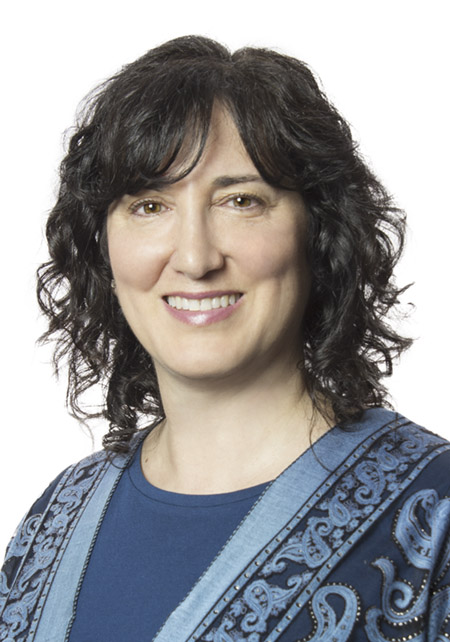
Dr. Jessica Van Vliet
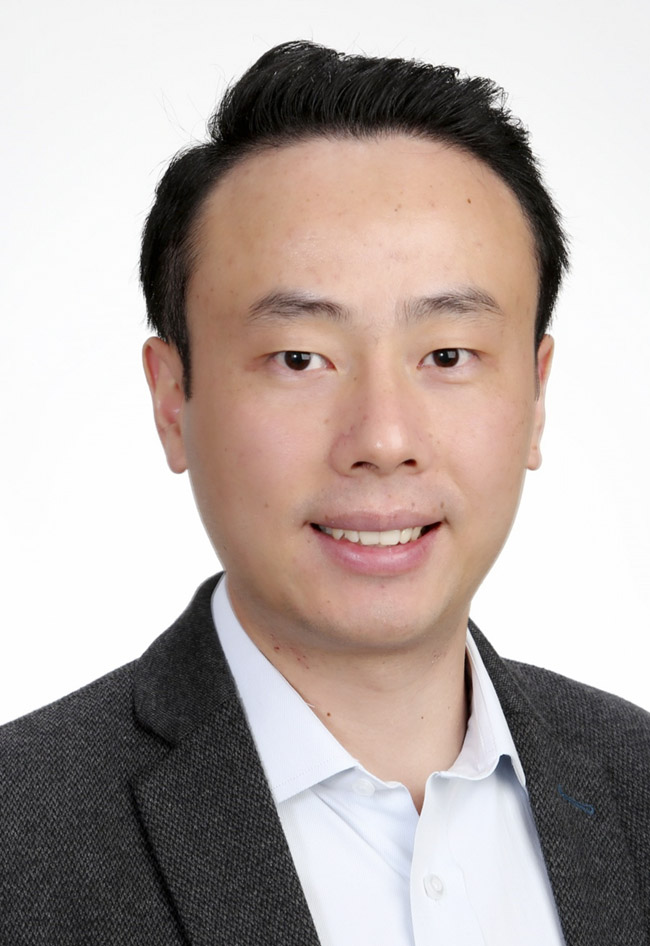
Dr. Houyuan (Hy) Luo
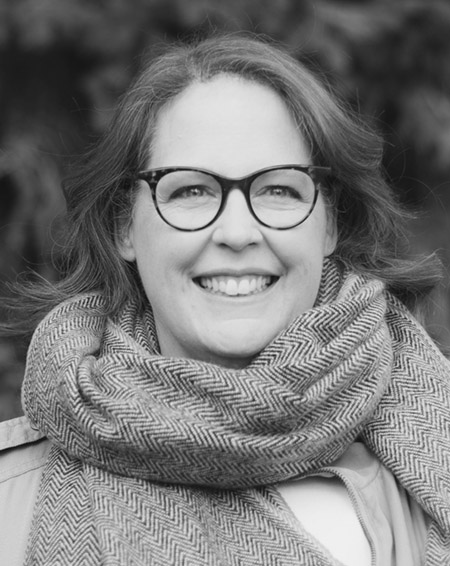
Dr. Janet Miller
Dr. Marvin McDonald, Dr. Tanya Mudry, Dr. Janet Miller, Dr. Houyuan (Hy) Luo, and Dr. Jessica Van Vliet, Counselling Psychology Section
Counselling psychology has many facets and many different practitioners. We spoke with five of them about what it is they do, and how it affects the lives of everyday people.
Syd Barrett created Pink Floyd in 1964, and was the driving force behind their seminal 1967 album The Piper at the Gates of Dawn. He lasted for only one more album, A Saucerful of Secrets, before drug use and mental illness led to his departure from the band. He then hid from public life, obsessively guarding his secrecy for 35 years until his death in 2006.
Counselling Psychology might well be the Pink Floyd of CPA sections, in that they insist on having five members on stage at all times. A collaborative and inclusive discipline, it makes sense that when I asked to interview the CPA’s counselling section, a full five-person panel showed up.
Dr. Marvin McDonald is a professor at Trinity Western University in BC. He’s the Syd Barrett of the group (in that he was there from the start – he has lasted far longer than two albums), the Past Chair who helped get this section to where it is today. Dr. McDonald has a little more experience than the others, and has certainly seen the evolution of the discipline. He says,
“When I went through my doctoral studies in the US in the 80s, the ethics course was an option! It was not a required course - just to give you a very concrete example of how things are different today. The good thing about this transition over the years is that the professional standards have corresponded with empirical evidence. When I started my early psych pathology course, the data from community-level surveys for mental health needs had not yet been pulled together. There was still an active question in the literature about gender differences in mental health needs. It wasn’t until the late 80s and early 90s that the data demonstrated clearly that more women than men sought help, and that men had higher rates of substance use and addiction. These are the kind of understandings that have advanced counselling psychology in recent decades, and they affect practice greatly, not just on the research side.”
Dr. Tanya Mudry, professor of psychology at the University of Calgary and a counselling psychologist with a few clients in private practice, is the new Section Chair. She is the David Gilmour of the group, in that she replaced Dr. McDonald – and in the sense that she keeps the group moving forward with a definite sense of purpose. She describes Counselling Psychology as
“A pretty diverse group. We tend to work in communities with families, children, and couples. We often work with people who might be struggling with life transitions – maybe having family problems or marital problems – and with people who have mental health issues or substance use disorders. We tend to take a diverse perspective – many psychologists will lean toward a particular method of doing therapy, whereas counselling psychologists are more all over the map. Some like to think about your past, and how you grew up. Some like to think about your social context or what’s happening inside your brain, and still others are focused on social justice issues and advocacy.”
Dr. Janet Miller is the Richard Wright of this Zoom call (Wright was the keyboardist for Pink Floyd, known for his skill with a variety of instruments and for the syncopated jazz rhythms and melodies he brought to the music). Dr. Miller works at Mount Royal University in Calgary, but not as an instructor. She’s a full professor in Student Counselling, and also has a private practice in the city. She brings an improvisational jazz style to the conversation, when asked how counselling psychology might affect the everyday life of someone who is not, themselves, in counselling.
“Maybe you’re walking up to the till at the grocery store, and you are unaware that the clerk had just come from a counselling session where they had processed their social anxiety so they could have that job and be front-facing and manage public interactions! They learned how to be in their body, they were able to be centred, and they were able to put anxiety to the side for a little while so they could experience people. Maybe they had some coping mechanisms that they employed so that when you arrived to pay for your groceries you had a smooth interaction. You were able to enjoy the process of buying groceries, and they were able to enjoy their work and go home with some energy to their beautiful family.”
Nick Mason is the only member of Pink Floyd to appear on every one of the band’s albums. The percussionist, he is emblematic of the Floyd sound throughout the band’s history and wrote some of their greatest songs. The Nick Mason of this group is Dr. Houyuan (Hy) Luo, the classic definition of a counselling psychologist. He has a private practice in Toronto and is the Chair-Elect of the Counselling Psychology Section. Dr. Luo says that while the pandemic has made providing counselling more challenging in certain ways, many of his clients are embracing the new delivery method.
“I have been providing 100% virtual counselling since March of 2020. I work in downtown Toronto, in among the skyscrapers, and a lot of people were not yet back at their offices. They actually preferred online counselling because it was easy, and convenient for them. Now that more people are vaccinated, they are slowly returning to the office and the expectation is that we will gradually start offering in person counselling too.”
Dr. Luo is interested in expanding the field of counselling psychology to include more people of colour, as there is a real shortage of psychologists who can share lived experience with their clients who may come from different backgrounds.
“In Toronto where I work, it’s a city with so much diversity. When clients want to work with a psychologist who shares the same ethnic background, they struggle to find one, even in Toronto. We really need to help BIPOC undergrad students, as soon as they get into University, to make sure they’re being supported along the way.”
Also very interested in social change, also an advocate for social justice, is Dr. Jessica Van Vliet, the Roger Waters of the group. Roger Waters, the bassist and primary songwriter for Pink Floyd, is the member who moved the group in a more explicitly socially conscious direction (think The Wall). Dr Van Vliet, a professor at the University of Alberta in Counselling Psychology, says the biggest shift recently in counselling psychology is toward social justice.
“Social justice has always been important in counselling psychology, but now more than ever. It’s now really in the forefront of what we do. We’ve always had a focus on diversity, but now more than ever I think our discipline is taking a leadership role in the area of working across cultures and with diverse peoples, issues and methodologies. I also think leadership and advocacy are becoming more highly valued and more in focus in our field.”
For the time being, the biggest issue in Counselling Psychology – and in virtually every other industry, profession, and psychological discipline in the world – is COVID. It has increased the demand for counsellors who can help people with burnout, depression, hopelessness, and all the other mental health issues that have arisen as a result of the pandemic. We recorded this Zoom call in October of 2021, and Dr. Mudry’s thoughts at that time seem prescient.
“One of the areas where counselling psychologists are going to be instrumental is in the recovery from COVID. I’ve recently been involved in some work around burnout among critical care workers, and I think that’s going to be huge. In Alberta in particular and across Canada, our health practitioners are super burnt out. Also families and individuals struggling with having to work from home, a lack of social interaction, our kiddos are struggling with going into and then out of school. Counselling psychologists are going to be super busy in the next couple of years.”
How will Counselling Psychology, specifically, help with burnout and all these other issues? Dr. Van Vliet sums it up thusly,
“Part of what we do is we change the dialogue in peoples’ minds. We help shift that dialogue from ‘what’s wrong with me?’ to ‘what’s right with me?’ That strength focus, that positive piece of counselling psychology is a huge strength of our field. I think it has had a major contribution to how people regard themselves, other people, and their world.”
Very few, if any, people know what Syd Barrett did for the final 35 years of his life. In the late 70s, Roger Waters saw him in the department store Harrod’s in London. Barrett noticed Waters, dropped his bags, and ran out of the store. It was the last time any member of Pink Floyd saw their founder. We know that he became an avid gardener, and dedicated himself to painting, but that’s about it. One hopes he was mostly okay for those final years, and that he was able to work through some of his turmoil with a professional who could help make things a little better. A professional like, for example, a counselling psychologist?
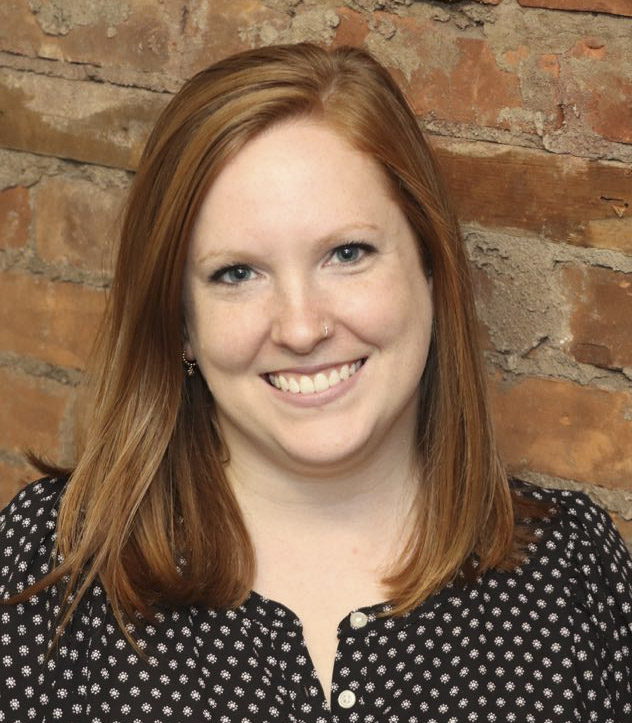
Dr. Jenna Boyd
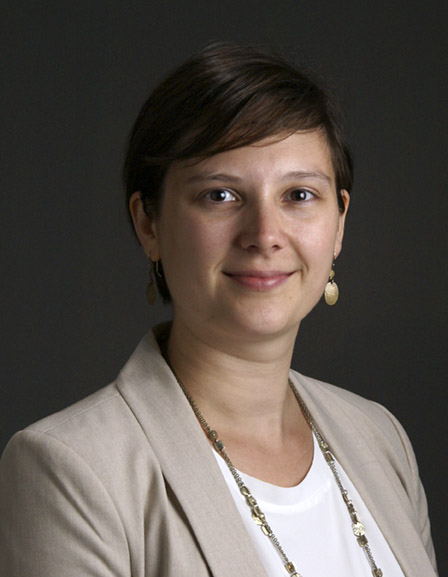
Dr. Rachel Langevin
Dr. Jenna Boyd and Dr. Rachel Langevin, Traumatic Stress Section
Traumatic Stress shows itself in more than just PTSD, and can be caused by more than just major single events. Dr. Jenna Boyd and Dr. Rachel Langevin are working to help those affected by trauma, and working to learn more about traumatic stress as they do.
“In the 80s and early 90s, there was nothing known about the victims of child sexual abuse. Now, there are volumes of research on the subject.”
Dr. Rachel Langevin is an assistant professor of counselling psychology at McGill University, as well as a clinical psychologist who does a bit of private practice. She is currently the Chair-Elect of the CPA’s Traumatic Stress Section. She says her PhD advisor was one of the pioneers in researching the sexual abuse of children in Quebec and Canada. At the time she decided to work on this, it was a reality that many people didn’t even recognize existed. The first step had to be acknowledging, socially, that the sexual abuse of children DID exist, and that often it happened within families. It may seem difficult to imagine now, but it took a very long time for this kind of abuse to be recognized as real in the public at large.
“In the early 80s, some researchers in the States, like David Finkelhor, started trying to really understand child sexual abuse and the specific impact it had related to other traumatic experiences. One of the first to start working on it here in Quebec was Martine Hébert, who was my PhD advisor. Her advisor had been a specialist looking at perpetrators of sexual abuse, but not victims – and Dr. Hébert was the only one looking at that side. She did her research with a lot of autonomy, because no one else had that expertise!”
Today, child sexual abuse is one of the most-studied types of child maltreatment. Research into traumatic stress has come a long way in a short time. Dr. Jenna Boyd is a psychologist at an anxiety treatment and research clinic at St. Joseph’s Healthcare Hamilton, and an assistant professor in the department of psychiatry and behavioural neuroscience at McMaster University. She is the current Chair of the CPA’s Traumatic Stress Section, and specializes in the treatment of Post-Traumatic Stress Disorder (PTSD).
“Cognitive Behavioural Therapy (CBT) is my main area of practice. A little more than 20 to 30 years ago, the main therapies that we’re using now were just emerging. From the perspective of treating PTSD, there was almost a thought that we couldn’t really treat it, but we could kind of help people cope with it. Today, we do have some really effective treatments.
Potentially traumatic experiences are pretty common. Over the course of their lives, most of us will be exposed to a traumatic event. It could be the death of someone close to us, a serious injury, sexual or intimate partner violence, or a frightening near-death experience. For some of us, it’s part of our jobs – a first responder or someone in the military could be exposed to a traumatic event more than once in a day. ‘Traumatic stress’ is what comes about as a reaction to that trauma.
It’s quite normal to have a stress-based reaction to a traumatic event or series of events. Most people who are exposed to one will have some kind of stress-response as a result. Many people will recover over time through a process of natural recovery, but others may go on to develop PTSD. This is where the symptoms related to the trauma persist over a longer period of time. Dr. Langevin says those symptoms can be multiple, complex, and varied.
“We encounter many different symptoms in this line of work. Re-experiencing symptoms, like nightmares, intrusive memories. Someone might be doing something and suddenly an image pops into their head causing distress. Every time they’re exposed to something that might resemble the trauma they endured, or something that makes them think about it, they will have a stress reaction, and anxiety will rise up. That might lead them to the second category of symptoms, which is avoidance. People start avoiding things that remind them of the trauma because it’s too stressful and uncomfortable.
The third big category of symptoms is a change in cognition, mood, and self-image. This includes things like self-blame, taking an overly large share of responsibility over what happened, feeling disconnected from others, or feeling no emotion whatsoever. And finally, there are arousal and reactivity symptoms. This is a more physiological response, and includes things like always being on your guard and looking over your shoulder, being very easily startled, difficulty sleeping, irritability, and possibly self-harm behaviours.”
When a clinical psychologist specializing in trauma sees someone who presents with a cluster of these symptoms, that persists for a month or longer after the traumatic event, and those symptoms are affecting that person’s life, that’s when they start talking about something like PTSD. At that point, it is no longer a normal reaction, and it requires attention. As Dr. Boyd says, there are now many ways that attention can be delivered.
“We now have Cognitive Processing Therapy, Prolonged Exposure Therapy, Eye Movement Desensitization and Reprocessing (EMDR) to name just a few. These treatments have had a lot of research supports behind them over the past 20 or 25 years. We now know they’re really effective for many people, and we have tools where we can say ‘let’s try this and see if we can get you to a place where you’re functioning better’. Many people can return to some of the things in their lives that have been taken away from them.”
Treatments are always improving, clinical psychologists are always innovating, and researchers are continually expanding our understanding of trauma, stress, and the interaction of the two. Dr. Langevin’s current research is looking into the intergenerational continuity of family violence, including child maltreatment and intimate partner violence.
“We know that a parent who was maltreated in their childhood is at increased risk of having a child that will also experience trauma and maltreatment – whether or not it’s at their own hands. Sometimes the mistreated parent becomes a perpetrator of abuse, and other times that doesn’t happen but the child still ends up being mistreated by someone else in the environment. There’s this continuity that we see in the data and in clinical practice, but the mechanisms that are responsible for this – the protective factors, the risk factors that are involved – are still trying to be understood. What makes one parent end up in a cycle where there is repetition of their own maltreatment history with their child, versus parents who are able to break those cycles? We’re looking to help parents who have been in this situation end the cycle, and foster resilience and positive adaptation in their children and themselves.”
Dr. Langevin is quick to point out that treating traumatic stress, and the problems that come along with it, go far beyond PTSD. She says,
“Everything can be associated with trauma, including behaviour problems, emotion regulation, depression, anxiety, bullying, difficulties with attachment and relationship. There are a host of different areas where we can see the consequences of traumatic events. PTSD is just one part of it, there’s a lot more. And we’ve come a long way in learning about it!”
Psychology Month Profile: Dr. Andrew Hyounsoo Kim and Dr. Nassim Tabri, Addiction Psychology Section
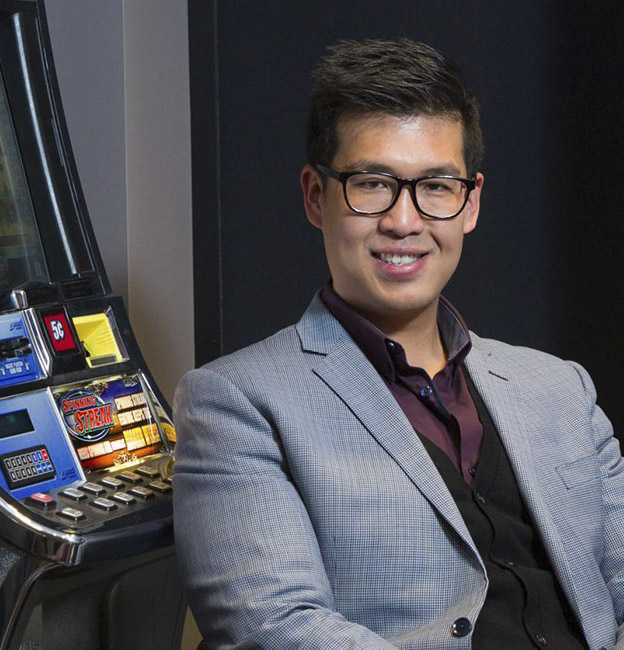
Dr. Andrew Hyounsoo Kim
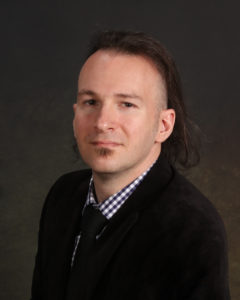
Dr. Nassim Tabri
Dr. Andrew Hyounsoo Kim and Dr. Nassim Tabri , Addiction Psychology Section
Addiction Psychology covers a lot of ground, from substance use to video games. Today’s Psychology Month feature talks to Dr. Andrew Hyounsoo Kim and Dr. Nassim Tabri about the work they’re doing in the field of addictions, and about combatting the stigma that remains around the subject.
“I’ve never had a client when I ask them what brought them in here today say ‘I wanted to become addicted, so here I am’. That has never happened.”
Dr. Andrew Hyounsoo Kim is an assistant professor in the department of psychology at Ryerson University and the Chair of the Addiction Psychology Section at the CPA. A clinical psychologist (Interim autonomous practice), Dr. Kim completed a residency at Royal Ottawa Substance Use and Concurrent Disorders unit. He points out that no one starts out using substances or engaging in a behaviour with the goal of doing it to the degree that it’s going to interfere with their functioning.
Almost everyone has tried alcohol and other drugs. There are few Canadians who have not placed a bet or played an online video game. Some folks end up doing these things in an excessive sort of way, or engage in them more often and for longer periods of time than do others. But very few people develop an addiction. We all make the choice to try some of these things and might make the choice to continue doing them to some degree – but no one chooses to become addicted.
Addiction is one of the most highly stigmatized mental health conditions. In an effort to move away from that, and to create a greater understanding among the public, there has been a real shift over the past decade to move away from stigmatizing language. Researchers and clinicians in this field no longer use the words ‘dependence’ or ‘abuse’ but rather refer to ‘substance use’. Dr. Kim says,
“We no longer use the word ‘addict’. Instead we say, ‘a person experiencing an addiction’. We don’t use the word ‘junkie’, and even ‘clean’ is no longer in our vocabulary because those words are laden with negative meaning.”
The word ‘addiction’, in and of itself, is widely used – and widely misused – in society in general. We tend to use it to describe anything that people will engage with for a long period of time.
“Think of all the ads you’ve seen that say something like ‘this TV show is really addictive’ or ‘I’m addicted to this game’. People use the term a lot, without really knowing what it means. Addiction has a very specific meaning that is far more nuanced than just an activity someone engages in for long periods of time. It encompasses not just the biological (the brain) but also behaviour, emotions, thoughts, and the consequences that come about as a result of it.”
In addition to misuse of the word, there remain a lot of misconceptions about addiction itself – that it is a moral failure, or a personal choice, and that becoming addicted is an indication of a lack of character. Dr. Kim continues,
“At the very beginning when you’re starting to engage in an addictive behaviour there is of course a personal choice. But over time, it becomes a lot more complex than just lack of free will. There are changes that occur in the brain and to a person’s emotional and psychosocial context and it really moves away from being something a choice to a compulsion – that they engage in it even if it is no longer pleasurable. If all it took to stop was for us to say ‘stop using’, clinical psychologists who specialize in addictions wouldn’t have a clinical practice. Addictions are much more complex than just stopping.”
Dr. Nassim Tabri is an assistant professor of psychology at Carleton University. His research is focused on addiction and mental health, particularly the transdiagnostic factors that are present across a range of problematic behaviours such as gambling and disordered eating.. He says,
“In thinking about what constitutes an addiction, and how one can potentially develop an addiction, think of it this way. You try alcohol for the first time, or you pick up a video game and start playing. It doesn’t necessarily mean that a person who tries these things that have high addiction qualities will end up developing an addiction. Addiction happens when they persist in these behaviours, even though the fun has been taken out of it. Now it’s about doing it because you need to do it to function more so than because you’re enjoying it, and because not doing it makes you miserable.”
Addiction psychology is a vast science, touching on virtually every aspect of our connected lives. Ads, games, phones, and more are designed using principles derived from that science. But there is a definite threshold to behaviours that constitute addiction – it’s not an exactly defined threshold, in that it might be a little different for each individual experiencing addiction, but it is a pretty high bar in terms of the activity, or substance use, or behaviour affecting that person’s life. Dr. Tabri says,
“’Addiction’ is a term that should be reserved for an extreme condition. When you see ads, or gamble, in a way they’re nudging you to engage in a certain behaviour. Whether someone develops an addiction or not really depends on their risk profile (biopsychosocial risk factors). Milder engagement in these activities, even though you’re being influenced, doesn’t merit the term ‘addiction’.”
I haven’t touched my phone in about two hours. I pick it up and scroll through the notifications – CBS Sports wants me to know that the Denver Broncos have hired Green Bay’s offensive co-ordinator Nathaniel Hackett as their new coach. The Flipp app would like me to see the new deals available this week at Loblaws. My little mobile game wants me to know my lives have been refilled, Shoppers Drug Mart is very worried that I might miss out on my chance to get 10,000 Optimum points by spending $40 in their store, and Twitter has sent me eight notifications about eight new followers I’ve picked up today.
While not necessarily the work of psychologists who specialize in addiction, all these notifications are informed by addiction psychology. All are designed to provoke a response from me, to get me to interact with the app, the store, or the content in a way that maximizes my time on my phone and (by extension) minimizes my time doing other, presumably more productive but less immediately engaging, things. While these things are created and informed by addiction psychology, the fact that they influence me does not mean that I am “addicted” – there is a certain threshold for the use of that term, and until I forego sleep, skip meals, and leave work four hours early to play Words With Friends, I have likely not crossed that threshold.
Dr. Kim says,
“There are principles being used that increase the likelihood of addictive type behaviours on your smart phone. Things that increase the time on the device. Making it more engaging, sending notifications. With video games in particular, things like leader boards, or ‘here’s a special offer today – for only $1.99 you can get extra lives’. Gambling is another example - psychological knowledge and principles have been used to develop slot machines, to make it more likely that people will stay on the device for longer periods of time.”
While the psychological principles of addiction can, and have, been used to create addictive behaviours that sometimes result in an addiction, psychologists who specialize in this field tend to work on the other side of things. They’re focused on prevention and treatment. They’ve created the low-risk drinking guidelines, low-risk gambling and cannabis guidelines, the theories behind Smart Serve certification, and harm-reduction initiatives like safe injection sites. It’s here where psychological knowledge is applied directly to reduce the harms that some of these substances or behaviours may have. Says Dr. Kim,
“Psychology is the scientific study of the human mind and behaviour. So Addiction Psychology in that sense is using psychological scientifically sound methods to better understand why some people may use substances to the point of addiction, why some people may become ‘addicted’, if we use that word. It’s also trying to better understand the effects of substances and other addictive behaviours on the brain, and for me – what I find most interesting – is how we develop interventions, treatments, and preventions so we can reduce the harms and suffering for people who are living or have lived with addictions.”
When we hear the word ‘addiction’, we tend to think of addiction more in relation to substances than to behaviours. Cigarettes, alcohol, the opioid crisis are all top of mind when it comes to addiction – but are those type of addictive behaviours the same as, say, gambling or video gaming? Dr. Tabri says…not necessarily.
“One thing we focus on is the brain. I have a whole lecture talking about the dopamine reward system. I think there is an understanding in the general public that addictive behaviours have similar influences on the brain in terms of hijacking the dopamine reward system. The idea is that you’re no longer engaging in other activities that are meaningful and make you feel good, instead you’re doing this one thing that makes you feel really good at the expense of all the other things in your life.
But are all addictions one and the same in the brain? Not necessarily. The lay theory was once that it’s all dopamine, and that underpins everything. That started with research with rats in the 50s, and the story took hold because it was an attractive one. It grew into the idea that dopamine can explain all kinds of addictive behaviours. But when you look at the literature, what it says is that dopamine is really good at explaining something like alcohol, for example, or nicotine to some extent. But other addictive behaviours like cannabis, not so much. There’s more nuance and complexity going on than just dopamine. It may play a role, but it’s not the end-all and be-all in the brain.”
The science of addiction, and the psychology behind it, is ever evolving as we learn new things and approach them in a different way. Just as we have evolved in the terminology we use around mental health, substance use, and people experiencing addiction, we have instituted many programs, campaigns and initiatives to reduce harms and reduce stigma. Through it all, many things remain true – the most important being:
No one chooses addiction.

Juanita Mureika
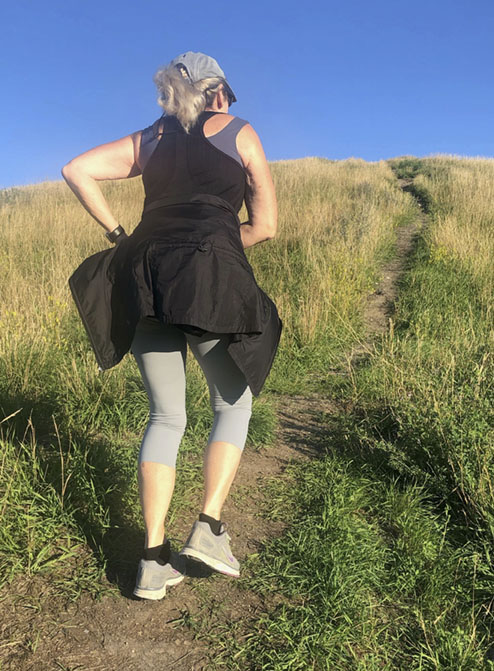
Dawn Hanson
Juanita Mureika and Dawn Hanson , Psychologists and Retirement Section
Even after retiring, many psychologists have ongoing professional responsibilities. Today’s Psychology Month feature talks to Juanita Mureika and Dawn Hanson about the work they’re doing in this space.
Many psychologists get into the profession with a goal of advocacy – advocacy for their clients, for the advancement of psychological science, for knowledge mobilization and for ending the stigmas surrounding mental health. Whether this advocacy is explicit or implicit, it is a universal impetus for people who dedicate their lives to helping others.
That motivation to be of service to others does not end when a career ends. Retirement from the profession of psychology does not necessarily mean retirement from advancing good causes. In fact, it might provide more time to tackle those challenges, or even illuminate new causes to champion.
Such is the case for Juanita Mureika and Dawn Hanson, Co-Chairs of the Psychologists and Retirement Section of the CPA. Juanita retired as a school psychologist in 2011, but remains active in the New Brunswick political arena. She spent much of 2021 pushing against Bill-35, which included a decision by the New Brunswick government to take student assessments out of the hands of school psychologists and allow teachers to perform those assessments instead.
Dawn recently retired as the Chair of the Manitoba Association of School Psychologists, but stays active and involved with the recently proposed Bill-64. The bill would do away with all school boards, to have more of a central authority in government in Winnipeg. She says,
“We, as an organization [the Manitoba Association of School Psychologists], are always tracking anything that could impact psychological services in Manitoba, particularly as it pertains to school children and families. I can’t imagine – retired or not – not being involved in these burning questions and issues. We’ve been very involved in trying to shape a new College of Psychologists in Manitoba. Our school psychologists have not been part of the regulatory body before now. So now with the opportunity of a new college coming in, we’ve been working for many years trying to create representation within that college.”
For Juanita, Dawn, and the Psychologists and Retirement Section as a whole, advocacy does not end with retirement. And retirement itself actually creates further areas where advocacy can be very important. Retired psychologists across Canada are very concerned about regulations in their respective provinces for how long files are to be kept. In one province the rule is that files must be kept secure for fifteen years – but if your client is a school-aged child, then those files must be kept secure for fifteen years after the year when that child reaches the age of majority. Dawn says,
“This is very onerous for psychologists who have to somehow find a way to store and maintain these files securely, sometimes for decades! For Juanita and I, most of our practice has been within a school setting, so when we retire from our job, it’s not our problem any more. The school must keep those files safe and secure in line with what is required either by the regulatory body or the province.”
Neither Dawn nor Juanita are affected by this issue, but here they are championing the cause nonetheless. The Psychologists and Retirement Section has sent out a survey to all other regulatory bodies across Canada, including the Territories, to determine what the issues were regarding confidentiality, file retention, informed consent, and more. As of the writing of this article, the responses from those groups are still coming in – slowly. So far, the one thing that is clear is that the regulations, policies, and practices governing file retention vary wildly from one province to another.
Imagine you’re closing your psychology practice and retiring. In addition to a massive number of electronic files, you also have reams of physical paper files that you must keep secure for a further fifteen years. It is likely impractical, not very secure, and possibly illegal for you to keep them in your basement. Are you going to pay for 15 years at a storage locker, on what is now a fixed retirement income? What are your options and how can you go about doing this? And who, depending on where those files are stored, will insure them?
Dawn and Juanita are on the case. It may take a while to procure answers, as every step along the way there is another wrinkle thrown in. Says Juanita,
“Another thing we now have to consider is that many provinces require a professional will if you’re going to retire. So those files will become someone else’s problem if you retire, or if you die. But not all provinces require that. There’s always something new. But if you think about medical or dental records, those are kept for a very long time and so should psychological records be kept a long time. It’s just a little overwhelming for people who think ‘how long will this go on?’”
Juanita, Dawn, and the Psychologists and Retirement Section may be retired as psychologists, but are increasingly involved in advocacy. Within school boards, provincial policies, and the section itself there are multiple opportunities to shape systems for the better. They are going to keep pushing forward on the issues that are important – for retirees, for school psychologists, and for everyone else.
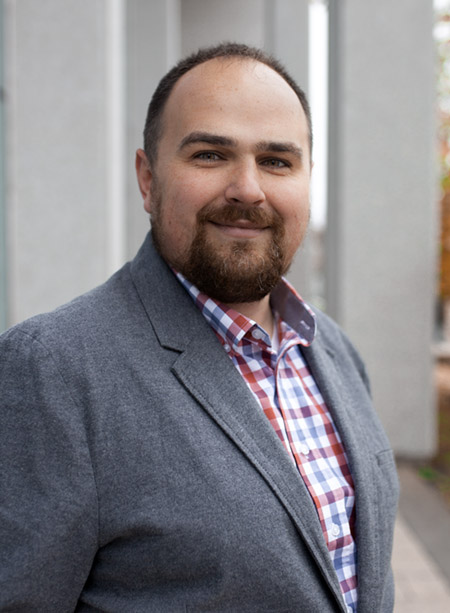
Dr. Jonathan Wilbiks
Dr. Jonathan Wilbiks , Brain and Cognitive Science Section
Researchers in the realm of the Brain and Cognitive Science are interested in how our brains work, and how they perceive and sort external stimuli. Today’s Psychology Month feature delves into this subject with Dr. Jonathan Wilbiks about his work – and that of Snoop Dogg and Angela Hewitt.
“With so much drama in the LBC
It's kinda hard bein' Snoop D-O-double-G.”
You’re in the audience for the Super Bowl halftime show. Dr. Dre, Eminem, Mary J. Blige, Snoop Dogg and Kendrick Lamar are performing, and you’re grooving to the music. On the big screen you can see Snoop rapping and the music hits your ears. The crowd around you is roaring and cheering. You are lost in the moment so you’re not really thinking – how do I know? How do I know that it’s Snoop Dogg’s voice that I’m hearing? How am I certain that the crowd noise around me is being made by my fellow fans? You don’t have to answer that because your brain is putting it together for you. Snoop’s lips are moving on the big screen, and they seem to match the lyrics you’re hearing. The crowd noise is coming from behind, in front, and all around you and your brain sorts that out for you so you know it’s thousands of people shouting thousands of different ways, and you need not pay attention to any one voice in the crowd.
How your brain performs these tasks is the realm of cognitive science, studied by researchers like Dr. Jonathan Wilbiks, an associate professor in psychology at the University of New Brunswick Saint John. Dr. Wilbiks is the Chair of the Brain and Cognitive Science Section at the CPA, and studies audio-visual integration and multisensory processing – how our brain takes various sensory inputs and makes an implicit decision as to whether those things came from the same source. (Your lips are moving, and I hear singing – it is likely your voice I hear.)
Recently, some of Dr. Wilbiks’ work has been around perception and musical abilities. His lab found that musicians perform much better than non-musicians at tasks when audio and visual are congruent – that is to say the image matches, and happens at the same time, as the sound. But musicians perform worse than non-musicians when audio and visual are not congruent. People who have been trained in music, more than those who have not, use auditory information to help them make sense of something they see.
When Angela Hewitt sits down at a piano and places the sheet music for the Goldberg Variations in front of her, it all makes perfect sense. Each note on the paper indicates a note she must play on the piano, and the two things are congruent – this is something she has done her entire life and it’s easier for her than it is for…well, everyone else in the world. But if, instead of sheet music, she was presented with a cuneiform tablet that represented a musical notation, she might be completely lost – in fact, someone with no ability to read music at all might be able to perform the task better than she could. (The first musical notations ever discovered were from about 1400 BC on a cuneiform tablet in what is now Iraq.)
In the years following the Second World War, the big trend in psychology was behaviourism. You put a rat in a box and expose it to a stimulus, then you measure how it reacts and how those reactions change over time with repeated exposure to that same stimulus. We didn’t really pay a lot of attention to what was actually happening in the brain. Dr. Wilbiks says this was because science is all about observable fact, and there was no way to observe what was happening in the brain at the time. Where this began to change was in the late 60s, when German-American psychologist Ulric Neisser published Cognitive Psychology, which suggested that a person’s mental processes could, in fact, be measured and analyzed. Dr. Wilbiks says,
“The cognitive researchers who showed up in the 60s said ‘there’s a whole lot happening in the brain’. Sure, we don’t know exactly what’s happening there – but something is, so to ignore it completely is a mistake. So they would try to hypothesize about what might be happening, and to try to measure using secondary observations. A simple example would be something like a reaction time task. I give you a button and tell you to push it every time a light flashes on the screen in front of you. People are generally pretty fast at that – maybe 200 milliseconds. But if I give you two buttons and tell you to press the left one when a green light flashes and the right one when a red light flashes, it will take longer. Maybe 400 milliseconds. You can’t see what’s happening in the brain, but you can surmise that if task one takes 200 milliseconds, and task two takes 400 milliseconds, that tells us very basically that processing information in the brain takes time.”
Over time, of course, things moved way past red-light-green-light as experiments became more sophisticated and technology allowed us to actually see what is happening inside our heads. We can see the electrical voltage created by neural impulses in the brain. fMRI (Functional Magnetic Resonance Imaging) machines allows scientists to observe and measure changes in the oxygenation of blood which indicates differing levels of brain activity. We can now tell which areas of the brain are active, when they’re active, and then correlate that with the behavioural information we see.
The field of the brain and cognitive sciences is vast, and has effects that can be seen in our everyday lives in a myriad of ways. Right now, there is a ton of stuff going on where you are. You might be sitting down on a chair. There is other furniture in the room, maybe decorations on the wall. There is traffic going by outside, maybe the dishwasher is going in the background and someone is watching TV in another room, all while you’re reading this article. You can’t possibly pay attention to all of it at once, so your brain filters all of those external stimuli before you even perceive them, so you aren’t overloaded.
Your brain decides, for you, what is consequential. That traffic you hear outside? It can be ignored because it doesn’t present a threat. As Dr. Wilbiks says, cars rarely crash into houses so, while sitting in your house you are free to be unconcerned about the sound of cars. But when you’re walking down the street, the sound of cars is very important to you – if you hear the sound of a car accelerating as you enter a crosswalk, you should certainly turn your head toward that sound to see what’s happening, because now there is a real possibility of danger.
The brain creates these shortcuts to get maximum efficiency with minimum effort, something called “cognitive economy”. Because we use these shortcuts, and we process only the most pertinent information and take the most important cues, we are susceptible to “nudges”. These are little things cognitive science has created to make us behave a certain way. One example is being a safer driver. Dr Wilbiks gives an example:
“You’re on the road in your car, and you know you’re driving on a small residential street. You know the speed limit is 40 km/h, so you’re driving rather slow, and you’re paying attention. Looking for kids running out into the street, a dog running loose, a basketball rolling toward the road. If you’re driving on the highway, you’re paying attention to many other things, but you’re not looking for an errant basketball. Where we can use cognitive understanding and nudges is in a situation where, for example, people tend to be driving too fast on a residential street. We can do things to slow them down. You’ll sometimes see little islands, with a tree on them or something, that make the road a tiny bit narrower. It doesn’t get in the way of traffic, but the average person wouldn’t feel comfortable driving through that narrow gap at a speed greater than 40 km/h.”
The one thing that my brain focuses on, whether I’m in my car or working on my computer, is music. Anywhere it’s playing, in the background or from my neighbour’s garage way down the street, I can’t ignore it. Dr. Wilbiks says one of his favourite classes to teach is The Psychology Of Music, because it encompasses so many aspects of psychology in general, not just of cognitive science. He says,
“I usually scare students in the first few lectures because we start out with physics. The physics of sound, and sound waves, and how that works. Then it’s about how the vibrations get into your ear, how that translates up into your brain and how you perceive it. Then we get into developmental psychology – how do we develop our musical ability, the close parallels between musical development and linguistic development. We talk about treatment – there’s some really cool work being done using music (Melodic Intonation Therapy) to help people who have experienced a stroke recover some linguistic ability.”
We all have two hemispheres in our brain, and there is a part in the right hemisphere where we process music. There is a part in the left hemisphere that mirrors the music part almost exactly, and that’s where we process language. When people who have had a stroke sing the words they are trying to speak they can, over time, train the other hemisphere of their brains to process language again. Eventually they might regain up to 70-80% of their speaking ability as a result. People living with dementia are often able to connect with music in a way they can’t with language, as music can trigger memories that might otherwise be inaccessible.
Perhaps you’ve seen the meme going around that says, ‘my ability to remember song lyrics from the 80s far exceeds my ability to remember why I walked into the kitchen’. This might actually be true, as music from our youth remains a powerful trigger for memories which is why dementia support groups often sing songs together from their youth – Beatles and Beach Boys and traditional folk songs from the country where they were raised. In a few years, things might be a little different – in 2054, those support groups might be singing ‘Gin and Juice’ by Snoop Dogg. Will rap songs produce the same kind of memories and enhance language abilities in the same way? Only time will tell – but when we do have the answer to that question, it will be provided by cognitive psychologists and others in the field.
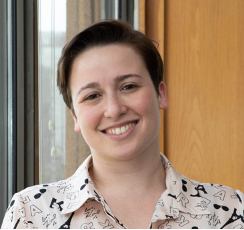
Dr. Gilla Shapiro
Dr. Gilla Shapiro, Health Psychology and Behavioural Medicine Section
Health Psychology and Behavioural Medicine covers a lot of ground, from encouraging people with diabetes to take their insulin to nudging people toward healthier eating habits. Today’s Psychology Month feature talks to Dr. Gilla Shapiro about the work she’s doing in the areas of cancer and vaccines.
Health Psychology and Behavioural Medicine
“We know that vaccine uptake varies depending on the vaccine. Even before COVID-19, certain vaccines like MMR [Measles Mumps Rubella] had higher uptake rates than the flu vaccine. There is also a difference between childhood and adolescent vaccines. You could see that with HPV [human papillomavirus] which was administered in schools to adolescents.”
Health Psychologists and Behavioural Scientists have expertise that spans a very wide variety of specialties and disciplines. Many are also clinical psychologists, licensed to provide psychological services and therapies. Clinical Health Psychologists help people through medical issues, diseases, and chronic conditions. Behavioural Scientists study all of this, especially when it comes to preventative behaviours and behaviours that can affect the progression of a medical diagnosis. What helps a person with a heart condition maintain a strict diet? What affects the consistency with which a diabetic takes their insulin? And – very importantly of late, what factors influence a person’s acceptance and willingness to be vaccinated?
Imagine you have just been diagnosed with cancer. You probably have hundreds of questions and even more fears suddenly thrust upon you. There may be other factors that compound that stress, like the possibility of infertility, the loss of income, or the need to arrange childcare while receiving treatment. You might also now have a whole bunch of new doctors and specialists you never had before – oncologists, oncology nurses, patient navigators, genetic consultants. It’s a lot to handle, on top of trying to come to grips with the diagnosis itself.
One of the people who might help you through this difficult time is a psychologist, like Dr. Gilla Shapiro at Princess Margaret Cancer Centre in Toronto. Dr. Shapiro is a clinical and health psychologist, a behavioural scientist, and a psycho-oncologist (a specialist in cancer). She works with people who have received a diagnosis, with those who are undergoing treatment, and also with people receiving end-of-life care.
“There are many people who experience elevated distress [related to cancer and its treatment] so having a specialized treatment team to support them and their loved ones is really important.”
Some of this takes the form of supportive therapies, and some of it has to do with decision-making. If a person experiencing cancer must make a decision as to whether to begin a chemotherapy regimen, given the devastating toll that takes on the body and a certain percentage chance of it working, talking that through can be very helpful in the process. Trying to decide whether to join a clinical trial can be an overwhelming choice a person with cancer has to make. A psychologist like Dr. Shapiro approaches this in a few ways ̶
“People need support in different ways and have different concerns that could be social, practical, psychological, or emotional. Some may wonder, how am I going to approach cancer with my children? Others may require support with symptoms like pain, insomnia, anxiety, or depression. There are some types of cancer for which there is a genetic predisposition. So if genetically tested, some people wonder who should I tell, and how do I tell them?”
A team at Princess Margaret is working on developing evidence-based interventions to reduce distress and improve patients’ cancer experience. For example, an intervention called CALM (Managing Cancer And Living Meaningfully) is designed to help patients adjust to living with advanced cancer. It draws from a number of theories in psychology and mental health – relational, attachment, and existential theories – the goal being to address a number of different domains in an individualized way. Symptom management, changes in a patient’s relationship with themselves as well as their loved ones, a sense of meaning and purpose in life, and hopes and concerns relating to the future are all factors that are considered in CALM therapy and are all experienced differently by every person who receives a terminal cancer diagnosis.
One of the reasons Dr. Shapiro chose to come to Princess Margaret was that her supervisor, Dr. Gary Rodin, along with his colleague Dr. Sarah Hales, had developed CALM. Dr. Rodin and his colleague Dr. Madeline Li were also doing interesting work in understanding what factors impact individuals in make difficult health decisions. One big decision in cancer care, one that has come about much more recently, is medical assistance in dying, or MAID. Dr. Shapiro wanted to bring a health equity and policy lens to this work. Dr. Shapiro didn’t start her work in psycho-oncology and behavioural science there though, she began her work in psycho-oncology in cancer prevention and working on vaccines. Vaccines like the HPV vaccine, and how we can prevent viruses that cause cervical and other cancers by supporting individuals in making behavioural choices, like getting vaccinated.
Less than two years before COVID-19 was declared a pandemic by the World Health Organization (WHO), Dr. Shapiro completed her PhD on human papillomavirus (HPV) vaccine hesitancy in Canadian parents. With colleagues at McGill University, she developed scales to measure vaccine attitudes and conducted research to understand the behavioural and social drivers of vaccination in the Canadian population.
. In 2019, she began working with the WHO developing tools for routine childhood vaccination and to measure the behavioural and social drivers of vaccination globally. When the pandemic hit, that work pivoted to understanding adult vaccine acceptance and intention to the COVID vaccines, as they became available
During the COVID-19 pandemic Dr. Shapiro has been a member of Ontario’s COVID-19 Science Advisory Table’s Behavioural Science Working Group and she and her colleagues at the COVID-19 Science Advisory Table for Ontario (many of whom are also members of the Health Psychology and Behavioural Medicine Section of the CPA) published the brief ‘Behavioural Science-Informed Strategies for Increasing COVID-19 Vaccine Uptake in Children and Youth [link]’ in October.
While understanding the behavioural and social drivers that impact COVID-19 vaccine acceptance, she has also developed an interest in another cascading impact of the pandemic: missed or delayed routine vaccinations. Dr. Shapiro and colleagues at the WHO and elsewhere have recently completed a study looking at missed routine childhood vaccinations in 26 countries during the pandemic [link - COVID-19 and missed or delayed vaccination in 26 middle- and high-income countries: An observational survey].
Imagine you have been through a cancer diagnosis, have been through surgery and radiation, and are now on the other side with a (relatively) clean bill of health as a result. A clinical health psychologist may have helped you through that process, but now there is another, out-of-your control existential threat – a global pandemic. Your continued safety, in your immunocompromised state, relies on those around you getting vaccinated against that pandemic. It’s not an easy place to be, but it is nice to know that Health Psychologists and Behavioural Scientists like Dr. Shapiro are out there, working on that as well.
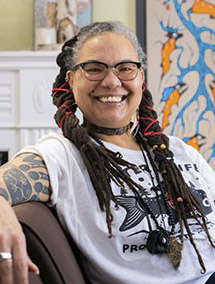
Ann Marie Beals

Dr. Natalie Kivell
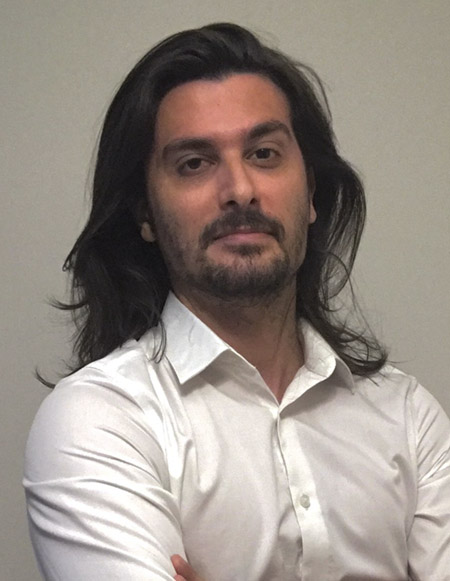
Ramy Barhouhe
Ann Marie Beals, Dr. Natalie Kivell, and Ramy Barhouhe, Community Psychology Section
Community Psychology is a little more “community” than “psychology” and is heavily involved with social justice issues. Today’s Psychology Month feature talks to Ann Marie Beals, Dr. Natalie Kivell, and Ramy Barhouhe about the work they’re doing in this space.
“People who are engaged in social change in their communities – community organizers, grassroots social movement folks – have equally rigorous theories about how change works as we might have in academia.”
Dr. Natalie Kivell is an assistant professor at the Wilfrid Laurier community psychology program. She says there are “two…and a half?” community psychology programs at Canadian universities, and that those who work in the field tend to be a lot more involved with the ‘community’ part than the ‘psychology’ part of that job description.
Ann Marie Beals is one of those people. Ann Marie is a graduate student in the community psychology program at Wilfrid Laurier. They are L’nuk of Mi’kma’ki - African Nova Scotian and Mi’kmaq descent, and their work focuses on the erasure of mixed-blood Indigenous-Black communities historically and in the context of today’s society, Truth and Reconciliation, and the ongoing marginalization of both Indigenous Nations and Black communities in Canada.
Natalie’s student Ramy Barhouhe is originally from Lebanon and lived in the United States before coming to Wilfrid Laurier for the community psychology PhD program. His work is focused on colonialism and coloniality – how these power structures have shaped the development of whole community systems in North America and Southwest Asia. How this guides the way people perceive, feel, and experience the world in terms of time, space, morality, power, education, health, justice, politics, economics and more.
Ramy, Ann Marie, and Natalie have come to community psychology via very different paths, but all have similar outlooks in that they all put ‘community’ before ‘psychology’. They are all heavily invested in ways to dismantle our current systems – and they are all keenly aware that they themselves are working within some of those systems. Ramy is studying ways to decolonialize as part of academia, itself a structural vestige of colonial practices. Ann Marie is a member of the CPA, and the Treasurer of the CPA’s Community Psychology section, both institutions that are shaped by the legacy of colonialism. Natalie is a professor in psychology – a field of study that has long been complicit in not only colonialism but also the marginalization of minority populations.
Says Ramy, “the academic world is so intertwined within the neoliberal capitalist system that it’s really difficult to manage the disconnect. The power discrepancy between those who control the flow of knowledge and those that don’t is too big. For example, an academic is getting a grant in order for them to do some research, then they go use a community to get information from that community. But they don’t get approval from that community afterward with regard to knowledge distribution and mobilization. They get the credit, the acknowledgement, and the funding, but the community itself gets nothing from it. They’re just supporting and serving the academic. So that’s one problem with the structure of colonialism within academia that we still need to talk about further and to overcome.
We talk about this a lot in our program, and we acknowledge that we’re part of the problem as well. If we’re doing that research, we’re not absolved from the structure, and the impact it has on the community – we’re still part of that problem. We’re trying to find a way to reimagine this, and it involves a certain amount of respect and humbleness toward the community in which we work. Making sure they get their due, their respect, and even funding to serve their community’s needs. That’s where the shift is – how can we take the resources that are unfortunately part of a corrupt system and use them to benefit those communities? And, how to use their knowledge as their own, and not mine just because I did a survey.”
Ann Marie looks at the current situation, informed by the COVID-19 pandemic, as a window into the work that needs to be done. They say, “one of the things that’s been revealed from this pandemic is how neoliberal austerity policies and practices have affected our health care systems, and how precarious workers in minimum- and low-wage jobs – predominantly Black women, racialized peoples, newcomers, and Indigenous peoples, are disproportionately affected by a lack of compassion, care, and adequate safety nets that were dismantled by neoliberal governments.
As an example, our current Ontario government, within a capitalist system, legislated limited pay increases of 1% for public sector workers like health care workers, as inflation is looming over 4% [4.1% August 2021]. In our community psychology program we have student and faculty researchers who come from and live in communities that are directly affected by neoliberal and colonial practices, such as this one, that continue to widen the gaps in health care and economic stability. At the same time basic human rights such as housing, education, clean water, and quality of life remain not only unfulfilled but purposefully denied. So as a student researcher, I and other critical community psychologists examine the intersections of how power structures such as white supremacy, colonialism, neoliberalism and patriarchy intersect with human beings and with Mother Earth through myriad interconnecting identities.
We look at these power structures, through control of resources on stolen Indigenous lands, anti-Black racism, and colonializing policies. And by that I mean the people who support and hold up these power structures. Sometimes we speak almost abstractly or theoretically about power structures, but we have to be cognizant of the fact that people hold up and maintain these structures. They try to dictate how we live our lives, and systemically oppress anyone who does not fit the able-bodied white cisgendered heterosexual man dominated perception of what is ‘Canadian’. For me, it’s always about dismantling the power structures that oppress people in my communities.”
There are several words Ann Marie, Ramy, and Natalie all use quite often – intersection, dismantling, neoliberal, colonialism. Another word they all use, maybe even more often, is “collaboration”. Ramy speaks about working in collaboration with communities, so that the work done there is not extracting, but rather enhancing, the knowledge, the health, and the success of that community. Ann Marie speaks about collaboration in the sense that credit for the work done is not only not the end goal, but antithetical to the process of self-determination in communities. And Natalie talks about dozens of other community organizations, grassroots activists, and scientific disciplines with whom she works to advance the myriad causes of social justice. In fact, the very first word she uses to describe community psychology is “interdisciplinary”.
“Community psychology is an interdisciplinary, values-driven, action-oriented, community-engaged social science. It addresses social justice at the intersections of racial, climate, immigration, gender, prisoner, and disability justice. We work at the intersections of the complexities of how social justice issues touch each other in an interconnected way. Community psychology is guided by a set of theories. We approach these complex social issues from places of prevention, ecological theory, critical perspectives, and decolonial perspectives. We look to situate relationships between individuals, communities, and societies. If we have equitable and just communities, we have healthier people. And therefore the target of community psychology is figuring out how to rebuild, re-imagine, and co-create equitable school systems, health systems, prison systems and so on.”
Because Community Psychology tackles such a wide array of systems and structures, their work crosses many boundaries into other aspects of psychology – criminal justice, environmental, educational, and more. Although they are small in number, their collaborations across disciplines, sciences, community groups and activist organizations ensures that they will continue to have an outsized impact.

Dr. Milica Miočević
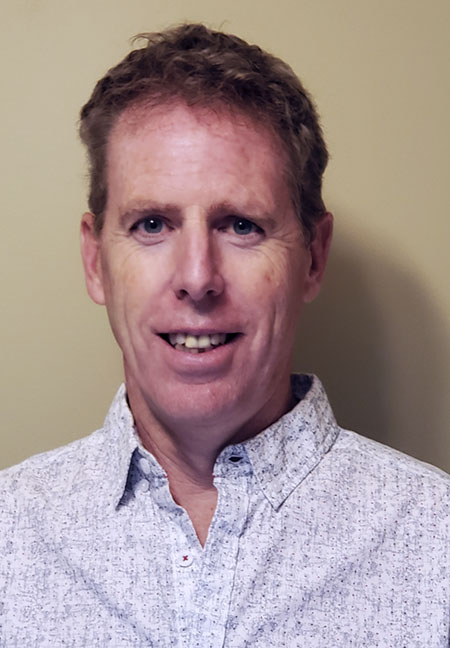
Dr. Rob Cribbie
Dr. Milica Miočević and Dr. Rob Cribbie, Quantitative Methods Section
Quantitative Methods is a science that works with nearly every branch of psychology. All researchers use different methods to analyze data – but all of them analyze data. Today’s Psychology Month feature talks to Dr. Milica Miočević and Dr. Rob Cribbie about the work they’re doing to make that data collection and analysis easier, more consistent, and more accurate.
In the very broad field of psychology, Quantitative Methods is the indie college radio station of the group. The one who played U2 and R.E.M. in the 80s before ‘Sunday Bloody Sunday’ and ‘Man on the Moon’ became ubiquitous. The one who “discovered” the Red Hot Chili Peppers in the early 90s before Blood Sugar Sex Magic and the Grammys. Or who, more recently, broke the Black Eyed Peas before the addition of Fergie and all that commercial success.
Quantitative Methods is the kid with the nose piercing and the plaid shirt who was into Structural Equation Modeling, Bayesian Statistics, or Hierarchical Linear Modeling, before it was cool. The one who spent months in their room, poring over the catalogue, learning every facet of this statistical method, before letting go and sending it out into the world to be used by psychological researchers. Most of these methods were studied in depth by a very small group of Quantitative Methods Psychologists at one time but are now used widely throughout the discipline.
They’re also, in another way, the Rick Rubin of psychology. You know how the Red Hot Chili Peppers made the big time with Blood Sugar Sex Magic? Producer Rick Rubin. Slayer’s magnum opus Reign in Blood, Adele’s 21, the Beastie Boys breakthrough Licensed to Ill? Rick Rubin. And for psychological researchers doing in-depth work – whether that be on depression, or vaccine confidence, or PTSD in military couples – the producer working behind the scenes to ensure scientific rigour is Quantitative Methods. The Quantitative Methods Psychologists help them craft their study to determine the best way to collect that data, to account for unforeseen wrinkles, and the sample size that is required to detect relevant effects.
Dr. Rob Cribbie is the Chair of the Quantitative Methods Section at the CPA, and a Quantitative Methods Psychologist in the Department of Psychology at York University. He says,
“It’s about research methods and the analysis of data. People who work in Quantitative Methods do everything from consulting on sample sizes, research designs, and the analysis of the data to researching new or improved methods for analyzing data. We also go into the psychometrics of the tools we use and how well they work.”
So what does this kind of work look like, on a day-to-day basis? What exactly does a Quantitative Methods Psychologist do? Dr. Milica Miočević is the Secretary/Treasurer of the Quantitative Methods Section, and a Quantitative Psychologist in the Department of Psychology at McGill. She gives an example:
“I recently published a paper with a co-author from biostatistics on power prior distributions. We were trying to find a way to use historical data from a study that’s related to the current study, but conducted using a sample from a slightly different population. We thought of ways we could quantify the differences between the participants in the previous study and participants in the current study, and tested whether using our method with data from a previous study can improve inferences in the current study. The article that we published will allow researchers in psychology to rely on historical data to improve statistical inferences of new research studies without requiring prohibitively large sample sizes.”
The field itself is, in a way, rather new. The Quantitative Methods Section of the CPA is celebrating its tenth anniversary this year, and the discipline, while widely recognized today, was much less familiar ten or twenty years ago. Says Dr. Cribbie,
“I remember when I was interviewing for jobs, around 2000, most of the interviewees were asking ‘what’s your area of psychology?’ And I would answer ‘quantitative methods’, and they would say ‘no, we mean – is it depression, is it clinical, cultural – what do you study?’ And I would say ‘well…quantitative methods’. They didn’t see this as a discipline. There’s been quite a shift. Now it’s totally mainstream to say ‘I’m a quantitative psychologist’. The area of Quantitative Methods is so broad now, and there are so many tools that we use, that you really need people who specialize in the different methods.”
With the growth of the field has come a sea of change in the ways psychologists analyze and interpret data. The advent of software programs like R and others have opened up a world of possibilities that were a lot more difficult, even inaccessible, 20-25 years ago. And it is constantly changing. As a new method becomes popular and widespread throughout the world of psychology, quantitative methods psychologists have already moved on to something else entirely. Dr. Miočević says,
“We go through waves of what’s interesting and what we think needs to be developed more. When I was in grad school, Bayesian methods were becoming the popular topic. Now, it seems like it’s Machine Learning, and we’ll see what the next thing is. I feel like every few years we add something new to the quantitative methods toolbox in psychology. Sometimes the novel approaches are coming from statistics, sometimes they are coming from other fields like economics. There has been a lot of change in my ten years!”
You know that one pop song you really like? The one by Taylor Swift or Dido or Alicia Keys or Imagine Dragons with the guest rapper? That guest rapper is Kendrick Lamar. Quantitative Methods is, in a way, the Kendrick Lamar of psychology, though they will likely never get the solo recognition that he did when he won the Pulitzer Prize. They will collaborate with anyone from any discipline, any time – so much so that after a while you barely notice they’re there. Every facet of psychology, every individual discipline, is informed by the latest tools for data analysis, the most up-to-date research methods and practices, and the scientific rigour provided by Quantitative Methods. Says Dr. Cribbie,
“Quantitative Methods span all the areas of discipline. So, if you were to take every section of the CPA, Quantitative Methods play a role in every one of those sections. It’s great that there is this section that allows people with this interest to discuss new and different methods, and ways in which people apply these tools.”
It is for this reason that Psychology Month 2022 kicks off with Quantitative Methods – it is the one section that informs all other sections. Dr. Cribbie, Dr. Miočević, and their colleagues are the cool kids on the block who were way into that research method long before you’d even heard of it. You can follow the Quantitative Methods section on Twitter - @cpa_qm – on their website https://canadianquantpsych.wordpress.com/ or through their section newsletter https://cpa.ca/sections/quantitativemethods/newsletter/ so you, too, can be one of the cool kids who knows things before anyone else!

Dr. Elena Antoniadis

Dr. Steve Joordens
Dr. Elena Antoniadis, Dr. Elizabeth Bowering, and Dr. Steve Joordens , Teaching of Psychology Section
The Teaching of Psychology is a science that never happens in exactly the same way. Different groups in varied settings approach learning in a multitude of ways. Today’s Psychology Month feature talks to Dr. Elena Antoniadis, Dr. Elizabeth Bowering, and Dr. Steve Joordens about the work they do in this field.
Dr. Steve Joordens, psychology professor at the University of Toronto, has an analogy to explain the Teaching of Psychology:
“I think of teaching as a craft. Like a craft beer – if you want to be a good brewer of craft beer, you need to know the science behind the recipes and the way you put things together. In addition though, there’s also a subjective element. The mix of ingredients that really works for you might, for one reason or another, not work for somebody else. So, there’s a mix of knowing the science – knowing the ingredients that could make for a powerful educational experience – but then the professor themselves have to find what works for them, and their class, and the context in which they’re teaching. That’s where the craft comes in, merging the science with the human to create a great educational experience for our students.”
Whiprsnapr Brewing Company in Bells Corners, Ontario has a craft beer called OK Lah. It’s a southeast-Asian inspired cream ale made with coriander and ginger. It is certainly not to everyone’s taste, and when I sent some to my sister it sat in her garage for two years as ‘that beer no one wants’. That said, it remains one of their best sellers year after year. It’s a tried-and-true formula that works for many people – but not most people. As in the Teaching of Psychology, inspiration can come from anywhere, but perfecting the formula for success is up to the individual.
Dr. Elena Antoniadis is a faculty member at Red Deer Polytechnic in Alberta and also adjunct faculty with U of Calgary. She is the Chair of the Teaching of Psychology Section at the CPA, and does research on ways to integrate basic neuroscience applications into teaching in order to promote and facilitate learning for students in higher education. She says,
“Teaching of Psychology is about research-based approaches to enhance teaching and learning in classrooms. Some of the research comes from laboratories doing studies in cognitive science that will inform our teaching. Other forms of research occur in the classroom itself. We’re collecting data in the classroom, and that data can inform our teaching practices. The goal is to effectively design and deliver curricula in post-secondary education by using these research-based studies in order to further inform our theory and our practice.”
In 2016, Beau’s All Natural Brewing Company in Vankleek Hill, Ontario made every employee of Beau’s a co-owner of the company. In 2011, they partnered with a local community organization called Operation Come Home to hire youth experiencing homelessness to deliver their beer. Not only are they a fixture in the community who buys their beer, they are involving the community in every step of that process, which has led them to enormous local success. This kind of approach informs a lot of the Teaching of Psychology, and that community involvement is called “service learning”.
Dr. Elizabeth Bowering is a professor in department of psychology at Mount St Vincent University and the Past Chair of the Teaching of Psychology Section. She teaches a range of courses like introductory psychology and developmental courses. Some of her research is in the area of service learning. She says,
“In my adolescent development course, I have my students carry out service learning in the community. So they’re working with youth who may be at risk for dropping out of high school. They work with them, doing academic tutoring and mentoring, as a way to encourage them in their own academic pursuits. There are so many ways we’re trying to broaden the teaching/learning process not only for the ones who are already in our classrooms, but to make that accessible for other people.”
The Church Brewing Company in Wolfville, about three blocks from Acadia University, has a terrific gose called Saltwater Joys. A gose made with salt water makes sense – after all they’re right on the ocean and how much more local can you get? But just because something is there, and accessible, and sounds neat does not mean it is necessarily going to work. Dr. Joordens knows this well, as his specialty is in the effective use of technology to enhance learning. He says that in the past decade, universities have been more cautious about jumping on that latest bandwagon.
“Right from the level of procurement, universities are a lot more careful today about thinking in terms of educational practices and making sure they’re evidence-based. There’s got to be research to support this flashy new thing that they’re buying, and we’re not going to have people using it just because it’s cool. One of our big roles is to create that evidence base and support it. You can have the best technology in someone’s hands, but if you don’t support it well, it might not work for them and it might be a failure.”
The Teaching of Psychology involves that research, those supports, and the measuring of the evidence that goes into teaching – but not just of psychology. Although a lot of the work originates in labs, or in psychology classrooms, the hope for all of the research is that it can be applied to other classrooms, in other ways, and by other people to enhance the learning experience for all students. Dr. Antoniadis gives an example:
“A practical application could be enhancing social interaction in the classroom. Social interaction between students, but also between the student and the professor. Or an application could be used to enhance student motivation, or to direct and inform the use of assessments.”
Says Dr. Bowering, “I think regardless of how long you’ve been teaching, you’re always learning something new, and get surprised by the experiences you have inside and outside the classroom. Our section offers support and encouragement for people at all stages – the beginning academic getting their feet wet, the mid-career professor who’s taught a course dozens of times and wants to bring something new to it, or even somebody further along in their career mentoring others. Teaching of Psychology is really quite broad!”
The Lake of the Woods Brewing Company has locations in Kenora, Ontario and in Winnipeg. Much like virtually every other craft brewery, they have recently expanded their repertoire to include craft sodas – for example, their Hockeytown Root Beer. While it seems like a departure from their standard offerings, this expansion to soda has been universally successful for breweries across the country, and has provided them with another product to sell to folks cooped up in their houses amid COVID lockdowns. Just like how, in the Teaching of Psychology, the pandemic has created an opportunity for something that can be universally applied with success across Canada. Particularly, for students who might struggle with the financial burdens of obtaining a higher education. Dr. Antoniadis elaborates:
“In the last year I’ve been doing research on open educational resources. I also found the Diener Education Fund – it was created by two psychologists who happen to be married, who raised funds to pay for course releases for faculty members who are experts in specific subdisciplines. So, they’ll find a person who’s an expert in evolutionary psychology, and ask them to write a chapter on evolutionary psychology. Then an expert in statistics, or in development, and they fund a course release for that person to write that chapter. They designed a website called The Noba Project where faculty members can go in and customize their own textbooks. I can go in and take the chapters that I want, that cover the same material that exists in publisher-based textbooks. So, I’ve built my curriculum to align with learning outcomes. It comes with royalty-free images, power point slides that I design myself, and I’ve integrated this open educational resource into my learning management system. Our study looked at whether this could create a similar experience for a student who would otherwise have purchased a publisher textbook, and the results show that it did. The students had a positive experience, and did meet the learning outcomes in the course. I had an email from a student who said that he had just lost his job, and if he had had to pay for textbooks he wouldn’t have been able to stay in the course.”
Says Dr. Joordens, “I think of us as the ‘how’ people. Society continually brings up issues of things we’re not doing as well as we could: Providing an equitable education experience, providing a high level accessible educational experience, trying to up-skill all our students so they graduate as great critical and creative thinkers and so on. Making sure Indigenous pedagogies are represented in our educational experience. We hear a lot of these desires from society, and the question is – how do you do that? And we’re the psychologists who try to answer that question. It’s a little like they’re describing heaven, and we’re the ones building the stairways to heaven.”
There’s a Stairway To Heaven English Bitter brewed by the Burton Bridge Brewery in Burton-on-Trent in England. At least, until the inevitable Led Zeppelin lawsuit. Steve continues,
“I’ve recently been introduced to the word ‘intrapreneurs’ – those people working within an organization who are always trying to find a different way, an innovative way, to do things within that structure. And I think a lot of us in the Teaching of Psychology area are those kind of intrapreneurs, who are continually saying ‘how can I do this better? Is there something I could do differently that would make my class more engaging?’ that kind of thing.”
In 2015, Brewmaster, Co-Owner (with former Ottawa Senator Chris Phillips) and Intrapreneur Lon Laddell of the Big Rig Brewery in Ottawa changed the formula and ingredients of Iron Arse Ale. Iron Arse is the special-edition beer Lon creates every year for the motorcycle prostate cancer fundraiser Ride For Dad. There was some consternation at the time, as the previous formulation was well loved in Ottawa. But the new formula proved to be even more successful, and the beer even tastier, than it had previously been. I’ve got no further analogies here, just a suggestion that if you’re ever in Ottawa around the months of May-June, you could do worse than an Iron Arse Ale at the Big Rig.

Dr. Nasreen Khatri
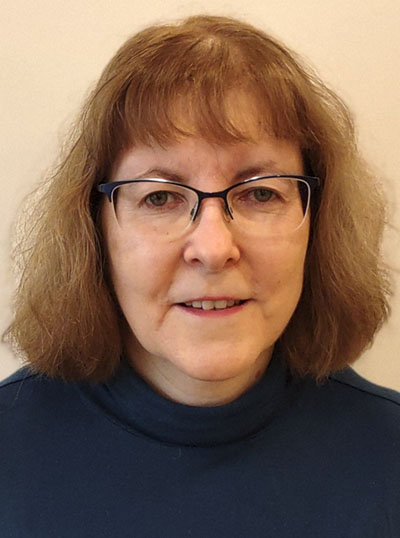
Dr. Colleen Millikin
Dr. Nasreen Khatri and Dr. Colleen Millikin, Adult Development and Aging Section
The psychology of adult development and aging is the study, assessment and management of the physical, psychological, cognitive, emotional and social functioning of people 18 years and up and includes aging in all its forms, milestones, joys and challenges. Today’s Psychology Month feature talks to Dr. Nasreen Khatri and Dr. Colleen Millikin about the work they do in this field.
“This isn’t your fault. Your brain is letting you down.”
There is still, to this day, a lot of stigma associated with memory loss. That’s why Dr. Colleen Millikin uses this phrase when she talks to older adults experiencing mild cognitive impairment or dementia.
“You don’t take it personally when you’re walking along and your knee gives out. But people respond differently when it’s their brain. If your brain lets you down and you can’t think of that word, or you can’t conjure up that name, you tend to blame yourself much more than when it’s your knee letting you down.”
Dr. Millikin is a clinical neuropsychologist with the Winnipeg Regional Health Authority Clinical Health Psychology Program and assistant professor in the Department of Clinical Health Psychology, Rady Faculty of Health Sciences, at the University of Manitoba. She is the Chair of the CPA’s Adult Development and Aging Section. She works mainly in the public system, assessing older adults where there is a possibility of Mild Cognitive Impairment or dementia. Mild Cognitive Impairment (MCI) is a term that is used to describe memory problems that exist between normal aging and dementia. Compared to others of a similar age, people with MCI are at higher risk of developing dementia over time.
“There are so many things that can interfere with memory that aren’t Alzheimer’s Disease or brain problems. Chronic pain and the medications for it, sleep problems, stress, PTSD, all kinds of things. Even thinking that you might have dementia can be a source of anxiety, and being anxious can make it harder to attend to information and remember it.”
The field of Adult Development and Aging Psychology is a wide-ranging one. It's the study, assessment and management of the physical, psychological, cognitive, emotional and social functioning of people 18 years and up and includes aging in all its forms, milestones, joys and challenges. Dr. Nasreen Khatri is an adult lifespan psychologist and neuroscientist at The Rotman Research Institute, a cognitive neuroscience institute fully affiliated with The University of Toronto. She is registered both as an adult clinical psychologist (18-65) and a gerontologist (65 years and up). She is the Treasurer of the Adult Development and Aging Section of the CPA.
“Specifically, I study the impact of depression and anxiety on the brain, beginning around age 30 and continuing all the way into old age. The biggest misconception about aging is that it is a static category or a state. It is not. It begins at conception and is a dynamic, ongoing process. Aging is simply another word for living!”
Dr. Millikin speaks a lot about the breadth of the field, and the variety of work psychologists in this space are doing. In her field of cognitive impairment, she says,
“Age is the biggest risk factor for developing cognitive impairment, but I have seen people in their 90s with very good brain health and people in their 50s who are living with dementia. There is no single cause for cognitive impairment. In most cases, there is an interaction between a person’s genetics and other health issues.”
Those health issues have begun to be understood a lot more in recent years, thanks in large part to psychologists working in this field.
“We now know that exercise actually grows new cells in the part of the brain that impacts mood and memory. The best thing you can do for your brain and to age well is physical exercise. We have also learned that individuals with an untreated history of depression in mid-life have almost double the risk of developing dementia in later life, compared to those who do not share that untreated history. Depression is eminently treatable with a variety of evidence-based treatments. Dementia is currently incurable. Therefore, we do not want anyone to go down the cognitive path from untreated depression to cognitive impairment and dementia. Timely assessment and treatment of depression today may stave off dementia later on. In other words, taking care of your mental health today could save your brain tomorrow!”
Ideally, interventions to promote brain health should begin as early in life as possible. However, there is evidence that making lifestyle changes can reduce risk of progression to dementia even in people who already have mild cognitive impairment. This is what Dr. Millikin and her colleague Dr. Lesley Koven, a clinical geropsychologist, were seeking to address when they set up their Early Cognitive Change Clinic for Older Adults in 2013. They provide assessment to identify people who have mild cognitive impairment as well as an interview to evaluate the mental health needs of the person’s spouse or other close family member or friend.
“We run a psychoeducational program for people with MCI and their family members to help them learn about MCI, strategies to get around some of the memory difficulties, and lifestyle habits that assist brain health. Exercise and diet are important of course, and we’re also learning that sleep is a big one. Sleep is very important for brain health, but older adults tend to have difficulties with sleep at a higher rate. One of the challenges is that a lack of sleep is not good for your memory, but also that a lot of the prescription or over-the-counter medications people take for sleep can interfere with a brain chemical that is important for memory. Fortunately, there are behaviour changes that help with sleep and psychological treatments for insomnia!”
Family members of people with mild cognitive impairment can also experience significant stress. Again, Dr. Millikin stresses the impact early intervention can have.
“We’re increasingly recognizing the needs of caregivers. We’ve known for a long time that family members of people with dementia can experience significant stress. Even when a person has mild cognitive impairment, family members or close friends can still have some stress related to the situation, although they may not identify themselves as “caregivers.” So if you’re going to do some intervention to help the family member with stress management, that really needs to start as early as possible.
There are many other facets of the psychology of aging and adult development, each as important as the last. Dr. Millikin provides a few examples.
“Dr. Kristin Reynolds, an assistant professor in the Departments of Psychology and Psychiatry at the University of Manitoba, started up a telephone-based program to help people with loneliness during the pandemic. The Past Chair of the Adult Development and Aging Section, Dr. Marnin Heisel, does research at Western University looking at ways to reduce risk of suicidality in older men. Dr. Norah Vincent, a colleague in my department, has developed online cognitive behaviour therapy treatment programs for insomnia.”
Dr. Khatri says the pandemic has had a profound impact on older adults, from mental health (e.g., depression and anxiety) to exacerbating longstanding systemic issues in long term care.
“It has shone a light on how we treat our elders and how we should treat our elders. This is a time for reflection to reconsider clinical, governmental and social policies that impact aging Canadians. Canada is an aging nation and as we go forward we will need to apply systemic policies that optimize our brain health (combination of mental and cognitive health) and allow us to grow older with dignity, autonomy and meaning. The future of brain health in Canada is in our hands, and one of the best ways to predict our future is to create it.
Last, the pandemic has taught us that we need to focus on lifestyle factors (diet, exercise, rest, social connection) at every age to keep us physically, emotionally and cognitively healthy and flourishing.”
In other words – there are many ways you might be able to keep your brain from letting you down. That said, it may happen anyway. And if it does, it’s important to know it is not your fault.
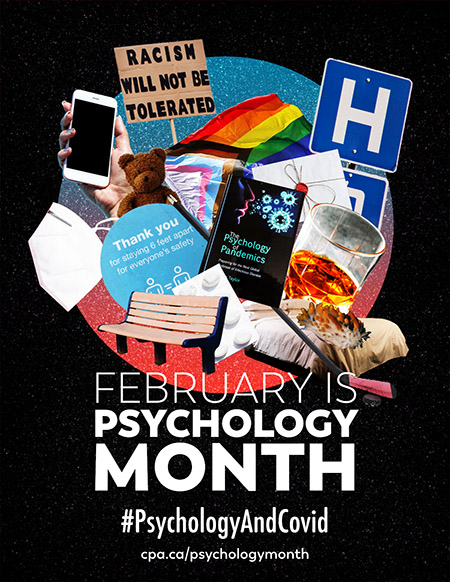
COVID-19 has brought a new set of challenges to the public, and to psychologists as well. Beginning February 1st and running the month of February, we will shine a spotlight on the Canadian psychologists who are responding to the pandemic in a wide variety of ways. #PsychologyAndCovid
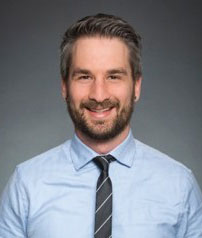 Dr. Justin Presseau
Dr. Justin PresseauPsychology Month has been extended two days, so we can bring you the work of Dr. Justin Presseau, who is co-Chairing a working group of behavioural scientists advising Ontario healthcare executives and government representatives on best practices during the COVID-19 pandemic.
Justin Presseau
Dr. Justin Presseau is going to welcome a new baby in about a month. His wife Leigh is eight months pregnant, which means this new child will be born in the middle of a global pandemic.
This adds one more job to Dr. Presseau’s portfolio, which also includes Scientist at the Ottawa Hospital Research Institute, Associate Professor in the School of Epidemiology and Public Health and in the School of Psychology at the University of Ottawa, and the Chair of the Health Psychology and Behavioural Medicine Section of the CPA.
As with many researchers, much of Dr. Presseau’s work had to pivot because of the pandemic. He leads a team co-developing new ways to support new Canadians with diabetes to be comfortable taking an eye test. Retinopathy is a manageable issue for people with diabetes when identified through regular screening but attendance rates could be improved, and so Dr. Presseau and his team are building relationships with different communities and community health centres virtually.
Another thing that’s difficult to do from a distance is blood donation. Dr. Presseau and his team are working with Canadian Blood Services and local communities to develop approaches to support men who have sex with men who may want to donate blood plasma, as screening and deferral policies continue to change to allow more MSM to donate if they want. Part of that work involves addressing the historic inequities that led to the exclusion of these men in the first place. But then – there was a pandemic, and his team like so many others have pivoted to continuing to develop key community relationships and campaigns virtually.
In addition, Dr. Presseau is tackling a lot of COVID-related projects, like for example a national survey of to understand what factors are associated with touching eyes, nose and mouth. The research is changing as we continue to develop an understanding of how COVID-19 is transmitted.
Maybe the most important of these COVID-related projects is the , a group of behavioural science experts and public health leaders who summarize behavioural science evidence in the context of COVID-19 and identify actionable guidance for Ontario’s pandemic response. Dr. Presseau is the co-Chair of this working group, which also involves CPA President Dr. Kim Corace.
“We sit within the larger Ontario Science Advisory Table. We’ve brought together expertise in behavioural science and particularly psychologists across Ontario, based both in academia and within government, to work alongside public health experts and ministry representatives.”
Dr. Presseau says that because the working group contains representatives from all these different areas and the team can communicate directly in this setting with decision makers and policy creators, it is the most direct form of knowledge transfer and knowledge mobilization of behavioural science in which he has been involved in his career.
“From an impact perspective, we get to translate our science to people who can make use of it right away, and they can also provide feedback to us – what are they looking for? What’s helpful to them? Of all the things I’ve done in my career this feels among the most impactful. One of the hats I also wear in the hospital where I’m based is Scientific Lead for Knowledge Translation [in the Ottawa Methods Centre], so I think about knowledge translation a lot. The ability to connect directly with those in the field that are making a difference is excellent. It’s also such a validating experience for me, as a behavioural scientist and a psychologist, to see that there’s recognition of our science and a need for an understanding of how we can draw from the behavioural sciences to support Ontarians and Canadians.”
The Behavioural Science Working Group is currently focused on vaccine confidence and uptake among health care professionals. Over 80% of Ontario health care workers say overwhelmingly that they intend to receive a COVID-19 vaccine when it is available to them. The working group is looking to communicate behavioural science approaches to support healthcare organisations across the province to optimise their vaccine promotion programs – for instance, by clarifying that despite having been created at record speed, these vaccines have been shown to be safe and effective and it’s important that those in the healthcare field get one.
Part of this is modeling good behaviour for the rest of the population. And within the healthcare field, modeling good behaviour is one way the working group is hoping to reach those who may be undecided. It’s one thing to have politicians and celebrities get vaccinated publicly, it’s another far more effective thing for your peer group, and hospital CEOs, and team leaders, to do so in front of your team.
Much of this work involves drawing on the literature from around the world to inform hospital policy or public policy. But some of it happens directly, and goes in two directions. For example,
“Our co-chair Dr. Laura Desveaux and her team did surveys with healthcare workers that not only ask if they intend to get the COVID vaccine, but also ask questions that are drawing from behavioural science and psychological principles around the specific constructs or factors might be associated with greater or lesser intention. So they were able to identify key predictors in healthcare workers in January of 2021, the most current data we have. So it’s kind of exciting to be able to quickly draw from on-the-ground data, iterate principles, and push that out to the field to support those who are doing this.”
We have asked most of our Psychology Month participants if they see a ‘silver lining’ in the pandemic. Something that is good, but that would not otherwise have happened absent the pandemic. Dr. Presseau says one silver lining is that it has highlighted just how important and relevant health psychology and behavioural medicine are to understanding and supporting health behaviour change and health and well-being during pandemics.
“After all, behaviour underpins most if not all the public health measures and vaccination activities that are key to seeing the other side of this pandemic.”
When Leigh and Justin’s baby is born, the pandemic will still be ongoing. But that baby will be born into a world that has a much greater understanding of pandemic science, of the behavioural science that accompanies it, and with more and more diverse teams of interdisciplinary experts working together to solve problems – locally, provincially, nationally, and globally.
One day, this baby will grow into a person who can take pride that Dad had a lot to do with that.
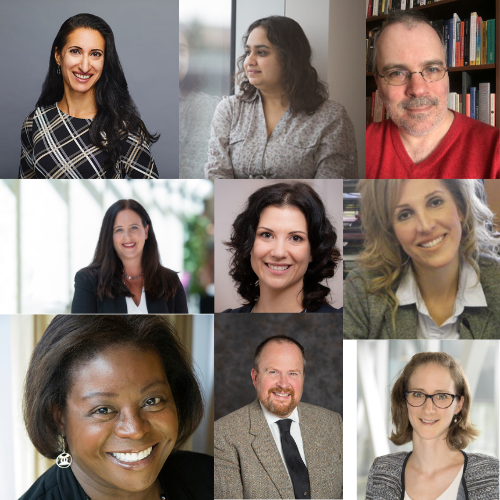 Silver Linings in the Pandemic
Silver Linings in the PandemicPsychology Month has focused on dozens of aspects of the pandemic, a global catastrophe that is deeply tragic. To close out Psychology Month, we focus on a few positives that have come about as a result of COVID-19.
Silver Linings in the Pandemic
It has been a tough year for everyone, and so Psychology Month this year has been tough as well. No matter how many innovative, creative, dedicated psychologists are doing incredible things, it’s tough to forget the reason why. A pandemic that has ravaged the globe, caused untold economic damage, mental health issues, and more. Above all, we can’t forget the two and a half million people who have died as a result, which makes the subject of this year’s Psychology Month deeply tragic.
It is for this reason that we want to end on a high note, in as much as such a thing is possible. We asked many of the psychologists who were profiled for Psychology Month to tell us something good they saw come of the pandemic. A personal or professional observation of a way things had improved despite the global catastrophe. Here is what many of them had to say:
“Across hundreds of universities, dozens of countries, many languages, many disciplines, from the virologists to the immunologists to the mental health practitioners – all these people are working together over months. And doing this work under pandemic conditions, doing this work in labs that themselves could cause a super-spreader event. It’s an amazing human accomplishment that we’re already talking about how to get it under control.”
- Andrew Ryder
“One thing that amazed me was how quickly our field – psychology – was able to pivot to online services and mostly remote delivery of therapy when beforehand it was more of an exception to the rule to see people online or over the phone. Seeing that in-person visits can sometimes be adequately replicated via Zoom, or the phone, or other technologies, has been a really interesting experience for me as a trainee.”
- Chelsea Moran
“It wasn’t on the radar at all to offer virtual group psychotherapy for chronic pain, or for psychologists to have virtual appointments. The way Quebec is set up, we cover people who live seven, eight hours away from our centre. For them, being able to have weekly sessions with a psychologist is something that’s very precious. And for others in chronic pain where even thirty or forty minutes driving in the car to the hospital brings their pain level from a three to an eight, not having to come in on some days can be helpful as well. It’s a door that opened that wouldn’t have opened as fast had it not been for the pandemic.”
- Gabrielle Pagé
“There are certain people who, pre-pandemic, were super-productive and making amazing contributions at work. But because they weren’t bragging, and because they weren’t charismatic, they didn’t get the attention of their bosses and they were kind of overlooked. But now when everyone’s at home, it’s easier to track who’s contributing stuff, who is sending in work product. So all the ‘do-ers’ are getting their chance to shine.”
- Helen Ofosu
“I think the move toward virtual care is something that many many patients find very positive. In the capacity that they’re able to receive care from their home, rather than having to work to get themselves or their children or their family over to the hospital. Parking, and having to sit in a waiting room to come to your appointment – to know that you can do it from home is a huge advantage for a number of patients. This has really pushed us to advance in this area that is a real advantage for many of our patients.”
- Ian Nicholson
“For me, it’s being able to spend time on things I really enjoy. I really like to bake, and I really like to read non-academic books. I love murder mysteries! Being able to give yourself permission to actually engage in the activities that you enjoy, that are non-work-related, that are just for you, to me has been my silver lining.”
- Joanna Pozzulo
“Now that the pandemic has gone on for a long time, I don’t really miss the things like international travel – those were perks. But the things I do miss are seeing my family more, my friends more. Some of these things were clarifying, that the things I thought I was missing were perks but not necessary. As soon as I started giving up on my expectations and the things I was missing, it became easier to deal with them, and easier to reach out to other people for connection.”
- Vina Goghari
We also asked our members to point out some ‘silver linings’ in a poll question we included in our monthly newsletter. Here are some highlights of the responses we received:
“The involuntary aspect for many people to slow down as they were laid off or take time to quarantine and are forced to take time off from vacations and traveling is an opportunity to reflect on goals, and "reset" intentions coming out of the pandemic.”
- Charlene F.
“I have seen increased accessibility to services for people with disabilities.”
“I have seen distance barriers disappear - people are able to access learning, support, and other services virtually no matter where they are (assuming they have access to reliable internet!).”
- Gillian S.
“One positive thing for me was that I left my office and started to work virtually from home. It is much easier for me not to have to drive and find parking, and I don’t have to pay rent. The clients are really happy with that option, too, because it is a lot easier for them not to have to take a half day off work to come to the office.”
- Sharon Z.
“More people enjoying the great outdoors!”
- Julie B.
“One positive thing that I have seen come out of the COVID-19 pandemic is an increased societal focus on the importance of both mental health and social justice.”
- Danial A.
“I'm a third-year undergraduate psychology student at Ryerson. I've really been struggling with adjusting to an online semester, work from home, and volunteering and researching from home. This time has really challenged my mental health, but something positive that has come out of this pandemic is that for the first time in my life I am actually putting my mental health first and prioritizing my own wellbeing. I think I'll come out of this pandemic with so much self-growth, and I truly believe if I did not have so much time alone with my own thoughts, I would not have gone through this self-care journey.”
- Giselle F.
“I have noticed that staying at home has increased my focus on family life. Learning new and fun activities to keep the family busy while staying away from everyone we used to visit. For example, we have discovered new trails in our local area which is difficult because we are already active hikers so know most of the trails. Also, we have taken up painting rocks and searching for others' painted rocks on the more common trails.
As a student I have noticed a high increase of togetherness among students. There is a massive use of discord in the psychology department at VIU. This has helped to stay on top of school work and have discussions about our projects or simply to figure out how to get onto the zoom link the teacher put in a funny spot we can't find. Also on the psychology discord site, students are looking at common interests like gaming that they can do together and discussing various interesting novels that they enjoy.
I have never felt so connected to other students while walking around campus. Now I can log on and ask about test topics or paper ideas.
It's been tough distancing from everywhere, but I realize family life is the most important thing in my world and will not disappear from my life. School is a long term goal and I know one day I will be done with it, COVID is just a bump in the road.”
- Donna S.
“The pandemic has been grounding in the sense that many people have suddenly recognized and remembered the most important aspects of life. When faced with a universal threat to health and livelihood, the superficial details of a day become recognized as such, and the aspects with the most weight and meaning to our lives become clear.”
- Kathryn L.F.
“I believe that this pandemic has taught most individuals the importance of well-being. Seeing as we are no longer under the extreme pressures of traveling from day to day events, we now have more time for self-reflection, personal examination, questioning, and learning. It takes a certain level of resilience to shift perspective from uncertainty and anxiety to gratitude. However, with the pandemic disrupting what we knew as our normal lives and continuing to do so, those who are fortunate enough have been able to embrace this shift. Despite what may be happening in the world the most important thing we can focus on and should focus on moving forward is our overall well-being.”
- Emily T.
“A personal silver lining of the pandemic was having the time to finish my research and apply for residency a year earlier than anticipated. I also had more time to spend with my fiancée since both of us were working from home.”
- Flint S.
“More slowing down. A chance for children to play and be.”
- Jen T.
“Something positive I have seen from the pandemic is a newfound appreciation for in-person interactions, particularly in the younger generations. With so much screen time and so little face to face interaction, not only is in-person socializing of higher value, it’s become higher quality. I’ve noticed people are more likely to put their phones away and live in the moment. Interactions are limited, and we need to make the most of what we get. In my own life and for many of my friends, family, and classmates, it’s been something we’ve come to stop taking for granted.”
- Genevieve J.
“Psychologists being forced to become familiar with providing telehealth services, and the increased access that has provided.”
- Janine H.
“Nonobstant la dure réalité de la pandémie, beaucoup de réalités positives ont émergées. En premier lieu, l’esprit d’entraide et communautaire. Deuxièmement, la créativité, que ce soit dans toutes les formes d’art en tant que telles, mais aussi dans l’adaptation, la réinvention et la recherche de solutions. Troisièmement, toutes les nouvelles habitudes acquises, que ce soit le jardinage, l’exercice, l’apprentissage d’une langue, d’un instrument de musique ou d’une habileté ou encore de connaissances en général. Pour ce qui est de la psychologie, en particulier, la création de portails sécuritaires pour offrir des services en ligne.”
- Elisabeth J.
“Something positive in the pandemic- people have slowed down and reassessed their priorities, needs, and desires.”
- Heather P.
“The negatives from a global pandemic have been catastrophic. The most damaging effects being the crippling of the economy, deaths of millions of loved ones world wide, and an extreme toll taken on people's mental health in so many different ways. Keeping children away from school and their friends, forcing families to remain in abusive situations under the radar, allowing small business's to close down permanently day by day... this damage will take years to repair, and maybe won't be repairable at all.
This cannot be forgotten; however, in order to keep my head above the waters of these unforgettable events, I choose to remain optimistic and seek the positive in a sea of negative.
I remind myself that I have been given a chance to spend quality time with the most important person in my life - myself. People tend to neglect themselves daily, and I believe this pandemic has allowed us to check in with ourselves and take the time to look after our needs and self care. I also think that we often neglect the loved ones in our life. This time of isolation has encouraged me to pick up the phone and call people that I have not spoken to in a long time. I have called my parents more than ever before. I even call my friends instead of just sending them silly photos back and forth on Instagram. These conversations are meaningful. When we are allowed windows of social gathering, these windows are so meaningful also.
Besides these main points, I think that there are some little positive outcomes as well such as cooking more meals at home that are healthier for our bodies and mind, spending more time in nature and trying new activities we never would have tried otherwise, and of course, saving money if you are lucky enough to keep your job.
Negativity will drown you if you let it and positivity will keep you afloat. “
- Sacha H.
“Since COVID, I have become closer with my roommates. We spend more time together instead of doing our own thing all the time.”
- Laura J.
“1] a lot of children may be spending less time on screens by going outside tobogganing, building snow forts, and snowmen.
2] parents are actually spending more time with their children that they did before such as helping and supervising homework but also playing like colouring together and even playing non-screen table games like the good old days, monopoly, snakes and ladders etc.
3] couples like myself with my wife spend more time having coffee together and talking about all things which there may not have been time for before when people ran off to work for the entire day.”
- Jack A.
“I work in education, and I see teachers paying more attention to their own mental health. We bend over backwards for the kids we work with, but it is rare for a teacher to step back and say "I am not okay", and I have seen more of that this year than ever before. They are getting the help they need and taking time off to rest and heal. I hope this continues as teacher burnout is a real thing.”
- Danielle F.
Thank you to everyone who followed along with Psychology Month in 2021. This past year has been difficult, and it has been hard to put into words. Thankfully, there are psychologists all over Canada willing to try. We salute them all, and we salute the resilience of Canadians who have weathered this storm with diplomacy and aplomb. Take care of yourselves, and those around you.
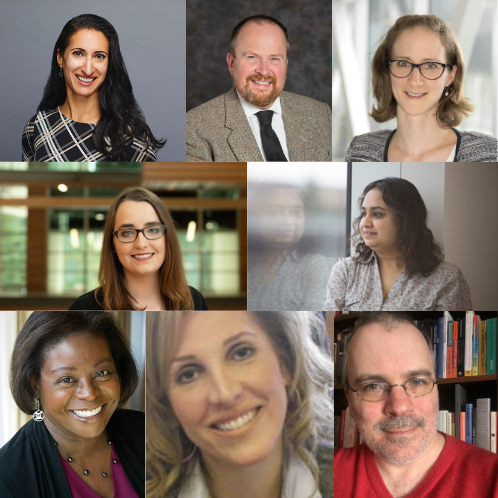
Psychology Month has focused on dozens of aspects of the pandemic, a global catastrophe that is deeply tragic. To close out Psychology Month 2021, we focus on a few positives that have come about as a result of COVID-19.
 Dr. Karen Cohen
Dr. Karen CohenThe CPA has been adjusting, like everyone else, to working from home and embracing the new normal. Our work has been guided by our CEO, Dr. Karen Cohen.
CPA’s Communications Specialist, Eric Bollman talks to CPA’s CEO, Karen Cohen
“The tail of COVID is going to be a long one. It’s going to be psychosocial, and financial. Long after we get vaccines, long after we achieve population immunity, we’re still going to be addressing the psychosocial and financial impacts of living through a pandemic this long.”
Shortly after the NBA announced the suspension of their season on March 11, 2020, there was an all-staff meeting at the CPA head office in downtown Ottawa. The realization was dawning on everyone, and fast, that we were about to enter a different world – both in terms of our own work lives, and in terms of the role of psychology in the world at large.
We knew things were changing – if the NBA could shut down, the rest of the world was not far behind. We knew we’d all be sent home, and we spent that meeting discussing how that would work. Who needed a laptop? Who needed a refresher on Microsoft Teams, having slept through the training session less than a week before? What we did not know was that this would be the last time we saw each other in person for more than a year.
Our CEO, Dr. Karen Cohen, does not follow basketball. For her, the realization was more incremental. But she reached it at the same time, if not a little before, the rest of us. She made the decision to shut down the office and send everybody home.
“We were trying to make the decision that not only would best take care of our workplace, but that would make us a good corporate citizen. It was clear that if the world was going to be successful in managing the pandemic, we had to put in a community effort. “
As the world changed, and the CPA started working from our homes across Ottawa and connecting with people across the country, we realized that psychology was going to have an outsized role to play in helping people and communities manage the pandemic. CPA wanted to help in that effort. Dr. Cohen credits the staff at the CPA for making this transition work, almost seamlessly.
“Everything CPA has been able to contribute to managing the pandemic is to the credit of the association’s leadership, its membership and its staff. From the outset, our goal was to listen and respond to what people needed; what staff needed to work efficiently from home, what individuals and families needed to support each other, what members needed to face disruptions in their work, and what decision-makers needed to develop policies to help communities.
At first though, those lockdowns were not extended – we truly thought we’d be back at work in a few weeks, maybe a couple of months. Karen and the rest of the management team made sure to check in, and to cover their bases early on.
“One of the things we did at the outset was to survey staff – asking what’s keeping you up at night? How can we make things better? What are you most concerned about? And not just to ask the questions but to try to do something about them. We developed policies and made decisions that considered the things staff were worried about and responded to what they needed. We realized that psychology had some tools and suggestions to help them cope so we developed a webinar for staff on coping and resilience. We also reached out to staff one on one and really tried to hear them so we could help make things easier for them.”
We then thought that the survey and webinar might be helpful to the staff of other of CPA’s not for profit association partners and we delivered them to about a dozen of them. The survey enabled leaders to better understand the needs of their workplaces and psychology had some tools and suggestions to help workers cope. Something that was created internally, for the use of our own staff, ended up being of value to other organizations and an unforeseen contribution our team has been able to make.
While we didn’t know how long the pandemic would last, or what the long-term effects would be, the one group we knew for sure would be affected long-term were frontline health care workers. We were already seeing reports from Italy and Spain of overflowing hospitals, a health care system in crisis, and doctors and nurses overcome with exhaustion and despair. So what could we do?
The first major effort of the CPA during the pandemic was to ask our practitioner members if they would be willing to offer their services to frontline healthcare workers, on an urgent basis, as they faced the stressors of delivering health care services during a pandemic. It seemed essential that the people who were out there fighting against this scourge of a virus had every support possible as they took care of everyone else and, because of their work, faced heightened risk of contracting the virus and bringing it home to their families.
“Hundreds of psychologists came together to do that. It was good for CPA, it was good for psychology, and most importantly, it has been good for the health providers psychologists helped.
From there, it was a question of developing and delivering information, and getting as much of it out to members, decision-makers and Canadians as possible. Psychologists across Canada answered the call to help create more than a dozen COVID-specific fact sheets for students, psychologists, faculty, people working from home and more. Our team developed webinars, started a podcast, and undertook the herculean effort of moving the CPA annual convention online with just a few months notice.
The CPA team has been collaborating with innumerable other organizations and agencies, commissioning surveys and public opinion polls, and advocating for mental health to be front and centre in every governmental pandemic-related decision and policy across Canada. The work is ongoing, and it is not likely to stop any time soon.
“We know that rates of anxiety, depression and substance use have gone up as people cope with this prolonged chronic stressor. We can see the impact managing the pandemic has had on our work, relationships, and wellbeing. Maybe the pandemic has shown us that a pandemic takes as much of a psychological toll on our lives as a biological one. Maybe the pandemic has shown us that managing a critical health event successfully is as much about psychological and social factors as it is about the biological ones. Maybe, governments, workplaces, and insurers will fully realize that mental health matters and that it is time that making investments in mental health care matters too.”
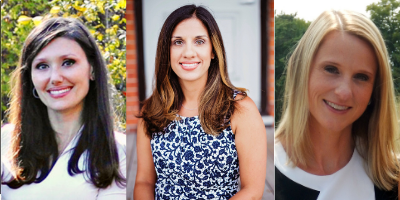 Dr. Jenn, Dr. Laila, and Dr. Mary
Dr. Jenn, Dr. Laila, and Dr. MaryFriends since they did an internship together at the Children’s Hospital of Eastern Ontario, child psychologists Dr. Laila Din Osmun, Dr. Mary Simmering McDonald, and Dr. Jenn Vriend are trying to reach as many kids and parents as they can during the pandemic with the Coping Toolbox podcast.
Laila Din Osmun, Jenn Vriend, and Mary Simmering McDonald
Everyone is swamped. Kids, learning virtually for the past year and dealing with constant uncertainty. Parents, looking after those kids and trying to work remotely or cope with being out of work. Psychologists, whose services are more in demand than ever but who don’t have any spots available for new clients.
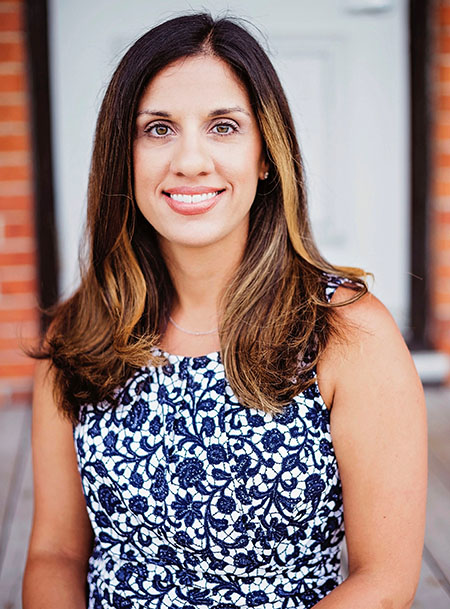
Dr. Laila Din Osmun is a parent and a psychologist, dealing with two young children learning from home and an increasing demand for her professional services. She started spending time with her two children, aged five and seven, throughout the week and moved her practice to the weekends. She found she was turning people away because she just didn’t have the availability to see the number of people seeking services. And so she did something that may seem illogical – she added a whole other project to her workload.
In conversation with her friends Dr. Jenn Vriend and Dr. Mary Simmering McDonald, Dr. Din Osmun found that they were experiencing the same thing. The three had become friends during an internship at the Children’s Hospital of Eastern Ontario (CHEO), and now all three were child psychologists in private practice in Ottawa. None of them could keep up with the demand.
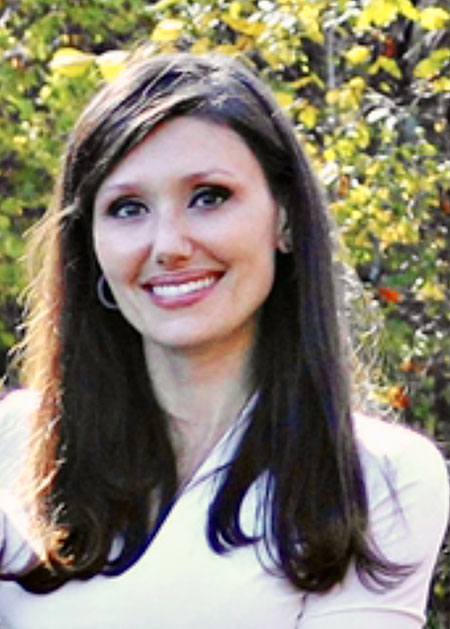
How do you get essential information to as many people as possible as quickly as possible? Nothing can replace one-on-one therapy, but there was clearly a void as the supply was not coming close to matching the demand. Dr. Din Osmun proposed a podcast. Coping techniques for kids, delivered one episode at a time, coupled with discussions of the issues facing families during the pandemic and some personal stories about spending time at home with their own children.
The CopingToolbox: A Child Psych Podcast was born. The first episode was published February 17th, discussing specific coping strategies (setting boundaries, practicing gratitude) for children and parents during COVID.
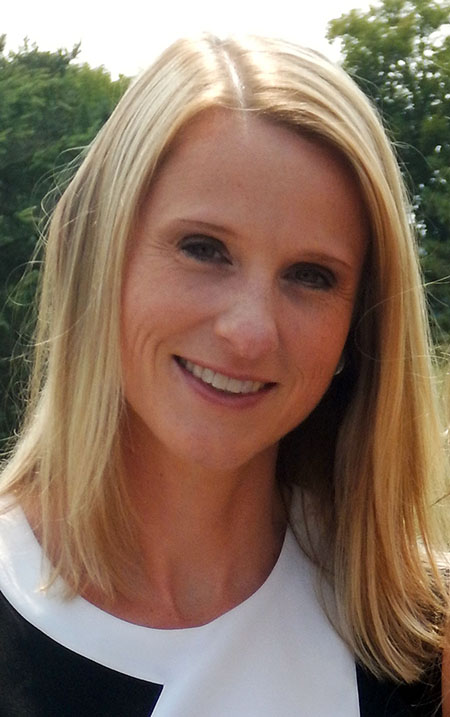
“Everybody’s feeling overwhelmed right now, myself included. My friends, my clients – it’s a really difficult time. One of the things I’ve been practicing is just allowing myself to feel some of those feelings. Sometimes we feel sad and we don’t want to, or we feel anxiety and we don’t want to. But it’s a really difficult time and we’re going through a lot, and I think it’s really important that we allow ourselves to feel that feeling for a little while.”
Jenn Vriend, The Coping Toolbox Episode One
Future episodes will deal with subjects like depression, as the three friends try to bring more services to more people through a new and interesting platform. On the podcast, they refer to themselves as ‘Dr. Laila’, and ‘Dr. Jenn’, and ‘Dr. Mary’. To an outsider, this might remind people of the ‘Dr. Bobby’ episode of Friends (okay it’s me – I’m the outsider who was reminded of that episode) but it also creates a friendly and welcoming atmosphere should kids be listening with their parents. This was clearly an intentional choice, as was the use of the word ‘toolbox’. Says Dr. Laila,
“We called it The Coping Toolbox because we wanted to provide tools for coping. Not getting into too much detail, and we wanted it to be useful. At the end of every podcast we give three coping skills that we review for the people listening.”
In episode one, those skills are; take a few minutes and breathe, modeling positive behaviours for your kids, and being kind to ourselves. On the podcast, Dr. Jenn says;
“We’re modeling positive behaviours, but we’re not doing it perfectly. So we can take a deep breath, do our best to model those positive behaviours, for ourselves as well as our kids, and then just be gentle and kind to ourselves knowing that we’re doing the best we can given the situation.”
All three Coping Toolbox podcast co-hosts know about doing their best given the situation. They all have young children at home, and each of them brings a different perspective. While Dr. Din Osmun has set aside a large portion of her work to take care of the kids while her husband works a demanding job, Dr. Simmering McDonald, a mom of 3- and 5-year-old boys, is balancing her clinical practice with her husband’s long work days, limited childcare, and weekly appointments regarding the health needs of family members.
In The Coping Toolbox Episode One, Dr. Simmering McDonald notes, “it’s important to consider our own well-being and our own mental health. This is necessary for our own functioning but also for the functioning of our kids and our families.” Dr. Vriend speaks about grief, something many people are experiencing with COVID-19. She separated from her son’s father a few years ago, then sadly he passed away in the summer of 2020. “I’ve had to learn not just single parenting but lone parenting, where you’re it – you’re kind of the everything. I think that perspective, during the pandemic, is going to be interesting to discuss. I remember at one point feeling like ‘I’m my son’s entire world’. I’m his teacher, and I’m his coach, and I’m his mom, and I’m his dad, and it felt very overwhelming. It can add a different perspective because there are a lot of people who discuss both parents, and when you’re a single parent it can hurt a little bit and I think the pandemic has created a whole other layer for single parents and for lone parents.”
In professional practice, divulging personal details is not something psychologists do. But in the context of a podcast, doing so can help the narrative hit home – a narrative that, in the case of The Coping Toolbox, is warm, friendly, expert-driven and truly helpful for many who can’t access that help in other ways at the moment. Dr. Din Osmun says,
“It’s been a crazy time, and we just can’t meet the demands right now. It was getting really frustrating, and the three of us kept talking in group conversations – how can we help? We’re so limited in what we can do. We had the idea of creating a podcast, but we knew nothing about podcasting. The three of us are clinicians in private practice, we have no expertise in podcasting whatsoever. It was a huge learning curve, but we figured this IS something we can do to help people because it’s something the three of us can do from home. We felt like this was a way to help more people in a shorter period of time.”
Laila has taken the lead on the podcast, including taking on hosting duties and – the most painstaking and time-consuming job of all – the editing after the fact. It will all be worthwhile if enough people listen and take away something helpful they did not already know.
You can find The Coping Toolbox: A Child Psych Podcast on Apple Podcasts. https://podcasts.apple.com/ca/podcast/the-coping-toolbox-a-child-psych-podcast/id1553993639

Introducing The Coping Toolbox: A Child Psych Podcast. Dr. Jenn Vriend, Dr. Laila Din Osmun, and Dr. Mary Simmering McDonald are three child psychologists from Ottawa.
https://podcasts.apple.com/ca/podcast/the-coping-toolbox-a-child-psych-podcast/id1553993639
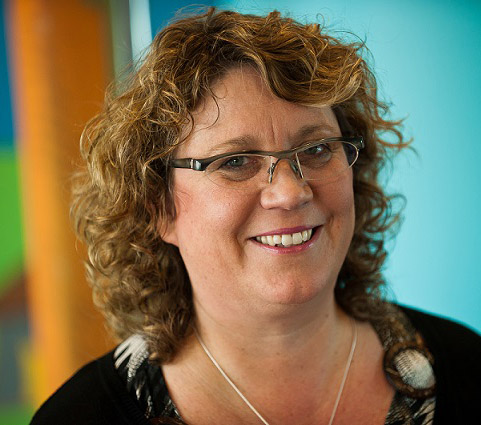 Penny Corkum
Penny CorkumDr. Penny Corkum studies sleep and children, and created Better Nights Better Days, a cross-Canada trial that improved sleep for both kids and parents before the pandemic. In the last year, Dr. Corkum and her team went back to those families to see how they were doing during COVID. Their launch of a revamped Better Nights Better Days for the pandemic era is imminent.
“When we launched our survey study asking parents during the pandemic how their child’s sleep was impacting them, what really came up was that it’s the whole family and not just the child. So we not only had to help the child sleep better but also give strategies for the parent to sleep better. So we added that into the intervention as well.”
It probably goes without saying that sleep is incredibly important for children. Difficulty falling asleep and staying asleep can have a big impact on a child, in terms of daytime functioning. They’re not able to focus or learn as well, and it might result in behavioural problems. Dr. Penny Corkum has been studying sleep in children for a long time. In the last decade, her sleep studies have taken the form of connecting parents and families with the interventions they now know work for children and sleep. Part of this is an e-health program, online tools that parents can access when they need them.
Between 2016 and 2018 Dr. Corkum and her team ran a cross-Canada trial called Better Nights, Better Days, to see if this program was effective. It was, and the program resulted in improved sleep, improved daytime functioning, and even parents were less tired during the day as a result. Then the pandemic hit, and it became a constantly evolving crisis – lockdown for a while, then lockdown lifted. School online from home then back to in-person classroom learning. Right away, sleep patterns were disrupted for both children and adults around the world.
The team went back to the families who had participated in the original Better Nights, Better Days trial, to see how they were doing during the pandemic.
“It seemed like a good place to start because we already knew about their sleep, and we knew that they had learned a lot of strategies to help their child sleep. We were curious – were they still using these strategies? There was some research coming out at the time that suggested families were actually having better sleep, since they didn’t have to get up at a certain time. But that’s not what we found. A small portion of our families were doing better, but about 40% of the children and 60% of the parents were sleeping worse than they were before the pandemic.”
A lot of this was happening because of disruptions in routine and structure. We sleep best when we have consistency in our days – a regular bedtime, a regular time to wake up, a standard time for supper. All of this was being upended by a constantly evolving pandemic and the restrictions that went along with it. Two of the biggest factors were anxiety as a result of worry about the pandemic, and screen time. Kids were using screens a lot more while locked down at home which was disrupting their sleep in a big way.
With new data collected from the Better Nights, Better Days cohort, Dr. Corkum and her team could move forward. Almost all the parents said they were still using the interventions they had used for sleep pre-pandemic. 95% of them said that they thought other families should have access to these strategies during the pandemic. Based on this, the Better Nights, Better Days team was able to get some funding to launch an intervention for all families during the pandemic.
That new program launches Very soon – hopefully very early in March. It is free for families to use, intended for parents of children ages 1-10 who are struggling with falling asleep and staying asleep. There have been slight modifications, now that Dr. Corkum and her team have information about the pandemic and how it impacts sleep. They’ve also added to the intervention some information about parents’ sleep, and how to help parents sleep better. Sleep is essential for the whole family!
Dr. Corkum also runs a diagnostic clinic in Truro, Nova Scotia that brings together pediatricians, school psychologists, health psychologists and others to do differential diagnostics for kids who have fairly complex presentations and need a comprehensive assessment. Well, she normally does. But in the past year the doors have remained closed because they just can’t have all those people together in one room. It’s disappointing for Dr. Corkum and her team, who likely won’t be able to re-open until next year. Therapy can be done virtually, diagnostic assessments not so much.
Dr. Corkum says she misses working at Dalhousie and seeing her students, staff and colleagues but doesn’t miss the walk! Her parking spot is far from the office that carrying a bag, and papers, and a laptop through deep snow or a blizzard makes the walk to work something of a nightmare and a serious workout, every winter. She’s still getting the walk and the workout in – but walking a big dog three times a day is a much more pleasant experience.
Fresh air, exercise, and sleep are three of the things that can make life during the pandemic a more pleasant experience. And with the launch of Better Nights, Better Days which has been modified for the COVID-19 context, Dr. Corkum is making at least one of those things easier and more accessible as of today.
Some of Dr. Corkum’s current studies:
Pediatric Sleep Knowledge, Attitudes, and Beliefs
Did you know that there are no well-developed, validated measures to assess healthcare providers’ pediatric sleep knowledge, attitudes, and beliefs? Help us develop one by testing your pediatric sleep knowledge today!
This study will involve completing a survey about your pediatric sleep knowledge, attitudes, and beliefs at two time points. It should take about 15 minutes to participate at each timepoint. Once you finish the survey, you will be contacted again in one month to complete the survey again. After completing the survey for a second time, you will receive the correct answers, as well as access to the first version of the Promoting Healthy Sleep for Early Childhood online training program for healthcare providers, once it has been developed.
To be eligible for this study, individuals must:
- Be a licensed healthcare provider practicing in Canada (e.g., physician, psychologist, nurse, or other allied health professional)
- Have current clinical experience working with young children (under the age of 5 years) at least some of the time
If you are interested in participating, please follow the link below to review and complete a Screening Questionnaire to determine your eligibility: https://redcap.its.dal.ca/surveys/?s=AXENE3YXNA9DCM4L
Develop and Validate the Insomnia Knowledge, Attitudes, Beliefs, and Practices (iKAB-P) Questionnaire
You are invited to participate in a sleep expert panel to assess the content validity of the initial draft of the iKAB-P questionnaire for adults aged 18-64 years old. Please also share this invitation to anyone who you think may be interested in participating!
As a part of the development and validation of the questionnaire, we are requesting your expertise to estimate the content validity of the draft. This is an exciting study as there are currently no validated KAB-P tools for insomnia for Canadian adults!
The inclusion criteria to be eligible to be apart of the sleep expert panel includes:
- Currently live and work in Canada
- Experts who have 3+ years' experience in working with adults with insomnia/insomnia symptoms. Experts include academics (i.e., clinical or research appointment at a university) and healthcare providers who assess and/or treat patients with insomnia
- Those who have expertise in the development and validation of any aspect of sleep measures (i.e., published peer-reviewed development and validation studies)
- Experts who have at least five years’ experience in working with adults with insomnia/insomnia symptoms
If you are interested in learning more, please go to https://redcap.its.dal.ca/surveys/?s=FXT3W8WPYAYCLM44
“Najimpay”: Gathering Indigenous Adult Perspectives on Sleep through Interviews in Nova Scotia
Join us for an interview about sleep in Indigenous adults! We are conducting individual interviews, and we will as you questions about sleep, sleep habits, sleep challenges, and sleep education/intervention.
To be eligible for this study, individuals must:
- Live in Nova Scotia
- Be aged 20 years or older
- Identify as Indigenous
- Be able to communicate in English or Mi’kmaw
- Be associated with Membertou First Nation or the Mi’kmaw Native Friendship Centre (e.g., be a community member, user of services)
If you are interested in learning more, click the following link: https://redcap.its.dal.ca/surveys/?s=FFJXKK74WXJML3H7
 Natalie Rosen
Natalie RosenAt Dalhousie University, Dr. Natalie Rosen studies sexual health in the context of couples. Many people thought there would be a baby boom during the pandemic – Dr. Rosen explains why this hasn’t happened.
Natalie Rosen
Where are all the babies? When the COVID-19 pandemic started creating lockdowns in March of 2020, the memes were everywhere. The generation that was sure to come from the pandemic baby boom was being given all kinds of names – Coronials! Baby Zoomers! We were all looking forward to making lame jokes in 2033 about these children entering their Quaranteens.
It made some sense that we would think that way – hey, we’re stuck at home with nothing else to do, we’ll probably all bake more cheesecake, learn a new instrument, and make a bunch of babies. But the boom never came. In fact, Canada’s birth rate in 2020 declined by 0.73% from 2019 – continuing a steady trend downward that continues into 2021 (we are projected to decline by 0.74% this year). So what gives?
Dr. Natalie Rosen specializes in couples and sex. Dr. Rosen is a clinical psychologist and an associate professor in the departments of Psychology and Neuroscience, and Obstetrics and Gynecology at Dalhousie University. She and her team are currently in the middle of several longitudinal studies with couples, some of which began before the pandemic. They’re hoping that they get some good data at the end of the studies that can shed light on the impacts of pandemic-related stress on sexual health, particularly for vulnerable groups like new parents. In the meantime, she’s looking at other studies that are just now starting to release data.
“A study published last Spring in the States looked at the impact of COVID on people’s sex lives. What they found was that just over 40% of people said their sex lives had taken a hit and were declining. Just over 40% said it was about the same, and then there was a minority of about 13% who reported that their sex lives had actually improved during the pandemic. I think it’s fair to extrapolate to some extent to Canadians, which means a big chunk of us are experiencing a declines in their sex lives.”
So what happened? Why aren’t people having sex more than ever? Where are all the babies we were promised in the memes? Dr. Rosen says we probably should have known this would be the case.
“I think that was wishful thinking. We actually know that for many people, stress and uncertainty puts quite a damper on mood and desire for sex. Of course, there are lots of individual differences, so not everyone is the same, but for many people stress and uncertainty negatively impact sexuality. Also, when you think about all the young families who have had these extended periods of time with their kids at home – not only is that a stressor, but it’s also interfering with opportunities for sex.”
Dr. Rosen’s research focuses on sexual dysfunction from a couples’ perspective. In the past, much of the research has focused on the person with the problem – but of course many sexual problems exist within the context of the couple, and she says that very often the other person in the relationship really wants to be involved and to do something differently in order to help their partner and improve their sex lives. Dr. Rosen’s team is hoping to expand the availability of couple-based, empirically supported, treatments available for sexual dysfunction. They have an upcoming publication reporting on a randomized clinical trial for the results of a novel couple therapy vs. a medical intervention for pain experienced during sex, and they are hoping to do the same with low desire. They’ve just launched a CIHR-funded study into couple therapy when women have low sexual desire.
Dr. Rosen’s clinical work is small. She works with a few couples each week who have sexual problems, such as pain during sex and low desire, and with couples who are going through major life transitions, like becoming new parents. In the beginning of the pandemic she paused her practice because it was impossible to meet in-person, but Halifax is doing well enough that she was able to start seeing couples in person again last Fall. She says that some of the couples she sees have adapted to virtual sessions and now prefer that, so going forward it looks like her clinical practice will be the kind of hybrid model we might expect to see in most clinical settings post-pandemic.
The biggest disruption for Dr. Rosen is likely the lack of travel – in a typical year she’s on a plane every six weeks or so, going to an academic conference, or visiting her family in Ottawa or Toronto. She says that now, she hasn’t seen most of her family in over year outside her husband and two children – but that this slowing down of the pace of life has had its benefits.
“For us it’s been a kind of investment in the nuclear family, spending lots of time just the four of us. And we’ve also had the chance to really explore a lot of the nooks and crannies of Nova Scotia! I also find that it’s forced me to take a step back and evaluate what’s important to me. I can get caught up in the minutia of my work, and particularly early in the pandemic I felt the frustration of trying to find work-life balance with two young kids at home. But you take a deep breath, and you figure out your values - health, family, happiness. I care about my work a lot, but there’s a pandemic, and there are many times when it just can’t be the number one priority!”
People across Canada are re-evaluating their priorities and have been for almost a year now. Like Dr. Rosen and her family, they are finding ways to support one another, to balance work and home life, and to stay as healthy and happy as they can throughout. Dr. Rosen emphasizes that finding ways to prioritize and connect sexually with your partner has many benefits for health and well- being. And that’s a valuable thing to do – just don’t feel like you have to live up to the memes of March!
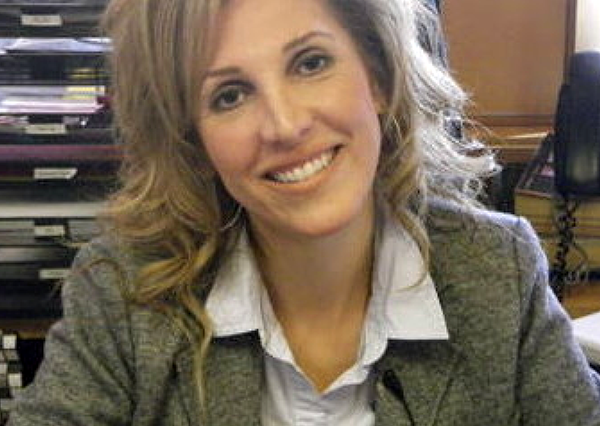 Joanna Pozzulo
Joanna PozzuloDr. Joanna Pozzulo and the Carleton University Psychology Department launched a virtual space for researchers, students, and other stakeholders called MeWeRTH (The Mental Health and Well-being Research and Training Hub). It’s a means of connecting the university with community organizations and anyone else who might be a consumer of mental health and well-being research.
Joanna Pozzulo
“You’re going to come out of this pandemic either a contestant on the Great Canadian Baking Show, or a really good murderer.”
“Hmmm. Yes, I hope it leans more toward the baking…but you never know?”
Dr. Joanna Pozzulo spends a lot of her spare time during the pandemic learning new recipes, and reading murder mysteries. Dr. Pozzulo is the world’s foremost expert in the psychology behind children’s eyewitness identification. She has spent more than two decades working in Criminal Justice psychology, and so she doesn’t read a murder mystery the way the rest of us do. She notices what is plausible, and what is implausible, and the many mistakes the killer inevitably makes. “I wouldn’t do it that way”, she thinks…getting one step closer to becoming really good at murder.
As the Chair of the Department of Psychology at Carleton University, Dr. Pozzulo has been doing a lot more during the pandemic than baking stacks of cookies and devouring stacks of mystery novels. She and her department have launched a virtual space for researchers, students, and other stakeholders called MeWerth (The Mental Health and Well-being Research and Training Hub). It’s a means of connecting the university with community organizations and anyone else who might be a consumer of mental health and well-being research.
“It’s a varied group, all focused on conducting research that is of high quality around topics of mental health and well-being. Ultimately, being able to disseminate evidence-based research to the public to improve daily lives.”
MeWerth was planned before the pandemic began, which meant that the virtual platform was a little bit ahead of the curve. Dr. Pozzulo says that COVID had little impact on the creation of MeWerth, but it did make the team rethink how they were going to bring people together.
“Even though it is a virtual space, the traditional idea is that you have a launch, and you invite people to a place and you have, almost a party. We were initially going to launch it in September, but we were in the middle of COVID, so we moved the launch to December and made it virtual. It worked out really well, because we were able to reach a far larger audience without concern for borders or public health risks. We had people attend from all over the world. It was great to get so many people involved when traditionally that would not have been possible. We had one person tune in from Turkey – you can imagine the travel from Turkey to Ottawa, I’m thinking it probably wouldn’t have happened otherwise.”
MeWerth is a multi-disciplinary space with a broad range of topics. Some are COVID-related, most are not. Dr. Rachel Burns is a member working on studies related to diabetes (how and when do spouses influence the health and wellbeing of people with diabetes?). Dr. Johanna Peetz is researching financial factors in well-being. Dr. Michael Wohl is looking at several facets of addiction, notably gambling addiction, including a study on casino loyalty programs.
Every Wednesday is #WellnessWednesday at MeWerth. On the website there is a ‘Wellness Corner’ where this week Dr. Robert Coplan’s research explores the novel concept of “aloneliness”, conceptualized as the negative feelings that arise from the perception that one is not spending enough time alone. A concept that very much applies during the current pandemic. This is just one of many facets of MeWerth, a platform Dr. Pozzulo already considers to be a success.
“We had 800 people register to attend the launch, a number that’s unheard of in an academic environment - to have so many people from so many different backgrounds be interested in something. I was really pleased, and it signalled to me that we were filling a need, and maybe we had underestimated how much that need was there. I’m seeing lots of interest in MeWeRTH – and its continued interest. I’m thrilled about that and I hope we can continue to grow MeWeRTH both locally and globally.”
For Dr. Pozzulo and her team to grow MeWerth, more researchers, students, community groups, organizations and other stakeholders will need to discover the web platform and sign up (https://carleton.ca/mental-health/). So, if you are one of those individuals interested in mental health and well-being, you probably should sign up. Or else…
Or else Dr. Pozzulo might not share any of her fresh-baked chocolate and candied-pecan éclairs with you.
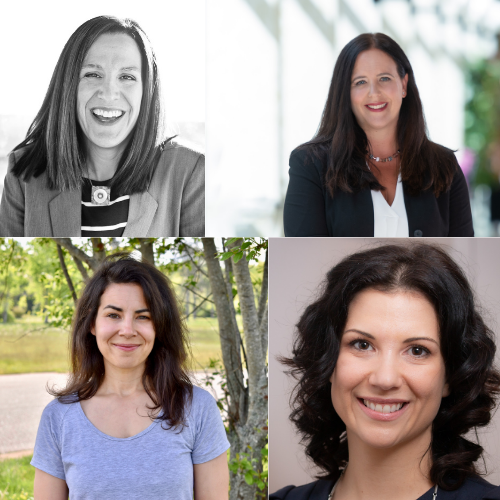 Some of the psychologists doing interesting things during the pandemic
Some of the psychologists doing interesting things during the pandemic
Meet some of the psychologists who have been profiled in this Psychology Month. We speak with Dr. Adrienne Leslie-Toogood, Dr. Christine Chambers, Courtney Gosselin and Dr. Mélanie Joanisse about their work during the pandemic.
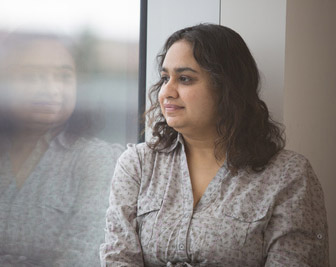 Vina Goghari
Vina GoghariDr. Vina Goghari is the Editor of the Canadian Psychology journal. The amount of pandemic-related research and article submissions has been overwhelming in the past few months. The upcoming COVID special edition of the journal will present papers that cover a very broad range of topics related to the pandemic.
Vina Goghari
Dr. Vina Goghari had big plans for 2020. There were going to be conferences that would synergize with her vacations – including one in Banff where she was planning to rent a cottage and hang out with some of her friends. A couple of talks in Vienna were going to allow her to explore the nearby areas and experience Austria for the first time. Instead her breaks disappeared, her workload increased threefold, and she ended up stuck at home with a kidney stone for five months. 2020, right?
Dr. Goghari is a professor at the University of Toronto where she is the Graduate Chair of the Clinical Psychology program. What interests us here at the moment is Dr. Goghari’s position as the editor of Canadian Psychology/Psychologie canadienne, the flagship journal of the Canadian Psychological Association. The bulk of a journal editor’s work is remote already, so very little has changed in that respect, but the pandemic has created a bit of a slowdown in the review process.
“The ability of academics to spend their time on peer review has been impacted. I find they’ve still been gracious, and people are still volunteering to review these papers, but sometimes we find that people need more leeway in terms of time to actually get us the review back. We’ve been lucky that both the authors and the reviewers are having a little bit more patience with each other, and the editor, and the associate editors. It allows us to make sure this process is still equitable and fair and we still get enough reviews.”
Another thing that has, predictably, changed is the number of submissions Canadian Psychology is receiving concerning COVID itself. So many, that they have prepared a special issue just for the pandemic. Dr. Goghari says the volume of articles has been overwhelming.
“We did a call for COVID papers in May dealing with psychological perspectives on the pandemic – we feel a psychological, as well as a Canadian/International, lens is very important to helping people deal with the pandemic in terms of work and life balance and mental health. The Special Issue will be coming out in the next few weeks. We saw a record number of papers for that call. This was especially so (true) for the two of us who are the English-speaking editors ̶ we were fielding a tremendous number of papers! It was positive in the sense that the psychological perspective on the pandemic is resonating with people, but also really increased our workload, as we always want to ensure we do a professional job with all submissions. Luckily we were able to get through all of them, and I really think we have a fantastic special issue
Canadian Psychology is a generalist journal, which allowed Dr. Goghari and her team to design the COVID special issue with intention. They wanted the articles to cover a wide range of topics related to Canadians, and to reflect different parts of our society and our population. There are articles about work, sleep, mental health, adults, children, training, and much more. There are also two articles in French, and Dr. Goghari hopes that there is something for everybody in this journal issue.
Not only have they seen an increase in COVID papers, but papers regarding race-related issues that have become increasingly front and centre over the past year. More papers addressing topics such as mental health and racial disparities have been submitted. Dr. Goghari says she wishes this has also been the case for journal in the past given the importance of these societal issues, but is heartened to see that this is more of a focus now.
“One of the things COVID highlighted was that the pandemic doesn’t affect everyone equally. There are certain groups that are more affected by the pandemic like the elderly, we know that there were racial disparities in both outcome and incidence of the virus. And so the two things came together – the societal tensions on race, but also highlighted and made worse by the COVID pandemic interacting with these factors.”
Dr. Goghari says that she is encouraged by the rise in awareness created by the new focus on inequities and dismantling the systemic causes of racism. She is also encouraged by the number of papers she and her team are receiving surrounding COVID and expects that the studies launched later in the pandemic that focus on longer term impact, challenges, opportunities, and resilience, will produce some new, useful, and fascinating results. Dr. Goghari is above all an optimist. Even when it comes to missing out on some great trips, and a kidney stone!
“I find I don’t really miss the things like travel – they were just perks. I miss seeing my friends and my family. I also had some interaction with the health care system because I had a kidney stone for five months. I was very grateful for all the people who are still doing ultrasounds and CT scans and keeping the hospitals clean for us. They were just so kind! Even though they themselves were dealing with all these things, I was touched by their professionalism and their help even while I could see the burden on the health care system. When the kidney stone clinic had to close, there was an onslaught of people and we all have to get in…it was a very eye opening experience. Given what the health care workers go through, they were tremendous even though they must be in a difficult situation. I think COVID plus a kidney stone made me grateful for all the smaller things!”
 Judy Moench
Judy MoenchDr. Judy Moench has helped create protocols to help her Alberta community and others during the pandemic. Prepped 4 Learning helps teachers, parents, and kids cope with disruption. The Self-care Traumatic Episode Protocol (STEP) is helping mental health clinicians, hospital staff, and others decrease stress and increase coping.
Judy Moench
“I feel like a budding musician who started out in the basement! During COVID we weren’t able to get into a studio or anything like that so I literally developed these videos in my basement using audio on my phone.”
The Self-care Traumatic Episode Protocol fits into a neat little acronym – STEP! Was this one of those programs that worked backward, to shoehorn its description into an easily-remembered four-letter word? Dr. Judy Moench says no.
“It was named that on purpose because it’s a modified version of a protocol that was developed called EMDRGTEP – which is the Eye Movement Desensitization and Reprocessing Group Traumatic Episode Protocol.”
Nobody worked backward, I think we can assume, to make EMDRGTEP a neat little acronym!
Dr. Moench is a registered psychologist in Alberta with a private practice, and also an adjunct professor at the University of Alberta. During COVID, she’s been working on a number of protocols that might be helpful in the community. One is a school-based program, focused on the universal promotion of emotional health with an emphasis on the well-being of students. Prepped 4 Learning is a self-regulation program that starts with teachers and parents helping kids regulate to learn, all the way up to what to do if there is a crisis in school. Dr. Moench thinks STEP might be helpful in this setting as well, for teachers in particular, and they are beginning research with school staff soon.
STEP was launched during the pandemic to assist mental health clinicians, medical staff, and other front line workers to decrease stress and increase coping. The idea was that because people were unable to meet in person a computer-delivered protocol was necessary. This was not intended to be a substitute for psychological treatment or medical diagnoses, but that a 90-minute session with STEP videos could develop containment strategies that would allow them to continue working on the front lines through this time of overwhelming stress. Eye movement is part of the process.
“Eye movement is part of EMDR Therapy, an approach that has an eight-phase model, and you go through all the phases with a client to help them resolve unprocessed material and recover from distressing life experiences. STEP is an adapted protocol but it still uses eye movements and goes through modified phases of treatment – you print out a worksheet, and the person taps from one side of the protocol sheet to the other side and follows with their eyes as they’re doing that. The eye movements help to add distance and give calmness around the event that is being processed. It helps to consolidate the memory in a more cohesive way.”
Normally Dr. Moench and her team would do this kind of activity in groups in the office. You know, in the before-times. Now, this program has to be modified for online delivery, which means a few steps have been adapted. Typically, EMDR treatment would involve an extensive history with the client – with STEP, this has been modified to a few specific questions up front that ensure the person is ready and eligible to use the protocol. For example, someone who was thinking about suicide, or had a complex trauma history, may be better served with one-to-one EMDR Therapy.
Another thing that sets STEP apart is that it is designed to deal with only one very specific trauma episode at a time – right now, the trauma brought on most recently by the COVID-19 pandemic. Dr. Moench calls this ‘titration’, and it narrows the focus to that one episode and excludes the larger history that might otherwise be part of treatment.
“With STEP, the research study we did focused exclusively on COVID. Since then, I’ve used it with other things that aren’t specifically COVID-related…even though right now everything is kinda COVID-related! But there are other events that are happening along with the pandemic.”
The STEP protocol has been used in Alberta with mental health clinicians, with a small group of staff from the United Nations, and with other national and international groups in which Dr. Moench is a member. Right now, she and her team are making a more professional version of the current STEP videos – after all, the originals were shot in her basement with audio from her phone! Only time will tell if this psychology-as-garage-rock-band will be a pandemic-specific flash in the pan (like the Strokes) or a longer lasting international sensation (like U2).
Hey…that’s got us thinking now. How come there hasn’t been a Live Aid / Live 8 pandemic relief show yet? Those were always super-distanced!
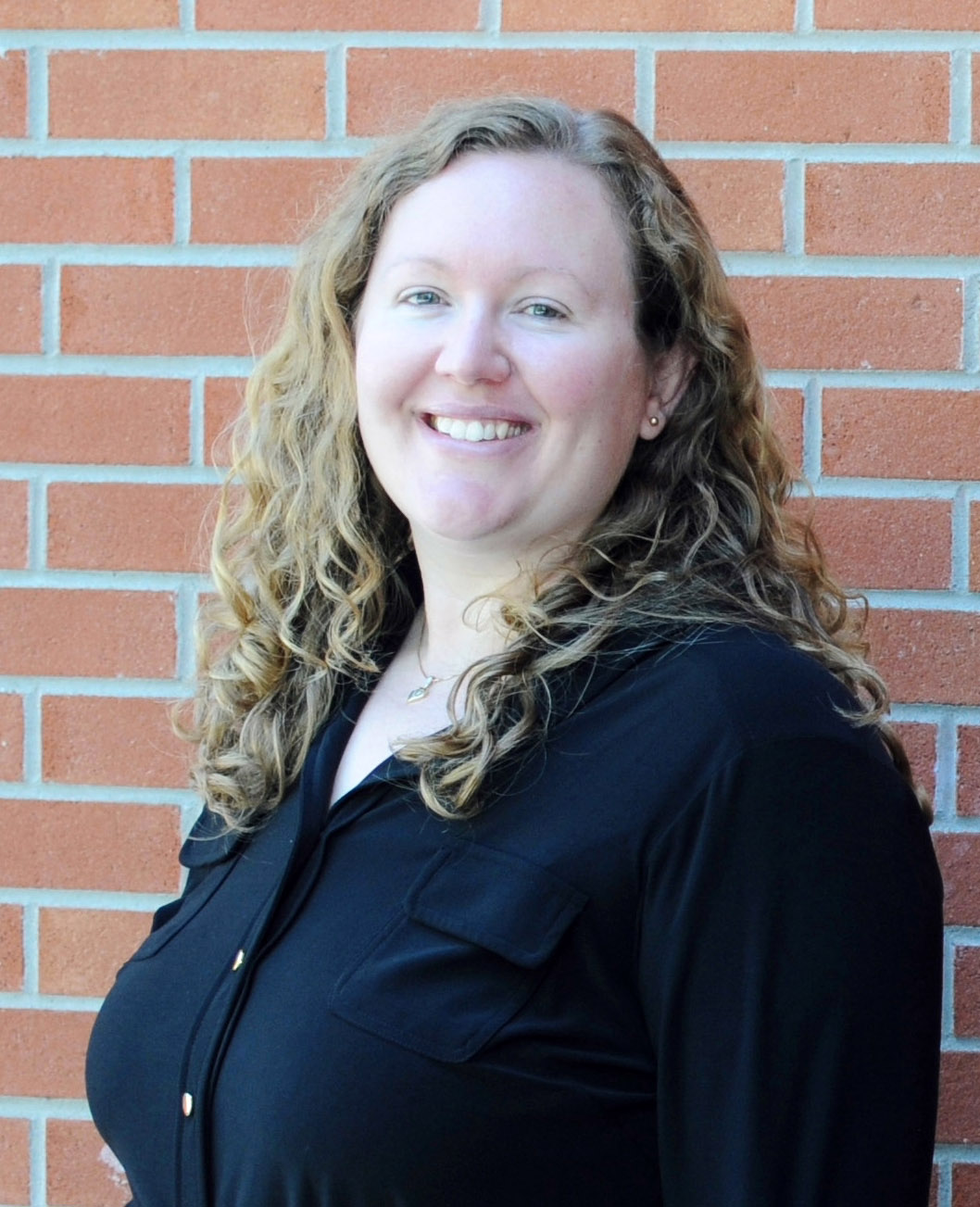 Chloe Hamza
Chloe HamzaDr. Chloe Hamza has an article in the upcoming Canadian Psychology journal COVID-19 special edition entitled ‘When Social Isolation Is Nothing New’. It’s part of an ongoing study of post-secondary students, some of whom had pre-existing mental health concerns before the pandemic, and some of whom didn’t.
Dr Chloe Hamza
Dr. Chloe Hamza is an assistant professor in the department of Applied Psychology and Human Development at the Ontario Institute for Studies in Education at the University of Toronto. She’s the lab director of the CARE lab (Coping, Affect, and Resilience in Education), and her research has been broadly about stress and coping among postsecondary students. It was with this focus that she and her team ran a study looking at the psychological impacts of COVID-19 among postsecondary students.
Like so many other studies at this time, Dr. Hamza and her team were lucky to have already done a similar survey, that one in May of 2019. This meant that repeating many of the same questions with many of the same participants could give a good indication of where they were now, with the pandemic, compared to where they were before.
“We had some pre-COVID assessment data, and then we went back in May 2020 and surveyed students again. We were looking at stress, coping, and mental health before and during the pandemic. What we had originally hypothesized was that students with pre-existing mental health concerns would be those who would be most adversely impacted by the pandemic. But what we found was that students who had pre-existing mental health concerns fared similarly or were actually improving during the pandemic. Whereas students without pre-existing mental health concerns showed the greatest decline in mental health.”
This study, and these results, have resulted in an article that will be published in this month’s COVID-19 special issue of the journal Canadian Psychology. (See our upcoming profile of Dr. Vina Goghari for more on the journal the day the special edition comes out.) The article is called ‘When Social Isolation is Nothing New’, and it details these findings from Dr. Hamza and her team.
“When we looked at why those students without pre-existing concerns were declining, we found that increasing social isolation seemed to be associated with deteriorating mental health. What that seems to suggest is that if you were feeling socially disconnected before the pandemic, which in our case was among students with pre-existing mental health concerns, the start of the pandemic and distancing guidelines may have been less impactful. In contrast, if you weren’t used to experiencing social isolation, and this was a real change for you, your mental health was more likely to decline.”
It looks, for now, as though students with pre-existing concerns were already experiencing some kind of isolation socially pre-pandemic, and that has made the adjustment easier and less impactful for them than it has for others. There are of course other possibilities that might account for the findings of Dr. Hamza and her team, and they plan to explore those in a follow-up study that is beginning right now.
“For many students some stressors actually decreased. For example, having multiple competing demands, or academic pressures, lessened. Which sort of makes sense if you think about how universities initially responded to the pandemic. Students weren’t going to class any more, they may not be going to work, and so the demands on their time – both academic and vocational – may have decreased.”
The follow-up study is currently under way, where Dr. Hamza and her team are asking those same students how they’re coping now during the pandemic. Some of it will involve the results of the previous study, where they will ask the participants about the results. “Here are some of our findings – how does this resonate with you? Do you think it’s accurate? What are some of the reasons you think we might have seen this result back in May?”
While that study is ongoing, Dr. Hamza is also focused on her own students – trying her best to ensure that they remain engaged, well, and healthy through what has been a very difficult school year. Her department does a ‘wellness challenge’ which challenges people to get outside and walk, or pick up and learn a new instrument, or try a new recipe. All things we can do to maintain better mental health during this time of isolation. Things that are good both for those of us who are still new to distancing and socializing remotely, and for those of us for whom social isolation is nothing new.
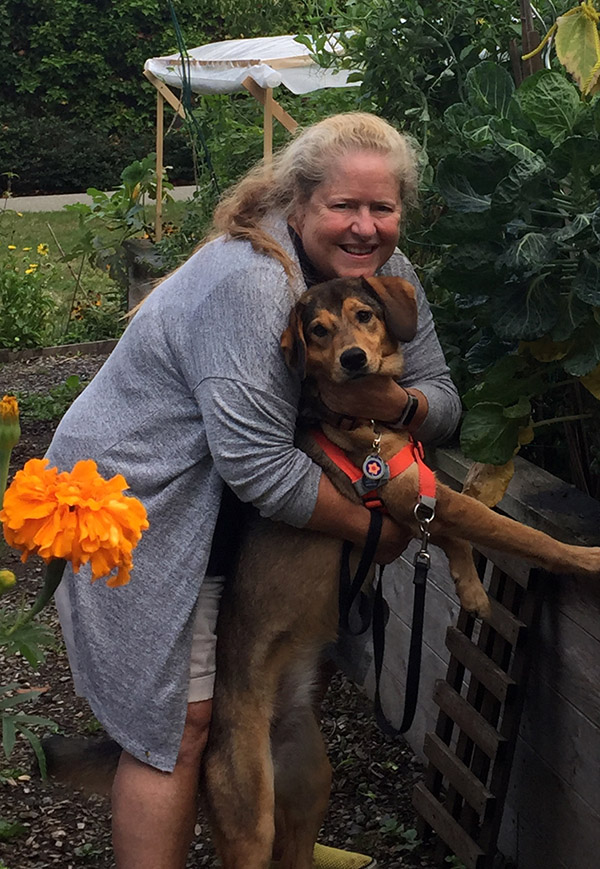
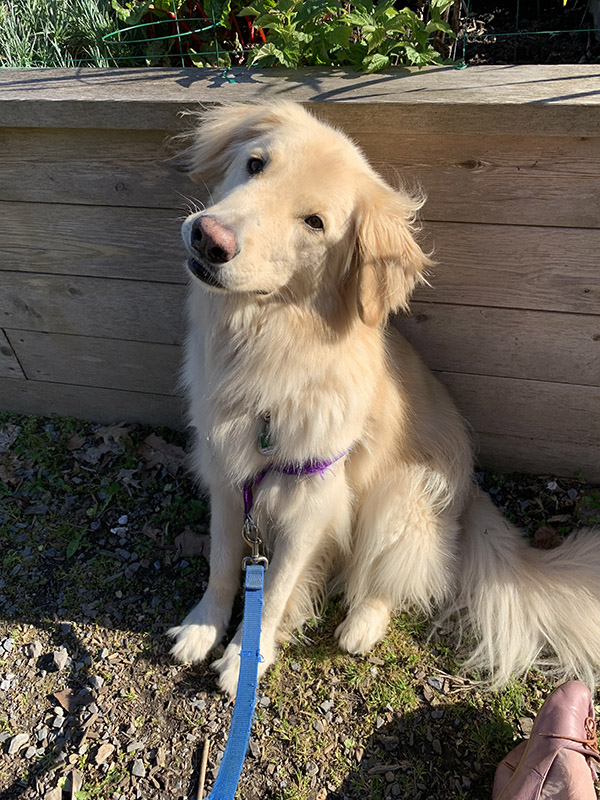 Laurie Ford
Laurie FordDr. Laurie Ford at UBC has school psychologists to train, students adjusting to online learning, and innovations to replace hands-on experiences. She also has a community garden and two great dogs!
Laurie Ford
“Every night we talk on FaceMail”.
Two things are getting Dr. Laurie Ford through this pandemic in a positive way. One is her nightly ‘FaceMail’ chats with her dad in Oklahoma. Not sure if this means FaceTime, or FaceBook, or Zoom or some other video chat platform, but dad calls it FaceMail and so FaceMail it is. The other is a community garden where Dr. Ford is the President. The garden has become a meeting-place and something of a pandemic oasis throughout the past year. Sometimes up to six or seven people, Laurie and her friends, will head to the garden after work, sit well-distanced on the various plots, and share a laugh and a glass of wine. Maybe pull some weeds. It’s a nice break from long days at work.
“I’m getting a lot of work done – when all I have to do is go to the front of my house and come back. The bad thing is I think many of us are working too much, as the lines between work and home are blurring.”
Even Dr. Ford’s beloved community garden has become part of that blurring of work-home-life, her meetings with friends inspired her to do the same with her grad students. A few months into the pandemic, she suddenly realized that most of her students lived in Vancouver but had never actually met one another in person! With the exception of one student stuck in Australia and one stuck in Alaska, she invited them all to meet, in person, at the garden. (The two stranded students were able to join virtually, by Zoom.)
Dr. Ford is at UBC. She is the Director of Training for the School and Applied Child Psychology program and has been involved in training school psychologists for a long time. She is also a board member at the CPA. As the pandemic has gone on, she has become more and more accustomed to Zoom calls, as has her dogs Gracie Belle and Cooper come to say hi and investigate the goings-on before wandering off to find more interesting ‘dog stuff’ as Dr. Ford goes back to teaching her now presumably more interested class.
“One of the big things, from a training perspective, is to figure out ways that students can get some of that hands-on training, in schools and in clinical settings, when everything’s restricted. The other part that’s related to training is – how do you move to train people to do service delivery in less traditional ways?”
Right now, Dr. Ford’s training is primarily preparing Masters and Doctoral-level school psychologists. Training that would ordinarily involve a lot of hands-on experience. Before 2020, Dr. Ford would take her students to a local homeless shelter for some classes. Others would take place in a rehab clinic, or a xʷməθkʷəy̓əm (People of the River Grass) longhouse located within walking distance of the UBC campus. Dr. Ford says, just being in these physical locations was a huge part of the experience. That, of course, has not been possible in the past year. So they are finding some workarounds.
Members of community join Dr. Ford’s Communities Systems class some weeks as they try alternate ways to immerse students in a variety of settings. In this class and others, she’s also experimenting with videos, podcasts, and other methods of delivering information that are different that simple Zoom lectures. She says she has been surprisingly impressed by how many of her students are doing the extra work and taking advantage of the extra content she makes available to them.
“I think I was just so determined to make this be awesome, even though it sucked being on line, that it’s made me become more familiar with the technology of teaching online, but it has also in some ways made me work harder to find diverse sources of information. I actually think I’m better teaching this course than I have been in the past. I’ve had to work harder to be more creative to find new and better ways to engage my students. It’s made me think like the kids a little bit – I’m doing less lecturing and I’m using podcasts and videos. They’re good teaching pedagogies that we talk about but then we kind of get lazy, you know? So I really think I’m doing a little bit of a better job this year!”
Dr. Ford has a big personality, the kind that can fill a lecture hall in person better than a Zoom screen. She says she misses that part of teaching, addressing a large room full of people, and it’s clear that will be the first thing on the docket, whenever this pandemic ends and she can get back to the front of a class. But while it goes on, she hopes that the innovations she and her students have come up with have made her a better teacher, and they have certainly made her more tech-savvy. When the spring arrives, her students will be able to meet one another again, in a safely distanced fashion. They still have the community garden.
And Laurie’s dad will still have his FaceMail.
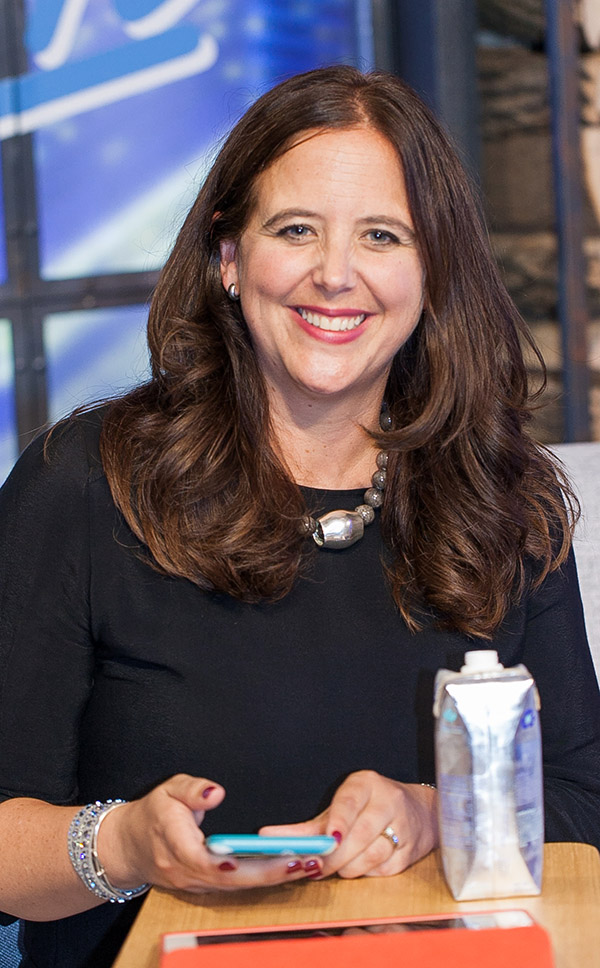 Dr. Christine Chambers
Dr. Christine ChambersDr. Christine Chambers is part of the #ScienceUpFirst initiative, the Scientific Director at the CIHR Institute of Human Development, Child and Youth Health, and many other things. The biggest change for her during the pandemic might be as the Scientific Director of SKIP (Solutions for Kids in Pain).
Dr Christine Chambers
Busy mom of 4, PhD Psychologist, Scientific Director @CIHR_IHDCYH , Scientific Director @KidsInPain , Professor & Tier 1 @CRC_CRC in Children's Pain @DalhousieU
- Christine Chambers’ Twitter bio
You’ll note that the first word in Dr. Christine Chambers’ Twitter bio is ‘busy’. It’s a shame that Twitter bios allow a maximum of 160 characters only…or maybe it’s a blessing? By the time people finished reading hers, they might have no time left for doomscrolling! That’s also why we have profiles such as this one, which, as you will note, has no character limit whatsoever.
I feel lucky to have been able to spend half an hour speaking with Dr. Chambers. When I first started at the Canadian Psychological Association, I had made plans to meet with Dr. Chambers in the spring of 2020, when she would be in Ottawa for a conference. Back then, that was how meetings worked – you would wait until you were in the same city, then you would squeeze in some time. Things operate a little differently now but with Dr. Chambers, even on Zoom it’s still about squeezing in time.
Dr. Chambers is speaking with me just after one Zoom meeting and just before another, each one involving a different hat she wears. One of those hats is as the scientific director of Solutions for Kids in Pain (SKIP).
“SKIP is a federally funded national mobilization network, focused on moving research into practice. We received funding for four years, so our first year of operation was in the ‘before-times’. - In that first year we laid groundwork, developed relationships, built momentum. The pandemic hit just as we were entering into our second year of operation. It’s fascinating, both in terms of the areas of focus that we’re engaging in right now, but also just the process of knowledge mobilization.
How research gets moved into practice is based a lot on relationshipsand bringing people together. In our first year we had so many workshops, and we played a key convening and catalyzing role in bringing people together on a number of issues in physical spaces. All of a sudden you lose your ability to do that. Thankfully we had a lot of partners in SKIP who were already in the digital space either with health providers or with parents, so we had the right tools and the ability to leverage those.
From a content perspective, obviously vaccinations are a huge topic right now. In the area of children’s pain, vaccination pain evidence is very robust. Anna Taddio and others like Meghan McMurtry (also a psychologist) have pulled together this evidence and there’s a clinical practice guideline. So we’ve been doing a lot of public engagement around needles, and how to prepare for needles.
Virtual care has obviously also been something people in the healthcare space have been engaging in in new and different ways, and Katie Birnie – also a psychologist in SKIP – has been leading some really interesting work in this space.
Another thing though, and every health person is struggling with this right now, is how do you keep your issue (in my case pain) a priority in the middle of the pandemic? We were working to improve pain management in Canadian health institutions, now we have to figure out how to keep that issue a priority while competing against all this very important focus on the pandemic. So it’s been a hell of a year!”
Dr. Chambers says she’s been pleased and surprised at how well the team at SKIP has been able to keep pain front and centre, and how well institutions are responding. There have been many champions for this cause working for many years, and the disruption of COVID may actually have made things a little easier. One, because a lot of people in the healthcare space are re-constructing their practices in a different way, and two, because talking about pain and pain management gives those health institutions a bit of a break from talking about the pandemic.
Another hat Dr. Chambers wears as an expert with the #ScienceUpFirst initiative, combatting online disinformation around the pandemic, the vaccine, and more. (See our profile of Dr. Jonathan Stea for more details on #ScienceUpFirst.)
“This is a fantastic collaboration led by Tim Caulfield and Senator Stan Kutcher, and I was thrilled to be one of the psychologists that was an early joiner. I’ve been using social media for a number of years to help promote the work we’re doing and to raise awareness with a particular focus on parents. So it’s been really nice to be a part of this group addressing misinformation head-on. I have my eye on the types of misinformation that gets shared around children and families. It’s a wonderful group of people trying to make sure that evidence (in my case psychological evidence) is embraced and accepted.”
Some more hats. Dr. Chambers is a professor at Dalhousie University. She runs a research lab where they generate new knowledge about children’s pain. And she is also the Scientific Director of the Canadian Institutes of Health Research Institute of Human Development, Child and Youth Health.
“It has been a busy year! It was going to be a busy year before the pandemic, but the pandemic really took it up a notch. It’s a privilege to have the opportunity engage in so many different roles, and I tell people I’m definitely not bored during the pandemic! And also I think that never before has Canadian science and global science been on such a stage. Never before have we needed science more, or have needed to communicate the role of science. So it’s important that psychologists have visibility, and that the psychological evidence be generated and shared. I’m always trying to put up my psychology flag at every table I sit at, and reminding people of the value of psychology.”
Dr. Chambers has four kids between the ages of 9 and 14. Several years ago, she realized that all this research – research she had been instrumental in creating – was not being used to the benefit of her own children. It was then that she started getting into the mobilization side of things, the advocacy and media and policy veins. This involved creating videos, becoming active on social media, and ensuring that knowledge moves to where it needs to go and it led to a career of many hats.
“All this great psychological research is wonderful, but if it sits in journals, or in conferences, and doesn’t actually get out into the hands of people who need it, then what was the point?”
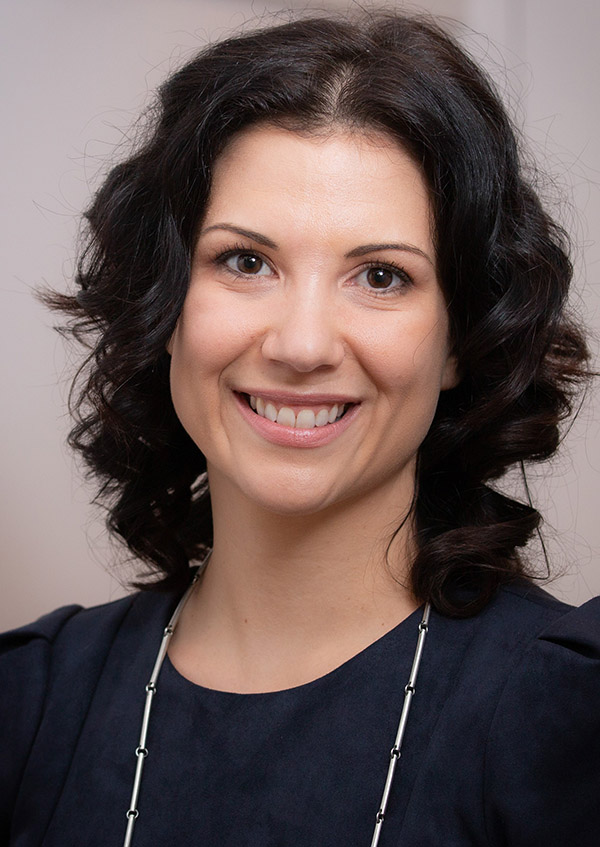 Mélanie Joanisse
Mélanie JoanisseWhen the pandemic began, Dr. Mélanie Joanisse created a simple, easy, and funny Guide to Wellness for her frontline co-workers at the Montfort hospital. It immediately took off and has been shared and translated around the world to help healthcare workers everywhere.
Mélanie Joanisse
“I wrote this in what I would call a hypomanic phase…as psychologists, we always have to pathologize any kind of creativity.”
Dr. Mélanie Joanisse was still processing the fact that she was not going to be able to attend a Pearl Jam concert when she had something of a viral moment in the early days of the pandemic. Can we still say ‘going viral’? Or has that phrase now passed out of the lexicon like so many others before it that conjure unwelcome memories? Anyway, a lot of people suddenly found Dr. Joanisse’s work. Like, a LOT of people. Her ‘Guide To Wellness’ was being discovered.
“I got a call from the communications director at the Montfort hospital, who said ‘what was your marketing and communication strategy for this? [Mélanie laughs heartily] I was like…none? She said we were being bombarded with messages from people who said they like it, and I was starting to receive a lot of emails – even from people in Europe – saying ‘we like this, can we translate it?’ And so I said sure, go for it! So the communications team at the Montfort helped me to create a creative commune so people would understand that they could just take it.”
Dr. Joanisse’s has a private practice in Ottawa, but does a lot of work at the Montfort Hospital, Ontario’s only francophone hospital. When the pandemic first hit, she saw at the Montfort the stress that the staff was experiencing. The sudden worry among doctors and nurses. The occupational therapists and social workers who were wearing masks and gowns, something they would never have done before. It was all hands on deckand changed how everyone was working. She wanted to do whatever she could in her capacity as a psychologist to help.
“As a psychologist I’m not trained in acute care – no one would want me in the ER! So I figured maybe doing a guide would be helpful. I was reading a lot online, and there are a lot of good resources, but I was just picturing a physician or a nurse or an RT sitting down with a list of 25 papers that they could read on wellness. I just pictured them shutting down their computers and saying ‘I don’t have time or the capacity for this’.”
So Dr. Joanisse set about writing something that encompassed as much as possible about the evidence-based ways to wellness, but to package it in a more engaging way. Visually attractive, a little bit funny, and representative of what frontline healthcare workers were experiencing. An easily-digestible light read, rather than another arduous undertaking.
“The only mask you should be wearing is a medical mask; please discard the infallible mask, as research has shown it suffocates its users.”
- From the Guide To Wellness
The humour in the guide comes from Dr. Joanisse herself. She’s extremely funny, in a very natural way, and that good humour has helped her get through this pandemic and all the setbacks. Like the Pearl Jam concert she missed – her first realization of how big COVID-19 was going to be was that cancelation. Or, more recently, the Chiefs loss in the Super Bowl – her husband is a huge Chiefs fan and just after they were married they flew to Kansas City to take in a game at Arrowhead. In 2019, moments before the pandemic really took hold, the Chiefs finally overcame decades of ineptitude to deliver a Super Bowl victory to fans like Mélanie’s husband.
“Last year when they won, it was pre-pandemic so we were at a friend’s house for the Super Bowl. He got up and spontaneously screamed ‘this is the best day of my life!’ There was a silence, and everyone looked at me. I was like, sorry daughter…birth…wedding…I’m just putting that in my pocket. The next time I spend I don’t know what on what, I’m bringing that card out!”
Now, after watching her husband celebrate the greatest day of his life, Dr. Joanisse is something of a Chiefs fan too. This is perhaps more because of Laurent Duvernay-Tardif, the French-Canadian starting right guard with a doctorate in medicine who left the Chiefs in the offseason to join the front lines of the pandemic back in Montreal. Just the kind of person who might benefit from the Guide to Wellness.
Dr. Joanisse still sees stress in her co-workers at the Montfort. Now, it’s not the stress of uncertainty that existed at the beginning of the pandemic, but rather a stress borne of long hours, fluctuating numbers, a desire for the pandemic to be over, and sheer exhaustion. She’s heartened, however, that many have taken her Guide To Wellness to heart – not only at her own hospital, but at institutions around the world.
“Now I know people in Hawaii, BC, all over the world. All types of different healthcare workers have reached out to me. It has been quite the experience, I have to say. And very moving, to know that this has touched people in that way.”
 Khush Amaria
Khush AmariaMindBeacon had a bit of a head start on other similar groups when the pandemic began, as they had already been providing online services for some time. Dr. Khush Amaria is the Senior Clinical Director at MindBeacon, and the last year for her has been packed with speaking engagements.
Khush Amaria
“My Zoom background used to have my Parent Report Card up there but I took it down because I wasn’t doing very well – my cooking skills were poor, there were many problems.”
Dr. Khush Amaria’s Zoom background now has a bar graph made by one of her children, which really is ideal – it’s homey, warm, colourful and comforting – but also scientific! Just the atmosphere she probably wants to evoke for CBT Associates and MindBeacon.
If you are a resident of Ontario, a pop-up window appears when you go to the MindBeacon website. ‘Free therapy for Ontario residents! MindBeacon’s Therapist Guided Program is now free thanks to funding by the Government of Ontario.’ They were always providing live therapy through a digital stream with the CBT Associates division of the company, but it was restricted to Ontario only. During the COVID-19 pandemic, they have expanded their Live Therapy program (now capitalized and official) across Canada, and the Ontario portion is now free thanks to government assistance.
“The one thing that is so clear to me is the demand. In the summer we may have seen about 800 new accounts created each week. In the fall that number was reached close to 2,000 new accounts some weeks. It’s indicating that Canadians are struggling, but that they’re not waiting – they’re reaching out for help right now.”
Dr. Amaria is the Senior Clinical Director at MindBeacon and manages the CBT Associates side of the business. During the pandemic, that has meant she does a huge amount of speaking engagements. Companies who reach out looking for an expert in stress, or anxiety, or depression, get Dr. Amaria’s full attention, as she walks them through some of the steps they can take to alleviate the difficulties of their employees. She gets them to understand what level of help they might need, and what supports are available.
“Sometimes it’s a company that will come to me and say, ‘we’re all feeling a little concerned about each other, and we don’t know how to know if our colleagues are doing well’. So what I often do is talk about how we identify stress in ourselves. A common topic might be ‘what is burnout vs. just feeling burnt out?’ How can you be there for others? For me that’s a really nice way to make psychology and the science of psychology understandable to the day-to-day person. My intention with almost every single event I’m part of is to have people feel like they can walk away with a plan.”
That plan may be that they research the thing Dr. Amaria was talking about. Or they’re going to reach out to a friend that they think might not be doing so well. Or that they themselves will reach out because they’re not doing well. It’s always about reminding people of the supports that are available, and destigmatizing mental health – recognizing that mental health is an integral part of everyday health.
In March of 2020, MindBeacon was one of the companies chosen by the Ontario government to provide services quickly and on-demand to Ontarians, which meant that Dr. Amaria and her colleagues expanded their roster of psychologists, and other mental health professionals, very quickly.
“We had to figure out really quickly how we could build our roster, and we brought on psychologists but we also brought on registered social workers. We needed to be able to deliver services, and our psychologists could then be involved in places where diagnosis was required, or helping with triaging, or oversight. Our psychologists are involved in developing protocols. We recognized that some people don’t fit the criteria of having a depressive disorder or being anxious – but they have stress! So we launched this amazing managing stress protocol in the fall because many people just needed to ‘tweak’ their stress management skills. That was a psychologist who wrote that out and put that material in there. That’s the nature of what we do.”
Another major thing that happened during the pandemic was that MindBeacon went public. Dr. Amaria is a psychologist, still does clinical work, oversees the residency program at CBT Associates, speaks to large groups and does a lot of work as a spokesperson for the company. What she does not do is IPOs and the stock market.
“I’m not sure I really understand most of it – but the most amazing thing about it was the attention that this garnered, and the investment coming back into us as a company to continue to support Canadians. So that’s been really neat.”
When GameStop stock took off, and Wall Street was all in an uproar, Dr. Amaria says she got the Coles’ Notes version of it from her husband, presumably during one of those moments when she was not doing one of the many jobs she has at the moment. Maybe during one of the forced getting-outdoors breaks they take with their school-age children. Taking care of stress levels and mental health is something clinicians have to remember as well.
“I remind myself I need to take a dose of my own medicine in a way. In a week I might talk to 1,000 people about stress management, and share examples from my own life. It’s about recognizing that we’re all in it together, and we do really have to work on mental health. Nobody is immune – it doesn’t matter if you’re a psychologist or a therapist, taking care of your mental health is effortful, and we all have to do something.”
For some of us, doing something means reaching out to a friend, or taking a walk outside. For others, it might mean reaching out to Live Therapy from MindBeacon. Maybe doing something is as simple as learning something new. Like improving one’s ‘cooking skills’.
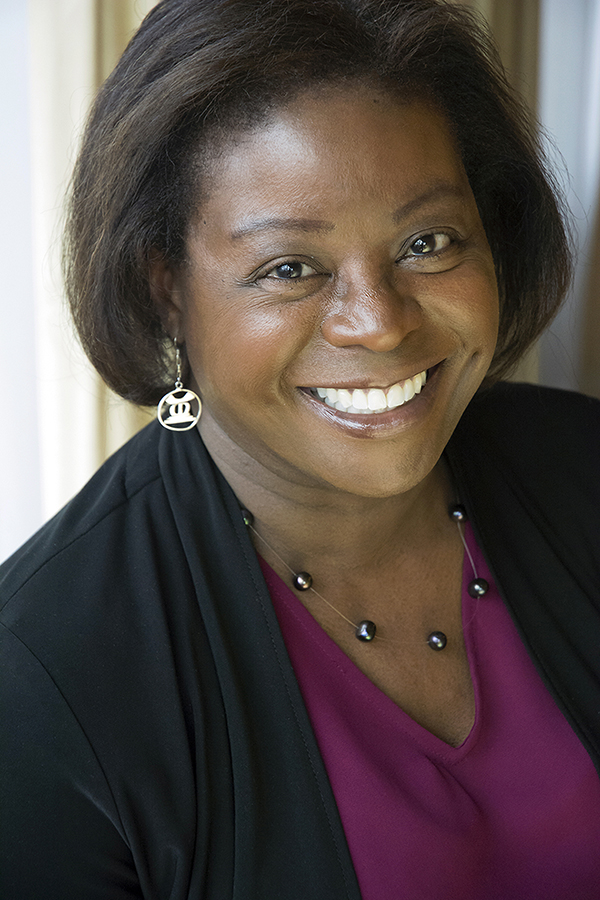 Helen Ofosu
Helen OfosuDr. Helen Ofosu runs IO Advisory in Ottawa where she helps organizations and businesses tackle structural racism and promote equity, diversity, and inclusion. During the pandemic, more and more groups are looking for this kind of assistance and her business is growing.
Dr. Helen Ofosu
“There are certain people who, pre-pandemic, were super-productive and making amazing contributions at work. But because they weren’t bragging, buttering up the boss, or charismatic, they were overlooked. But now, when everyone’s at home, it’s easier to track who is contributing – who is sending in work product. So, all the “doers” are kind of getting their chance to shine.”
Dr. Helen Ofosu is writing a book. The working title is The Resilient Career, and will impart lessons she has learned over a 20 year career in Work and Business (Industrial/Organizational) Psychology. It will be a resource for people dealing with underemployment, harassment, workplace scapegoating, or being a newcomer to Canada trying to adapt to a new culture in the workplace. A lot of the book will be about employees’ identities, and how those tie into career progression, as well as some insights around the “glass cliff” phenomenon (i.e., women and racialized people being more likely than men to achieve leadership roles in an organization in times of crisis, when the chance of failure is much greater).
It may seem like writing a book during the COVID-19 lockdown is something a person with a lot of time on their hands would decide to do. That does not seem to be the case for Dr. Ofosu, who is an HR Consultant, Executive Coach, and Career Coach who runs I/O Advisory Services in Ottawa. Much like the employees she sees getting more recognition for the work they do during the pandemic, Dr. Ofosu is getting more recognition as well. The bulk of her clients were once in Ottawa, but now that Zoom is the de facto way to connect she is working with companies all over Canada, and sometimes the US and Saudi Arabia.
An additional reason for that branching out is the newfound focus companies are placing on systemic discrimination, anti-racist workplaces and restructuring their policies around equity, diversity, and inclusion. That happens to be Dr. Ofosu’s specialty – what she refers to as a ‘passion project’ turned full-fledged business line. This process is taking something of a different turn now as well, with the pandemic forcing this kind of coaching to be done at a distance. At the moment, this is mainly taking the form of mentorship and sponsorship programs for employees.
“My favourite model is one that I’ve been experimenting with and tweaking – it’s blending mentorship with allyship. At the same time that we train mentors to be more effective working with racialized people with whom they may not have a lot of experience, we’re also going to train a second group of people called ‘allies.’ These are people who may be senior and well-intentioned in the organization, but who don’t have the time to dedicate to either a one-on-one protégé or a small group of protégés. But they can still benefit from some training around systemic discrimination and what it means to be a good ally and mentor. They can then be out there in their organization as resources and influencers on more of an ad hoc basis.”
The mentors and the allies both receive the same kind of training – but while the allies tend to have giant workloads and full calendars and therefore less time to dedicate to this sort of thing, the mentors commit to six month or year-long programs where they check in with Dr. Ofosu regularly.
Mentors are ideally people in leadership positions in the organization. They are people with good ‘soft skills’ (e.g., communication, empathy, judgement, strategic thinking, etc.) and a genuine interest in supporting the career development of more junior employees. This way they will be more effective at imparting the lessons learned to the rest of their teams.
It was shortly after the death of George Floyd that a group in Toronto reached out to Dr. Ofosu, and it’s with this group that she has been developing the mentorship program as it stands today to support communication, marketing, and PR professionals in Canada. Now the federal government has caught wind, and she’s working with them to get this program launched there as well.
That likely means more work, which might also mean less time working on her book. But Dr. Ofosu will find the time, while still taking the occasional break. One of the perks of living in Ottawa is all that free time outdoors taking long walks and shoveling snow, where she puts on her headphones and listens to R&B, gospel, and hiphop music. Then she’ll come back in refreshed, ready to work on that book (with support from her American editor) and to get busy supporting leaders and dismantling structural racism at organizations across Canada.
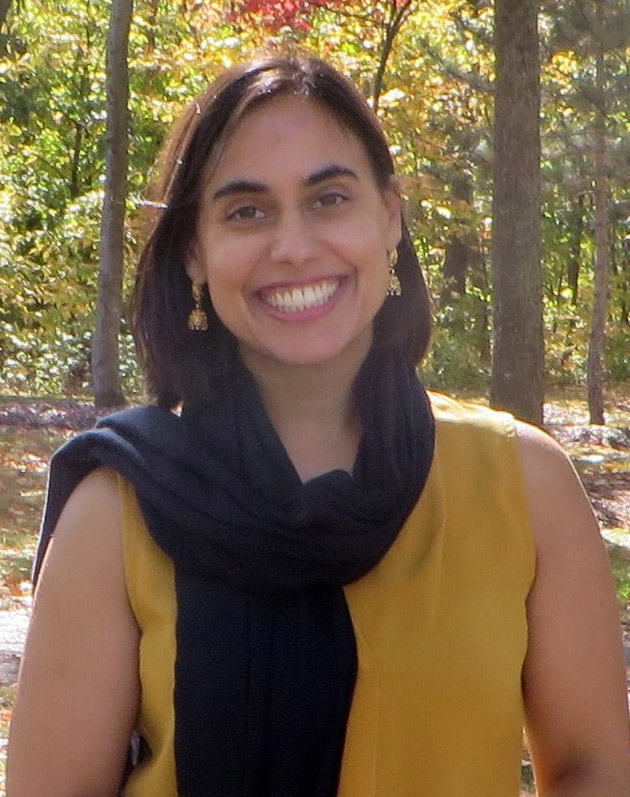 Maya Yampolsky
Maya YampolskyThe COVID-19 pandemic has made racism worse around the world for marginalized communities. Racism has made the pandemic worse for those communities as well. Dr. Maya Yampolsky specializes in social and cultural psychology, with a particular focus in her research on systemic racism and how racism enters into our personal lives.
Maya Yampolsky
In the spring of 2020, there was a COVID outbreak at a homeless shelter in Ottawa. The outbreak was traced back to two immigrant women who were both working at multiple long-term care homes in the city, and who lived at the homeless shelter. As new Canadians with few job prospects, personal support worker positions were some of the only jobs the two women could get. Those jobs paid so little that they were forced to work in more than one location in order to make enough money to live. Even then, they did not make enough to afford rent and so they had to live at the homeless shelter. It was a perfect storm of transmission as vulnerable people in one population brought the virus to vulnerable people in another. As many pointed out at the time, this was eminently predictable.
COVID-19 has had a disproportionately devastating effect on Black people, Indigenous people, immigrants and refugees. Pretty much anyone that has been disadvantaged by institutions and societies over generations are now even more vulnerable because of health inequities. Dr. Maya Yampolsky is an Assistant Professor in Psychology at Université Laval. She specializes in social and cultural psychology, with a particular focus in her research on the experience of managing multicultural and intersectional identities, and how those identities are related to our broader social relationships and broader social issues – especially systemic racism and how racism enters into our personal lives.
We’re speaking on Zoom, Dr. Yampolsky in her apartment in Quebec City, in front of a blank wall that I notice looks a lot like the hallway outside my high school gym. It turns out this is by design – an avid yoga practitioner, Dr. Yampolsky has been with a group call the Art of Living Foundation for about 20 years. They are an organization that promotes individual and community development through yoga and yogic philosophy. When teaching a course, Dr. Yampolsky prefers a neutral, blank background. That said, I get the sense that a yoga class with Maya would be an awful lot of fun. She is exuberant, cheerful, friendly and animated in a way that comes through even a Zoom screen. Even when the subjects we’re discussing are rather sombre and depressing compared to yoga. Subjects like COVID, and racism.
“A lot of research showed that Black Canadians of Caribbean origin or African origin, populations that are descendants of enslaved peoples from previous centuries, these groups have continuously been targeted. As a result there’s stress, and there’s illness that builds up in the body. So a lot more of these members of our population have chronic illness, which makes them more vulnerable to COVID, and to having a more intense experience with it. This means they have worse cases and a higher mortality.”
Around the world, Black, Indigenous, Hispanic and Southeast Asian people have felt the greatest impact from the pandemic. This is in part because of the stress that comes along with the continuous targeting Dr. Yampolsky speaks about, but also because those groups are the most likely to be essential workers. Frontline healthcare employees, people who work in long-term care facilities, areas that are more susceptible to exposure. Worse health outcomes, increased exposure, and more long-term neglect of marginalized communities have combined to create a storm during the pandemic.
“This isn’t overt racism, like hatred. But it is something that manifests from the existence of structural racism that creates inequalities that then come to the surface when a pandemic hits.”
Dr. Yampolsky, along with her colleagues Andrew Ryder, John Berry, and Saba Safdar, created the fact sheet ‘Why Does Culture Matter to COVID-19’ for the CPA. That fact sheet inspired a review article she is currently working on with Rebecca Bayeh (1st author) and Andrew Ryder (last and corresponding author). Every time culture and COVID is discussed, it takes Dr. Yampolsky and her colleagues in new directions. Racism is a big part of that. With the pandemic, one thing leapt out very early.
“The World Health Organization has said that we don’t name diseases after places. And yet, people kept insisting on calling this the China Virus or worse. From there we saw a lot of hate speech emerging, and there’s been a lot of hate crime. Here in cities like Toronto and Montreal, there were a lot of defacements of businesses and sacred spaces like Buddhist temples. Asian-Canadians and Asian people abroad, in the global diaspora, and people who looked phenotypically Asian (like Northeastern states in India) were being targeted as the source of the virus and being associated with disease.”
This is sadly not a new thing. We’ve seen this before many times, with virtually every epidemic and pandemic in human history (the 1918 influenza pandemic is still called the ‘Spanish flu’ today, even though the first reports of the outbreak were in Kansas, and no evidence suggests that Spain was particularly hard-hit or that outbreaks occurred there earlier than anywhere else).
Dr. Yampolsky explains that part of the reason for this is that the human brain has shortcuts wired into it to be able to avoid danger – we see disease and immediately try to determine the source of the danger, leading us to associate a virus with a whole group. But of course, it’s more complicated than just this. It wasn’t as though everything was great, and then suddenly the pandemic created more racism – there had been a steady rise in overt racism and hate groups leading up to the onset of COVID-19, a trend that was merely accelerated by the pandemic.
Racism has always existed, and it is always there among the public – the rise has been in overt, or as Dr. Yampolsky put it, “audacious” racism. Hate groups and far-right terror groups in North America and Europe have been more bold in sharing their vitriol publicly. Even some political actions have acted to exacerbate racial tensions. Dr. Yampolsky points to Bill-21 in Quebec, the law that bans people working in public services from wearing ‘religious symbols’ of any kind.
“Anything that essentially targets a minority group will also condone hate toward that group. By its very nature, it singles them out for discrimination. And we were seeing a lot of that already.”
Discrimination against virtually all minority groups has been amped up as a result of COVID-19, in large part because that discrimination was on the rise already. The advent of the pandemic became an excuse to further scapegoat those marginalized groups among those who were already trafficking in hate. These populations already tended to be more vulnerable than others because a history of systemic racism has set them up that way.
In the middle of this perfect storm, Dr. Yampolsky sees a silver lining, maybe a light at the end of the tunnel.
“Hopefully the fact that COVID happened, and then this latest big anti-racism movement – as far as I can tell, the biggest since the civil rights movement – in a way COVID facilitated drawing our attention to what was an existing situation. We weren’t going out, we weren’t being distracted, and so our attention was drawn towards anti-racism. This, positively, has yielded a lot more awareness about racism, and institutional valuing and awareness about racism as well. So that also gives me hope – in the sense that COVID showed us that we’re all connected, it also drew our attention to these things that needed repair, and needed work. I hope that it does end up building more responsible, more healthy, and happier connections with one another.”
There’s still a huge amount of work to do building those connections. To avoid another scenario like the one that happened in Ottawa in the spring, immigrants and refugees require greater supports. Personal support workers, and others we consider essential, require higher salaries. We also need to build ethical and cooperative interactions with Black and Indigenous peoples. There must be equitable and affordable housing for all. And the structural systems that create these conditions must be dismantled.
Dr. Maya Yampolsky is one of the people that will move us closer, as a society, to creating those connections. After an hour with her on Zoom, it’s almost impossible not to be inspired to get out there and start working on dismantling racist structures and historic disenfranchisement. And also, maybe even to sign up for her yoga class.
 Karen Blair
Karen BlairDr. Karen Blair and her colleagues created the ‘COVID-19 Interpersonal & Social Coping Study’ which surveyed hundreds of Canadians over several months. One of the most striking results they found was the impact of the pandemic on LGBTQ+ university students.
Karen Blair
“One student broke up with her girlfriend just as the pandemic began. She was sent home but wasn’t out to her family. So she was heartbroken, that young love heartbreak that totally guts you, but her family didn’t even know she was gay. And so she couldn’t be heartbroken in front of them. At the same time her brother was home, with his girlfriend stuck in another city. And so their parents were doting on him – empathetic and supportive of the poor moping brother, sad at being separated from his girlfriend. And she’s watching this knowing she can’t even tell them that she’s heartbroken, that she got dumped because of the pandemic.”
Dr. Karen Blair is an assistant professor of psychology at Trent University. She is also the Chair of the Sexual Orientation and Gender Identity Section of the CPA, and has been since 2014, a fairly long time to be the chair of a section. She says she’s likely to remain the Chair until at least 2022, as it would be a pretty big ask to get someone to take over virtually, in the middle of our current pandemic.
One of the things Dr. Blair has done during the pandemic is the ‘COVID-19 Interpersonal & Social Coping Study’. It was a large, ongoing survey of hundreds of Canadians on a variety of topics. It found as the pandemic progressed between May and July, Canadians wore masks more often and supported mandatory mask mandates more strongly.
Dr. Blair and her team also looked at Intimate Partner Violence (IPV), and found that the sample couples who had negative reactions to COVID-19 were at greater risk of perpetrating and being the victim of IPV. Their results found that married or common law couples are at greater risk for psychological IPV victimization; women and married or common law couples are at greater risk for psychological IPV perpetration; and younger individuals, parents, mixed-sex couples, and individuals in newer relationships are at greater risk for sexual IPV victimization.
They also looked specifically at Nova Scotians and how they were coping with the pandemic relative to other Canadians. Nova Scotians reported higher levels of social support, mental wellbeing, and medical help seeking behaviours. Nova Scotians also reported more engagement in WHO recommendations, feelings of competency to engage in social distancing and more positive attitudes toward mandatory mask regulations.
Part of the survey had participants writing notes to their past and future selves - one was a message to a past self, before the pandemic began. The other, a message to a future self several weeks later (see Courtney Gosselin profile).
Perhaps the biggest thing Dr. Blair and her team keyed on in the survey was LGBTQ+ university students who were dealing with the pandemic, home life, and distance learning.
When the first lockdown and stay-at-home orders came down way back in March of 2020, students from all over Canada were sent home from school. Accommodations were made for those who could not return home – those whose home was in a hot spot, like Italy. Or those who may not have been able to get back to Canada once they left for their home countries. But students whose needs could be met only on campus, like the LGBTQ+ population, were not considered.
Universities across Canada closed on March 13th. Students were, for the most part, given 24 hours notice that they would be moving back home. For LGBTQ+ students, that meant giving up the support systems they had cultivated at school – social groups, roommates, dorm communities and so on. It also meant that for many of them, they were going home to a place where there was simply no support at all. Everything else in the family might be fine, but for these kids there is a huge part of themselves that is having to hide.
“Parents were scrambling to get their kids home, kids were scrambling to move out. In all that chaos we never stopped to ask if we were sending closeted kids home to unaccepting families.”
In addition to the students who remain closeted at home, there are some who may have it even worse – their family knows, but is hostile about their orientation or identity. Which means they are being berated for it every day, stuck in a place they can’t escape, where the support system they’ve built outside the home is inaccessible.
Even virtual support becomes difficult for these students. Now stuck at home with a family that doesn’t accept their sexual orientation, or their gender identity, there is often not a place private enough to have that conversation over Zoom or Skype without the danger of a parent or sibling overhearing the discussion.
These youth, while experiencing all the same upheaval the rest of us went through with the pandemic, had this added layer of a difficult home life. Dr. Blair says this difficulty doesn’t tend to extend to adult LGBTQ+ people – the 30- or 40-year-olds who are settled and married.
“Someone asked me the other day how it has affected me, and I thought not really – I might actually be doing really well. I’m stuck at home with my wife… we’re both academics and often collaborate with each other so we’ve been able to be great supports to each other throughout the various lockdowns.”
Dr. Blair herself relocated during the pandemic to be closer to family. While her wife’s family is now within driving distance and they are only one flight (instead of two) from her own family, the pandemic has meant they haven’t been able to realize the benefits of seeing their families more despite living closer. But the fact that they both have families that want them to visit, and that are happy to be cooped up with one another, puts them in a place many of the university youth Dr. Blair speaks about can only dream of being.
One day, hopefully, those LGBTQ+ youth will get to that place. For now, they must navigate their way through a difficult school year, the same global pandemic with which we’re all dealing, and a certain kind of isolation and difficult home situation most of us won’t experience. What they are missing is a community, a peer group, and a support system. And someone with whom they can share their heartbreak.
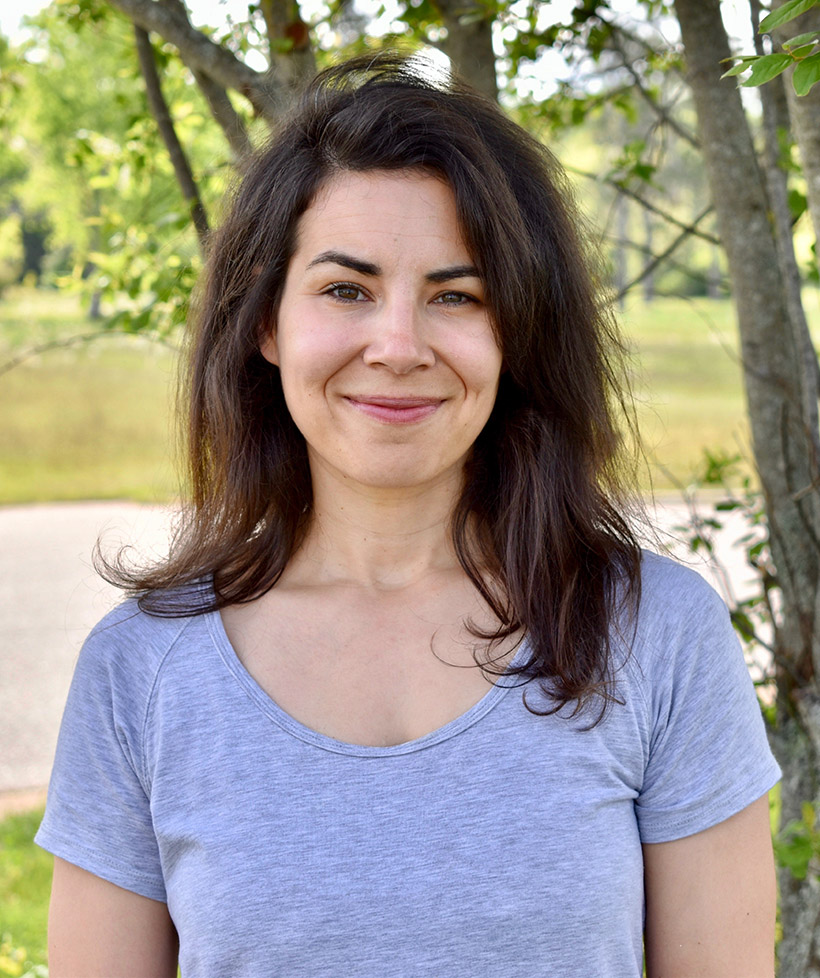 Courtney Gosselin
Courtney GosselinCourtney Gosselin was one of 25 students from Canada and the UK who worked on the COVID-19 Coping Study between March and August. Part of the study was letters people wrote to their past selves (pre-pandemic) and future selves (what they thought at the time would be post-pandemic).
Courtney Gosselin
“Find time for yourself, life will slow down, and that’s okay. Take time to learn lessons, take time to really appreciate everything. You are strong, creative and independent, which will all come in handy.”
- Anonymous, writing a note to their past self during the pandemic
Courtney Gosselin is a graduate student in clinical psychology at Acadia University. She’s doing her Masters-level research with Dr. Karen Blair and Dr. Diane Holmberg, and as COVID-19 has overwhelmed most of our lives, their research has moved in that direction as well. Dr. Blair and her colleagues embarked on a large-scale COVID-19 coping study. At the end of the survey, there were two questions – one was a message to a past self, before the pandemic began. The other, a message to a future self several weeks later.
The questions were inspired by a video made by Italian filmmaker Olmo Parenti called 10 Days Later. In the earliest part of the pandemic, when Italy was being hit harder than nearly any country in the world, Parenti asked Italians to record messages to themselves just ten days earlier – what did they wish they had known just ten days ago?
“What you might think is coming is not nearly what is coming. What is happening is much, much worse than what you thought it could be.”
- Anonymous Italian citizen, 10 Days Later video
The Italian 10 Days Later video was filmed in early March. At the time, it was intended to be a warning to the rest of the world. It was estimated that at the time, France and the United States were about 10 days behind where Italy was in the progression of COVID-19, and the hope was that people in those, and other countries, would see this and take the virus seriously.
When Courtney and her group began asking the two questions developed by Dr. Blair, it was much further into the pandemic. Like, a few weeks further into it, which in March and April was a fairly large passage of time in which an awful lot happened here in Canada. She and fellow Acadia student Abbey Miller developed a coding scheme to look at the more than 500 responses.
There was at least one person who advised their earlier self to “Buy Zoom shares, sell Air Canada, don't worry about toilet paper.”, but very few were so self-serving. What Courtney and her team were struck by was the overall tone of hope, the positivity, and the more optimistic and encouraging series of messages. Advice to take time for self-care, to slow down and enjoy the little things in life. The encouraging messages were ten times more common than the discouraging ones.
“This is a chance for you to connect with the part of yourself that thrives on solitude, thinking, listening to nature, watching the sun rise and set.”
While the messages to past selves were largely optimistic, the messages to future selves were a little different. A lot of them would fall into the category of “hey, self – is it over yet?” Says Dr. Blair, “none of us thought it would go on this long either. Now that we think about it, instead of asking them to write to themselves six weeks from now, we should also have asked them to write for six months, or a year, from now.” Some participants stayed in the study for four weeks, and often their future messages would be the same week in and week out – how are things NOW?
“As the world opens up, how do we cope with physical distance, the funerals that have been postponed and loss in general (not due to COVID sickness but impacted by its limitations)?”
Courtney and Dr. Blair say they would like to do another survey of this kind with a different set of questions to see if the optimism and hope that they saw back in March and April has remained. They would do it a little bit differently though, as logistically this one was a bit of a nightmare for their lab. Software, time zones, and other factors came into play and resulted in a group of students going into the lab almost every night to send out the surveys manually, from 6 pm in Newfoundland to 6 pm in BC.
It was, as a result, a very labour-intensive study to run. Especially for the students, like Courtney and the 24 others from Canada and the UK who worked on it between late March and early August. At the beginning, as the pandemic was just hitting Canada and the study was just beginning, they were running on adrenaline. The need to get something done, the need to find a way to help during the COVID-19 crisis, drove them to work longer hours and search for answers.
If they were to do it again now, would they have the same motivation? Would they feel the same urgency, almost a year into the pandemic? It’s tough to say – just as it’s tough to say whether the responses would have a similar tone today as they did back in April. As one participant said,
“Am I still being a positive person?”
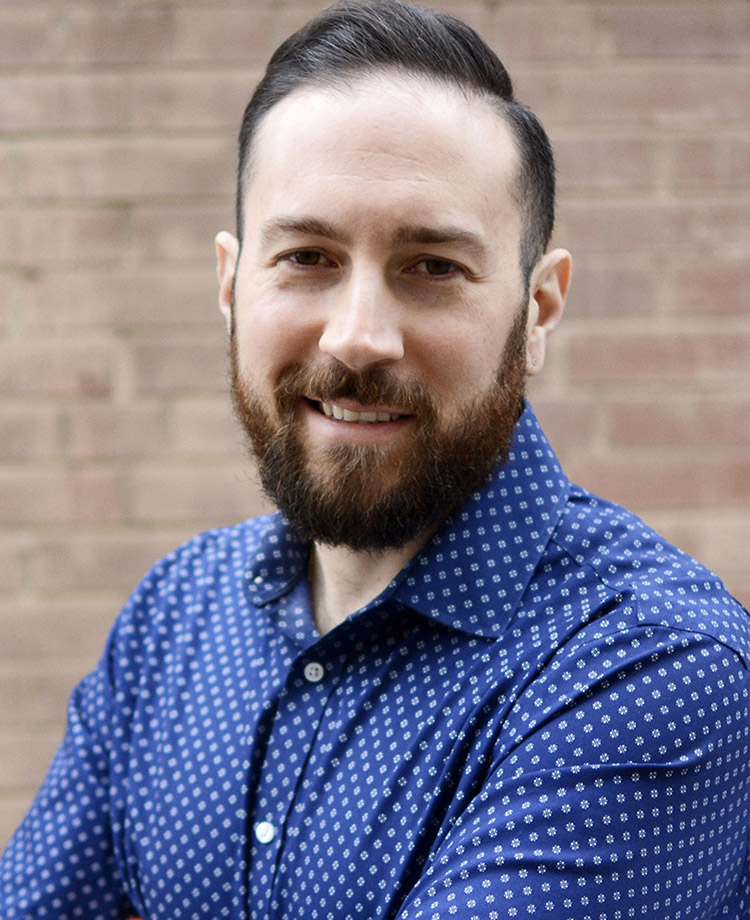 Jonathan N. Stea
Jonathan N. SteaThe proliferation of disinformation and misinformation online over the past few years has become more dangerous with the advent of the COVID-19 pandemic. Dr. Jonathan Stea, a clinical psychologist and an adjunct assistant professor at the University of Calgary, is one of two psychologists invited to join Science Up First, an initiative bringing together experts from every field to combat disinformation online.
Jonathan N. Stea
“That the outbreaks of Spanish influenza, which have given army officials some concern, may have been started by German agents who were put ashore from a submarine, was the belief expressed today by Lieut. Col. Phillip S. Doane, head of the Health and Sanitation Section of the Emergency Fleet Corporation. … 'It is quite possible that the epidemic was started by Huns sent ashore by Boche submarine commanders,’ he said. ‘We know that men have been ashore from German submarine boats, for they have been in New York and other places. It would be quite easy for one of these German agents to turn loose Spanish influenza germs in a theatre or some other place where large numbers of persons are assembled.’” (New York Times, ‘Think influenza came in U-boat’, September 19, 1918).
You can find that story on Page 11 of Dr. Steven Taylor’s book The Psychology of Pandemics: Preparing for the Next Global Outbreak of Infectious Disease. Conspiracy theories are nothing new. Conspiracies surrounding pandemics are nothing new. What has changed is the speed at which they are spread, and the maliciousness with which they are created.
Lieut. Col. Doane may have thought German U-Boat submariners were coming ashore to spread the flu in movie theatres, and his story was told to the New York Times. It was read by New Yorkers who may, or may not, have believed him. The fact that this opinion exists only in archival material and does not persist to this day, is indicative that either few people read it, few of them believed it, or both.
Lieut. Col. Doane’s theory was not posted to an 8-Chan thread, picked up by a Russian bot farm, posted to Facebook by sixty accounts, disseminated by dozens of questionable ‘news’ platforms, discovered by the President of the United States and tweeted to 90 million people, many of whom were eager to believe and spread the rumour.
This is where we live now, where disinformation and falsehoods can spread from one person to millions across the world in the blink of an eye. And in the time of a pandemic, this can be dangerous, destructive, and harmful in more ways than just fighting between friends and family members. It can put whole populations in greater danger than they need to be.
It is for this reason that scientists across Canada have come together to create the #ScienceUpFirst initiative. Dr. Jonathan N. Stea, a clinical psychologist and an adjunct assistant professor at the University of Calgary, is one of two psychologists who were asked to join the team. Along with Dr. Christine Chambers, Dr. Stea is providing his psychological expertise to combatting disinformation online – specifically, for , disinformation about COVID-19 and COVID-19 vaccines.
“It’s an ethical imperative for psychologists to promote evidence-based patient care and public health– so I’ve always been interested in things like pseudoscience and health-related misinformation. Calling that stuff out is one of our ethical imperatives.”
#ScienceUpFirst emerged from conversations between Timothy Caulfield, a professor of health, law, and policy at the University of Alberta, and Senator Stan Kutcher of Nova Scotia. Professor Caulfield has been researching online disinformation and how to debunk it for decades. Senator Kutcher, before becoming a senator, was the Department Head of Psychiatry at Dalhousie University. They got together to assemble a team of science communicators, epidemiologists, chemists, biologists, geneticists, bioethicists, infectious disease experts, and of course psychologists. Dr. Stea says,
“There is a lot that psychology can bring to the table. We’re trained extensively in science, we’re trained in critical thinking, and we’re trained to understand the ways in which we interpret information and the world more generally. I’ve personally applied these skills to communicate to the public through mainstream media channels, such as articles about tackling health-related misinformation, like how to address vaccine hesitancy and how to identify fake science news.”
This coalition of scientists is dedicated to debunking the misinformation that is out there now. They also want to do the same, as quickly as possible, after a new false narrative emerges online. And there are a lot of them – Bill Gates is microchipping you through vaccines, the numbers are being inflated to control people somehow, alternative medicine cures the virus, the list goes on. And on, and on, and on. Add to that the already loud and vocal anti-vaccination movement that predated the pandemic, and it looks like an uphill battle. But it’s one Dr. Stea is ready to wage.
“Science is an ever-evolving process, and sometimes there are disagreements between scientists. I think for the first time, science is being exposed to the public the way it has always been – as an iterative, evolving process. But for people who are unaware of that, sometimes it can be kind of jarring and it can leave people vulnerable to traps of misinformation. You’ll hear anecdotes, or testimonials on Facebook about how vaccines are extremely dangerous or how Bill Gates caused all this or something. And we want to take accurate, science-informed information and amplify that.”
The initiative is not just scientists railing against misinformation, it is designed for regular Canadians, and regular people around the world, to help amplify the message in the name of public health and protecting their communities.
Your brother-in-law posted online that the COVID-19 was engineered in a lab in China. Your former boss is constantly posting memes about the vaccine being unsafe and untested. Hank from high school is pretty convinced the virus itself is a hoax, meant to distract us all from Pizzagate. Go to #ScienceUpFirstFirst.com, the site that’s designed to help you in combatting these conspiracy theories and false information. They’re fully committed to this fight and want to provide you with the tools to join in as well so that you are not railing against misinformation alone.
Dr. Stea’s day job involves providing psychological treatment in a specialized interdisciplinary outpatient clinic for people who present with both substance use and psychiatric disorders. With the pandemic, he and his colleagues have helped people with these conditions adapt and cope with the additional stressful layer of COVID-related anxiety and uncertainty.. Social media, and the conspiracy theories it perpetuates, does not help. And the volume of these things is only increasing. And of course, that’s where Dr. Stea is spending a fair amount of his spare time.
In 1963, Republican Presidential candidate Barry Goldwater refused to distance himself from the John Birch Society, a powerful conservative group claiming that the bulk of the American congress, including President Eisenhower, were communist conspirators. Later the JBS would push the bogus claim that laetrile, a chemical compound found mostly in the seeds of apricots, was a cure for cancer. In 1964, Goldwater was defeated in one of the biggest landslides in American history, and the John Birch Society was forced out of respectable Republican circles
In 2019, Marjorie Taylor Greene voiced support for the theory that the school shooting at Marjorie Stoneman Douglas High School was a “false flag” attack. She also advanced the conspiracy theory that there was a video – though she hadn’t seen it herself because it does not exist – circulating on the “dark web” of Hillary Clinton cutting off a young girl’s face and wearing it herself as a mask while drinking that young girl’s blood. In November of 2020, Marjorie Taylor Greene was elected to Congress as a Republican Representative from Georgia.
Much of this, of course, stems from Donald Trump who was the biggest source of disinformation and conspiracy theories in the world. Disinformation about COVID-19 is estimated to have declined by 73% on Twitter since Trump had his account disconnected by the platform. And so now may be the perfect time to strike. If genuine science and fact can flood the internet at the same pace as false stories can be spread by trolls, then perhaps we have a chance to stem what the WHO calls a “global infodemic”.
It’s an uphill battle, but it is one that must be waged. Dr. Stea and his colleagues are ready to take it on – and they’re in it for the long haul.
To join the #ScienceUpFirst movement, follow @ScienceUpFirst on Twitter, Instagram, and Facebook, and please visit www.ScienceUpFirst.com to learn more.
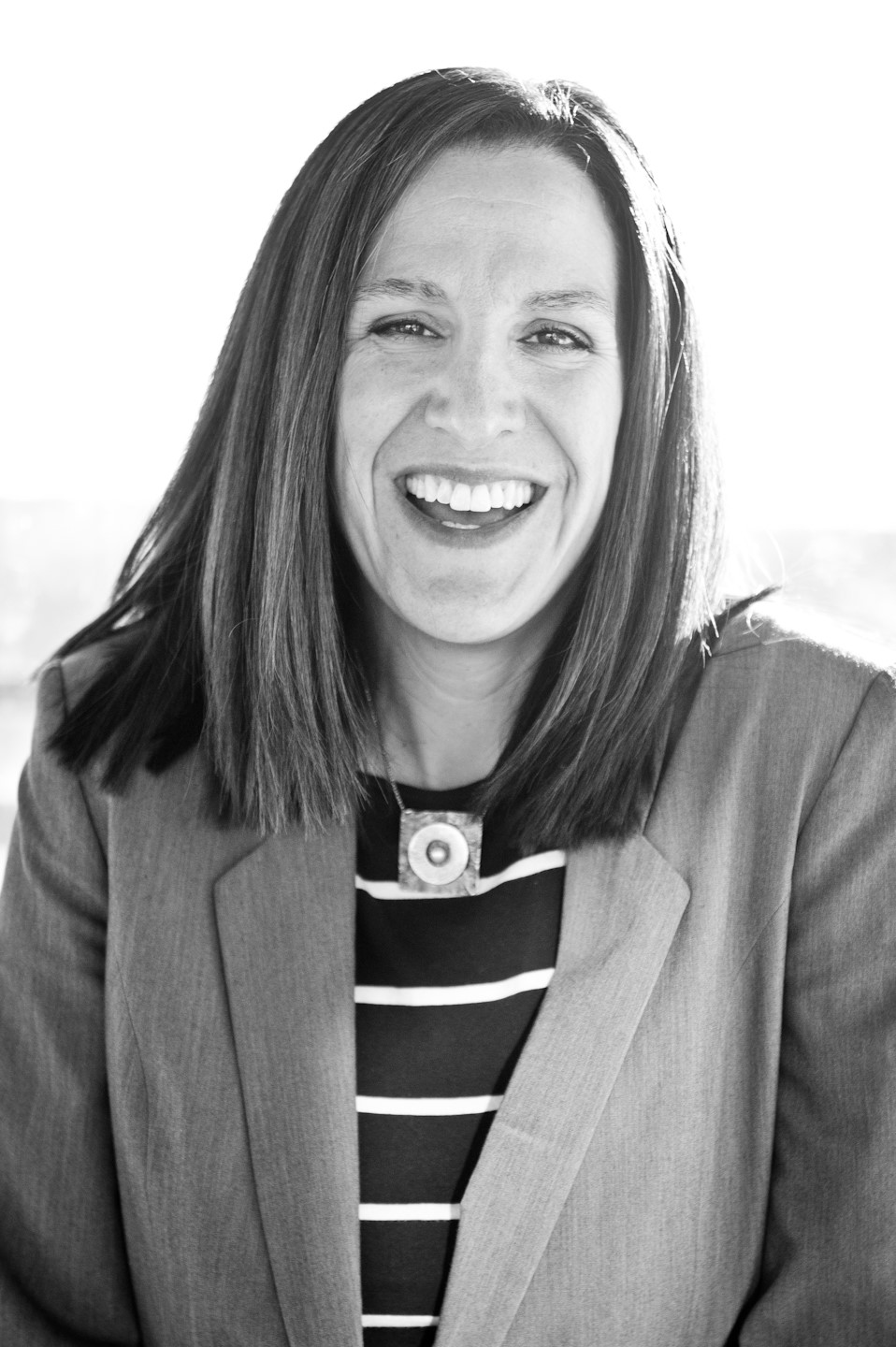 Adrienne Leslie-Toogood
Adrienne Leslie-ToogoodDr. Adrienne Leslie-Toogood works with elite athletes in Manitoba. When the pandemic hit, those athletes were spread out across the world, some unable to return home. In response, Dr. Leslie-Toogood launched the #TerrificTuesdays Zoom therapy sessions, a podcast, a book club, and much more to connect athletes across levels, disciplines, and the world.
Adrienne Leslie-Toogood
“I learned what it’s like to do something for the last time and now know that it’s not about doing it perfectly but about the privilege of getting to do it and staying connected to my why.”
- Leanne Taylor, Canadian paratriathlete, #TerrificTuesdays
Dr. Adrienne Leslie-Toogood is sitting on a Bosu ball during our Zoom chat. This suddenly seems like a pretty great idea – a way to maintain a little bit of physical fitness during that portion of our days when we are most sedentary in front of our computer cameras. This may not have been Dr. Leslie-Toogood’s motivation for choosing the Bosu ball – there is a perfectly serviceable office chair right next to her – but that chair has been commandeered by a rather presumptuous dog. The presence of a dog enhances any Zoom call, and so this is a perfectly acceptable arrangement.
The pandemic has forced us all to figure out acceptable arrangements, the kind we might not have imagined a year ago. Very often those new arrangements turn out to be positive, and sometimes they break new ground. Such is the case with Dr. Leslie-Toogood’s work, and with her clients, many of whom are elite athletes across Canada and, currently, around the world.
Usually, those athletes are in their own little bubbles (not the COVID kind of bubble, but rather a “hardcore athletes striving for the same goal” bubble). Olympic athletes rarely interact with NCAA divers. Top-level gymnasts don’t tend to run in the same circles as paratriathletes. Even within the Olympic community there’s little crossover between say, cyclists and water polo players. That is, until now – when Dr. Leslie-Toogood and her team initiated #TerrificTuesdays, to connect elite athletes from all different sports, and all different levels, to support one another during the pandemic.
This involves weekly Zoom calls with NCAA players whose seasons have been canceled, Olympic hopefuls who missed out on a chance of competing at Tokyo in 2020, internationally ranked table tennis players whose tournaments have been delayed time and again, and basketball players in a tight bubble in Europe where their teams are located.
Those calls have been extraordinarily productive, as elite athletes from all walks of life connect virtually over great distances and share their experiences and their wisdom with one another. Dr. Leslie-Toogood and her team collate some of that wisdom and share it on the Canadian Sport Centre Manitoba Twitter account, @cscmanitoba, under the hashtag #TerrificTuesdays.
“We are all trying to be excellent people, but the path to that excellence is unique.”
- Michelle Sawatzky-Koop, Canadian volleyball player, #TerrificTuesdays
The #TerrificTuesdays program started to invite in outside guests, like dieticians to provide cooking lessons. Before long, it was being replicated in other programs across Canada as the athletes involved found it so helpful and productive. Now an expert on Zoom technology, Dr. Leslie-Toogood decided to expand her technological prowess even further.
She started a podcast.
Heroes In Our Midst is available - on her website www.drtoogood.com and features interviews with dozens of incredible Olympic and Paralympic athletes, coaches, referees, athletic therapists and more. What Dr. Leslie-Toogood wanted to do was to tell the story about the human being behind the performance. She says, “sport is not about how fast you run but about who you become in the process of trying to run fast.” The podcast series is really about who these athletes have become, as much as it is about their sport and their process.
“I love the freedom you get from riding a bicycle. I’m free to go explore anywhere in the world, anywhere there’s a road. I can go to the mountains. I can go find beautiful places. I can go fast and push myself. I really just love cycling for that.”
- Leah Kirchmann, Olympic cyclist, Heroes in Our Midst
Then there’s a book club for athletes – one of the books they read was Win In The Dark by Joshua Medcalf. Dr. Leslie-Toogood says “for me it was a metaphor for the time. So many athletes are training without anyone watching, doing a lot of work in the dark”. Like everything else, a book club is a tool for conversation. There’s more, but at this point it would be easier to list everything she is not doing than everything she is doing!
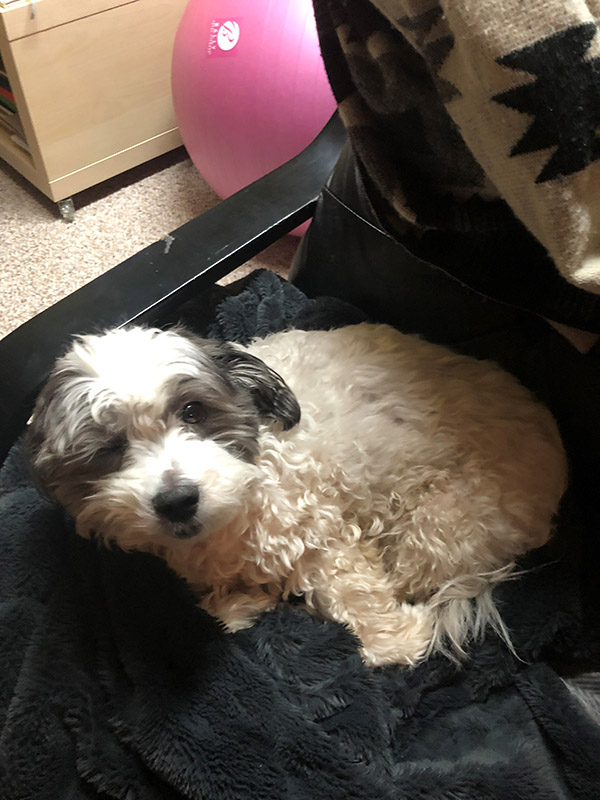
It’s all about creating community and connection. Dr. Leslie-Toogood has connections with athletes all over Manitoba and the world, but until now those athletes had little connection with one another. Now they’re dealing with a devastating global pandemic, the postponement or loss of some of their dreams, and the struggle to stay motivated while isolated or in quarantine. But they’re not dealing with those things alone. They are connecting with others going through similar experiences and sharing their stories in an effort to help as many people as they can.
One hopes that when life returns to a semblance of normality, some of these things will remain. It would be great if #TerrificTuesdays stuck around, and if the podcast series continued (there is a second season planned for April, featuring people in other disciplines with whom Dr. Leslie-Toogood works as well. Firefighters, teachers, RCMP, and more). And who can’t get behind a good book club?
One thing that will almost certainly evolve before the pandemic ends, however, is the relationship between Dr. Leslie-Toogood, her assertive dog, her comfortable office chair and her less-comfortable Bosu ball.
@cscmanitoba – twitter handle #TerrificTuesdays
https://cscm.ca/ - Canadian Sport Centre Manitoba
https://drtoogood.com/heroes-in-our-midst/ - Podcast
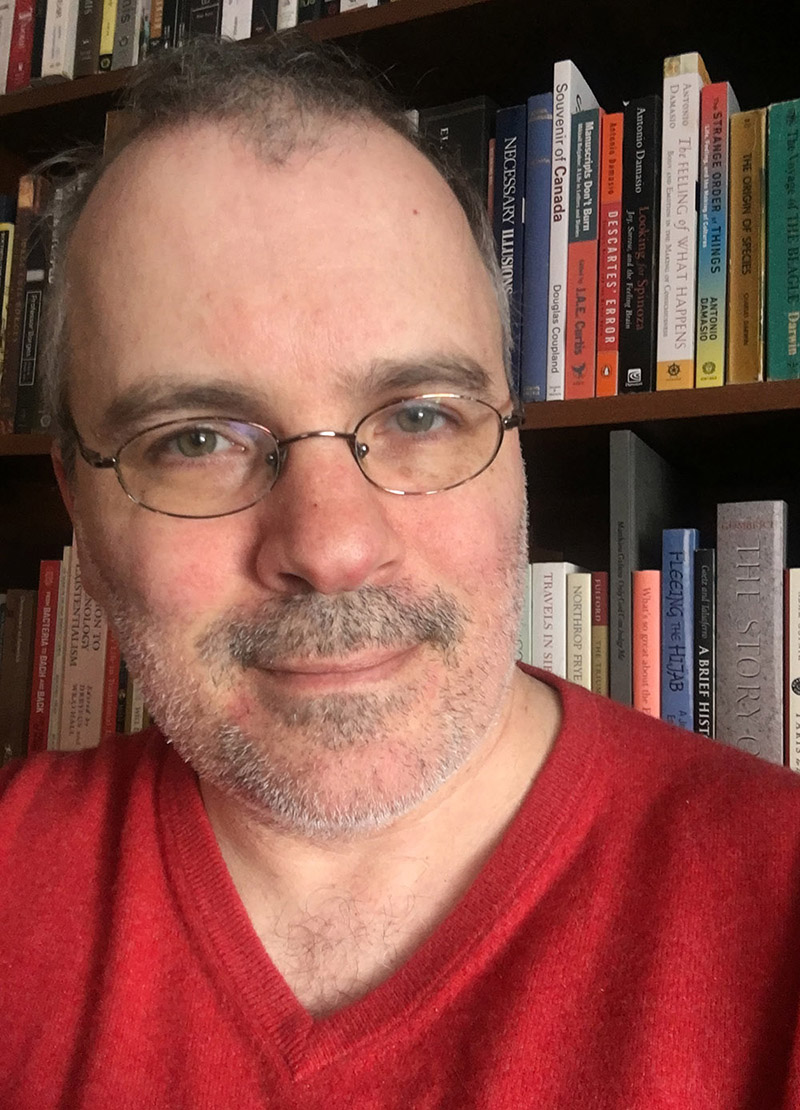 Andrew Ryder
Andrew RyderDr. Andrew Ryder helped prepare the Fact Sheet ‘Why Does Culture Matter to COVID-19’ for the CPA. An Associate Professor in the Psychology department at Concordia University, Dr. Ryder self-identifies as a ‘cultural-clinical’ psychologist, and the intersection of culture and the pandemic is in his wheelhouse.
Andrew Ryder
Why have some countries dealt with the COVID-19 so much better than others? How is it that others have fared so very, very badly? It’s not always as simple as good government vs. bad, or effective messaging vs. chaotic messaging. More often, it comes down to the people themselves. Do they tend to be rule-followers? Is there societal pressure to take public health seriously, and how do citizens of those countries respond to that pressure?
These are the type of questions that are of particular interest to Dr. Andrew Ryder. An Associate Professor and, currently, Associate Chair in the psychology department at Concordia University, Dr. Ryder self-identifies as a ‘cultural-clinical’ psychologist. His research is largely about how cultural context shapes mental illness like depression and anxiety. With COVID now, there are some new avenues to explore.
“I’ve turned my attention to whether culture may be involved in shaping physical illnesses, which we’re accustomed to seeing as strictly biological. Rather than retooling myself as a COVID-19 researcher, what I’ve been doing is applying the cultural-clinical framework to research that is being done by many of my colleagues.”
Of course, no country is a cultural monolith. Within every larger society are smaller cultural groups, each with their own ethno-cultural backgrounds, residing in different parts of the country and having different socio-economic statuses. And the difference between those groups in terms of combatting the pandemic can be stark, even within the borders of the same country. And on an even smaller scale, each individual within each community differs on their belief, approach, and conformity to the larger group ethos.
But let’s begin on the “macro” level – how might culture be involved in shaping physical illness?
“It’s an infectious disease, and an infectious disease that is socially transmitted. You have to get it from someone. Many of the things we are being told to stop the spread are behavioural. For example, wearing a mask. You might say ‘well that’s the same behaviour everywhere’, but it isn’t really. In Japan, Korea, Taiwan, it’s doing that thing you always do even when you just have the sniffles. For another cultural group it might be doing something absolutely novel.”
Then on the “meso” level – how might smaller cultural groups within those larger societies approach this?
“We know of some cultural groups where [mask-wearing] immediately seems like an imposition on liberty. Like there’s some kind of core cultural value that is violated by the government telling you to do something unusual. Your psychological state is different when you’re doing something that feels normal versus abnormal under the circumstances.”
What ends up happening, says Dr. Ryder, is that while we all feel like we’re doing the same things – mask wearing, social distancing – those things actually play out very differently for different people. He has spoken to some clients who were into the second week of lockdown before they even knew there was a lockdown. Computer programmers who lived in their basement and had their lives changed very little. Then there are others whose entire way of life was upended overnight.
So what, given the significant differences across cultures on a large scale and a small scale, should be done? Dr. Ryder co-authored a fact sheet for the CPA on Culture and COVID-19 with his colleagues Dr. Maya Yampolsky, Dr. John Berry, and Dr. Saba Safdar, that sought to answer that question. (‘Why Does Culture Matter to COVID-19’)
“An unprecedented number of people worldwide are concerned about the same disease and are experiencing broadly the same distancing measures. As such, there may be a temptation to focus on the similarities. At a minimum, policymakers, healthcare workers, and the public at large should keep in mind that the pandemic experience may be very different for different people. These differences are shaped by the society in which one lives, the communities of which one is a part, and culturally-shaped individual variations. Complicating matters, appreciation for difference does not mean treating all responses equally when it comes to effectively mitigating a pandemic. Clearly, some cultural patterns are more effective than others.”
Cultural differences seem to be enormous factors both in containing the spread of COVID-19 and in accelerating it. Some countries are doing exceptionally well, others not so much. And no one factor can determine why but Dr. Ryder points to a few factors. One is the “tightness” of a society, meaning the level of uniformity and narrowness in that society’s understanding and expectation is when it comes to rules, norms and customs. This seems to correlate directly with the degree to which that society accepts and implements public health guidelines. Another is “relational mobility”, which is a measure of how much people move around, and especially how much they move around between various social groups. This tends to correlate with the speed of the spread in those societies.
Never before has there been an event like the COVID-19 pandemic that can highlight the cultural differences in communities, cities, regions, and countries around the world, in terms of how they respond. For self-identified cultural-clinical psychologists like Dr. Ryder, that presents a whole new fascinating series of studies upon which to build his understanding and his work.
His attention is now turning toward cultural variations in how we will recover. Who will bounce back first, and who will bounce back better? How will the logistics of vaccines be handled, and how will those logistics intersect with public concerns about those vaccines? More than anything else, Dr. Ryder’s interest is in the long term. How effectively will different people in different societies respond to the crisis, learn from it, and be better prepared down the line for any future similar outbreaks?
Some of those questions are being answered right now, others will take some time before a larger picture emerges. In the meantime, each of us is fighting a devastating global disaster in our own way. It’s the difference in the ways each of us fight it that could be most illustrative in mitigating potential future damage the next time something like COVID-19 occurs.
 Ian Nicholson
Ian NicholsonDr. Ian Nicholson is the Manager for Psychology and Audiology at the London Health Sciences Centre (LHSC), and a former President of the CPA. As with most hospitals, the LHSC has had to change many of their practices since early 2020, including the way they deliver instruction as a teaching hospital.
Ian Nicholson
It is a tough time to work in a hospital. Hospitals are, of course, one of the first places to have felt the effects of the COVID-19 pandemic. Even those that are not currently nearing capacity are well aware that an increase in COVID-19 cases in their community could suddenly make beds scarce. Across Ontario, they are planning ahead for this by ensuring there are beds available, all the while dealing with patients in as safe a manner as possible and supporting vaccination clinics for the rest of the community.
London Health Sciences Centre (LHSC) is one of those hospitals. In addition to juggling advance planning, vaccination, and the safety of staff and patients, it has a few other balls in the air as well. An acute care teaching hospital, they have changed the way instruction is delivered across the board. They are also a children’s hospital, and provide a broad range of other physical and mental health acute care services, all of which have had to make major alterations as a result of COVID-19.
Much of this comes under the purview of Dr. Ian Nicholson, the Manager for Psychology and Audiology at LHSC. While COVID-19 in London was not, at the time we spoke, overwhelming the hospital and pushing it to capacity, LHSC was accepting patients from elsewhere in the province where the strain was more severe, and the possibility that such a thing could happen in London was always in the back of everyone’s mind. This means that Dr. Nicholson has to perform a delicate balancing act between keeping his staff safe, both physically and mentally, and providing psychological services to the patients that come through his hospital. Said Dr. Nicholson,
“The primary difficulty from a management standpoint is the balancing of the need to provide psychological services to patients in a way that is both safe to the patients as well as safe to staff. Given the broad ways in which psychologists work with patients in acute care hospitals, that means a broad range of strategies that have to be used to keep everybody safe during this pandemic.”
Those strategies are myriad, and most involve virtual technologies. Students who do not require work hours in a hospital to graduate are not going in. Psychology Residents are being trained to provide care virtually, often by teachers who are themselves just learning how to deliver virtual care. The supervision of residents and their educational activities are also being done virtually. The team of psychologists is still going into the hospital itself for work, but providing much of their expertise virtually, from offices elsewhere in the building.
Dr. Nicholson still goes in to the hospital every day. He gets screened at the front doors, just like the rest of the staff and the patients who enter the building. He spends the bulk of the day in his office, as he did before. The biggest change he sees in his own job is that he misses the casual discussions that would occur thanks to a chance meeting somewhere in the hospital – walking down the hallway, standing in the cafeteria line, those quick chats about a new idea or a new approach.
“In management, very often you have the meeting, but then you also have the chat before the meeting, or the meeting after the meeting to follow up on one of the items. Those things aren’t happening as much now. When you have these virtual meetings (we use WebEx at my hospital) there’s very little opportunity for schmoozing or chit-chat. This makes it more difficult to have the conversations you normally would around other things.”
Much like psychologists in other hospitals, one of the things Dr. Nicholson is seeing in staff is the impact this pandemic is having. Not that they are putting in longer hours than they normally do, but the added layers of protection mean that every procedure, every intake, is a little more difficult now. Constantly thinking about the pandemic takes its toll, as does being prepared for a wave that could come at any time. And, like elsewhere in the province, the pandemic is affecting both the home and work lives of all staff. Thankfully, he believes we are rounding this corner with something of a light at the end of the tunnel – a light that starts at the London Health Sciences Centre.
At the direction of the Government of Ontario, the hospital has set up a vaccination clinic, and they are vaccinating people as quickly as they can, as much as their supply allows. Based on direction from the Ministry of Health, the health units are prioritzing staff and residents of long-term care facilities, but are hoping that with more vaccine supply they can move on to the hospital staff and physicians shortly.
When the end of the pandemic does come, it will be thanks to the efforts of hospitals like London Health Sciences Centre. On that day, it will still be tough to work in a hospital. But rather than being the place where they watched the pandemic begin, they will be able to look at their workplace as the place where it began to end.
 Chelsea Moran
Chelsea MoranChelsea Moran is a PhD student in Clinical Psychology at the University of Calgary. Along with her supervisor Dr. Tavis Campbell, the bulk of her research has been about behavioural medicine – adherence to health behaviours. That research took a fortuitous turn when the pandemic began in early 2020.
Chelsea Moran
“People are more likely to adhere to physical distancing behaviours when their motivations were that they wanted to protect other people, and they wanted to protect themselves. That they want to contribute to the overall well-being of their community. Given that information, although we can’t say for sure, theoretically public health messaging that incorporates those pieces can increase adherence.”
Okay…neat. So public health messaging should focus on keeping the individual safe and keeping their community and everyone around them safe. Seems reasonable. But what is the alternative? What other messaging could there possibly be during a global pandemic if it isn’t to keep your friends and neighbours and yourself safe from the virus? It turns out there is a lot more nuance that that!
Chelsea Moran is a PhD student in Clinical Psychology at the University of Calgary. Along with her supervisor Dr. Tavis Campbell, the bulk of her research has been about behavioural medicine – adherence to health behaviours. Before March of 2020, that meant things like finding ways to promote physical activity and encourage sticking to medication regimens among people with chronic illnesses, like heart disease.
When the pandemic hit, Chelsea and Dr. Campbell thought that the work they had been doing on adherence to personal health behaviours could be applied to adherence to public health behaviours. What makes a person stick to a plan? What motivates them to continue doing the thing that will keep them alive? And how does that translate from the individual level to a community, public space?
Chelsea’s focus is now on the factors that promote adherence to COVID-19 public health guidelines, like physical distancing, mask wearing, and the like.
“We’re looking at individuals, and their day-to-day decision-making processes surrounding these things, and then using that to inform some of the wider public health campaigns that everyone is being exposed to.”
In their research, Chelsea, Dr. Campbell and collaborators Dr. Adina Coroiu and Professor Alan Geller discovered that adherence to physical distancing guidelines was motivated by two main factors. In a survey of more than 2,000 people globally, they found that the desire to protect oneself and the desire to protect other people were (surprisingly to the researchers) almost equally motivating factors.
So back to the messaging. Showing people that wearing a mask and sticking to a tight bubble keeps them, and other people, safer seems to be the way to go. This messaging can work. But what are the alternative messages? What might the media, public health officials, and politicians be saying that doesn’t work? What other message IS there?
What Chelsea has been seeing, and what Dr. Campbell has been showing in some of his own work, is that much of the public messaging can sometimes have a fear-based component. There’s a big difference, as Chelsea points out, between a message that says, “wearing a mask makes you less likely to infect your neighbour”, and “not wearing a mask could kill your neighbour”. The message often is that if the guidelines are not followed, the cases will go up and there will be more death as a result.
While fear can be a motivating factor in the short term, in the long term it doesn’t help. This is true of individual health behaviours as well. It’s much easier to get someone to be healthier by emphasizing the positive benefits to their well-being that come from exercise, rather than telling them “if you don’t exercise you will have a heart attack”.
Another thing Chelsea, Dr. Campbell and their team discovered in their survey was one of the sources of motivation to break the rules – to go against public health guidelines. It wasn’t surprising, but it was good to have it quantified in data, that loneliness was a significant factor in people eschewing physical distancing rules. Chelsea lives alone, and she has been feeling that loneliness as well. Her family is in Ottawa, her partner is in Toronto, and while they connect on Zoom and Skype and FaceTime and all that, it’s tough not to feel a little disconnected.
Chelsea’s practicum placement is at a hospital – one in which she has never set foot since she provides clinical services virtually or over the phone. She has met her clinical supervisor in person once, in September. Chelsea has to stay in Alberta, because that’s one of the provincial rules – even virtually, you must physically BE in Alberta to see clients in Alberta. And so she does. She says she’s grateful for the way the University of Calgary has made online learning accessible so quickly, and once she’s done,she may move to Toronto to be with her partner. For now, they make do.
“We have a standing phone date. He has about an hour commute on the way home from work, so we connect over the phone, catch up, and debrief on how our days went. And then FaceTime and Zoom are good because they provide that visual feedback, the non-verbal support from people.”
Chelsea is staying put. As a trainee, she’s seeing people via virtual platforms, doing school online, and generally coping with a solitary existence for the time being. She wants to keep herself safe, and wants those around her to stay safe as well. That motivation thing is really working!
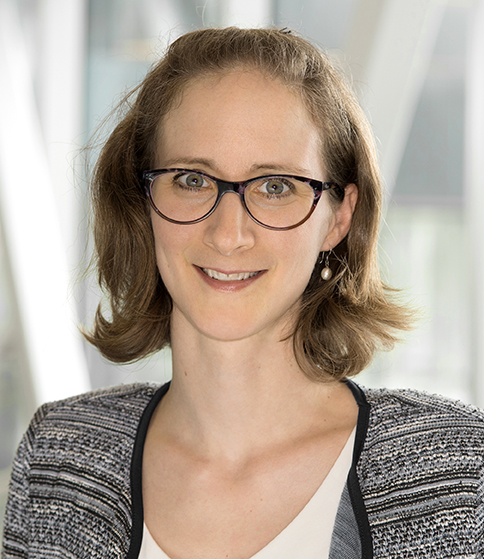 Gabrielle Pagé
Gabrielle PagéDr. Gabrielle Pagé works with people experiencing chronic pain. During the COVID-19 pandemic, she and her team have had to pivot to a number of different forms of care. They have discovered some expected results among those suffering from chronic pain, but also some real surprises.
Gabrielle Pagé
“Chronic pain has always been one of the more neglected areas within the health care system. Within the context of the pandemic, we didn’t expect that to improve – rather, the opposite.”
Dr. Gabrielle Pagé is an assistant professor in the Department of Anesthesiology and Pain Medicine at the Université de Montréal. She is also a clinical psychologist working out of the Montreal General Hospital specializing in chronic pain conditions. When COVID-19 struck, Dr. Pagé and her team decided now was the time to move more toward an advocacy role, to inform the public about chronic pain, and to make this a larger part of the overall health care discussion.
They began by launching a Canada-wide survey of people experiencing chronic pain, and found out that over the first few weeks of the pandemic and the lockdown, 2/3 of them reported that their pain was getting worse. This was in April-May, right as the first wave was rising across all provinces. The idea that most people’s chronic pain would get worse at this time was an expected result given the magnified difficulties to access pain treatment, increased stress and social isolation.
What was less expected – and almost shocking for Dr. Pagé and her team – was that a small group, 5-10% of respondents, actually reported that their pain had been lessened during this time.
Stress is a big predictor of the severity of chronic pain. When patients are stressed out, they experience more pain – more pain leads to more stress, which leads to…well, you get the idea. So it was very surprising that such a large number of people reported an improvement. Maybe they were going for walks, taking the time to connect with family members, or were laid off from a job that had been causing the bulk of their stress. Dr. Pagé can’t say what the cause is, or was, but she is determined to find out.
As I’m speaking with Dr. Pagé, her team is wrapping up a follow-up study to the one they conducted in May. Will the outcomes be similar, or will something new present itself? They should know soon enough. Also, as we’re speaking, Montreal is entering Day One of the big winter lockdown. Curfews in place, all non-essential businesses closed, and the multidisciplinary pain clinic in the Montreal General Hospital is deciding how to move forward.
Dr. Pagé’s clients, for the most part, have been receptive to virtual therapy. Even the group therapy programs which were a concern seem to have adapted well.
“The social bond, the connection that they make and just being around other people who get what it’s like to have pain every day, is one of the central elements of group psychotherapy in chronic pain. So we were wondering how that would translate into a virtual format, being able to see people only through a screen. We’re doing a qualitative research study around this. And while it’s very preliminary, so far it appears that the screen is not a barrier for them to create bonds between one another.”
Because of the nature of the work, however, many of Dr. Pagé’s clients either don’t have access to computers, phones, or tablets – or are unable to use them. For this reason, the clinic has moved to a more hybrid form of care. Group sessions and many individual meetings are still conducted online, but for those who are unable, or uncomfortable doing so, the clinic remains open for in-person masked and distanced visits. While it`s great to be able to offer this service, it`s quite a challenge to demonstrate presence and empathy during therapy through a mask and face shield!
This means Dr. Pagé still goes into the hospital, in one of Canada’s COVID hotspots. She gets screened for symptoms at the door goes through the protocols every time and then she goes home to an 8-year-old who is, at the time of this writing, doing virtual schooling, and a 4-year-old boy going to daycare.
It can be a demanding situation. Thankfully, Dr. Pagé does not experience chronic pain herself. But she is doing everything she can to collect data and get the message out. It’s stressful to have pain. And it`s painful to be stressed. There is a vicious cycle there, and one that is under-recognized in the overall health care system. A system that is starting to realize, more than ever before, where all those gaps lie.
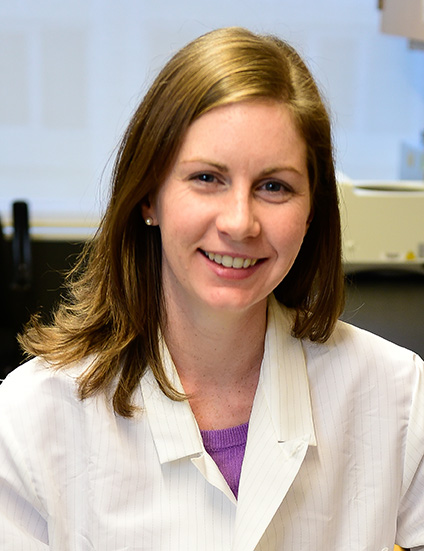 Jenn Gordon
Jenn GordonDr. Jenn Gordon is an associate professor at the University of Regina, and a Canada Research Chair in the bio-psychosocial determinants of women’s mental health. A study she conducted at the beginning of the pandemic identified a major gap in how women in academia were faring during the pandemic compared to their male counterparts, especially among those with young children.
Jenn Gordon
The pandemic, and the resulting lockdown, has not affected everyone equally. This is true across nearly every demographic, including the most highly educated among us. In a survey of almost 1,000 academic faculty members, it was found that parents of young children were less productive and worse off all around – especially, and most significantly, women who were parents of those young children. Women like Dr. Jenn Gordon.
Dr. Gordon is an associate professor at the University of Regina, and a Canada Research Chair in the bio-psychosocial determinants of women’s mental health. She is also the mom of three very young children. Her husband is an accountant. That meant that when the pandemic first started, causing lockdowns back in March of 2020, Dr. Gordon’s husband was in the thick of a suddenly more complicated tax season.
With her husband working long hours preparing taxes, their children gravitated toward Mom – even though Mom had a huge amount of work to do herself. In addition to her work with the University of Regina, the research she does on the effects of estrogen on the mood of menopausal women, and her work with the Women’s Mental Health Research Unit, Dr. Gordon is also the editor for the Health Psychology and Behavioural Medicine newsletter at the CPA. It was the section newsletter that sparked the idea for this study.
Dr. Gordon and Dr. Justin Presseau, the Chair of the Health Psychology and Behavioural Medicine Section, were discussing article ideas for the newsletter. Dr. Gordon says,
“I suggested a piece that talked about academics, and the tough time that faculty are having. Particularly around parenthood, and juggling having kids at home while working and that sort of thing. [Dr. Presseau] suggested that instead of just a piece, why don’t we survey profs across Canada and ask how they’re doing. So we did.”
Almost 1,000 professors responded to the survey, and many of the results were as expected. Most experienced a decrease in work satisfaction, in productivity and publications and grant submissions – with data collection being totally on hold at that time. What was more surprising however, was the size of the gap in those areas between academic faculty who had kids under the age of 13, and everybody else. And then the even bigger gap between men and women who were parents to those young children.
Women were worse off compared to men. Fewer grant submissions, fewer first-author publications, and an ever-widening gap in work satisfaction. Dr. Gordon acknowledges that this survey represents only a slice in time, a snapshot of where we were when the pandemic and the lockdowns began. A follow-up study is in the works, to see whether these effects diminished over time or increased. Her situation today hearkens back to concerns Dr. Gordon had when she first decided to become a researcher several years ago – the idea of work-life balance.
“Could I have a family if I was a researcher, would I have to give up my life? I was always flip-flopping, but over time I decided that I really love research, and the choice became clear.”
While she found that work-life balance soon after embarking on a career in research, specifically research into hormone levels and estrogen levels and how they affect the mood of menopausal women, the pandemic has altered that balance significantly – both for the participants in her survey, and for Dr. Gordon herself. But it has also provided her with an interesting, and timely, research study that, depending on how long the pandemic lasts, might produce more studies down the road on academic faculty, gender disparities, and work-life balance for parents of young kids. Parents like Jenn herself.
 Steven Taylor
Steven TaylorWe kick off Psychology Month 2021, Psychology And COVID, with a profile of Dr. Steven Taylor. Dr. Taylor’s book ‘The Psychology of Pandemics: Preparing for the Next Global Outbreak of Infectious Disease’ was published in October of 2019
Steven Taylor
“I knew a pandemic was coming, we all did. But I didn’t think it would be quite so soon.”
When Dr. Steven Taylor says “we all” knew a pandemic was coming, he means infectious disease experts, world health authorities, epidemiologists and mathematical modelers - and psychologists like him, who work in this space. He does not mean the rest of us – the general public who were, for the most part, blissfully unaware that such a global disaster was looming. Those of us who thought of pandemics and epidemics as something that devastated one part of the world while staying mostly contained to that region. Ebola, SARS, H1N1 – we’ve lived through those and, as regular Canadians, they haven’t changed our lives a whole lot.

This time, the pandemic has changed our lives. And although he saw it coming, Dr. Taylor was not exempt from the disruption. Of course clinical work, teaching, research, and interviews have all been moved online. This is something for which Dr. Taylor’s unit was better prepared than some others – but it is his leisure time passion that may have taken the biggest hit. He loves scuba diving and super-macro photography. In December, when news of the pandemic first broke in Wuhan, he was in the Galapagos taking extreme close-up portrait photos of colourful sea slugs and other marine life. Thankfully, there is some interesting marine life to photograph off the coast of BC, but those opportunities are understandably fewer and farther between than they once were.

Dr. Taylor’s initial publisher was one of us regular people in the sense that they thought of a global pandemic as an ethereal, far-off concept. When he wrote his book The Psychology of Pandemics: Preparing for the Next Global Outbreak of Infectious Disease, his American publisher rejected it. Who wants to hear about some unlikely hypothetical catastrophe anyway? Thankfully, a second publisher thought there was some value there and agreed to publish the book. It came out in October. Of 2019.
It is the first comprehensive look at the psychology behind every aspect of a pandemic. The initial public response. Panic buying. Conspiracy theories and xenophobia. Adherence to, or refusal to follow, public health guidelines.
“What really surprised me was that all the phenomena that had been described previously unfolded almost like clockwork throughout 2020. It’s one thing to synthesize the historical literature and say X, Y, and Z are what happens – it’s a completely different thing to see those things happening in real time. That’s the astonishing thing for me – that everything that has happened before is happening during this pandemic, except on a grander scale and faster.”
Dr. Taylor points to the 24-hour news cycle, social media, and the fact that we are all digitally interconnected as the reasons for the acceleration in behaviours humanity has seen before. There was a major backlash against a public mandate to wear masks back in 1918 during the so-called ‘Spanish Flu’ outbreak. There were conspiracy theories during a Zika virus epidemic a few years ago that never really went away, and are being recycled today as the conspiracy theories we see pop up on our Facebook timelines related to COVID. All that was old is new again.
“There’s a very interesting article from the New York Times in 1918 where they cited one of the health authorities. He thought there was some credence to the theory that the ‘Spanish Flu’ was being caused by German U-Boat submariners coming to shore in Manhattan, getting out of their U-Boats, and going into cinemas to spread germs.”
It is stories like this, and interviews with epidemiologists and disease modelers, that convinced Dr. Taylor that The Psychology of Pandemics was an important endeavour. Those interviews, and those stories, resurfaced in 2018 with the centenary of the 1918 flu pandemic. As he absorbed those stories he realized that a plurality of infectious disease experts believed that there would be a global pandemic within the decade. And that it would be a flu, likely caused by a corona virus. Dr. Taylor also recognized that there was a surprising lack of psychological literature on the subject.
“It’s all psychological. Psychology is essential to the spread of these diseases – that is, people choosing to travel – and also essential to containment, because all containment measures require people to do agree to do stuff. Agree to wash your hands, to cover your cough, to get vaccinated, to wear a mask, to maintain physical distancing.”
Dr. Taylor and his team have, of course, been staggeringly busy since the first mention of the virus in Wuhan, and have been studying the psychology of COVID-19, specifically, since December. They have published 6 or 8 papers, and have another 5 or 6 under review (it’s tough to remember exact numbers when you’re doing so many!)
“There has been more research conducted on pandemics in the past 12 months than has been conducted for all other pandemics in the history of human existence.”
There is now enough material for a second Psychology of Pandemics book, describing how all the phenomena we see are interconnected. From vaccination non-adherence, to mask rebellion, to disregard for distancing, to COVID-related emotional distress, excess alcohol consumption, and general coping during lockdown. None of which is particularly new, but all of which has a new context and better data and can build on the historical findings laid out in the first volume.
Dr. Taylor believes that people are resilient, and that we are not going to be wearing masks for the rest of our lives or becoming germophobes. We will one day get back to doing the things we love to do, even though that is likely to come too late for him to take his scheduled scuba diving trip in South Africa in June.
There will, however, be another global pandemic. Hopefully it is decades away, and not two months after the release of Volume 2 of The Psychology of Pandemics. But when it does arrive, we will be better equipped, as global citizens, to handle it. We’ll be more prepared thanks to the work Dr. Taylor did putting together the historical information last year, and the work he and his team are doing to learn everything they can this year.
Will the follow-up book be called The Psychology of Pandemics Volume Two: I Told You So? Almost certainly not. But it could be.
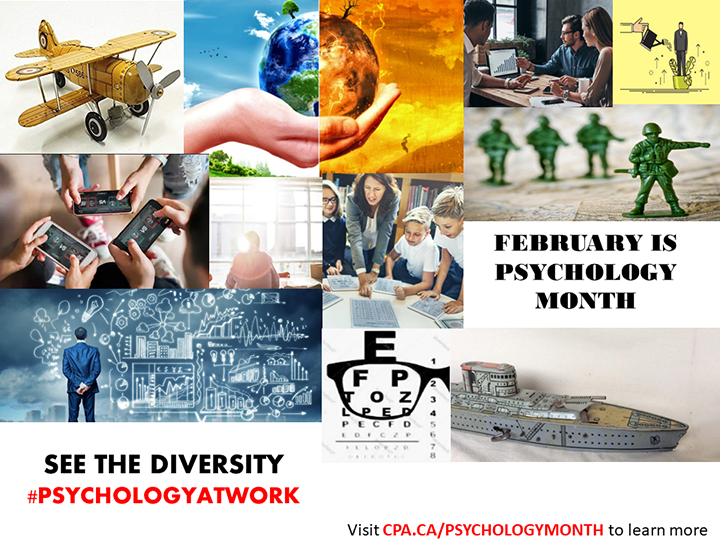
Throughout Psychology Month we will be highlighting people with psychology degrees working outside clinical settings and academia. We are going to profile magazine editors, aviation specialists, bankers working in people analytics, and much more #PsychologyAtWork
Psychology Month Profile: Meghan Norris – The Canadian Handbook for Careers in Psychological Science
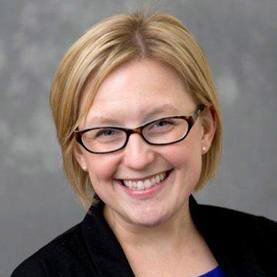 Meghan Norris: The Canadian Handbook for Careers in Psychological Science
Meghan Norris: The Canadian Handbook for Careers in Psychological Science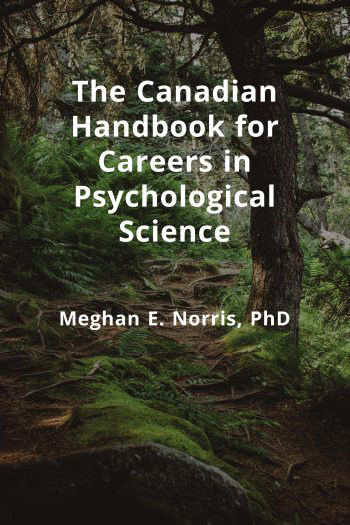
We’re closing out Psychology Month by connecting you with a resource that could help you with one of the career paths you may have read about in February. Dr. Meghan Norris’ open-source book The Canadian Handbook for Careers in Psychological Science.
Meghan Norris – The Canadian Handbook for Careers in Psychological Science
Throughout Psychology Month (February) we have been highlighting people who have completed advanced psychology degrees and gone on to work in a field outside clinical practice and academia. Some work in the aviation industry, like Marais Bester or Gregory Craig. Others are business owners, like Susan Underhill and Lauren Florko. And still more are government scientists, like Natalie Jones and Chrissy Chubala.
Part of this campaign has been designed to show people in general what psychology is, and what people trained in the discipline do all around us. Another goal has been to show students what a wealth of possibilities await at the end of a psychology degree. It is in this pursuit that our campaign has intersected with that of Dr. Meghan Norris, a social psychologist and the undergraduate chair in psychology at Queens University.
Meghan has created an open-source (FREE online) book, The Canadian Handbook for Careers in Psychological Science. It is a guide for psychology students featuring all the things she wishes she had known as a psychology student herself. This begins with obvious practical advice for the job-seeking student. The best way to construct an email, leave a voicemail, or ask for a letter of reference. It moves on to things that might not be top-of-mind. How to dress at a conference. Where to wear your nametag. Which plate is which at a formal dinner setting. And how to practice holding food in your left hand at a reception so your right is free for shaking hands.
The Canadian Handbook for Careers in Psychological Science contains a lot of information about the possible career paths open to those with a background in psychology. There is a list in the first chapter of all the skills upon which employers are currently placing a premium. They include skills related to leadership, teamwork, communication (written and oral), problem-solving, work ethic, initiative, adaptability, and analytic and technical skills. All areas where Meghan realized psychology students tend to tick all the boxes.
There are some practical and specific job possibilities included in the book, the way we’ve included them in our Psychology Month campaign. Community mental health worker (like Evangeline Danseco), grassroots organizer (like Amanda Parriag), community development (like Troy Forcier), program or project director (like Alexandra Thompson), policy analyst (like Natalie Jones), the list goes on and on. But it does more than that. The Canadian Handbook for Careers in Psychological Science is designed a little more like a roadmap.
As Meghan says, the earlier students start thinking about this stuff, the more opportunities they’re going to have. The work of career development is incredibly important, but it doesn’t tend to feel urgent for people. You can’t start networking a week before submitting a job application. Chipping away at small healthy behaviours when it comes to a career is a good thing to do as early as you can. And once you have started down the path to an education in psychology, a world of possibilities awaits.
 Leanna Verrucci
Leanna VerrucciThe Director of Marketing and Membership at the Canadian Psychological Association, Leanna Verrucci’s background in psychology has led her to jobs in TV, newspapers, travel, entrepreneurship, and now the CPA.
Leanna Verrucci
Leanna has a Master’s in Child Development from Carleton University, and that degree has carried her all over the world, from Toronto to Ottawa and then back to Toronto and then Ottawa. With quite a bit of time in Tuscany tucked in the middle. Leanna is the Director of Marketing and Membership at the Canadian Psychological Association, but her journey to get here has taken many turns.
She has worked in television, as a field producer and reporter for CBC TV and other stations. She started Food & Leisure newspaper here in Ottawa back in the 90s before selling it. She has been a hiking and biking guide, a communications professor, and the Director of Bespoke Travel. There were also stints as a Marketing Manager, a Senior Brand Manager, a Communications Director and, more recently, the Managing Director of Innovation and Entrepreneurship at Algonquin College.
It’s a lengthy resume, and it’s probably longer but I couldn’t be bothered clicking ‘next page’ on LinkedIn. I had just one question for Leanna – how does all this tie together, and how did psychology play a role?
“The one through-line in all my work has been communications. In television, newspapers, travel, and marketing it all really is about communication. In addition to learning how to do research and gather and analyze data, the main thing psychology taught me was how to speak to people, how to listen to them, and the right questions to ask. It’s important as a manager to know what motivates each individual, and how to play to their strengths.”
In the time she has been at the CPA, Leanna has built a cohesive and complimentary team. Yussra, with her sharp analytic mind and quiet persona. Kathryn, who has terrific people skills and a gregarious demeanour. I’m probably good at some stuff too. And, of course, Leanna - who holds it all together with spreadsheets, forward thinking, and strategic plans that make our lives easier and create an environment in which we enjoy coming to work every day.
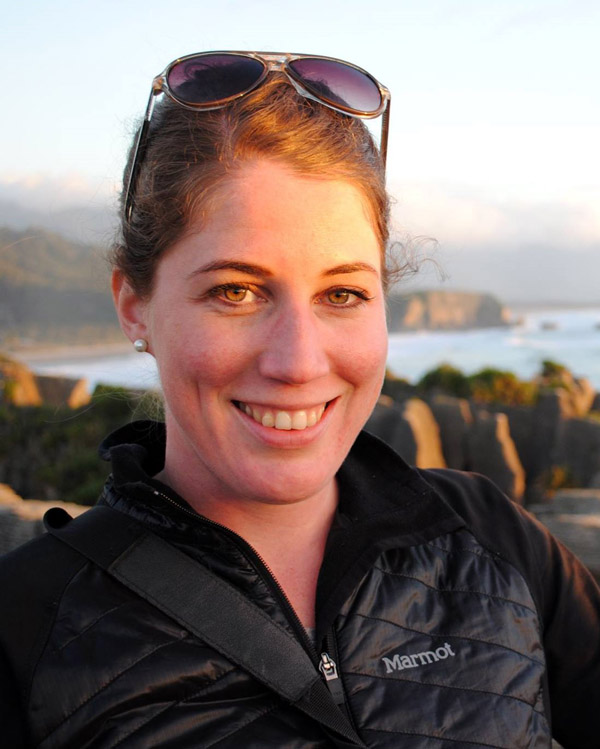 Leigh Greiner
Leigh GreinerAs the Director of Research and Strategic Planning for BC Corrections, Dr. Leigh Greiner leads a multi-disciplinary staff on a huge variety of evaluations, assessments, and projects.
Leigh Greiner
When she was in school, completing her PhD in Forensic Psychology at Carleton University, Dr. Leigh Greiner learned from experts in psychopathy, risk assessment, female offenders, sex offenders, youthful offenders, and more. All were areas of interest then, and all remain relevant to Leigh now as the Director of Research and Strategic Planning for BC Corrections. She leads a talented and diverse multi-disciplinary staff with backgrounds in mathematics, criminology, education, and many other disciplines.
“My education gave me a solid understanding of so many areas of forensic psychology, including where the field has been and where it’s going, and evidence-based practice more broadly in Corrections. As my role touches so many aspects of our business, this breadth of knowledge has been so useful, as have the relationships I built while completing my degrees—many of these relationships I have maintained in my current role and are people with whom I continue to work collaboratively today!”
Day to day, Leigh and her team are responsible for examining the effectiveness of correctional programs, assessing the need for new jails, providing data to inform policy or practice decisions, working to improve the quality and usefulness of the organization’s data, providing research expertise when developing new correctional programs…and the list goes on. Their portfolio is extremely large, and they are rarely left twiddling their thumbs.
It’s the variety that Leigh enjoys most.
“Every day is different, and each day brings new problems to dissect and analyze… and hopefully solve! I’ll admit that at times it can be challenging to juggle all the various demands placed on our unit, as we support the research and data needs of the entire branch. However, being part of an organization that values evidence and wants to make decisions based on data really makes my job easy. Being able to see the impact our work has on the organization and, though less directly, on the individuals in custody and those under community supervision makes the job very fulfilling.”
A wide scope of knowledge is great preparation for a wide scope of responsibilities. And in BC, from evaluating programs designed to help offenders to change their behaviour, to determining how effective body scanners are at detecting contraband, Leigh and her team are right in the thick of it.
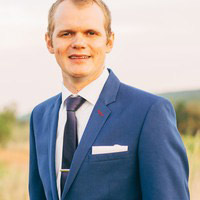 Marais Bester
Marais BesterIn the growing field of Aviation Psychology, PhD psychologists are increasingly being hired to help keep air travel safe. One of them is Dr. Marais Bester, a Manager of Assessments and Psychology at Qatar Airways.
Marais Bester
Despite some tragic news stories in the past few years, air travel remains the safest mode of mass transportation. It can seem otherwise, as plane crashes make the news far more often than motorcycle accidents and sinking boats. But a lot goes into putting planes in the air, and just as much effort goes into keeping people safe while they’re up there.
A lot of those safety protocols are the purview of a rapidly-growing discipline, that of aviation psychology. Dr. Marais Bester has been in that field for more than five years, since graduating with a PhD in Industrial Psychology from the University of South Africa. Seven months ago, he moved from Dubai to Qatar to become a Manager of Assessments and Psychology at Qatar Airways.
Working with a team of two other Industrial/Organizational Psychology PhDs, Marais is responsible for ensuring that the personnel operating Qatar Airways aircraft are healthy, supported, and working well with their teams. This begins with psychometrics for talent acquisition (the job interview process) and continues through talent development (workshops, trust, resilience and team building).
Pilots must be resilient and cope well with pressure. They also must be one of those rare individuals who are both meticulous rule followers and are able to think on their feet and act very quickly. The cabin crew must be open to diversity and embrace new experiences, and have a high aptitude for teamwork and cooperation.
Like the employees with whom he works, Marais is always learning and changing at his own job. He is implementing best practices and creating new standards all the time. He maintains membership in the British Psychological Society and the European Association for Aviation Psychology (EAAP), to connect with like-minded people in this quickly growing field.
After a tragic incident in 2015 when a German co-pilot took his own life, and the lives of his passengers with him, the International Air Transportation Association (IATA) has required airlines to have psychologists on staff. This is one of the reasons the field is growing so quickly around the world, which Marais thinks is wonderful – after all, it will make air travel even safer than it already is. He quotes Richard Branson:
“Clients do not come first. Employees come first. If you take care of your employees, they will take care of the clients.”
So Marais and his team take care of their employees, through career facilitation and coaching, career guidance, psychometrics and team building. And in doing so they are not only helping those pilots and crew members in their lives, they are helping to make the skies safer for all of us.
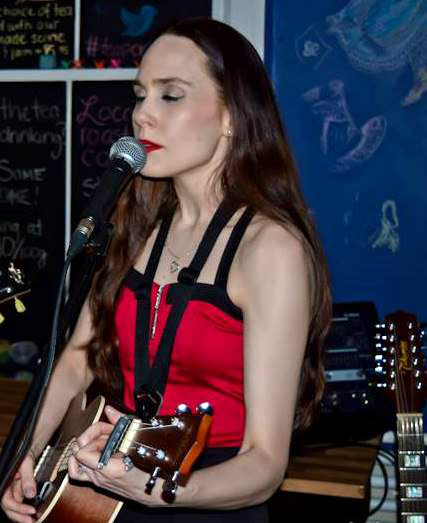 Natalie Jones
Natalie JonesA Senior Program Evaluation Officer with the Social Sciences and Humanities Research Council (SSHRC), Dr. Natalie Jones says her colleagues and fellow researchers are the highlight of her job.
Natalie Jones
Dr. Natalie Jennifer Jones wears many hats. Singer-songwriter, perpetual learner, yoga enthusiast, cat person. Today though, we’re going to talk about just one of those hats. The one she wears as a Senior Program Evaluation Officer with the Social Sciences and Humanities Research Council (SSHRC).
What this means is that she is part of a team that examines the effectiveness and the efficiency of federal granting programs. They determine whether these funding programs are achieving the goals they were designed to achieve. They go into the field to interview the recipients of those grants, they do data analysis, and a vast range of other things on any given day.
(A note for those who are looking to obtain SSHRC grants – Natalie has nothing to do with that process. So buttering her up will not help you achieve this goal. That said, if you want to ingratiate yourself to Natalie for any other reason, volunteer at a cat rescue.)
Natalie completed her PhD in Forensic Psychology at Carleton, and SSHRC was not on her radar as a career option. And while she acknowledges that the job she’s currently doing is outside her area of study from a content perspective, she says,
“All of the research skills, and core analytical skills, that I developed in grad school are highly transferable to my current work environment. Everything from research design to quantitative methods, those are skills that I use every day. So there’s actually a lot of overlap – it’s really interesting, and I love working there.”
Many of us can attest that our co-workers make all the difference in whether we like our job or dread going to work. And so it is with Natalie, whose favourite thing about SSHRC is her colleagues. Half of them work with Natural Science and Engineering Research Canada (NSERC), as theirs is a joint evaluation division with SSHRC. Many have psychology backgrounds just like she does, and many have a background in a wide variety of other scientific fields. They all work together toward a common goal.
“It’s really important to have a group of colleagues that you get along with and that you respect. They’re all very good at what they do – a lot of attention to detail and they care about quality. We’re very like-minded in that way. I’m proud to call them my friends. We help each other out professionally, but I know they always have my back in my personal life as well.”
That personal life is as busy for Natalie as her professional life. Her hobbies include: enrolling in a 16-month graduate diploma program in Public Policy and Program Evaluation, which she completed this past December. She suspects that she will still be enrolling in classes and continuing to learn well into her 80s. She’s involved with cat rescue charities, and planning to get back on stage at her local cafés as a singer-songwriter. It’s a safe bet that when she does, the first three or four tables will be packed with scientists and researchers from SSHRC and NSERC. Natalie’s co-workers and friends, both in the lab and out.
 Jen Welter
Jen WelterDr. Jen Welter is many things – the first woman to coach in the NFL, and the first to play running back in professional football. An author, speaker, TV producer and fashion designer. And also a PhD psychologist.
Jen Welter
For much of Psychology Month, we have been putting the spotlight on one job at a time, showcasing the variety of careers populated by people who have advanced degrees in psychology. But what if you didn’t have to pick just one thing? What if you could use your psychology PhD to do everything? Dr. Jen Welter is doing as many things with her psychology PhD (from Capella University) as she possibly can.
She runs girls-only football camps, as well as football-and-tech camps called KickGlass with her partner Mike Brown (former NFL player turned tech entrepreneur). She’s just coming back from being the keynote speaker at VISA’s pitch competition for female founders doing great things in technology and commerce during New York Fashion Week. She’s working on a project with Ryerson University’s Experiential Sports Lab to reach for gender equality in sports media. She’s the executive producer of a TV show called Fangirl, set to debut soon about two superfans who get a chance to run their favourite college football team. She’s even talking about collaborating on a project with high-fashion designer Vivienne Hu, something more street-savvy than high-end.
Before getting to this point, Jen did a whole lot more. Things no one else had ever done, and that most would never consider doing. She was the first female professional football player in a contact position (running back for the Texas Revolution of the Champions Indoor Football League). The first female head football coach in international competition (Team Australia for the 2017 World Championships). And the first female coach in the NFL (2015 with the Arizona Cardinals). She also played on Team USA twice at the world championships, winning gold medals in both 2010 and 2013 (both times defeating Canada).
She tells us that her psychology training and background has come into play throughout all of this. As a football player and coach, she says
“Even as I was learning things in school I would try them out in my own games. Something as simple as sitting on the bench and looking up at people. Your body posture says a lot, and you would never find me with my head down. That was something I learned in psychology – the way we interpret the behaviour of other people, and realizing that the impact you have on your competition is just as relevant between the plays as it is during the plays you make. I still work with athletes on a lot of that to this day, in both big and small ways.”
Jen, in addition to producing TV, breaking barriers for women in sport, collaborating on fashion projects and encouraging young girls to break through preconceptions, is currently working on a follow-up to her book Play Big: Lessons in Being Limitless from the First Woman to Coach in the NFL. The follow-up will focus a lot more on the lowlights of her career than the highlights. She says it’s the kind of thing that doesn’t get spoken about very often, since we all tend to talk about the highs without truly examining disappointments and struggles. For example,
“My first book got turned down by everyone because they said ‘women in football doesn’t sell’. I mean…I’m pretty sure I was the first – how many times have you tried? I’ve done it on the field, and now I have to do it in literature?”
Then, she sums up her entire post-psychology-PhD career in one sentence.
“It’s constantly answering questions that other people have not even known should be, or could be, asked.”
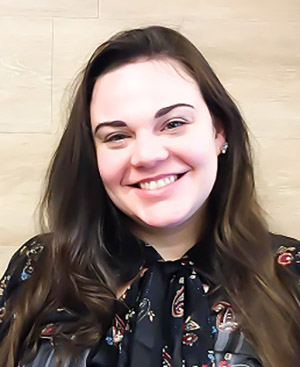 Eva Best
Eva BestLast year, Eva Best earned a CPA award for her thesis on the ‘positivity effect’. This year, she scored a terrific research job at Gameloft, one of the biggest mobile gaming companies in Canada.
Eva Best
When Eva Best stays up way too late, it’s because she’s gone down a rabbit hole on Wikipedia, researching marine animals and getting more and more engrossed in the nesting habits of the leatherback sea turtle. That, or she’s strumming the ukulele, shredding on her Fender Stratocaster, and making music until the wee hours.
Many of the rest of us stay up way too late playing Overdrive City or Disney Magic Kingdoms on our iPad. And we are the people who are of particular interest to companies like Gameloft. Eva is the manager of the qualitative research department in user experience at Gameloft Montreal, one of the biggest mobile gaming companies in Canada. Psychology graduates, and researchers like Eva, are becoming more and more a part of gaming companies as their particular sets of skills are ideally suited to the job. They allow gaming companies, and really any company that has a service or an interface used by human beings, to make decisions based on reports and data that is accurate, correct, complete, and relevant.
Qualitative research in a gaming company is currently more geared toward usability and functionality. Whether an app works, how easy it is to navigate, and so on. Moreso than in the past, the approach to user experience is a ‘holistic’ one, and people with backgrounds in research – especially those whose research experience is in a multidisciplinary environment – are increasingly in demand.
Eva graduated with her Master of Science in psychology from the University of Montreal, then obtained a PMP (Project Management Professional) certification from the Project Management Institute, precisely so she could get a job like this one.
Last year, Eva’s Master’s thesis on the “positivity effect” earned her a Certificate of Academic Excellence from the CPA. The positivity effect is a phenomenon where elderly adults tend to rate negative stimuli as less negative and positive stimuli as more positive than do younger people. Eva’s research provided a ‘proof of concept’ that this trend appears to be almost a straight line from birth, as children rate their responses to stimuli more negatively than do young adults, who in turn report more negative feelings than older adults, and so on.
Her project proposed a new theory on “lifespan emotional development”. One that put the positivity effect at the peak of development by showing that it can be produced in younger people as well. When they are desensitized by exposure to a negative stimulus, even younger people are likely to rate all other stimuli in a more positive way. Even the most neutral (boring) stimulus can feel more positive under these circumstances.
Gaming makes life less boring while in the waiting room or on the bus, for example. Figuring out how to improve your gaming experience is the goal of the qualitative research department. Who better to help create and ensure a positive experience than Eva? If she can make you as interested and invested in a mobile game as she is in gaming, sea turtles and the ukulele, then mission accomplished!
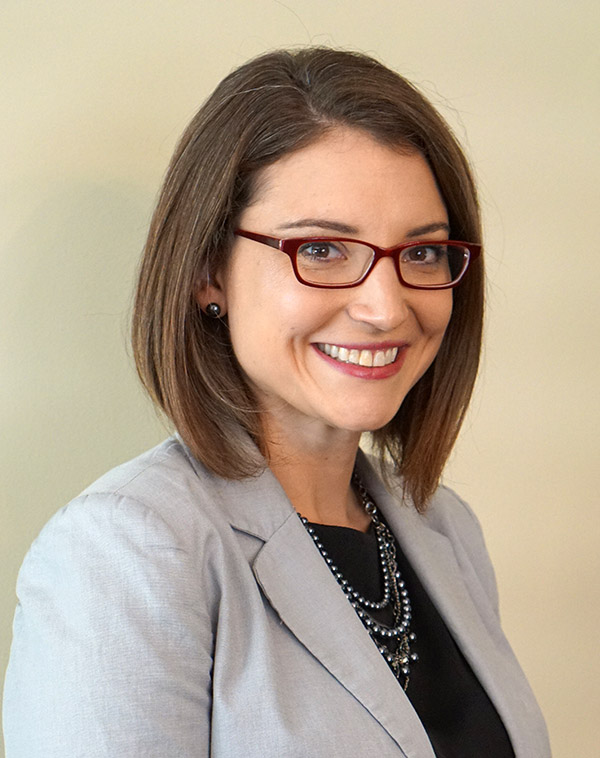 Lauren Florko
Lauren FlorkoDr. Lauren Florko is the founder of Triple Threat Consulting, providing managerial consulting for corporate social responsibility, change management, and organizational development.
Dr. Lauren Florko
“Consultant” is such a nondescript term, isn’t it? Virtually everyone can style themselves a “consultant” when writing a CV or a LinkedIn profile. Which is why it’s good that Lauren Florko can get a little more specific than simply saying she’s “self-employed” as a “consultant”.
Lauren created Triple Threat Consulting, a firm which provides managerial consulting for a variety of projects - from corporate social responsibility to change management to organizational development. With a Ph.D. in Industrial/Organizational Psychology specializing in workplace stress, Lauren’s statistics training gave her a competitive advantage over similar consultants who come from a HR background.
Triple Threat Consulting plays on the film industry’s play on ‘triple threats’ as she specializes in Talent Management. The “Triple” also plays on the concept of triple bottom lines (planet and people outcomes on top of profits).
Triple Threat Consulting also fills a unique market need with psychological assessments, thanks to Lauren’s training. This means empirically-based strategies with practical implementations. Statistical analysis and reporting to produce key business insights. And the ability to engage a variety of audiences through keynotes and workshops.
The founder of a Multi-disciplined Research Lab, one of Triple Threat’s clients, says:
“She's doing advanced research methodologies...doing hierarchical linear modeling and item response analysis...She is highly motivated, particularly with high end analysis – she gets excited about that. She is very punctual with delivery."
What Lauren likes most about her job, she says, is the work-life balance it affords her. Well that, and of course the excitement she derives from high-end analysis to drive better business decisions.
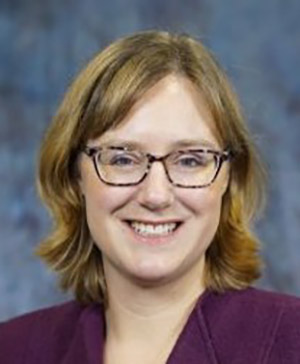 Heather Orpana
Heather OrpanaHeather has a long career in public service, working in three different federal departments. She recently moved into Substance-Related Harms, to help tackle the opioid crisis.
Heather Orpana
This is an excerpt from a larger article written by Dr. Heather Orpana in this month’s issue of Psynopsis. Click this link to read the whole article.
My path to a career in psychology was in no way a straight one. I started an undergraduate degree in science with a specialization in physics before completing two years of a baccalaureate in nursing and then finally switching to, and graduating with, an honours degree in psychology. After spending a summer as an intern at a non-profit organization writing plain language summaries of research studies that would impact patients, I decided to pursue a career in research and applied for my doctorate. I wanted to be part of the system that creates the evidence used to promote the health of the population.
I completed my doctorate in experimental psychology at the University of Ottawa, at the same time that the university was establishing a multidisciplinary program in Population Health. I was very fortunate to be funded by Health Canada’s National Health Research and Development Program, and the Canadian Institutes of Health Research during my doctorate and was hired by Health Canada to conduct policy-relevant data analysis before I had finished my program.
It has been sixteen years since I started my career in public service. During that time, I have worked in three federal departments: Health Canada, Statistics Canada, and the Public Health Agency of Canada. Every single position I have held has benefited tremendously from my training in psychological science. My first analysis project demonstrated the relationship between mental health and healthy living behaviours, in 2003, using Canada’s first national mental health survey. After working for several years at Health Canada, conducting analysis, and contributing to data policy and coordination, I moved to Statistics Canada to focus on research and analysis. There, I engaged in research in the areas of healthy weights, healthy aging, and mental health, all informed by my education in psychology.
Most recently, I have been appointed as a Senior Research Scientist and am working in the Substance-related Harms Division, supporting surveillance and applied research contributions to addressing the opioid overdose crisis. In this role, I advise on research methods and conduct research studies to inform our understanding of how the crisis is evolving.
Public health cannot address the complex problems we are faced with in the 21st century without the knowledge and skills of psychological science researchers. I have yet to find a single public health issue that is not informed by our discipline. Even public health issues that may seem like they belong more in a wet lab, such as anti-microbial resistance, can be addressed only with the incorporation of a behavioural perspective. I hope that other psychological science researchers see their value in contributing to improving the health of all Canadians.
 Gregory Craig
Gregory CraigDr. Gregory Craig is part of a team of “human factors researchers” at the National Research Council. His work might one day lead to a new frontier in aviation – pilotless airplanes.
Gregory Craig
One day, you might take a flight from Saskatoon to Dublin. There will be in-flight movies, tiny difficult-to-open bags of peanuts, flight attendants distributing cheap headphones and tiny pillows, and free tiny cans of wine once you’re over international waters. There will, however, be one major difference. On this flight, there will be no pilot.
At least, such a thing is possible. But not until a whole lot more studying is done on the subject. Some of those studies are currently being conducted by Dr. Gregory Craig and a team of human factors researchers at the National Research Council of Canada.
Gregory has been involved in a wide variety of research projects. He’s done research on night vision goggles, displays for infrared cameras for search and rescue, and the design of symbolic information displays for pilots. Currently, he’s involved in examining ‘trust in automation’ to assess pilots’ trust in automatic flight systems. This ranges from basic elements like an off-the-shelf autopilot to looking at fully autonomous (no pilots) flight.
Gregory spent his formative years at Carleton University, earning a PhD in Cognitive Psychology in 1997. While his current role is mostly unrelated to his studies, he credits the people he met along the way for getting him to where he is today.
“There is a wide gulf between what I studied in university and the type of research that I do now. The main elements of my university studies that helped were basic experimental design, document editing and data analysis. Much of my training in applied research came from one of my supervisors who was employed at the Communications Research Centre and an adjunct at Carleton. He encouraged me to participate in several of the applied research projects that he worked on for CRC. The other source of applied research thinking came from a course for which I was a teaching assistant at Carleton. The course was a basic introduction to sensation and perception, but the prof teaching the course had a large number of industrial design students in the class. For those students, the prof took the time to explain how basic elements of sensation and perception could be applied to the design of systems and products intended for use by the general population.”
One might expect a psychologist to lead project teams, analyze data, submit research proposals, prepare reports and presentations, and manage projects. But maybe not to design and conduct flight tests, evaluate advanced cockpit technologies, and explore human factors issues for pilots, crew and passengers.
So think about Gregory Craig the next time you’re on a plane – it might be his work that enhanced the technology in the cockpit, or designed the display used to navigate. And while you’re doing that, you might want to check to see if, up front in the cockpit, there’s still a pilot.
 Alexandra Thompson
Alexandra ThompsonDr. Alexandra Thompson is a Program Leader with the NRC working on ‘High Performance Buildings’. Her team aims to reduce energy emissions by identifying industry, scientific, technological & societal issues that can stall the adoption of new technologies.
Alexandra Thompson
Alexandra Thompson is helping to devise a vision for future scientific exploration, as a Program Leader with the National Research Council of Canada. She manages a large team and a portfolio of science and engineering projects focused on a strategic goal. Specifically, that goal is focused on the ‘High Performance Buildings’ program.
This program, established in 2013, aims to reduce energy emissions in buildings by identifying the industry, scientific, technological and societal issues that could stall the adoption of new technologies. Alexandra is working at knowledge mobilization (the translation of science to action) to ensure the science is used for environmental change. She also has the chance to encourage younger researchers to develop their careers, scientific interests and to have confidence in their abilities.
In 2007, Alexandra obtained her PhD in environmental psychology and human factors from the University of Southampton in the UK. She says her training has aided greatly with, among other things, knowledge mobilization.
“My psychology training has enabled me to ensure good scientific methodologies and statistical analysis are used and the ethics of a project are considered. Also, working in an engineering multi-disciplinary environment understanding the human and societal implications of an engineering project has helped with the applicability of projects to real world conditions or expectations.”
As climate change becomes more and more devastating, and as environmental concerns become the number one national priority, programs like ‘High Performance Buildings’ will be at the forefront of the effort to curb emissions. Knowledge mobilization to that effect is becoming more critical than ever. We’re glad that Alexandra Thompson, and others like her, are working on those exact things. Bringing about the change that is needed to tackle the most serious issue of our time.
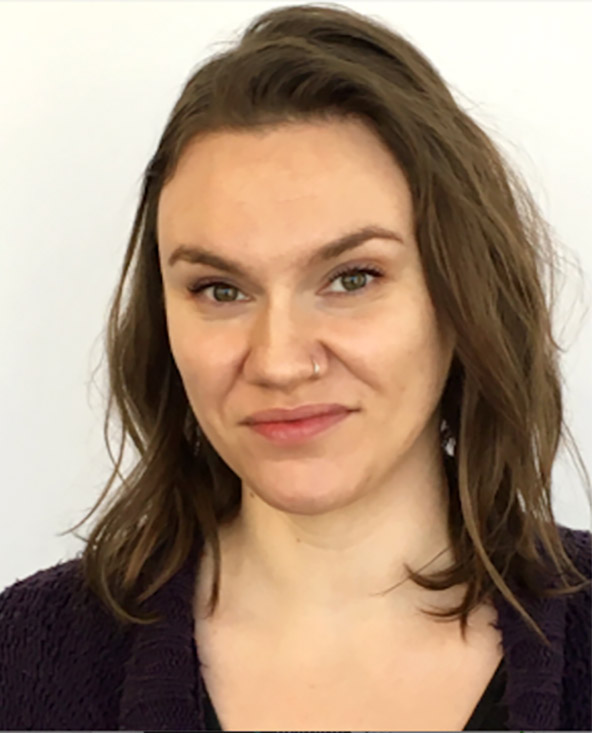 Robin Langerak
Robin LangerakWorking as a Design Researcher on a suite of business intelligence software tools at IBM’s Ottawa studio, Robin Langerak says “I get to do a little bit of everything I loved about running my own research studies as a psychology graduate student!”
Robin Langerak
It’s convenient when you can find a career in the city where you are completing your PhD. Such was the case for Robin Langerak, who began working at IBM in their Ottawa Studio while completing her doctorate in Cognitive Psychology at Carleton University. She has now been there more than a year, working as a Design Researcher on a suite of business intelligence software tools designed and developed by the Ottawa product team.
Robin provides design recommendations that will help improve the user experience for this software. That involves everything from problem definition to study design and data collection to synthesis and communication of research findings. Psychology has prepared her for all of this in a big way. She says,
“Data collection, storage, and analysis methods that I learned in training are invaluable at my job. I also rely on the understanding of human thought and motivation that I studied in school as well as the techniques I learned to check my bias and measure constructs as accurately as possible.“
The best thing about her job?
“I get to do a little bit of everything I loved about running my own research studies as a psychology graduate student in a fast-paced, high impact environment.“
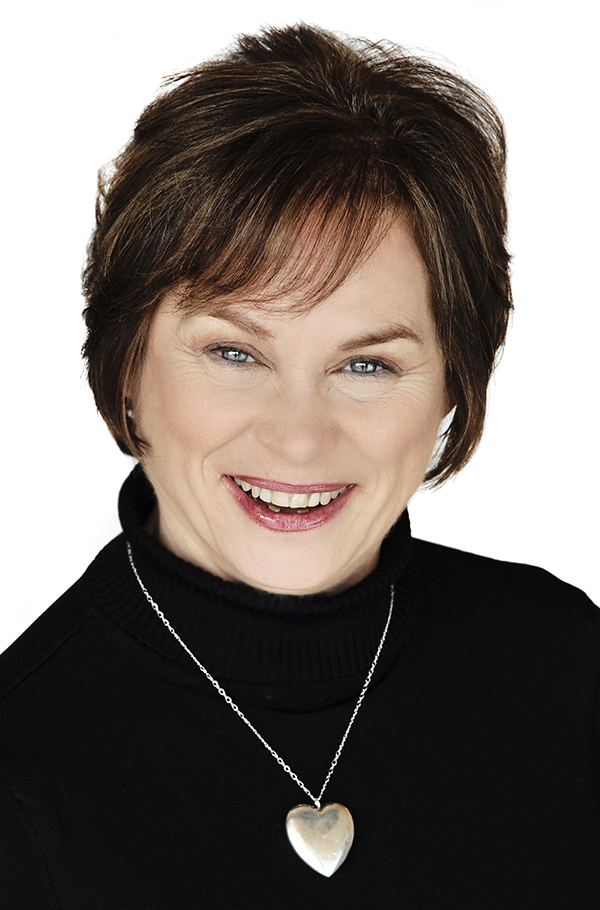 Suzanne Simpson
Suzanne SimpsonDr. Suzanne Simpson founded the talent management firm Human Resource Systems Group Ltd. more than 30 years ago. Now the CEO, HRSG is a global company, hiring people and taking on clients from all over the world
Suzanne Simpson
For much of this month, we have been focusing on jobs and careers available to psychology majors once they graduate from school. Suzanne Simpson not only found one of those careers, she helps others find theirs. Suzanne is the founder and CEO of Human Resource Systems Group Ltd. (HRSG), a software-as-a-service talent management firm.
What that means is that her company creates software for human resources departments to simplify their work. Need to build the perfect job description, so you can attract the perfect employee? HRSG has the software for that. Then they have an interview guide built for you, so you can make the correct decision. Now you have a new employee with a job description that puts them and their management on the exact same page. From there, that employee might use one of HRSG’s career pathing programs, complete with assessments and learning resources to help them in their current job today, and to reach their dream jobs tomorrow.
All of this is built based on Suzanne’s training in psychology. She earned her PhD in Industrial/Organizational Psychology from the University of Ottawa, and says the training she received there supports the main focus of HRSG’s service and software offering to their clients.
HRSG celebrated 30 years in business in 2019 and offers its services and products to organizations worldwide. HRSG employs professionals trained in Industrial / Organizational and other related disciplines from across Canada and around the world.
It is challenging to build a business, and very rewarding when it comes to fruition. Suzanne takes satisfaction in offering a service that is highly valued by her clients, and embraces the continuous learning and innovation that comes with her role as CEO.
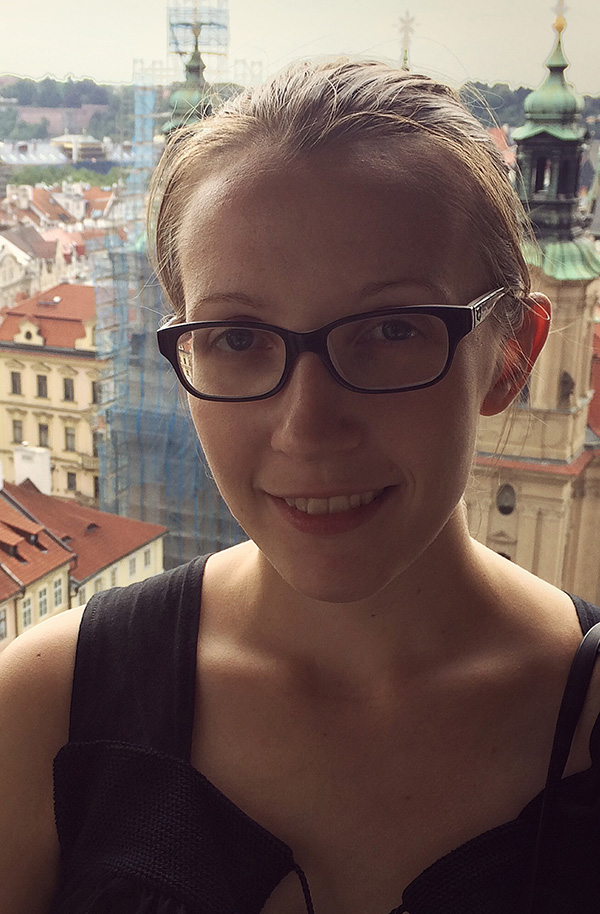 Chrissy Chubala
Chrissy ChubalaDr. Chrissy Chubala helps naval personnel make better decisions during mission planning and execution. She is a Defence Scientist in Maritime Decision Support at Defence Research & Development Canada’s Atlantic Research Centre.
Chrissy Chubala
My name is Chrissy Chubala, and I am a Defence Scientist in Maritime Decision Support at Defence Research & Development Canada’s Atlantic Research Centre. My job is to guide and assist in the development of tools that will help naval personnel make better decisions during mission planning and execution, from the perspective of cognitive psychology. This involves a consideration of human factors, human-computer interactions, team dynamics, and basic cognition.
My training in psychology (PhD, Cognitive Psychology, University of Manitoba 2017) has provided me with both concrete and abstract forms of knowledge that help me in my current role. The concrete skill sets of experimental design and statistical inference are directly applicable to my work, although the constraints and goals of applied research are different enough from those of academia that some relearning and rethinking has had to occur.
Thankfully, the more abstract forms of knowledge provided by my training have positioned me well for this transition. My training in psychology taught me versatility, creativity, and lateral thinking. I have the ability to learn about a new topic very quickly, to creatively apply my existing knowledge and skill sets to new scenarios, and to find connections between seemingly disparate ideas or fields of study. With these abstract skills in hand, I have been able to adapt my more concrete areas of expertise to the requirements of the job.
What I enjoy most about my current position is the level of structure it provides, the direct sense of impact that comes from conducting applied research, and the ability to collaborate and exchange ideas with a very diverse group of scientists.
I receive specific problems to solve but I am free to explore them in any manner I see fit; this provides me with some structure around which to focus my efforts, but enough flexibility to follow my interests. Moreover, the ability to see the direct effects of my research on the lives and work of others is rewarding in a way that my academic career in experimental psychology was not. Finally, I get to work with interesting and brilliant researchers from all areas of study, from physics to chemistry to computer science. Not only do I get to learn new things I would otherwise know nothing about, but my own unique perspective and expertise are a valued part of the whole and I get to teach as much as I learn.
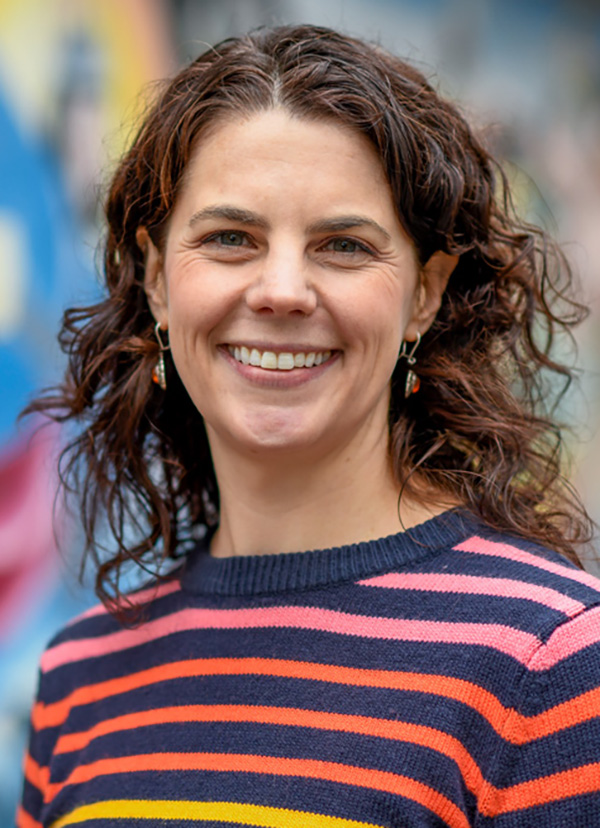 Amy Bucher
Amy BucherAmy Bucher graduated with a PhD from a psychology program that no longer exists, and that made her skill set unique in the post-grad world. She puts those skills to use at Mad*Pow, a design agency that improves peoples’ experiences with technology, services, organizations and each other.
Amy Bucher
“Mad*Pow leverages strategic design and the psychology of motivation to create innovative experiences and compelling digital solutions that are good for people and good for business.”
That is Mad*Pow’s mission statement, ripped right from their webpage. Mad*Pow employs medical doctors and all kinds of behaviour change design experts. But perhaps you would be surprised to learn that Mad*Pow’s behavior change experts come from a variety of training backgrounds. Currently, there is only one person on the team with a PhD in psychology!
That one person is Dr. Amy Bucher, the vice president of behaviour change design at Mad*Pow. Amy brings a unique skill set to her position, and took a rather unique path to get there. She started school at Harvard, doing an undergrad focused on social psychology. From there, she moved on to the University of Michigan at Ann Arbour for her Master’s and PhD in Psychology. Although that is the official title of her degree, it was achieved a little over a decade ago in a program that no longer exists.
It was called Organizational Psychology. It was not an Industrial/Organizational program of the type we see offered now, it was more as Amy describes it a “contextualized social psychology program”. That means that when she graduated she was more of a social psychologist, albeit one with a deep knowledge of workplaces and organizations.
Amy realized as she was nearing the end of her schooling that she did not want to go into academia. That track meant specialization, and she wanted to broaden her horizons rather than narrow her focus. She began to work with other researchers and learned many different research methods before graduation. She learned how to dive into information and deal in the “grey areas”. After all, research is always in progress.
That comfort with the “grey areas” has served her well at Mad*Pow, as often clients will ask Amy for definitive answers on how to tackle a problem. She is adept at explaining that while formative research can provide a direction, it can’t often come up with a concrete and foolproof series of steps to take to achieve an aim. It’s important to experiment with different approaches that are specific to the clients’ customers and their needs to figure out the best solution.
Her desire to broaden her scope is also an asset, as Amy thrives on having a variety of projects and problems to work through. She likes being exposed to new things. She says,
“Right now, I’m leading a project to understand what people with a rare genetic condition might be looking for from an online portal to support their condition management. So we’ve designed moderator guides, recruited people with this condition, and recruited people who serve those with this condition to conduct interviews. We’ll be creating output reports with insights from that research, doing a workshop with the client that we will also design, then translating all the insights from the research into designs for this portal.”
Amy says that before starting this project, she had never heard of this particular genetic condition before (it is very rare). Now she’s had the opportunity to learn quite a bit about it and understand more about the day-to-day lives of the people who live with it.
“I feel excited by this type of new knowledge that I don’t think I’d encounter in any other way.”
She’s also excited at the prospect of some new colleagues. There are many different types of researchers at Mad*Pow (which further helps Amy broaden her horizons as she learns from them), but soon there will likely be a few more psychology grads joining the fold. As Amy says, there are now many great opportunities outside academia for graduating researchers. And working alongside Amy seems like a pretty great opportunity.
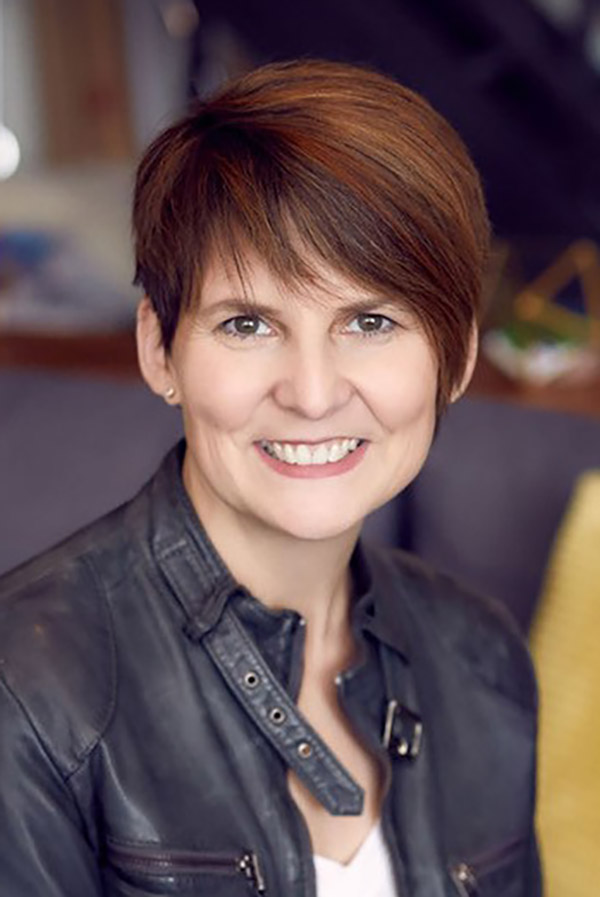 Liane Davey
Liane DaveyA writer, blogger, public speaker, and volunteer board member at the Psychology Foundation of Canada, Liane Davey has made her mark on corporate culture with her consultancy group 3COze.
Liane Davey
“You need to have more conflict.”
This is Dr. Liane Davey’s advice to almost every organization with which she works. These include enormous companies like TD Bank, Amazon, and smaller companies like Shoretel. Chris Burgy, former VP of Strategy at Shoretel, says of Liane and her company 3COze,
“Liane supported us in rolling out a methodology for productive communication and conflict to our top 100 leaders in the company. Without a doubt, I fervently recommend Liane to any company seeking to improve their organization’s accountability, communication methods and for those seeking a fantastic facilitator for strategic level planning.”
3COze is named in conjunction with their mission statement. They seek to transform the way people “communicate, connect, and contribute” in their organizations. Liane is the co-founder and principal of 3COze, and brings her “more conflict” approach to CEOs and senior leadership teams around the country and across the world.
She says the number one thing that’s getting in the way of productivity is that people are avoiding conflict and being passive-aggressive. That means conflict sits unresolved causing a lack of productivity, eroding trust and engagement, and causing stress for individuals.
Liane says the things she learned in obtaining her PhD in Industrial/Organizational Psychology from Waterloo are the same ideas she puts into practice today.
“It’s very much applied social psychology. So, issues of motivation, team dynamics, conflict, culture, all the sorts of things that are the bread and butter of organizational psychology have been my whole career.”
And what a career it has been! Not only does Liane work with some of the biggest CEOs and companies around the world, she is also an author (her book The Good Fight: Use Productive Conflict to Get Your Team and Organization Back on Track is available at online book sellers everywhere), a blogger (at www.lianedavey.com) and a public speaker, bringing her message of productive conflict to corporate crowds everywhere.
She is also a volunteer member of the board of trustees at the Psychology Foundation of Canada (PFC), a charity that brands itself a “child-based (birth-18) mental health promotion organization” thanks in part to Liane’s strategic skills in directing the board and the group. And also her ability to create productive conflict, and not to shy away from uncomfortable conversations.

She first encountered the PFC at a fundraising breakfast twelve years ago, and was impressed by what they were able to do with so few resources. With just a handful of staff members and an army of volunteer facilitators, they were able to create resilience, attachment, and stress management skills in what are now hundreds of thousands of Canadian children every year.
When not writing, blogging, speaking, volunteering, or whipping a group of executives into shape, what does someone like Liane do? Well, she says it’s often important to do things at which you are terrible. With that in mind she just had a Bob Ross paint night with her kids, and the painting now rests proudly in her house. A Bob Ross paint night sounds like just the kind of soothing, mellow thing that might be as far from “conflict” as possible. And even the expert on the subject likely needs a break from conflict now and then, if only for a little while.
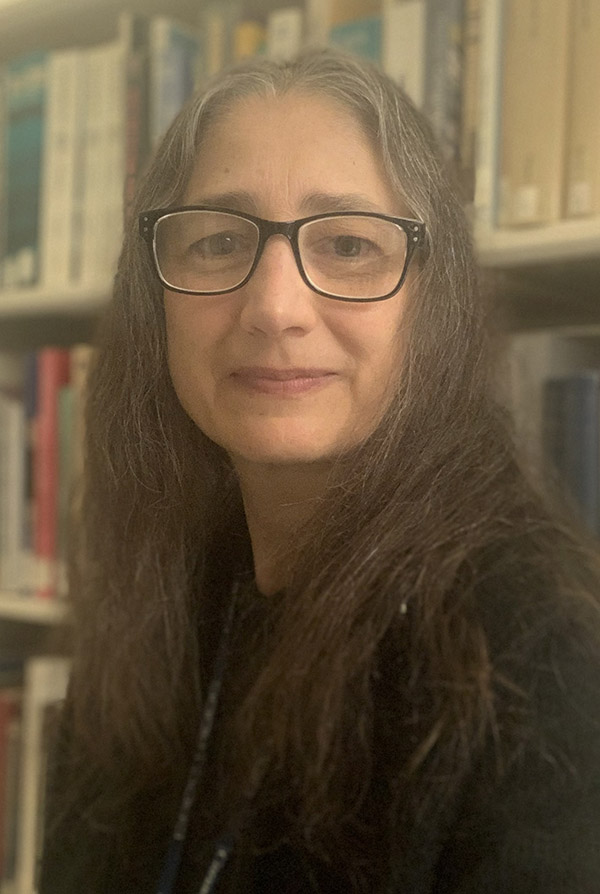 Angela Febbraro
Angela FebbraroA defence scientist with Defence Research and Development Canada, Angela Febbraro works to create messaging that counters the recruitment propaganda put out by extremist groups like ISIS.
Angela Febbraro
What messaging does an extremist group, like ISIS, use to recruit young people to join? Is their messaging different for young men than it is for young women? And how can we create a counter-messaging strategy to dissuade those people from a life of extremism? These are the questions currently being tackled by Angela Febbraro and her team of (mostly social psychologists) at Defence Research and Development Canada (DRDC).
Angela is a Defence Scientist, and has studied all kinds of issues pertaining to national defence, most of them around gender. Early on, she studied the leadership styles of women in leadership positions in the military. Did they feel the need to conform to a more stereotypically “masculine” leadership style, or were they comfortable forging their own? It turns out that women in those leadership positions did not feel the pressure to behave in a more “masculine” fashion, but at the same time women in more subordinate positions felt this pressure quite acutely.
In discussing the studies in which she’s involved, Angela speaks a lot about context. Early on in her school journey, she was struck by the notion that human behaviour depends in such an enormous way on the context in which that behaviour occurs. Now, after all that school and a PhD in Applied Social Psychology from the University of Guelph, context still matters a great deal.
Yes, the messaging from extremist groups target men and women differently. But counter-messaging must take into account much more than just gender. Angela and her team look at the local landscape in the areas that are being targeted. The culture in that part of the world, the method through which they receive the extremist messaging. A counter-messaging campaign to prevent the radicalization of a young woman in the Idlib Governorate in Syria might be vastly different than one targeting a young man in Maple Ridge BC. Or even one targeting a similar young woman in a neighbouring province of Syria.
There are many highlights in Angela’s job, but she says this, specifically, is the best part:
“The opportunity to apply my expertise (e.g., on gender and diversity, developed during my graduate training in psychology) to current defence and security challenges (to work on interesting/exciting challenges, such as gender and counter-radicalization!); the opportunity to communicate my research findings/analyses through written reports and articles; and the opportunity to mentor junior scientists.”
Angela’s scientific training in psychology, both content-related and methodological, has helped her carry out her responsibilities as a defence scientist. At DRDC her focus is on conducting applied, defence-related research, and broadening her expertise to address current and future defence and security challenges. Her responsibilities include planning, organizing, conducting, analyzing, and reporting basic and applied social- and organizational-psychological research; interacting with the Canadian Armed Forces and other national/international security partners; and building the scientific capabilities of the entire organization.
And currently, of course, using psychology to counter the propaganda of extremist groups all over the world.
 Amanda Parriag
Amanda ParriagAmanda owns her own consulting business, the ParriagGroup, and spends much of her spare time working in her Ottawa community to end violence against women.
Amanda Parriag
“Amanda is a star! She has leveraged her MUN education to provide stellar research and evaluation services. She has become a trusted advisor to her clients and is a leader of Women's issues in Ottawa. She was the president of MediaAction for 8 years, has run Ask Womxn Anything for more than 5 years, and sits on the board of the Ottawa Coalition to End Violence Against Women (OCEVAW). She has owned and operated her own business for 20 years and for me, she is a friend, a supporter and a role model.”
Susan Underhill is effusive in her praise for Dr. Amanda Parriag, her current colleague and collaborator and long-time friend since university (MUN is the Memorial University of Newfoundland, where they studied psychology together years ago). Amanda obtained her PhD from MUN, but not a lot of her clients know this. She doesn’t refer to herself as “Dr.” and rarely tells people she has a PhD in psychology. That’s because when she does, she finds people behaving a little differently, choosing their words more carefully, and thinking that Amanda is psychoanalyzing them at every turn.
Not exactly her thing – Amanda is a researcher – but on occasion this response can come in handy! Amanda runs the ParriagGroup, a consultancy that specializes in research, evaluation and performance measurement. Her small business has been running for 20 years, and while Amanda is the lead on everything, she works with a team. She has six research assistants and six consultants that she pulls in at different times to complete bigger projects.
The ParriagGroup works mostly with governments and not-for-profits. Recently, she and her team worked with an Ottawa not-for-profit on a program they were doing jointly with another not-for-profit. It was a program to work with women who were potentially victims of gender-based violence, and were intersecting with the child welfare sector. The program was designed to provide an intersectional lens in supporting the women and their families. It had been running for a few years, but the group wasn’t sure they were helping the women in the way the program was designed. Amanda and her team looked at the location of the program, the governance, how it was resourced, the skill sets of the people working within the program. The ParriagGroup also did a document review to determine what had been written about how these types of programs were supposed to function.
The group took Amanda’s recommendations to heart (always gratifying!) and ran with them. They made some immediate changes, started to implement others, and looked to outsource a few more. Amanda says,
“Hopefully, because of my work, women in the community who are in this frustrating space, intersecting with the child welfare system and potentially experiencing gender-based violence, can get better support. This can help them make better decisions and move forward in a more sustainable and human way.”
This is where Amanda’s real passion comes out. She feels lucky to be living the dream – she works out of a home-based office with the rest of her team spread across Canada. She can carve her day out as she pleases. And on a beautiful sunny day, she can post an out-of-office and spent time in the pool.
And she also loves the time she can take to work in the community. The focus of her studies at MUN and Carleton was gender-based violence, and she is still doing everything she can in that field.
Susan mentioned Amanda’s work with OCEVAW, and Ask Womxn Anything. AWA gathers together amazing women from the Ottawa community to talk about their expertise on a particular topic. People from across the city are invited to come and have a discussion in a warm and inviting environment. Amanda says,
“Women are not often heralded as experts and so this is an opportunity for these women to be recognized as such, especially among our peers. And it’s an opportunity for women and men in the Ottawa community to see these experts. You can’t be what you cannot see.”
The next Ask Womxn Anything event is called ‘Black Womxn Making the World A Better Place’. They are focusing on black women because February is Black History Month, and the AWA panels are designed to be intersectional without tokenizing the participants. ‘Black Womxn Making The World A Better Place’ is coming up February 18th – at the Pressed Café, if you’re in the Ottawa area. The speakers include Deborah Owusu-Akyeeah, a feminist activist and Campaigns Officer at OXFAM. Meghan Wills, President at Parents for Diversity and current project coordinator at the Michaëlle Jean Foundation. And Maya McDonald who is an educator, facilitator, and storyteller – among many other things!
AWA is a great way for people in Ottawa to get to know experts and remarkable women. Much like Amanda herself, and Susan, and the splendid teams with which they surround themselves.
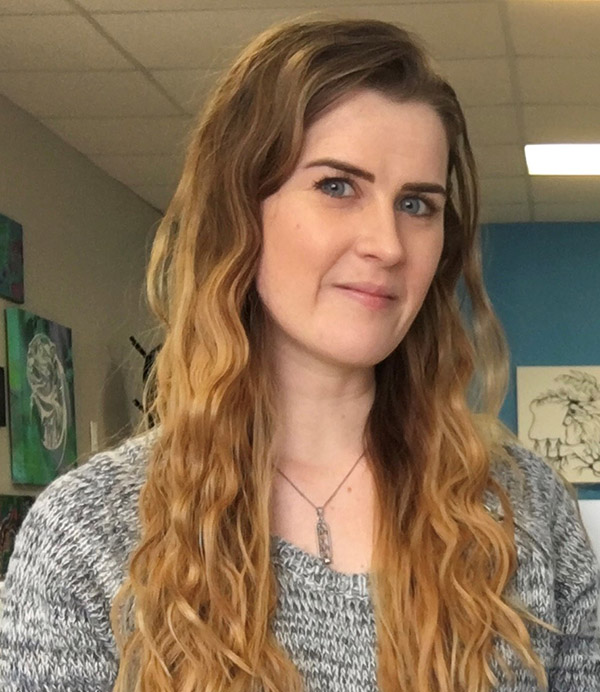 Anne-Marie Côté
Anne-Marie CôtéAnne-Marie coordinates virtual field trips, among many other things, for students in remote northern indigenous communities with a program called Connected North.
Anne-Marie Côté
Anne-Marie Côté became passionate about the field of education after accepting a three-month replacement contract in a school in Guyana, South America, where she ended up spending the next two years. She was able to experience and understand the crucial impact teachers have on shaping how kind, resilient, adaptable, and confident students become regardless of curriculum taught, and therefore how important it is for students to be surrounded by positive role models at school. Back in Canada, she now teaches an online English as a Second Language course to children in China, and she also works with TakingITGlobal, a non-profit whose mission is to empower youth to understand and act on local and global challenges. She mainly works on a program called Connected North.
Connected North delivers immersive and interactive education services to remote indigenous communities in Northern Canada through Cisco’s TelePresence video technology. Anne-Marie coordinates virtual field trips and guest experts for schools in Nunavut. She also works on developing Francophone content for the program.
Anne-Marie says her Master’s in Organizational Psychology from Carleton University has served her very well in her professional career:
“My psychology training has helped me in my work with children and Indigenous communities. It's helped me approach everything I do from a standpoint of compassion and understanding. Every behaviour has a reason. People don't just ‘’do things for nothing’’. It's helped me appreciate that anyone "in trouble'' (or not, everyone in general) has their own story and if you're trying to make change you need to invest and really care about people.
My organizational psychology training has also helped me understand the dynamics of the workplaces I have been a part of. It's helped me understand good and bad leadership, and how to recognize these. Although I’m not currently consulting, it's also helped me guide some of my workplaces through change and development as well as understand program evaluations and other organizational development processes.
It’s also made me become a better employee in general. I know from the research what makes happy employees and organizations and it has made me brave enough to ask for certain things or just share some of this knowledge with employers in hopes to make a better workplace for everyone. This training has also made me more compassionate. Just understanding some of the processes behind human behaviour makes you really care about people and where they’re coming from.”
Anne-Marie is thrilled that she is able to positively impact children in so many different ways.
“Children spend most of their time growing up at school and I think it's so important for them to be surrounded by supportive adults and be in an environment where they feel safe to be who they are and to learn. Equally, it’s important that they have access to engaging and culturally relevant educational resources, regardless of where they are. That's really my main goal working in education; build empowering and innovative classrooms and be a positive role model children feel like they can come to easily.”
She loves being part of this incredible program that creates opportunities for Indigenous communities in the area of education – an area that's so important, and where a lot of trauma still lies. Her hope is to begin to focus on programs that promote mental health and teach emotional regulation early on in those schools where she makes such a large impact.
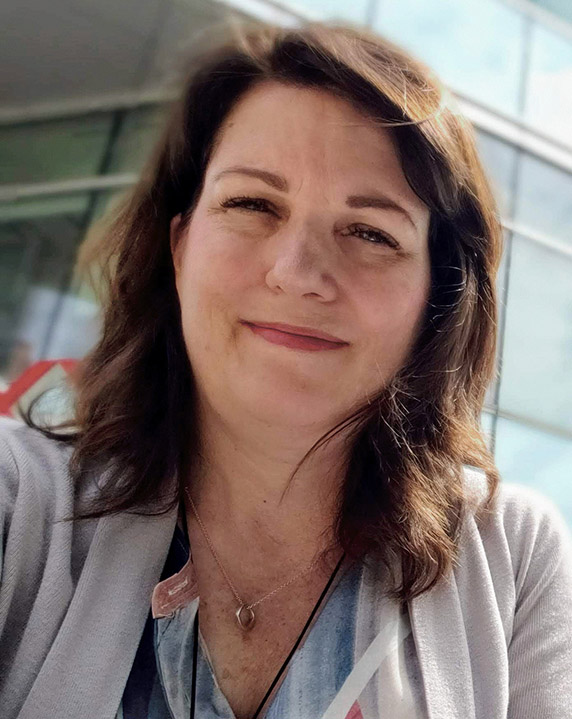 Susan Underhill
Susan UnderhillPresident of the Connor Claire Group, a consulting firm that works with both the government and non-profit sectors, Susan is a specialist in doing more with less.
Susan Underhill
For people who work in the non-profit sector, doing more with less is a massively important key to being successful. When it comes to the public sector, we Canadians are all invested in efficiency and innovative practice. Thankfully, there are people out there who specialize in helping such organizations become the best they can be. Susan Underhill is one of them.
Susan is a management consultant for both government and the non-profit sector, as President of the Connor Claire Group. She does policy research, organizational design and development, coaching, business process improvement, and much more to help improve the performance of organizations of all shapes and sizes. Her colleague and collaborator, Amanda Parriag of the ParriagGroup, says of Susan,
“We went to university together and have stayed friends through the years. In the last few years we’ve had the opportunity to work together. It’s really a joy for me. We don’t agree on everything, but she can present things where she needs to change my mind in such a way that I can hear it. I implicitly trust her, she’s extremely smart and gets things very quickly. I really love working with her.”
We asked Susan how her training in psychology (she has a Masters in Experimental Psychology from the University of Newfoundland) has helped her in her current role.
“I am a good researcher - both qualitative and quantitative. I know what questions to ask, where to find information, and how to interpret that information to provide sound, evidence-based policy advice. Psychology has also helped me to consider organizational dynamics and the impact of these dynamics on implementing changes.”
One of the highlights of a job like Susan’s is that there are a never-ending set of policy questions that require new research. Susan says she loves the variability of her job and supporting government and not-for-profits to better serve individuals who need important services.
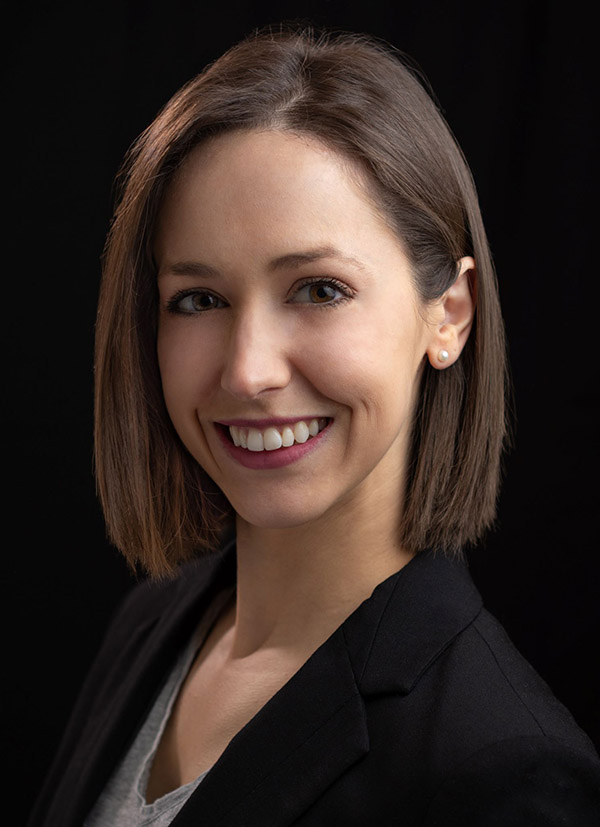 Sophie Kenny
Sophie KennyA staff scientist for VPixx Technologies, Sophie helps bring eye capture technology, among other devices, to scientists and labs around Canada and the rest of the world.
Sophie Kenny
Somewhere in the world, right now, there are researchers using a specialized device manufactured by VPixx Technologies. These researchers might be working in a behavioural laboratory, an MRI or MEG space, or even working with non-human primates. That device might be an eye tracker, a video projector, a sound system or a calibrated visual display.
Whichever device they are using, there is a strong possibility that Sophie Kenny helped to bring their work to fruition. As a staff scientist for VPixx Technologies, Sophie works directly with the academic community. Her role is not only to understand the current needs of researchers, but also to identify research trends and opportunities for growth of the company.
More precisely, Sophie provides consultation services for lab setups. She writes work orders for custom software and hardware development, designs and presents product or technology-oriented workshops, and gives seminar lectures and invited talks. She also visits conferences (Society for Neuroscience, the Vision Sciences Society, the Psychonomics Society) to interact with academic clients and partners. It is there that she sets up independent and collaborative research projects, such as conducting literature reviews, methods papers, and perceptual/cognitive experimental research.
Sophie obtained her PhD in Brain, Behaviour, and Cognitive Sciences from Queen’s in 2017, and says that her academic studies have prepared her admirably for her current career:
“During my research training, I have worked on research spanning attention, reading, memory and movement perception research. Through this broad experience, I used advanced methodologies which have included eye tracking, whole body motion capture, virtual reality headsets, fMRI recordings, and scripting for high-level research experiments software and game engines. This knowledge and skill base has been invaluable, because in most aspects of my work, I am called to comment and advise clients and colleagues on a eclectic variety of research designs and applications.”
Now working for a company doing those exact things, Sophie has found her niche.
“VPixx Technologies is an incredibly dynamic and collaborative environment. I feel that as a staff scientist, my work has a positive influence on the quality of the work that happens in our industry, and ultimately, in the laboratories of the researchers who use our devices.”
 Troy Forcier
Troy ForcierTroy has worked in Child and Youth Mental Health for years, since graduating with an M.Ed. in Education Counselling Psychology. He is the Director of Operations for the Ministry of Child and Family Development (MCFD) in Williams Lake, B.C.
Troy Forcier
You might expect someone with an M.Ed. in Education Counselling Psychology to work as a Child and Youth Mental Health clinician, or some such thing. And Troy Forcier did, for several years after graduating from UNBC. From there, he moved on to a job as a clinical supervisor, before taking on his current endeavour.
Troy is the Director of Operations for the Ministry of Child and Family Development (MCFD) in Williams Lake, British Columbia. The MCFD is, among other things, the main child protection service for the province. They also do a lot of preventative work (family support, parent psychoeducation groups, Child and Youth with Special Needs support). Troy manages contracts, HR, resources and guardianship, facilities, child and youth mental health for the region, and community relations.
After spending many years dealing one-on-one with children and families, Troy embraces the more bureaucratic nature of his new position. There are two things, above all others, that make this job pleasurable for Troy. One is working with people – something he has always done, but it is now in a different context. The other is making change – specifically, changes he can help create at his own specific bureaucratic level.
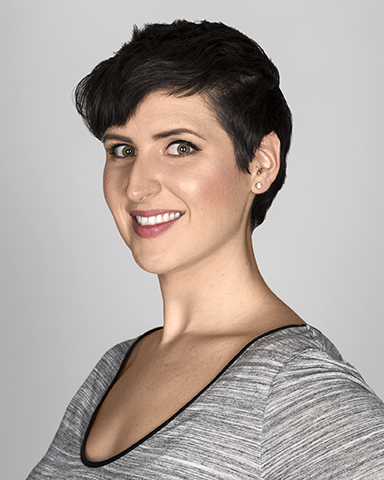 Natalie Therrien Normand
Natalie Therrien NormandNatalie is a Program Manager at the provincial team that oversees grants made by the Ontario Trillium Foundation. Her current work is informed enormously by her studies in psychology and experience as a TA.
Natalie Therrien Normand
My name is Natalie Therrien Normand, and I'm a Program Manager at the provincial team that oversees grants made by the Ontario Trillium Foundation (OTF), an agency of the government of Ontario. I have my MA in Experimental and Applied Psychology from the University of Regina. I received it in 2013, but so much of what I did at university I am still doing today.
I help people apply for grants by delivering presentations (like the courses I used to guest lecture in as a TA) and doing one-on-one coaching (like office hours), I assess grant applications when they come in (like scoring papers and exams as a TA), and monitor grants that are funded (which works a lot like monitoring all the work happening in my old labs). I also work on OTF's volunteer education initiatives to train our volunteers to meet corporate goals. This means a lot of juggling, like in my academia days.
Studying psychology has helped me in a myriad of ways. First are the obvious project management skills I learned in my graduate level studies, which apply to managing grants. Juggling multiple projects and deadlines is essential to my work, and indeed my career. But beyond that, learnings about human behaviour and the mind keep popping up, whether it's communication skills, the team-forming framework I learned in, literally, one sports psychology class that comes up over and over again. People think you have crazy ninja human behaviour skills, but it's things anyone can learn in basic psychology courses (which is what I tell them!). What may be most important are my critical thinking skills, and being adaptable in a field where feedback and constructive criticism are constant. We all know from our training that the constant cycle of producing work, receiving feedback, and working to improve that work is how you grow, or how a project/paper gets better.
I love that I get to work with people. I love that I get to apply my skills in an unexpected way. I work with people with super varied educational and professional backgrounds but I don't think anyone expects to have someone with an advanced degree in Psychology among them. The assumption is that this would mean I'd be a clinician or a counsellor. And as I mentioned above, even the basic principles of an education in psychology come up in the every day working world.
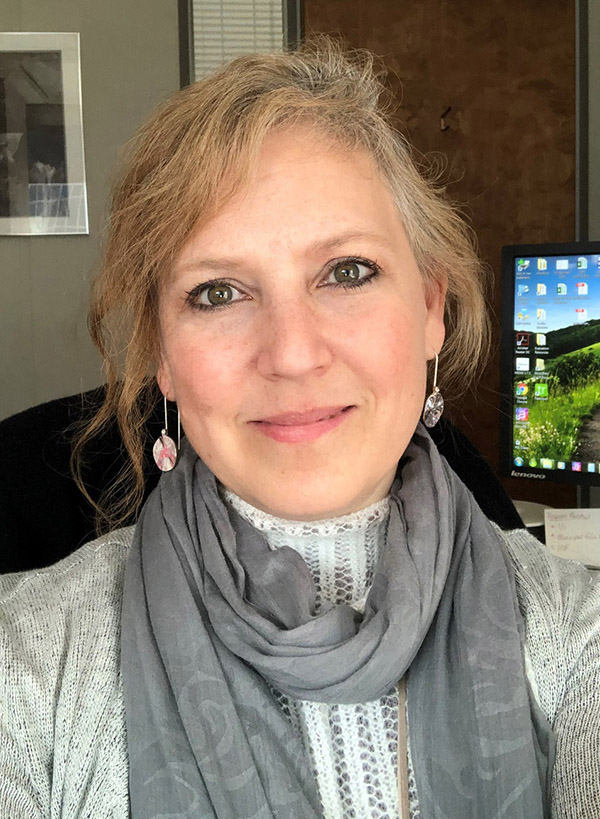 Sandra Meeres
Sandra MeeresSandra works for the provincial government in Saskatchewan. She is the Manager of Planning, Evaluation and Improvement in the aptly-titled Office of Corporate Planning Evaluation and Improvement.
Sandra Meeres
In 1994, Sandra Meeres graduated from the University of Saskatchewan with a Masters in Applied Social Psychology. Sandra is also a Credentialed Evaluator through the Canadian Evaluation Society. She achieved the designation in 2017. Today, she remains in Saskatchewan working for the provincial government. Sandra is the Manager of Planning, Evaluation and Improvement in the aptly titled office of Corporate Planning Evaluation and Improvement. She conducts needs assessments, program development and design, program review, and evaluations in human services. Her current work focuses on justice, corrections, and policing. Sandra says,
“All aspects of my formal psychology training have helped in my current role - especially the internship and practicum placements that were part of my graduate program. I have also relied on ongoing professional development to ensure I stay up to date with current practices and trends. I have been working in my field since I graduated – more than 25 years - and I have enjoyed every minute of it. I get to work with a variety of people in many different roles throughout the organization, and also with stakeholders from other ministries and external service providers.
It's very fulfilling working with key stakeholders - gaining insights by interacting with everyone from clients and participants to program managers and leaders. My work is very satisfying because I know it is helping to provide decision makers with the essential information they need. It guides them to see what aspects of programs and services are working well, and where there are gaps or areas that could be strengthened or improved.”
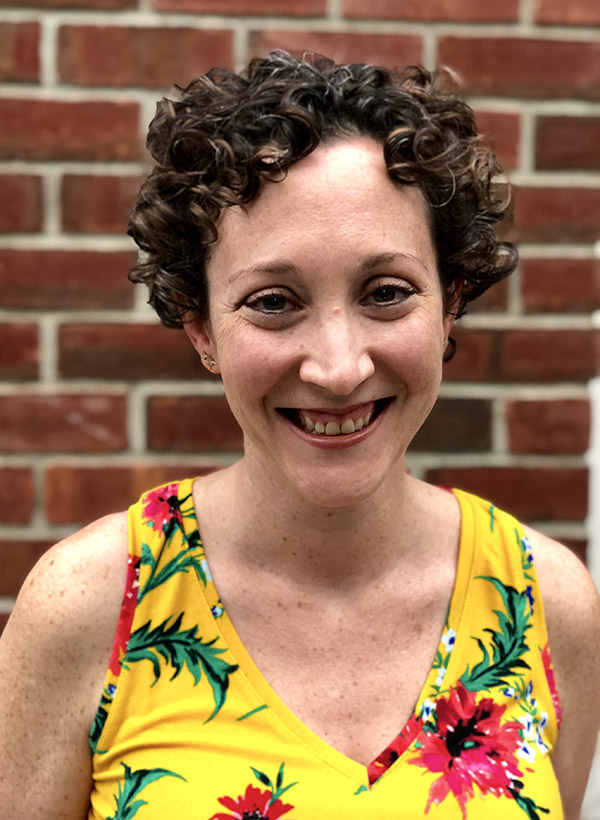 Jenn Richler
Jenn RichlerDr. Jenn Richler has always been deeply passionate about championing the work of others. Jenn has a PhD in Cognitive Psychology and is putting it to use as a senior editor at two scientific journals – Nature Climate Change and Nature Energy.
Jenn Richler
The January issue of Nature Climate Change has papers on changing bird migrations, projections of lemur habitats in the Malagasy rainforest, climate change detection in daily weather, and the risk of breadbasket failures. It’s a publication that brings together a number of disparate disciplines from every corner of the world in a common cause – tackling climate change. One of the people responsible for this publication is Jenn Richler, PhD Cognitive Psychology, Vanderbilt 2010.
Jenn works at Nature Research, where she is a Senior Editor at Nature Climate Change and also another research journal, Nature Energy. She evaluates, selects, and oversees peer review of scientific manuscripts from across the behavioral and social sciences, including psychology, sociology, behavioral economics, political science, human geography, and communications. In addition, she commissions, edits, and writes non-primary research content like Reviews, Comments, Research Highlights and Editorials. It’s a job perfectly suited to a psychologist, and Jenn says,
“A key part of my job is evaluating scientific manuscripts from across social science disciplines. Although I handle manuscripts outside of psychology, training in scientific thinking and research design applies broadly across the fields I cover. We also get very ‘hands on’ with papers that are ultimately published, and so the experience I have writing manuscripts and presenting data is very valuable. Finally, being in academic publishing means that I rely a lot on what I learned about publishing and peer-review when I published my own papers in graduate school and during my post-doc. Those experiences were critical to shaping my ideas about what makes peer-review work well, what the problems are, and how we might develop innovative solutions.”
One of the highlights for Jenn is the intellectual side of the job –justifying editorial decisions requires balancing a lot of different factors, as few decisions are easy. It’s intellectually stimulating to craft arguments about each manuscript, and then discuss them with colleagues. This is the part of Jenn’s work that takes place behind the scenes, but is of crucial importance to the final product. Jenn says that, and highlighting the work of others, give her the deepest satisfaction.
"I always liked research, but I was never deeply passionate about any one research topic - I never wanted to have to convince anyone that my research was interesting. I get much more satisfaction from getting a bird’s eye view of a lot of different fields, inviting experts to write about important topics, championing the work of others, and helping authors make their work as strong and impactful as it can be. I feel that I am truly providing a service to my authors, and take a lot of pride in that.”
 Christina Bilczuk
Christina BilczukChristina has achieved a remarkable work-life balance thanks to her background in psychology. She works from all over Canada, from home and from the office on her own schedule, as an Account Executive for McCabe Promotional Advertising.
Christina Bilczuk
One of the things a person might learn in university, if they’re lucky, is the ever-elusive work-life balance. In Louisiana, while pursuing her undergraduate degree, Christina Bilczuk managed to balance her studies with the rigour of playing Division I NCAA soccer. After completing her Masters in Social Psychology at Carleton University, Christina moved on to a job as an Account Executive with McCabe Promotional Advertising, but of course had to maintain her soccer bona fides with her beer league team the Goaldiggers.
Work-life balance is easier when you’re not stuck behind a computer all day. Working from home when you want, traveling as often as you like, in a relaxed atmosphere in an ever-challenging career. Such is the case for Christina at McCabe.
At the moment her work is taking place largely in and around Ottawa, where she is working with the Air Cadets (specifically the 51 Air Cadet Squadron, based out of the Canadian Aviation and Space Museum) on some fun apparel items. She’s doing the same with Camp Fortune, a ski hill located just across the Ontario-Quebec border in Chelsea. Ottawa kids planning to become fighter pilots, or those training to one day compete in the Olympic giant slalom, might soon do so in clothes provided by McCabe.
Christina works directly with clients who need promotional products (anything with their branding on it). Her role requires a lot of person-to-person contact. Some interactions are great, others not so good, but all her interactions are informed and assisted by her training in psychology. Christina says:
“My experience within psychology allows me to take a step back and think about things from [the client’s] point of view (but that also comes from my own struggles while in school, and being able to relate to others experiencing a difficult time). Of course, time management, being able to respond positively to constructive criticism, research skills - there are endless ways in which my education has aided in pretty much every aspect of my life.”
Christina showcases artwork, provides product suggestions and pricing, and she pushes sales through to completion & delivery. She can do all of this from home, while traveling, or in person all over Canada. It’s a role that suits her well, and her background in psychology is what made it such a good fit.
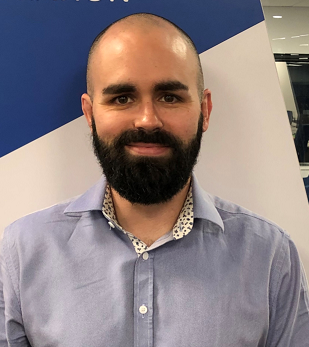 Marc-André Lafrenière
Marc-André LafrenièreDirector of People Analytics for the National Bank of Canada, Marc-André coaches a team of data scientists, combining scientific rigor and creativity with practical considerations. His team, he says, is “at the forefront of innovation”.
Marc-André Lafrenière
One could make the case that every psychologist specializes in “Advanced People Analytics”, depending on how one defines such a term. For Marc-André Larfrenière, “Advanced People Analytics” is exactly what he does. That’s his job title with the National Bank of Canada. People analytics helps business leaders unlock the power of data to improve the way organizations identify, attract, develop and retain employees
As Director of Advanced People Analytics, Marc-André develops a people analytics vision and a roadmap that are aligned to business priorities. He leads, motivates, and coaches a team of data scientists as they implement methodologies and governance processes to address business needs. Marc-André and his team combine scientific rigor and creativity with practical considerations. In his role, Marc-André is able to provide leadership, subject matter expertise and business insight on all sorts of people analytics projects, including turnover prediction, pay equity analysis, psychometric testing, natural language understanding, and employee engagement analysis.
Marc-André says his PhD in Social Psychology from UQAM has served him very well in his professional career:
“Knowledge of social and IO psychology helps me bridge the gap between business needs and data science. It allows me to ensure that analytics projects are aligned to clearly address business issues. Also, my background in social psychology aided me play a key role as an analytics translator across multiple projects. Furthermore, scientific knowledge that I acquired during my studies and maintained afterward allows me to play a role as a subject matter expert on several subjects (e.g., employee engagement, compensation programs, psychometrics assessment, etc.). Finally, both my expertise in research methods and statistics eased my transition toward data science and allowed me to champion the scientific method and ethical principles inside the organization.”
Marc-André works in a multidisciplinary team, and his particular discipline is well-suited to people analytics. He likes that his team has a direct and clear impact on the business, and helps with HR transformation through technology and data. His is more than just a data translator role, he and his team are, as he says, “at the forefront of innovation”.
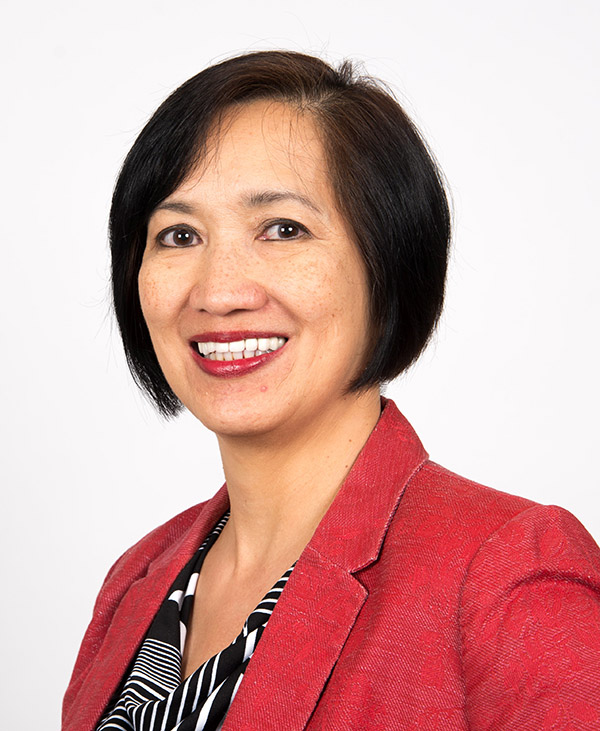 Evangeline Danseco
Evangeline DansecoDr. Evangeline Danseco loves that her job has an impact on improving mental health services and addressing system-level issues. Evangeline is the Performance Measurement Coach at the Ontario Centre of Excellence for Child and Youth Mental Health.
Evangeline Danseco
A position that gives you the opportunity to have an impact on improving mental health services and addressing system-level issues would be desirable for many PhD graduates in Applied Developmental Psychology. Evangeline Danseco earned that degree from the University of Maryland Baltimore County in 1997, and now does just that.
Her psychological training has prepared her with a knowledge of research and evaluation methods (both qualitative and quantitative) as well as of child, youth and adult development, and with skills in critical thinking and writing. These body of knowledge and skills plus a thirst for ongoing learning and a desire to bridge the gap between research and practice, have served her, and Ontario, well.
Evangeline is the Performance Measurement Coach at the Ontario Centre of Excellence for Child and Youth Mental Health. There, she leads the development and implementation of various initiatives taking place in Ontario’s child and youth mental health sector focusing on performance measurement and/or system planning. The province of Ontario recently developed new quality standards in regard to youth and family engagement, and it is Evangeline who has led the evaluation of those standards.
Evangeline consults with and advises key stakeholders such as Ministry partners, expert panels, advisory groups, and lead agencies. She also collaborates with youth and family members on provincial initiatives. Her position has an impact, addresses important issues, and is a terrific example of knowledge mobilization in action.
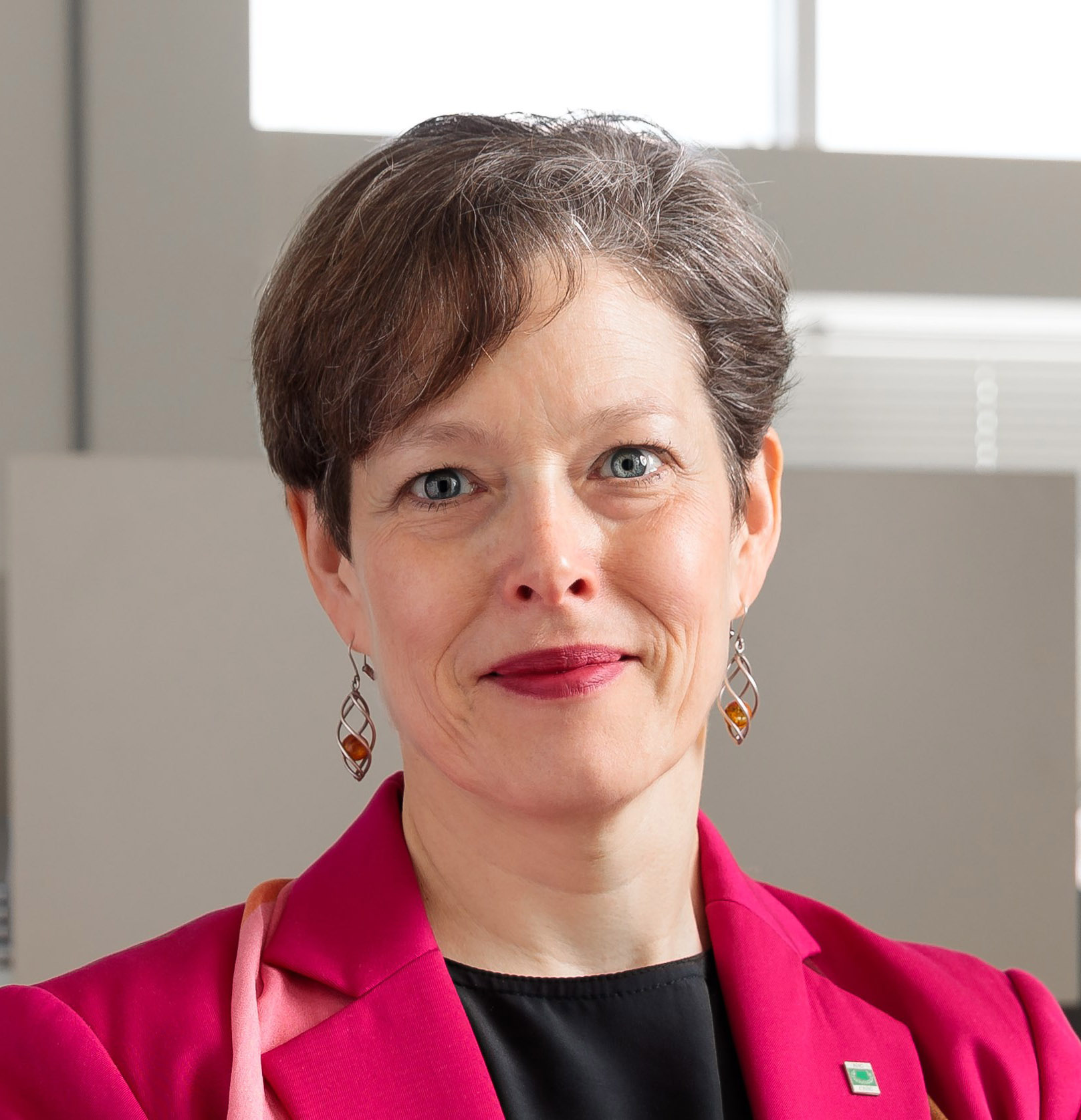 Jennifer Veitch
Jennifer VeitchFrom her very first introductory psychology class, Jennifer Veitch knew she wanted to get into environmental psychology. Many classes, years, and a PhD later, Jennifer is living her dream as a Principal Research Officer at the National Research Council of Canada.
Jennifer Veitch
Sometimes, a career path can be determined very early on, whether you know it or not. Such was the case when Jennifer Veitch became excited about environmental psychology in her very first introductory psychology course. She later volunteered in that prof’s lab where she learned practical data collection skills that she still uses today. A few years later, she was graduating from the University of Victoria with a PhD in Environmental Psychology.
To this day, the research Jennifer does is reflective of what she learned in those first intro psych classes, and from that professor. The big difference, in research terms, is the setting. She is a full-time psychological scientist in an interdisciplinary research setting, and uses her psychology skills to study how people relate to their physical surroundings.
Jennifer is a Principal Research Officer at the National Research Council of Canada, where she is responsible for the initiation (including obtaining internal and external funding), management, and conduct of research on the effects of the physical environment on occupants’ behaviour and well-being, and for disseminating the resulting knowledge through pertinent industry and research channels. That means that she publishes papers in journals, but also contributes to national and international standards and recommendations by participating in organizations like the International Commission on Illumination. For example, she leads a project that is conducting a systematic review of the literature on the effects of daytime light exposure on cognition, well-being, and physiology; she also is an active contributor to both North American and international recommendations for lighting that will be based on that literature.
Jennifer says,
“The research I do today is a direct extension of things I learned [in that lab, from that professor] - but now I can study more complex problems with my engineering, physics, and architectural colleagues, and I have routes through which to influence decision-makers to apply what we learn.”


